Phenylaminopyrimidine Amide Autophagy Inhibitors And Methods Of Use Thereof
Flynn; Daniel L. ; et al.
U.S. patent application number 16/870384 was filed with the patent office on 2020-11-12 for phenylaminopyrimidine amide autophagy inhibitors and methods of use thereof. The applicant listed for this patent is Deciphera Pharmaceuticals, LLC. Invention is credited to Yu Mi Ahn, Timothy Caldwell, Daniel L. Flynn, Lakshminarayana Vogeti.
| Application Number | 20200354352 16/870384 |
| Document ID | / |
| Family ID | 1000005032734 |
| Filed Date | 2020-11-12 |












View All Diagrams
| United States Patent Application | 20200354352 |
| Kind Code | A1 |
| Flynn; Daniel L. ; et al. | November 12, 2020 |
PHENYLAMINOPYRIMIDINE AMIDE AUTOPHAGY INHIBITORS AND METHODS OF USE THEREOF
Abstract
Described herein are compounds that are inhibitors of autophagy and their use in the treatment of disorders such as cancers.
| Inventors: | Flynn; Daniel L.; (Waltham, MA) ; Ahn; Yu Mi; (Waltham, MA) ; Caldwell; Timothy; (Waltham, MA) ; Vogeti; Lakshminarayana; (Waltham, MA) | ||||||||||
| Applicant: |
|
||||||||||
|---|---|---|---|---|---|---|---|---|---|---|---|
| Family ID: | 1000005032734 | ||||||||||
| Appl. No.: | 16/870384 | ||||||||||
| Filed: | May 8, 2020 |
Related U.S. Patent Documents
| Application Number | Filing Date | Patent Number | ||
|---|---|---|---|---|
| 62911728 | Oct 7, 2019 | |||
| 62911730 | Oct 7, 2019 | |||
| 62846251 | May 10, 2019 | |||
| 62846258 | May 10, 2019 | |||
| Current U.S. Class: | 1/1 |
| Current CPC Class: | A61K 31/519 20130101; C07D 487/04 20130101; C07D 413/14 20130101; C07D 401/14 20130101; C07D 487/08 20130101; A61K 45/06 20130101 |
| International Class: | C07D 413/14 20060101 C07D413/14; C07D 401/14 20060101 C07D401/14; C07D 487/08 20060101 C07D487/08; C07D 487/04 20060101 C07D487/04 |
Claims
1. A compound represented by: ##STR00428## or a pharmaceutically acceptable salt, enantiomer, stereoisomer, or tautomer thereof, wherein: W is CH or N; X is CH or N; Y is C(R.sup.3) or N; R.sup.1 is selected from the group consisting of halogen, cyano, C.sub.1-C.sub.5alkyl, and C.sub.3-C.sub.5cycloalkyl, wherein each C.sub.1-C.sub.5alkyl and C.sub.3-C.sub.5cycloalkyl may be optionally substituted by one, two or three independent occurrences of fluorine; R.sup.2 is selected from the group consisting of H, halogen, cyano, C.sub.1-C.sub.5alkyl, C.sub.3-C.sub.6cycloalkyl, C.sub.2-C.sub.5alkenyl, C.sub.2-C.sub.5alkynyl, C.sub.1-C.sub.5alkoxy, and C.sub.1-C.sub.5alkoxy-C.sub.2-C.sub.5alkyl, wherein each C.sub.1-C.sub.5alkyl, C.sub.3-C.sub.6cycloalkyl, C.sub.2-C.sub.5alkenyl, C.sub.2-C.sub.5alkynyl, and C.sub.1-C.sub.5alkoxy may be optionally substituted by one, two, or three independent occurrences of fluorine or cyano; each occurrence of R.sup.3 and R.sup.33 is independently selected from the group consisting of H, halogen, C.sub.1-C.sub.6alkyl, and C.sub.1-C.sub.6alkoxy, wherein each C.sub.1-C.sub.6alkyl and C.sub.1-C.sub.6alkoxy may be optionally substituted by one or more independent occurrences of fluorine; R.sup.4 is selected from the group consisting of B, D, NR.sup.6R.sup.9, NR.sup.6--(C(R.sup.10).sub.2).sub.p--NR.sup.9R.sup.9, C(O)--NR.sup.6R.sup.9; C(O)--B; C(O)-D, and CN; B is selected from an N-linked heterocyclyl having at least one nitrogen and optionally having an additional ring nitrogen or oxygen and heteroaryl, wherein B may be optionally substituted on one or more available carbons by R.sup.7 and may be optionally substituted on an available nitrogen by R.sup.9; D is selected from a C-linked heterocyclyl having at least one nitrogen and optionally having an additional ring nitrogen or oxygen and heteroaryl, wherein D may be optionally substituted on one or more available carbons by R.sup.7 and may be optionally substituted on an available nitrogen by R.sup.9; each occurrence of R.sup.5 is independently selected from the group consisting of H, C.sub.3-C.sub.6cycloalkyl, and heterocyclyl, wherein each C.sub.1-C.sub.6alkyl and C.sub.3-C.sub.6cycloalkyl may be optionally substituted by one or more independent occurrences of fluorine; each occurrence of R.sup.7 is independently selected from the group consisting of H, C.sub.3-C.sub.6cycloalkyl, cyano, and (C(R.sup.10).sub.2).sub.h--NR.sup.9R.sup.9, wherein each C.sub.1-C.sub.6alkyl and C.sub.3-C.sub.6cycloalkyl may be optionally substituted by one or more independent occurrences of fluorine, or two R.sup.7 are joined together with the atom to which they are attached to form oxo; each occurrence of R.sup.6 and R.sup.9 is independently selected from the group consisting of H, C.sub.1-C.sub.6alkyl, C.sub.3-C.sub.6cycloalkyl, C.sub.1-C.sub.5alkoxy-C.sub.2-C.sub.5alkyl, C(.dbd.O)R.sup.5, SO.sub.2R.sup.5, and D, wherein each C.sub.1-C.sub.6alkyl and C.sub.3-C.sub.6cycloalkyl may be optionally substituted by one or more independent occurrences of fluorine; each occurrence of R.sup.10 is independently selected from the group consisting of H, C.sub.1-C.sub.3alkyl, and C.sub.3-C.sub.5cycloalkyl, wherein each C.sub.1-C.sub.3alkyl and C.sub.3-C.sub.5cycloalkyl may be optionally substituted by one or more independent occurrences of fluorine, or two R.sup.10 are joined together with the carbon to which they are attached to form a C.sub.3-C.sub.5cycloalkyl; Z is selected from the group consisting of a 4 membered lactam ring bound through the nitrogen atom or a 6-10 membered lactam ring bound through the nitrogen atom, wherein a lactam ring atom may optionally be oxygen or NR.sup.6 when the lactam ring is a 6-10 membered ring and an available carbon atom on 4 membered lactam ring or a 6-10 membered lactam is optionally substituted by R.sup.36; each occurrence of R.sup.36 is independently selected from C.sub.1-C.sub.6alkyl and C.sub.3-C.sub.6cycloalkyl, wherein each C.sub.1-C.sub.6alkyl and C.sub.3-C.sub.6cycloalkyl may be optionally substituted by one or more independent occurrences of fluorine, or two R.sup.36 are joined together with the carbon to which they are attached to form a C.sub.3-C.sub.6cycloalkyl; h is 1, 2, or 3; m is 0, 1, 2, or 3; n is 2, 3, or 4; and p is 2 or 3; provided that both X and Y are not N.
2. The compound of claim 1, wherein W is N.
3. The compound of claim 1 or claim 2, wherein X is CH and Y is N.
4. The compound of claim 1 or claim 2, wherein X is CH and Y is C(R.sup.3).
5. The compound of any one of claims 1-4, wherein Z is selected from: ##STR00429## wherein V is selected from the group consisting of oxygen, C(R.sup.34).sub.2, and NR.sup.6; each occurrence of R.sup.34 is independently selected from H and R.sup.36, wherein each occurrence of R.sup.36 is independently selected from C.sub.1-C.sub.6alkyl and C.sub.3-C.sub.6cycloalkyl, or two R.sup.36 are joined together with the carbon to which they are attached to form a C.sub.3-C.sub.6cycloalkyl; q is 0, 1, 2, or 3; and r is 2 or 4; provided that, if q is 0, then r is not 2.
6. The compound of any one of claims 1-5, wherein Z is selected from: ##STR00430## wherein V is selected from the group consisting of oxygen, C(R.sup.34).sub.2, and NR.sup.6; each occurrence of R.sup.34 is independently selected from H and R.sup.36, wherein each occurrence of R.sup.36 is independently selected from C.sub.1-C.sub.6alkyl and C.sub.3-C.sub.6cycloalkyl, or two R.sup.36 are joined together with the carbon to which they are attached to form a C.sub.3-C.sub.6cycloalkyl; q is 0, 1, 2, or 3; and r is 2 or 3; provided that, if q is 0, then r is not 2.
7. The compound of any one of claims 1-6, wherein Z is selected from the group consisting of: ##STR00431##
8. The compound of any one of claims 1-7, wherein Z is selected from: ##STR00432## wherein V is selected from the group consisting of oxygen, C(R.sup.34).sub.2, and NR.sup.6; q is 0, 1, 2, or 3; and r is 2 or 3; provided that, if q is 0, then r is not 2.
9. The compound of any one of claims 1-8, wherein Z is selected from the group consisting of: ##STR00433##
10. The compound of any one of claims 1-9, wherein R.sup.4 is B.
11. The compound of any one of claims 1-9, wherein R.sup.4 is selected from the group consisting of: ##STR00434## wherein u is 1 or 2.
12. The compound of any one of claims 1-11, wherein R.sup.4 is selected from the group consisting of: ##STR00435##
13. The compound of any one of claims 1-12, wherein R.sup.4 is selected from the group consisting of: ##STR00436##
14. The compound of any one of claims 1-13, wherein R.sup.4 is selected from the group consisting of: ##STR00437##
15. The compound of any one of claims 1-9, wherein R.sup.4 is D.
16. The compound of any one of claims 1-9, wherein R.sup.4 is selected from the group consisting of: ##STR00438##
17. The compound of any one of claims 1-16, wherein m is 0.
18. The compound of any one of claims 1-16, wherein m is 1.
19. The compound of any one of claims 1-16, wherein m is 2.
20. The compound of any one of claims 1-16, wherein m is 3.
21. The compound of any one of claims 1-20, wherein R.sup.1 is selected from the group consisting of halogen, C.sub.1-C.sub.5alkyl, and C.sub.3-C.sub.5cycloalkyl, wherein C.sub.1-C.sub.5alkyl may be optionally substituted with one, two, or three occurrences of fluorine.
22. The compound of any one of claims 1-21, wherein R.sup.1 is CF.sub.3.
23. The compound of any one of claims 1-21, wherein R.sup.1 is CF.sub.2H.
24. The compound of any one of claims 1-21, wherein R.sup.1 is halogen.
25. The compound of claim 24, wherein R.sup.1 is bromo.
26. The compound of any one of claims 1-21, wherein R.sup.1 is cyclopropyl.
27. The compound of any one of claims 1-26, wherein R.sup.2 is selected from the group consisting of H, C.sub.3-C.sub.5cycloalkyl, C.sub.1-C.sub.5alkyl, halogen, CN, C.sub.2-C.sub.5alkenyl, and C.sub.2-C.sub.5alknyl, wherein C.sub.1-C.sub.5alkyl may be optionally substituted with one, two, or three independent occurrences of fluorine.
28. The compound of any one of claims 1-26, wherein R.sup.2 is selected from the group consisting of C.sub.1-2alkyl and C.sub.3-4cycloalkyl.
29. The compound of any one of claims 1-26, wherein R.sup.2 is selected from the group consisting of chloro and bromo.
30. The compound any one of claims 1-26, wherein R.sup.2 is selected from the group consisting of C.sub.1-C.sub.5alkyl, H, and C.sub.3-C.sub.4cycloalkyl.
31. The compound of any one of claims 1-30, wherein n is 3.
32. A compound represented by: ##STR00439## or a pharmaceutically acceptable salt thereof, wherein: n is 2, 3, or 4; R.sup.1 is selected from the group consisting of halogen, cyano, C.sub.1-C.sub.5alkyl, and C.sub.3-C.sub.5cycloalkyl, wherein each C.sub.1-C.sub.5alkyl and C.sub.3-C.sub.5cycloalkyl may be optionally substituted by one, two or three independent occurrences of fluorine; R.sup.2 is selected from the group consisting of halogen, C.sub.1-C.sub.2alkyl and C.sub.3-C.sub.4cycloalkyl; R.sup.4 is selected from the group consisting of: ##STR00440## each occurrence of R.sup.6 and R.sup.9 is independently selected from the group consisting of H, C.sub.1-C.sub.6alkyl, C.sub.3-C.sub.6cycloalkyl, C(.dbd.O)R.sup.5, SO.sub.2R.sup.5, and D, wherein each C.sub.1-C.sub.6alkyl and C.sub.3-C.sub.6cycloalkyl may be optionally substituted by one or more independent occurrences of fluorine; each occurrence of R.sup.5 is independently selected from the group consisting of H, C.sub.1-C.sub.6alkyl, C.sub.3-C.sub.6cycloalkyl, and heterocyclyl, wherein each C.sub.1-C.sub.6alkyl and C.sub.3-C.sub.6cycloalkyl may be optionally substituted by one or more independent occurrences of fluorine; each occurrence of IC is independently selected from the group consisting of H, C.sub.1-C.sub.6 alkyl, and C.sub.3-C.sub.6cycloalkyl, wherein each C.sub.1-C.sub.6alkyl and C.sub.3-C.sub.6cycloalkyl may be optionally substituted by one or more independent occurrences of fluorine, or two IC are joined together with the atom to which they are attached to form oxo; D is selected from a C-linked heterocyclyl having at least one nitrogen and optionally having an additional ring nitrogen or oxygen and heteroaryl, wherein D may be optionally substituted on one or more available carbons by R.sup.7 and may be optionally substituted on an available nitrogen by R.sup.9; Z is selected from the group consisting of: ##STR00441## and each occurrence of R.sup.34 is independently selected from H and R.sup.36, wherein each occurrence of R.sup.36 is independently selected from C.sub.1-C.sub.6alkyl and C.sub.3-C.sub.6cycloalkyl, wherein each C.sub.1-C.sub.5alkyl and C.sub.3-C.sub.6cycloalkyl may be optionally substituted by one or more independent occurrences of fluorine, or two R.sup.36 are joined together with the carbon to which they are attached to form a C.sub.3-C.sub.6cycloalkyl.
33. The compound of claim 32, wherein R.sup.1 is selected from the group consisting of halogen, C.sub.1-C.sub.5alkyl, and C.sub.3-C.sub.5cycloalkyl, wherein C.sub.1-C.sub.5alkyl may be optionally substituted with one, two, or three occurrences of fluorine, and C.sub.3-C.sub.5cycloalkyl.
34. The compound of claim 32 or claim 33, wherein R.sup.1 is CF.sub.3.
35. The compound of claim 32 or claim 33, wherein R.sup.1 is CF.sub.2H.
36. The compound of claim 32 or claim 33, wherein R.sup.1 is halogen.
37. The compound of claim 32, claim 33, or claim 36, wherein R.sup.1 is bromo.
38. The compound of claim 32 or claim 33, wherein R.sup.1 is cyclopropyl.
39. The compound of any one of claims 32-38, wherein R.sup.2 is selected from the group consisting of H, C.sub.3-C.sub.4cycloalkyl, C.sub.1-C.sub.5alkyl, and halogen.
40. The compound of any one of claims 32-39, wherein R.sup.2 is selected from the group consisting of C.sub.1-C.sub.2alkyl, C.sub.3-C.sub.4cycloalkyl, bromo, and chloro.
41. The compound of any one of claims 32-40, wherein R.sup.4 is selected from the group consisting of: ##STR00442##
42. The compound of any one of claims 32-41, wherein R.sup.4 is selected from the group consisting of: ##STR00443##
43. The compound of any one of claims 32-42, wherein each occurrence of R.sup.6 and R.sup.9 is independently selected from the group consisting of H, C.sub.1-C.sub.6alkyl, and C.sub.3-C.sub.6cycloalkyl, wherein each of C.sub.1-C.sub.6alkyl and C.sub.3-C.sub.6cycloalkyl is optionally substituted by one or more independent occurrences of fluorine.
44. The compound of any one of claims 32-45, wherein each occurrence of R.sup.7 is H.
45. The compound of any one of claims 32-46, wherein each occurrence of R.sup.34 is independently selected from the group consisting of H and C.sub.1-C.sub.5alkyl, wherein C.sub.1-C.sub.5alkyl may be optionally substituted by one, two, or three independent occurrences of fluorine.
46. The compound of any one of claims 32-44, wherein two R.sup.34 are joined together with the carbon to which they are attached to form C.sub.3-C.sub.6cycloalkyl.
47. The compound of any one of claims 32-46, wherein Z is selected from the group consisting of: ##STR00444##
48. The compound of any one of claims 32-47, wherein Z is selected from the group consisting of: ##STR00445##
49. The compound of any one of claims 32-48, wherein n is 3.
50. A compound represented by: ##STR00446## wherein R.sup.1 is selected from the group consisting of CF.sub.3, CF.sub.2H, bromo, chloro, and cyclopropyl; R.sup.2 is selected from the group consisting of C.sub.1-C.sub.2alkyl, C.sub.3-C.sub.4cycloalkyl, and halogen; and R.sup.9 is selected from the group consisting of C.sub.1-C.sub.3alkyl, H, and C.sub.3-C.sub.5cycloalkyl.
51. The compound of claim 50, wherein R.sup.1 is CF.sub.3; R.sup.2 is selected from C.sub.1-C.sub.2alkyl, C.sub.3-C.sub.4cycloalkyl, bromo, and chloro; and R.sup.9 is selected from C.sub.1-C.sub.3alkyl and H.
52. The compound of claim 51, wherein R.sup.1 is bromo; R.sup.2 is selected from C.sub.1-C.sub.2alkyl, C.sub.3-C.sub.4cycloalkyl, bromo, and chloro; and R.sup.9 is selected from C.sub.1-C.sub.3alkyl and H.
53. A compound represented by: ##STR00447## wherein R.sup.1 is selected from the group consisting of bromo, chloro, CF.sub.3, CF.sub.2H, and cyclopropyl; R.sup.2 is selected from the group consisting of C.sub.1-C.sub.2alkyl, C.sub.3-C.sub.4cycloalkyl, and halogen; and R.sup.9 is selected from the group consisting of C.sub.1-C.sub.3alkyl, H, or C.sub.3-C.sub.5cycloalkyl.
54. The compound of claim 53, wherein R.sup.1 is CF.sub.3; R.sup.2 is selected from the group consisting of C.sub.1-C.sub.2alkyl, C.sub.3-C.sub.4cycloalkyl, bromo, and chloro; and R.sup.9 is selected from C.sub.1-C.sub.3alkyl and H.
55. The compound of claim 53, wherein R.sup.1 is bromo; R.sup.2 is selected from the group consisting of C.sub.1-C.sub.2alkyl, C.sub.3-C.sub.4cycloalkyl, bromo, and chloro; and R.sup.9 is selected from C.sub.1-C.sub.3alkyl and H.
56. The compound of claim 53, wherein R.sup.1 is CF.sub.2H; R.sup.2 is selected from the group consisting of C.sub.1-C.sub.2alkyl, C.sub.3-C.sub.4cycloalkyl, bromo, and chloro; and R.sup.9 is selected from C.sub.1-C.sub.3alkyl and H.
57. A compound represented by: ##STR00448## wherein R.sup.1 is selected from the group consisting of bromo, chloro, CF.sub.3, CF.sub.2H, and cyclopropyl; R.sup.2 is selected from the group consisting of C.sub.1-C.sub.2alkyl, C.sub.3-C.sub.4cycloalkyl, and halogen; and R.sup.9 is C.sub.1-C.sub.3alkyl, H, or C.sub.3-C.sub.5cycloalkyl.
58. The compound of claim 57, wherein R.sup.1 is CF.sub.3; R.sup.2 is selected from the group consisting of C.sub.1-C.sub.2alkyl, C.sub.3-C.sub.4cycloalkyl, bromo, and chloro; and R.sup.9 is selected from C.sub.1-C.sub.3alkyl and H.
59. The compound of claim 57, wherein R.sup.1 is bromo; R.sup.2 is selected from the group consisting of C.sub.1-C.sub.2alkyl, C.sub.3-C.sub.4cycloalkyl, bromo, and chloro; and R.sup.9 is selected from C.sub.1-C.sub.3alkyl and H.
60. The compound of claim 57, wherein R.sup.1 is CF.sub.2H; R.sup.2 is selected from the group consisting of C.sub.1-C.sub.2alkyl, C.sub.3-C.sub.4cycloalkyl, bromo, and chloro; and R.sup.9 is selected from C.sub.1-C.sub.3alkyl and H.
61. A compound represented by: ##STR00449## wherein R.sup.1 is selected from the group consisting of bromo, chloro, CF.sub.3, CF.sub.2H, and cyclopropyl; R.sup.2 is selected from the group consisting of C.sub.1-C.sub.2alkyl, C.sub.3-C.sub.4cycloalkyl, and halogen; and R.sup.9 is selected from the group consisting of C.sub.1-C.sub.3alkyl, H, and C.sub.3-C.sub.5cycloalkyl.
62. The compound of claim 61, wherein R.sup.1 is CF.sub.3; R.sup.2 is selected from the group consisting of C.sub.1-C.sub.2alkyl, C.sub.3-C.sub.4cycloalkyl, bromo, and chloro; and R.sup.9 is selected from C.sub.1-C.sub.3alkyl and H.
63. The compound of claim 61, wherein R.sup.1 is bromo; R.sup.2 is selected from the group consisting of C.sub.1-C.sub.2alkyl, C.sub.3-C.sub.4cycloalkyl, bromo, and chloro; and R.sup.9 is selected from C.sub.1-C.sub.3alkyl and H.
64. The compound of claim 61, wherein R.sup.1 is CF.sub.2H; R.sup.2 is selected from the group consisting of C.sub.1-C.sub.2alkyl, C.sub.3-C.sub.4cycloalkyl, bromo, and chloro; and R.sup.9 is selected from C.sub.1-C.sub.3alkyl and H.
65. A compound represented by: ##STR00450## wherein R.sup.1 is selected from the group consisting of bromo, chloro, CF.sub.3, CF.sub.2H, and cyclopropyl; R.sup.2 is selected from the group consisting of C.sub.1-C.sub.2alkyl, C.sub.3-C.sub.4cycloalkyl, and halogen; and R.sup.9 is C.sub.1-C.sub.3alkyl, H, or C.sub.3-C.sub.5cycloalkyl.
66. The compound of claim 65, wherein R.sup.1 is CF.sub.3; R.sup.2 is selected from the group consisting of C.sub.1-C.sub.2alkyl, C.sub.3-C.sub.4cycloalkyl, bromo, and chloro; and R.sup.9 is selected from C.sub.1-C.sub.3alkyl and H.
67. The compound of claim 65, wherein R.sup.1 is bromo; R.sup.2 is selected from the group consisting of C.sub.1-C.sub.2alkyl, C.sub.3-C.sub.4cycloalkyl, bromo, and chloro; and R.sup.9 is selected from C.sub.1-C.sub.3alkyl and H.
68. The compound of claim 65, wherein R.sup.1 is CF.sub.2H; R.sup.2 is selected from the group consisting of C.sub.1-C.sub.2alkyl, C.sub.3-C.sub.4cycloalkyl, bromo, and chloro; and R.sup.9 is selected from C.sub.1-C.sub.3alkyl and H.
69. A compound represented by: ##STR00451## wherein R.sup.1 is selected from the group consisting of bromo, chloro, CF.sub.3, CF.sub.2H, and cyclopropyl; and R.sup.2 is selected from the group consisting of C.sub.1-C.sub.2alkyl, C.sub.3-C.sub.4cycloalkyl, and halogen.
70. The compound of claim 69, wherein R.sup.1 is CF.sub.3 and R.sup.2 is selected from the group consisting of C.sub.1-C.sub.2alkyl, C.sub.3-C.sub.4cycloalkyl, bromo, and chloro.
71. The compound of claim 69, wherein R.sup.1 is bromo and R.sup.2 is selected from the group consisting of C.sub.1-C.sub.2alkyl, C.sub.3-C.sub.4cycloalkyl, bromo, and chloro.
72. The compound of claim 69, wherein R.sup.1 is CF.sub.2H; R.sup.2 is selected from the group consisting of C.sub.1-C.sub.2alkyl, C.sub.3-C.sub.4cycloalkyl, bromo, and chloro; and R.sup.9 is selected from C.sub.1-C.sub.3alkyl and H.
73. A compound represented by: ##STR00452## wherein R.sup.1 is selected from the group consisting of bromo, chloro, CF.sub.3, CF.sub.2H, and cyclopropyl; and R.sup.2 is selected from the group consisting of C.sub.1-C.sub.2alkyl, C.sub.3-C.sub.4cycloalkyl, and halogen.
74. The compound of claim 72, wherein R.sup.1 is CF.sub.3 and R.sup.2 is selected from the group consisting of C.sub.1-C.sub.2alkyl, C.sub.3-C.sub.4cycloalkyl, bromo, and chloro.
75. The compound of claim 72, wherein R.sup.1 is bromo and R.sup.2 is selected from the group consisting of C.sub.1-C.sub.2alkyl, C.sub.3-C.sub.4cycloalkyl, bromo, and chloro.
76. The compound of claim 72, wherein R.sup.1 is CF.sub.2H; R.sup.2 is selected from the group consisting of C.sub.1-C.sub.2alkyl, C.sub.3-C.sub.4cycloalkyl, bromo, and chloro.
77. A compound selected from the group consisting of: 1-(3-((5-bromo-2-((2-cyclopropyl-4-(4-methylpiperazin-1-yl)phenyl)amino)p- yrimidin-4-yl)amino)propyl)piperidin-2-one, 1-(3-((2-((4-(4-ethylpiperazin-1-yl)-2-methylphenyl)amino)-5-(trifluorome- thyl)pyrimidin-4-yl)amino)propyl)piperidin-2-one, 1-(3-((5-chloro-2-((2-cyclopropyl-4-(4-methylpiperazin-1-yl)phenyl)amino)- pyrimidin-4-yl)amino)propyl)piperidin-2-one, 1-(3-((2-((2-cyclopropyl-4-(4-methyl-1,4-diazepan-1-yl)phenyl)amino)-5-(t- rifluoromethyl)pyrimidin-4-yl)amino)propyl)piperidin-2-one, 1-(3-((5-chloro-2-((2-methyl-4-(1-methylpiperidin-4-yl)phenyl)amino)pyrim- idin-4-yl)amino)propyl)piperidin-2-one, (R)-1-(3-ethyl-4-((4-((3-(2-oxopiperidin-1-yl)propyl)amino)-5-(trifluorom- ethyl)pyrimidin-2-yl)amino)phenyl)pyrrolidine-3-carbonitrile, 1-(3-((2-((4-(4-cyclopropylpiperazin-1-yl)-2-methylphenyl)amino)-5-(trifl- uoromethyl)pyrimidin-4-yl)amino)propyl)piperidin-2-one, 1-(3-((5-bromo-2-((2-isopropyl-4-(4-methylpiperazin-1-yl)phenyl)amino)pyr- imidin-4-yl)amino)propyl)piperidin-2-one, 1-(3-((2-((2-ethyl-4-(4-ethylpiperazin-1-yl)phenyl)amino)-5-(trifluoromet- hyl)pyrimidin-4-yl)amino)propyl)piperidin-2-one, 1-(3-((2-((2-cyclopropyl-4-(4-methylpiperazin-1-yl)phenyl)amino)-5-(trifl- uoromethyl)pyrimidin-4-yl)amino)propyl)piperidin-2-one, 4-(3-cyclopropyl-4-((4-((3-(2-oxopiperidin-1-yl)propyl)amino)-5-(trifluor- omethyl)pyrimidin-2-yl)amino)phenyl)-1-methylpiperazin-2-one, 1-(3-((5-bromo-2-((4-(4-ethylpiperazin-1-yl)-2-isopropylphenyl)amino)pyri- midin-4-yl)amino)propyl)piperidin-2-one, 1-(3-((2-((2-ethyl-4-(4-methylpiperazin-1-yl)phenyl)amino)-5-(trifluorome- thyl)pyrimidin-4-yl)amino)propyl)piperidin-2-one, 1-(3-((2-((2-methyl-4-(1-methylpiperidin-4-yl)phenyl)amino)-5-(trifluorom- ethyl)pyrimidin-4-yl)amino)propyl)piperidin-2-one, 1-(3-((5-chloro-2-((4-(4-ethylpiperazin-1-yl)-2-isopropylphenyl)amino)pyr- imidin-4-yl)amino)propyl)piperidin-2-one, 1-(3-((2-((2-cyclopropyl-4-(piperazin-1-yl)phenyl)amino)-5-(trifluorometh- yl)pyrimidin-4-yl)amino)propyl)piperidin-2-one, 1-(3-((2-((2-cyclopropyl-5-fluoro-4-(4-methylpiperazin-1-yl)phenyl)amino)- -5-(trifluoromethyl)pyrimidin-4-yl)amino)propyl)piperidin-2-one, 1-(3-((2-((2-methyl-4-(piperazin-1-yl)phenyl)amino)-5-(trifluoromethyl)py- rimidin-4-yl)amino)propyl)piperidin-2-one, 1-(3-((2-((2-methyl-4-(4-methylpiperazin-1-yl)phenyl)amino)-5-(trifluorom- ethyl)pyrimidin-4-yl)amino)propyl)piperidin-2-one, 1-(3-((2-((4-(4-(2-fluoroethyl)piperazin-1-yl)-2-methylphenyl)amino)-5-(t- rifluoromethyl)pyrimidin-4-yl)amino)propyl)piperidin-2-one, 1-(3-((5-chloro-2-((2-methyl-4-(piperidin-4-yl)phenyl)amino)pyrimidin-4-y- l)amino)propyl)piperidin-2-one, 1-(3-((2-((4-(4-acetylpiperazin-1-yl)-2-cyclopropylphenyl)amino)-5-(trifl- uoromethyl)pyrimidin-4-yl)amino)propyl)piperidin-2-one, 1-(3-((5-chloro-2-((2-ethyl-4-(4-methylpiperazin-1-yl)phenyl)amino)pyrimi- din-4-yl)amino)propyl)piperidin-2-one, (S)-1-(3-ethyl-4-((4-((3-(2-oxopiperidin-1-yl)propyl)amino)-5-(trifluorom- ethyl)pyrimidin-2-yl)amino)phenyl)pyrrolidine-3-carbonitrile, 1-(3-((5-bromo-2-((2-ethyl-4-(4-methylpiperazin-1-yl)phenyl)amino)pyrimid- in-4-yl)amino)propyl)piperidin-2-one, 1-(3-((2-((4-(4-isopropylpiperazin-1-yl)-2-methylphenyl)amino)-5-(trifluo- romethyl)pyrimidin-4-yl)amino)propyl)piperidin-2-one, 1-(3-((2-((2-isopropyl-4-(4-methylpiperazin-1-yl)phenyl)amino)-5-(trifluo- romethyl)pyrimidin-4-yl)amino)propyl)piperidin-2-one, 1-(3-((2-((4-(4-cyclobutylpiperazin-1-yl)-2-methylphenyl)amino)-5-(triflu- oromethyl)pyrimidin-4-yl)amino)propyl)piperidin-2-one, 1-(3-((2-((2-ethyl-4-((1R,5S)-8-methyl-3,8-diazabicyclo[3.2.1]octan-3-yl)- phenyl)amino)-5-(trifluoromethyl)pyrimidin-4-yl)amino)propyl)piperidin-2-o- ne, 1-(3-((2-((2-cyclopropyl-4-(4-ethylpiperazin-1-yl)phenyl)amino)-5-(tri- fluoromethyl)pyrimidin-4-yl)amino)propyl)piperidin-2-one, 1-(3-((2-((2-methyl-4-(piperidin-4-yl)phenyl)amino)-5-(trifluoromethyl)py- rimidin-4-yl)amino)propyl)piperidin-2-one, 1-(3-((2-((4-(1,4-diazepan-1-yl)phenyl)amino)-5-(trifluoromethyl)pyrimidi- n-4-yl)amino)propyl)piperidin-2-one, 1-(3-((2-((2-ethyl-4-(4-methyl-1,4-diazepan-1-yl)phenyl)amino)-5-(trifluo- romethyl)pyrimidin-4-yl)amino)propyl)piperidin-2-one, 1-(3-((2-((4-(4-ethylpiperazin-1-yl)-2-isopropylphenyl)amino)-5-(trifluor- omethyl)pyrimidin-4-yl)amino)propyl)piperidin-2-one, 1-(3-((2-((4-(4-ethyl-1,4-diazepan-1-yl)phenyl)amino)-5-(trifluoromethyl)- pyrimidin-4-yl)amino)propyl)piperidin-2-one, 1-(3-((2-((4-methyl-6-morpholinopyridin-3-yl)amino)-5-(trifluoromethyl)py- rimidin-4-yl)amino)propyl)piperidin-2-one, 3-(3-((2-((2-ethyl-4-(4-methylpiperazin-1-yl)phenyl)amino)-5-(trifluorome- thyl)pyrimidin-4-yl)amino)propyl)-1,3-oxazinan-2-one, 3-(3-((2-((2-cyclopropyl-4-(4-methylpiperazin-1-yl)phenyl)amino)-5-(trifl- uoromethyl)pyrimidin-4-yl)amino)propyl)-1,3-oxazinan-2-one, 3-(3-((5-chloro-2-((2-ethyl-4-(4-methylpiperazin-1-yl)phenyl)amino)pyrimi- din-4-yl)amino)propyl)-1,3-oxazinan-2-one, 3-(3-((5-bromo-2-((2-ethyl-4-(4-methylpiperazin-1-yl)phenyl)amino)pyrimid- in-4-yl)amino)propyl)-1,3-oxazinan-2-one, 3-(3-((5-cyclopropyl-2-((2-ethyl-4-(4-methylpiperazin-1-yl)phenyl)amino)p- yrimidin-4-yl)amino)propyl)-1,3-oxazinan-2-one, 3-(3-((2-((2-ethyl-4-(piperazin-1-yl)phenyl)amino)-5-(trifluoromethyl)pyr- imidin-4-yl)amino)propyl)-1,3-oxazinan-2-one, 3-(3-((2-((2-cyclopropyl-4-(piperazin-1-yl)phenyl)amino)-5-(trifluorometh- yl)pyrimidin-4-yl)amino)propyl)-1,3-oxazinan-2-one, 3-(3-((5-bromo-2-((2-cyclopropyl-4-(4-methylpiperazin-1-yl)phenyl)amino)p- yrimidin-4-yl)amino)propyl)-1,3-oxazinan-2-one, 3-(3-((2-((2-methyl-4-(piperazin-1-yl)phenyl)amino)-5-(trifluoromethyl)py- rimidin-4-yl)amino)propyl)-1,3-oxazinan-2-one, 3-(3-((2-((2-ethyl-4-((1R,5 S)-8-methyl-3,8-diazabicyclo[3.2.1]octan-3-yl)phenyl)amino)-5-(trifluorom- ethyl)pyrimidin-4-yl)amino)propyl)-1,3-oxazinan-2-one, rac-(R)-3-(3-((2-((2-ethyl-4-(hexahydropyrrolo[1,2-a]pyrazin-2(1H)-yl)phe- nyl)amino)-5-(trifluoromethyl)pyrimidin-4-yl)amino)propyl)-1,3-oxazinan-2-- one, rac-(R)-3-(3-((2-((2-cyclopropyl-4-(hexahydropyrrolo[1,2-a]pyrazin-2(- 1H)-yl)phenyl)amino)-5-(trifluoromethyl)pyrimidin-4-yl)amino)propyl)-1,3-o- xazinan-2-one, 3-(3-((2-((2-ethyl-4-(4-methyl-2-oxopiperazin-1-yl)phenyl)amino)-5-(trifl- uoromethyl)pyrimidin-4-yl)amino)propyl)-1,3-oxazinan-2-one, 3-(3-((2-((2-methyl-4-(4-methylpiperazin-1-yl)phenyl)amino)-5-(trifluorom- ethyl)pyrimidin-4-yl)amino)propyl)-1,3-oxazinan-2-one, 4-(3-((2-((2-cyclopropyl-4-(4-methylpiperazin-1-yl)phenyl)amino)-5-(trifl- uoromethyl)pyrimidin-4-yl)amino)propyl)morpholin-3-one, 1-(3-((2-((2-cyclopropyl-4-(4-methylpiperazin-1-yl)phenyl)amino)-5-(trifl- uoromethyl)pyrimidin-4-yl)amino)propyl)azepan-2-one, 4-(3-((2-((2-ethyl-4-morpholinophenyl)amino)-5-(trifluoromethyl)pyrimidin- -4-yl)amino)propyl)-1,4-oxazepan-3-one, 4-(3-((2-((2-cyclopropyl-4-morpholinophenyl)amino)-5-(trifluoromethyl)pyr- imidin-4-yl)amino)propyl)-1,4-oxazepan-3-one, 4-(3-((2-((2-cyclopropyl-4-(4-methylpiperazin-1-yl)phenyl)amino)-5-(trifl- uoromethyl)pyrimidin-4-yl)amino)propyl)-1,4-oxazepan-3-one, 4-(3-((2-((2-ethyl-4-(4-methylpiperazin-1-yl)phenyl)amino)-5-(trifluorome- thyl)pyrimidin-4-yl)amino)propyl)-1,4-oxazepan-3-one, 4-(3-((5-chloro-2-((2-cyclopropyl-4-(4-methylpiperazin-1-yl)phenyl)amino)- pyrimidin-4-yl)amino)propyl)-1,4-oxazepan-3-one, 4-(3-((5-chloro-2-((2-ethyl-4-morpholinophenyl)amino)pyrimidin-4-yl)amino- )propyl)-1,4-oxazepan-3-one, 4-(3-((5-chloro-2-((2-ethyl-4-(4-methylpiperazin-1-yl)phenyl)amino)pyrimi- din-4-yl)amino)propyl)-1,4-oxazepan-3-one, 4-(3-((5-chloro-2-((2-cyclopropyl-4-morpholinophenyl)amino)pyrimidin-4-yl- )amino)propyl)-1,4-oxazepan-3-one, 4-(3-((2-((4-(4-ethylpiperazin-1-yl)-2-isopropylphenyl)amino)-5-(trifluor- omethyl)pyrimidin-4-yl)amino)propyl)-1,4-oxazepan-3-one, 4-(3-((5-cyclopropyl-2-((2-ethyl-4-(4-methylpiperazin-1-yl)phenyl)amino)p- yrimidin-4-yl)amino)propyl)-1,4-oxazepan-3-one, 4-(3-((2-((2-cyclopropyl-4-(piperazin-1-yl)phenyl)amino)-5-(trifluorometh- yl)pyrimidin-4-yl)amino)propyl)-1,4-oxazepan-3-one, 4-(3-((2-((2-ethyl-4-(4-methyl-1,4-diazepan-1-yl)phenyl)amino)-5-(trifluo- romethyl)pyrimidin-4-yl)amino)propyl)-1,4-oxazepan-3-one, 4-(3-((2-((2-ethyl-5-fluoro-4-(4-methylpiperazin-1-yl)phenyl)amino)-5-(tr- ifluoromethyl)pyrimidin-4-yl)amino)propyl)-1,4-oxazepan-3-one, 4-(3-((5-bromo-2-((2-cyclopropyl-4-(4-methylpiperazin-1-yl)phenyl)amino)p- yrimidin-4-yl)amino)propyl)-1,4-oxazepan-3-one, 4-(3-((5-bromo-2-((2-ethyl-4-(4-methylpiperazin-1-yl)phenyl)amino)pyrimid- in-4-yl)amino)propyl)-1,4-oxazepan-3-one, 4-(3-((5-bromo-2-((2-isopropyl-4-(4-methylpiperazin-1-yl)phenyl)amino)pyr- imidin-4-yl)amino)propyl)-1,4-oxazepan-3-one, 4-(3-((2-((2-methyl-4-(4-methylpiperazin-1-yl)phenyl)amino)-5-(trifluorom- ethyl)pyrimidin-4-yl)amino)propyl)-1,4-oxazepan-5-one, 4-(3-((2-((2-ethyl-4-(4-methylpiperazin-1-yl)phenyl)amino)-5-(trifluorome- thyl)pyrimidin-4-yl)amino)propyl)-1,4-oxazepan-5-one, 4-(3-((2-((2-cyclopropyl-4-(4-methylpiperazin-1-yl)phenyl)amino)-5-(trifl- uoromethyl)pyrimidin-4-yl)amino)propyl)-1,4-oxazepan-5-one, 4-(3-((2-((2-cyclopropyl-4-morpholinophenyl)amino)-5-(trifluoromethyl)pyr- imidin-4-yl)amino)propyl)-1,4-oxazepan-5-one, 4-(3-((2-((2-ethyl-4-morpholinophenyl)amino)-5-(trifluoromethyl)pyrimidin- -4-yl)amino)propyl)-1,4-oxazepan-5-one, 4-(3-((2-((4-(4-ethylpiperazin-1-yl)-2-isopropylphenyl)amino)-5-(trifluor- omethyl)pyrimidin-4-yl)amino)propyl)-1,4-oxazepan-5-one, 4-(3-((2-((2-methyl-4-(piperazin-1-yl)phenyl)amino)-5-(trifluoromethyl)py- rimidin-4-yl)amino)propyl)-1,4-oxazepan-5-one, 4-(3-((5-bromo-2-((2-ethyl-4-(4-methylpiperazin-1-yl)phenyl)amino)pyrimid- in-4-yl)amino)propyl)-1,4-oxazepan-5-one, rac-4-(3-((2-((4-((1R,4R)-2-oxa-5-azabicyclo[2.2.1]heptan-5-yl)-2-methylp- henyl)amino)-5-(trifluoromethyl)pyrimidin-4-yl)amino)propyl)-1,4-oxazepan-- 5-one, 4-(3-((2-((2-ethyl-4-(4-methyl-1,4-diazepan-1-yl)phenyl)amino)-5-(t- rifluoromethyl)pyrimidin-4-yl)amino)propyl)-1,4-oxazepan-5-one, 4-(3-((5-chloro-2-((2-ethyl-4-(4-methylpiperazin-1-yl)phenyl)amino)pyrimi- din-4-yl)amino)propyl)-1,4-oxazepan-5-one, 4-(3-((5-bromo-2-((2-cyclopropyl-4-(4-methylpiperazin-1-yl)phenyl)amino)p- yrimidin-4-yl)amino)propyl)-1,4-oxazepan-5-one, 4-(3-((5-chloro-2-((2-cyclopropyl-4-(4-methylpiperazin-1-yl)phenyl)amino)- pyrimidin-4-yl)amino)propyl)-1,4-oxazepan-5-one, 4-(3-((5-cyclopropyl-2-((2-ethyl-4-(4-methylpiperazin-1-yl)phenyl)amino)p- yrimidin-4-yl)amino)propyl)-1,4-oxazepan-5-one, 4-(3-((2-((2-ethyl-4-(piperazin-1-yl)phenyl)amino)-5-(trifluoromethyl)pyr- imidin-4-yl)amino)propyl)-1,4-oxazepan-5-one, 4-(3-((2-((2-cyclopropyl-4-(piperazin-1-yl)phenyl)amino)-5-(trifluorometh- yl)pyrimidin-4-yl)amino)propyl)-1,4-oxazepan-5-one, 4-(3-((2-((2-ethyl-5-fluoro-4-(4-methylpiperazin-1-yl)phenyl)amino)-5-(tr- ifluoromethyl)pyrimidin-4-yl)amino)propyl)-1,4-oxazepan-5-one, 4-(3-((5-bromo-2-((2-isopropyl-4-(4-methylpiperazin-1-yl)phenyl)amino)pyr- imidin-4-yl)amino)propyl)-1,4-oxazepan-5-one, 4-(3-((5-chloro-2-((2-isopropyl-4-(4-methylpiperazin-1-yl)phenyl)amino)py- rimidin-4-yl)amino)propyl)-1,4-oxazepan-5-one, 4-(3-((5-chloro-2-((2-cyclopropyl-4-(piperazin-1-yl)phenyl)amino)pyrimidi- n-4-yl)amino)propyl)-1,4-oxazepan-5-one, 4-(3-((2-((2-ethyl-4-((1R,5S)-8-methyl-3,8-diazabicyclo[3.2.1]octan-3-yl)- phenyl)amino)-5-(trifluoromethyl)pyrimidin-4-yl)amino)propyl)-1,4-oxazepan- -5-one, rac-(R)-4-(3-((2-((2-ethyl-4-(hexahydropyrrolo[1,2-a]pyrazin-2(1H)- -yl)phenyl)amino)-5-(trifluoromethyl)pyrimidin-4-yl)amino)propyl)-1,4-oxaz- epan-5-one, 1-(3-((2-((2-cyclopropyl-4-(4-methylpiperazin-1-yl)phenyl)amino)-5-(trifl- uoromethyl)pyridin-4-yl)amino)propyl)piperidin-2-one, 4-(3-((2-((2-ethyl-4-(4-methylpiperazin-1-yl)phenyl)amino)-5-(trifluorome- thyl)pyridin-4-yl)amino)propyl)-1,4-oxazepan-5-one, 4-(3-((2-((2-cyclopropyl-4-(4-methylpiperazin-1-yl)phenyl)amino)-5-(trifl- uoromethyl)pyridin-4-yl)amino)propyl)-1,4-oxazepan-5-one, 3-(3-((2-((4-(4-methylpiperazin-1-yl)phenyl)amino)-5-(trifluoromethyl)pyr- idin-4-yl)amino)propyl)-1,3-oxazinan-2-one, 1-(3-((2-((4-(4-methylpiperazin-1-yl)phenyl)amino)-5-(trifluoromethyl)pyr- idin-4-yl)amino)propyl)piperidin-2-one, 1-(3-((2-((4-methyl-6-(4-methylpiperazin-1-yl)pyridin-3-yl)amino)-5-(trif- luoromethyl)pyridin-4-yl)amino)propyl)piperidin-2-one, 1-(3-((2-((4-methyl-6-morpholinopyridin-3-yl)amino)-5-(trifluoromethyl)py- ridin-4-yl)amino)propyl)piperidin-2-one, 4-(3-((5-chloro-2-((2-cyclopropyl-4-(4-methylpiperazin-1-yl)phenyl)amino)- pyridin-4-yl)amino)propyl)-1,4-oxazepan-5-one, 1-(3-((5-cyclopropyl-2-((4-(4-cyclopropylpiperazin-1-yl)phenyl)amino)pyri- midin-4-yl)amino)propyl)-5,5-dimethylpyrrolidin-2-one, 1-(3-((2-((2-methyl-4-(4-methylpiperazin-1-yl)phenyl)amino)-5-(trifluorom- ethyl)pyrimidin-4-yl)amino)propyl)pyrrolidin-2-one, 1-(3-((2-((2-methyl-4-(piperazin-1-yl)phenyl)amino)-5-(trifluoromethyl)py- rimidin-4-yl)amino)propyl)pyrrolidin-2-one, 1-(3-((2-((2-ethyl-4-(4-methylpiperazin-1-yl)phenyl)amino)-5-(trifluorome- thyl)pyrimidin-4-yl)amino)propyl)pyrrolidin-2-one, 1-(3-((2-((4-methyl-6-(4-methylpiperazin-1-yl)pyridin-3-yl)amino)-5-(trif- luoromethyl)pyrimidin-4-yl)amino)propyl)piperidin-2-one, 1-(3-((2-((5-(4-methylpiperazin-1-yl)pyridin-2-yl)amino)-5-(trifluorometh- yl)pyridin-4-yl)amino)propyl)piperidin-2-one, 4-(3-((2-((4-ethyl-6-(4-methylpiperazin-1-yl)pyridin-3-yl)amino)-5-(trifl- uoromethyl)pyrimidin-4-yl)amino)propyl)-1,4-oxazepan-3-one, 4-(3-((2-((4-ethyl-6-(4-methylpiperazin-1-yl)pyridin-3-yl)amino)-5-(trifl- uoromethyl)pyrimidin-4-yl)amino)propyl)-1,4-oxazepan-5-one, (R)-4-(3-((2-((2-cyclopropyl-4-(hexahydropyrrolo[1,2-a]pyrazin-2(1H)-yl)p- henyl)amino)-5-(trifluoromethyl)pyrimidin-4-yl)amino)propyl)-1,4-oxazepan-- 5-one, 4-(3-((2-((2-ethyl-4-((1S,4S)-5-methyl-2,5-diazabicyclo[2.2.1]hepta- n-2-yl)phenyl)amino)-5-(trifluoromethyl)pyrimidin-4-yl)amino)propyl)-1,4-o- xazepan-5-one, 3-(3-((2-((2-ethyl-4-((1S,4S)-5-methyl-2,5-diazabicyclo[2.2.1]heptan-2-yl- )phenyl)amino)-5-(trifluoromethyl)pyrimidin-4-yl)amino)propyl)-1,3-oxazina- n-2-one, 4-(3-((2-((2-cyclopropyl-4-((1S,4S)-5-methyl-2,5-diazabicyclo[2.2- .1]heptan-2-yl)phenyl)amino)-5-(trifluoromethyl)pyrimidin-4-yl)amino)propy- l)-1,4-oxazepan-5-one, 3-(3-((2-((2-cyclopropyl-4-((1S,4S)-5-methyl-2,5-diazabicyclo[2.2.1]hepta- n-2-yl)phenyl)amino)-5-(trifluoromethyl)pyrimidin-4-yl)amino)propyl)-1,3-o- xazinan-2-one, 4-(3-((2-((2-ethyl-4-((1R,4R)-5-methyl-2,5-diazabicyclo[2.2.1]heptan-2-yl- )phenyl)amino)-5-(trifluoromethyl)pyrimidin-4-yl)amino)propyl)-1,4-oxazepa- n-5-one, 4-(3-((2-((2-cyclopropyl-4-((1R,4R)-5-methyl-2,5-diazabicyclo[2.2- .1]heptan-2-yl)phenyl)amino)-5-(trifluoromethyl)pyrimidin-4-yl)amino)propy- l)-1,4-oxazepan-5-one, 3-(3-((2-((2-ethyl-4-((1R,4R)-5-methyl-2,5-diazabicyclo[2.2.1]heptan-2-yl- )phenyl)amino)-5-(trifluoromethyl)pyrimidin-4-yl)amino)propyl)-1,3-oxazina- n-2-one, 1-(3-((2-((2-cyclopropyl-4-(3-(dimethylamino)azetidin-1-yl)phenyl- )amino)-5-(trifluoromethyl)pyrimidin-4-yl)amino)propyl)piperidin-2-one, 4-(3-((2-((2-(methoxymethyl)-4-(4-methylpiperazin-1-yl)phenyl)amino)-5-(t- rifluoromethyl)pyrimidin-4-yl)amino)propyl)-1,4-oxazepan-5-one, 3-(3-((2-((4-ethyl-6-(4-methylpiperazin-1-yl)pyridin-3-yl)amino)-5-(trifl- uoromethyl)pyrimidin-4-yl)amino)propyl)-1,3-oxazinan-2-one, 2-((2-ethyl-4-(4-methylpiperazin-1-yl)phenyl)amino)-4-((3-(5-oxo-1,4-oxaz- epan-4-yl)propyl)amino)pyrimidine-5-carbonitrile, 3-(3-((2-((2-cyclopropyl-((1R,4R)-5-methyl-2,5-diazabicyclo[2.2.1]heptan-- 2-yl)phenyl)amino)-5-(trifluoromethyl)pyrimidin-4-yl)amino)propyl)-1,3-oxa- zinan-2-one, (S)-2-(4-(3-ethyl-4-((4-((3-(2-oxo-1,3-oxazinan-3-yl)propyl)amino)-5-(tri- fluoromethyl)pyrimidin-2-yl)amino)phenyl)-1-methylpiperazin-2-yl)acetonitr- ile, (R)-2-(4-(3-ethyl-4-((4-((3-(2-oxo-1,3-oxazinan-3-yl)propyl)amino)-5-- (trifluoromethyl)pyrimidin-2-yl)amino)phenyl)-1-methylpiperazin-2-yl)aceto- nitrile, (S)-2-(1-methyl-4-(3-methyl-4-((4-((3-(5-oxo-1,4-oxazepan-4-yl)pr-
opyl)amino)-5-(trifluoromethyl)pyrimidin-2-yl)amino)phenyl)piperazin-2-yl)- acetonitrile, (R)-2-(1-methyl-4-(3-methyl-4-((4-((3-(5-oxo-1,4-oxazepan-4-yl)propyl)ami- no)-5-(trifluoromethyl)pyrimidin-2-yl)amino)phenyl)piperazin-2-yl)acetonit- rile, 4-(3-((5-(difluoromethyl)-2-((2-ethyl-4-(4-methylpiperazin-1-yl)phen- yl)amino)pyrimidin-4-yl)amino)propyl)-1,4-oxazepan-5-one, 3-((3-((5-(difluoromethyl)-2-((2-ethyl-4-(4-methylpiperazin-1-yl)phenyl)a- mino)pyrimidin-4-yl)amino)propyl)-1,3-oxazinan-2-one, 2-((2-ethyl-4-(4-methylpiperazin-1-yl)phenyl)amino)-4-((3-(2-oxo-1,3-oxaz- inan-3-yl)propyl)amino)pyrimidine-5-carbonitrile, 4-(3-((2-((2-ethyl-4-(1-methylpiperidin-4-yl)phenyl)amino)-5-(trifluorome- thyl)pyrimidin-4-yl)amino)propyl)-1,4-oxazepan-5-one, 4-(3-((2-((2-ethyl-4-((1R,5S)-3-methyl-3,8-diazabicyclo[3.2.1]octan-8-yl)- phenyl)amino)-5-(trifluoromethyl)pyrimidin-4-yl)amino)propyl)-1,4-oxazepan- -5-one, 4-(3-((2-((2-ethyl-4-(9-methyl-3,9-diazabicyclo[3.3.1]nonan-3-yl)p- henyl)amino)-5-(trifluoromethyl)pyrimidin-4-yl)amino)propyl)-1,4-oxazepan-- 5-one, 4-(3-((2-((2-ethyl-4-(3-methyl-3,9-diazabicyclo[3.3.1]nonan-9-yl)ph- enyl)amino)-5-(trifluoromethyl)pyrimidin-4-yl)amino)propyl)-1,4-oxazepan-5- -one, (S)-4-(3-((2-((4-(3-(dimethylamino)pyrrolidin-1-yl)-2-ethylphenyl)am- ino)-5-(trifluoromethyl)pyrimidin-4-yl)amino)propyl)-1,4-oxazepan-5-one, (R)-4-(3-((2-((4-(3-(dimethylamino)pyrrolidin-1-yl)-2-ethylphenyl)amino)-- 5-(trifluoromethyl)pyrimidin-4-yl)amino)propyl)-1,4-oxazepan-5-one, 4-(3-((2-((2-ethyl-4-(1-methylpyrrolidin-3-yl)phenyl)amino)-5-(trifluorom- ethyl)pyrimidin-4-yl)amino)propyl)-1,4-oxazepan-5-one, 4-(3-((2-((2-ethynyl-4-(4-methylpiperazin-1-yl)phenyl)amino)-5-(trifluoro- methyl)pyrimidin-4-yl)amino)propyl)-1,4-oxazepan-5-one, 4-(3-((2-((2-(ethynyl-d)-4-(4-methylpiperazin-1-yl)phenyl)amino)-5-(trifl- uoromethyl)pyrimidin-4-yl)amino)propyl)-1,4-oxazepan-5-one, 4-(3-((2-((2-(ethyl-d5)-4-(4-methylpiperazin-1-yl)phenyl)amino)-5-(triflu- oromethyl)pyrimidin-4-yl)amino)propyl)-1,4-oxazepan-5-one, 4-(3-((2-((4-(4-methylpiperazin-1-yl)-2-(2,2,2-trifluoroethyl)phenyl)amin- o)-5-(trifluoromethyl)pyrimidin-4-yl)amino)propyl)-1,4-oxazepan-5-one, 4-(3-((2-((2-(1,1-difluoroethyl)-4-(4-methylpiperazin-1-yl)phenyl)amino)-- 5-(trifluoromethyl)pyrimidin-4-yl)amino)propyl)-1,4-oxazepan-5-one, 5-(4-methylpiperazin-1-yl)-24(44(3-(5-oxo-1,4-oxazepan-4-yl)propyl)amino)- -5-(trifluoromethyl)pyrimidin-2-yl)amino)benzonitrile, 2-methyl-2-(5-(4-methylpiperazin-1-yl)-2-((4-((3-(5-oxo-1,4-oxazepan-4-yl- )propyl)amino)-5-(trifluoromethyl)pyrimidin-2-yl)amino)phenyl)propanenitri- le, 2-(5-(4-methylpiperazin-1-yl)-2-((4-((3-(5-oxo-1,4-oxazepan-4-yl)propy- l)amino)-5-(trifluoromethyl)pyrimidin-2-yl)amino)phenyl)acetonitrile, 4-(3-((2-((4-(4-methylpiperazin-1-yl)-2-(trifluoromethyl)phenyl)amino)-5-- (trifluoromethyl)pyrimidin-4-yl)amino)propyl)-1,4-oxazepan-5-one, 4-(3-((2-((2-(difluoromethyl)-4-(4-methylpiperazin-1-yl)phenyl)amino)-5-(- trifluoromethyl)pyrimidin-4-yl)amino)propyl)-1,4-oxazepan-5-one, 4-(3-((2-((2-bromo-4-(4-methylpiperazin-1-yl)phenyl)amino)-5-(trifluorome- thyl)pyrimidin-4-yl)amino)propyl)-1,4-oxazepan-5-one, 4-(3-((2-((2-chloro-4-(4-methylpiperazin-1-yl)phenyl)amino)-5-(trifluorom- ethyl)pyrimidin-4-yl)amino)propyl)-1,4-oxazepan-5-one, 4-(3-((2-((2-cyclopropyl-4-(3-(dimethylamino)azetidin-1-yl)phenyl)amino)-- 5-(trifluoromethyl)pyrimidin-4-yl)amino)propyl)-1,4-oxazepan-5-one, 4-(3-((2-((2-cyclopropyl-4-(3-((dimethylamino)methyl)azetidin-1-yl)phenyl- )amino)-5-(trifluoromethyl)pyrimidin-4-yl)amino)propyl)-1,4-oxazepan-5-one- , 1-(3-((2-((2-ethyl-4-(4-methylpiperazin-1-yl)phenyl)amino)-5-(trifluorom- ethyl)pyrimidin-4-yl)amino)propyl)-3-methyltetrahydropyrimidin-2(1H)-one, 1-(3-((2-((2-cyclopropyl-4-(4-methylpiperazin-1-yl)phenyl)amino)-5-(trifl- uoromethyl)pyrimidin-4-yl)amino)propyl)-3-methyltetrahydropyrimidin-2(1H)-- one, 3-(3-((2-((2-ethyl-4-(4-methylpiperazin-1-yl)phenyl)amino)-5-(trifluo- romethyl)pyrimidin-4-yl)amino)propyl)-1,3-oxazepan-2-one, 3-(3-((2-((2-cyclopropyl-4-(4-methylpiperazin-1-yl)phenyl)amino)-5-(trifl- uoromethyl)pyrimidin-4-yl)amino)propyl)-1,3-oxazepan-2-one, 1-(3-((2-((2-ethyl-4-(4-methylpiperazin-1-yl)phenyl)amino)-5-(trifluorome- thyl)pyrimidin-4-yl)amino)propyl)-4-methyl-1,4-diazepan-2-one, 1-(3-((2-((2-cyclopropyl-4-(4-methylpiperazin-1-yl)phenyl)amino)-5-(trifl- uoromethyl)pyrimidin-4-yl)amino)propyl)-4-methyl-1,4-diazepan-2-one, 4-(3-((2-((2-ethyl-4-(4-methylpiperazin-1-yl)phenyl)amino)-5-(trifluorome- thyl)pyrimidin-4-yl)amino)propyl)-1-methyl-1,4-diazepan-5-one, 4-(3-((2-((2-cyclopropyl-4-(4-methylpiperazin-1-yl)phenyl)amino)-5-(trifl- uoromethyl)pyrimidin-4-yl)amino)propyl)-1-methyl-1,4-diazepan-5-one, 1-(3-((2-((2-ethyl-4-(4-methylpiperazin-1-yl)phenyl)amino)-5-(trifluorome- thyl)pyrimidin-4-yl)amino)propyl)-3-methyl-1,3-diazepan-2-one, 1-(3-((2-((2-cyclopropyl-4-(4-methylpiperazin-1-yl)phenyl)amino)-5-(trifl- uoromethyl)pyrimidin-4-yl)amino)propyl)-3-methyl-1,3-diazepan-2-one, 3-(3-((2-((2-cyclopropyl-4-(4-methylpiperazin-1-yl)phenyl)amino)-5-(diflu- oromethyl)pyrimidin-4-yl)amino)propyl)-1,3-oxazinan-2-one, 3-(3-((5-(difluoromethyl)-2-((2-ethyl-4-(1R,5 S)-8-methyl-3,8-diazabicyclo[3.2.1]octan-3-yl)phenyl)amino)pyrimidin-4-yl- )amino)propyl)-1,3-oxazinan-2-one, 3-(3-((2-((2-cyclopropyl-4-((1R,5 S)-8-methyl-3,8-diazabicyclo[3.2.1]octan-3-yl)phenyl)amino)-5-(difluorome- thyl)pyrimidin-4-yl)amino)propyl)-1,3-oxazinan-2-one, 3-(3-((5-(difluoromethyl)-2-((2-ethyl-4-((1S,4S)-5-methyl-2,5-diazabicycl- o[2.2.1]heptan-2-yl)phenyl)amino)pyrimidin-4-yl)amino)propyl)-1,3-oxazinan- -2-one, 3-(3-((5-(difluoromethyl)-2-((2-ethyl-((1R,4R)-5-methyl-2,5-diazab- icyclo[2.2.1]heptan-2-yl)phenyl)amino)pyrimidin-4-yl)amino)propyl)-1,3-oxa- zinan-2-one, (R)-3 (difluoromethyl)-2-((2-ethyl-4-(hexahydropyrrolo[1,2-a]pyrazin-2(1H)-yl)p- henyl)amino)pyrimidin-4-yl)amino)propyl)-1,3-oxazinan-2-one, (S)-3 (difluoromethyl)-2-((2-ethyl-4-(hexahydropyrrolo[1,2-a]pyrazin-2(1H)-yl)p- henyl)amino)pyrimidin-4-yl)amino)propyl)-1,3-oxazinan-2-one, 3-(3-((5-(difluoromethyl)-2-((2-ethyl-4-(piperazin-1-yl)phenyl)amino)pyri- midin-4-yl)amino)propyl)-1,3-oxazinan-2-one, 3-(3-((2-((2-cyclopropyl-4-(piperazin-1-yl)phenyl)amino)-5-(difluoromethy- l)pyrimidin-4-yl)amino)propyl)-1,3-oxazinan-2-one, 1-(3-((5-(difluoromethyl)-2-((2-ethyl-4-(4-methylpiperazin-1-yl)phenyl)am- ino)pyrimidin-4-yl)amino)propyl)-3-methyltetrahydropyrimidin-2(1H)-one, 1-(3-((2-((2-cyclopropyl-4-(4-methylpiperazin-1-yl)phenyl)amino)-5-(diflu- oromethyl)pyrimidin-4-yl)amino)propyl)-3-methyltetrahydropyrimidin-2(1H)-o- ne, 4-(3-((5-(difluoromethyl)-2-((2-ethyl-4-(4-methylpiperazin-1-yl)phenyl- )amino)pyrimidin-4-yl)amino)propyl)-1,4-oxazepan-3-one, 4-(3-((2-((2-cyclopropyl-4-(4-methylpiperazin-1-yl)phenyl)amino)-5-(diflu- oromethyl)pyrimidin-4-yl)amino)propyl)-1,4-oxazepan-3-one, 4-(3-((2-((2-cyclopropyl-4-(4-methylpiperazin-1-yl)phenyl)amino)-5-(diflu- oromethyl)pyrimidin-4-yl)amino)propyl)-1,4-oxazepan-5-one, 3-(3-((5-(difluoromethyl)-2-((2-ethyl-4-(4-methylpiperazin-1-yl)phenyl)am- ino)pyrimidin-4-yl)amino)propyl)-1,3-oxazepan-2-one, 3-(3-((2-((2-cyclopropyl-4-(4-methylpiperazin-1-yl)phenyl)amino)-5-(diflu- oromethyl)pyrimidin-4-yl)amino)propyl)-1,3-oxazepan-2-one, 1-(3-((5-(difluoromethyl)-2-((2-ethyl-4-(4-methylpiperazin-1-yl)phenyl)am- ino)pyrimidin-4-yl)amino)propyl)-4-methyl-1,4-diazepan-2-one, 1-(3-((2-((2-cyclopropyl-4-(4-methylpiperazin-1-yl)phenyl)amino)-5-(diflu- oromethyl)pyrimidin-4-yl)amino)propyl)-4-methyl-1,4-diazepan-2-one, 4-(3-((5-(difluoromethyl)-2-((2-ethyl-4-(4-methylpiperazin-1-yl)phenyl)am- ino)pyrimidin-4-yl)amino)propyl)-1-methyl-1,4-diazepan-5-one, 4-(3-((2-((2-cyclopropyl-4-(4-methylpiperazin-1-yl)phenyl)amino)-5-(diflu- oromethyl)pyrimidin-4-yl)amino)propyl)-1-methyl-1,4-diazepan-5-one, 1-(3-((5-(difluoromethyl)-2-((2-ethyl-4-(4-methylpiperazin-1-yl)phenyl)am- ino)pyrimidin-4-yl)amino)propyl)-3-methyl-1,3-diazepan-2-one, 1-(3-((2-((2-cyclopropyl-4-(4-methylpiperazin-1-yl)phenyl)amino)-5-(diflu- oromethyl)pyrimidin-4-yl)amino)propyl)-3-methyl-1,3-diazepan-2-one, 2-((2-cyclopropyl-4-(4-methylpiperazin-1-yl)phenyl)amino)-4-((3-(2-oxo-1,- 3-oxazinan-3-yl)propyl)amino)pyrimidine-5-carbonitrile, 2-((2-cyclopropyl-4-((1R,5 S)-8-methyl-3,8-diazabicyclo[3.2.1]octan-3-yl)phenyl)amino)-4-((3-(2-oxo-- 1,3-oxazinan-3-yl)propyl)amino)pyrimidine-5-carbonitrile, 2-((2-ethyl-4-((1R,5 S)-8-methyl-3,8-diazabicyclo[3.2.1]octan-3-yl)phenyl)amino)-4-((3-(2-oxo-- 1,3-oxazinan-3-yl)propyl)amino)pyrimidine-5-carbonitrile, 2-((2-ethyl-4-((1S,4S)-5-methyl-2,5-diazabicyclo[2.2.1]heptan-2-yl)phenyl- )amino)-4-((3-(2-oxo-1,3-oxazinan-3-yl)propyl)amino)pyrimidine-5-carbonitr- ile, 2-((2-ethyl-4-((1R,4R)-5-methyl-2,5-diazabicyclo[2.2.1]heptan-2-yl)ph- enyl)amino)-4-((3-(2-oxo-1,3-oxazinan-3-yl)propyl)amino)pyrimidine-5-carbo- nitrile, (R)-2-((2-ethyl-4-(hexahydropyrrolo[1,2-a]pyrazin-2(1H)-yl)phenyl- )amino)-4-((3-(2-oxo-1,3-oxazinan-3-yl)propyl)amino)pyrimidine-5-carbonitr- ile, (S)-2-((2-ethyl-4-(hexahydropyrrolo[1,2-a]pyrazin-2(1H)-yl)phenyl)ami- no)-4-((3-(2-oxo-1,3-oxazinan-3-yl)propyl)amino)pyrimidine-5-carbonitrile, 2-((2-ethyl-4-(piperazin-1-yl)phenyl)amino)-4-((3-(2-oxo-1,3-oxazinan-3-y- l)propyl)amino)pyrimidine-5-carbonitrile, 24(2-cyclopropyl-4-(piperazin-1-yl)phenyl)amino)-4-((3-(2-oxo-1,3-oxazina- n-3-yl)propyl)amino)pyrimidine-5-carbonitrile, 2-((2-ethyl-4-(4-methylpiperazin-1-yl)phenyl)amino)-4-((3-(3-methyl-2-oxo- tetrahydropyrimidin-1(2H)-yl)propyl)amino)pyrimidine-5-carbonitrile, 2-((2-cyclopropyl-4-(4-methylpiperazin-1-yl)phenyl)amino)-4-((3-(3-methyl- -2-oxotetrahydropyrimidin-1(2H)-yl)propyl)amino)pyrimidine-5-carbonitrile, 2-((2-ethyl-4-(4-methylpiperazin-1-yl)phenyl)amino)-4-((3-(3-oxo-1,4-oxaz- epan-4-yl)propyl)amino)pyrimidine-5-carbonitrile, 2-((2-cyclopropyl-4-(4-methylpiperazin-1-yl)phenyl)amino)-4-((3-(3-oxo-1,- 4-oxazepan-4-yl)propyl)amino)pyrimidine-5-carbonitrile, 2-((2-cyclopropyl-4-(4-methylpiperazin-1-yl)phenyl)amino)-4-((3-(5-oxo-1,- 4-oxazepan-4-yl)propyl)amino)pyrimidine-5-carbonitrile, 2-((2-ethyl-4-(4-methylpiperazin-1-yl)phenyl)amino)-4-((3-(2-oxo-1,3-oxaz- epan-3-yl)propyl)amino)pyrimidine-5-carbonitrile, 2-((2-cyclopropyl-4-(4-methylpiperazin-1-yl)phenyl)amino)-4-((3-(2-oxo-1,- 3-oxazepan-3-yl)propyl)amino)pyrimidine-5-carbonitrile, 2-((2-cyclopropyl-4-(4-methylpiperazin-1-yl)phenyl)amino)-4-((3-(4-methyl- -2-oxo-1,4-diazepan-1-yl)propyl)amino)pyrimidine-5-carbonitrile, 2-((2-ethyl-4-(4-methylpiperazin-1-yl)phenyl)amino)-4-((3-(4-methyl-7-oxo- -1,4-diazepan-1-yl)propyl)amino)pyrimidine-5-carbonitrile, 2-((2-cyclopropyl-4-(4-methylpiperazin-1-yl)phenyl)amino)-4-((3-(4-methyl- -7-oxo-1,4-diazepan-1-yl)propyl)amino)pyrimidine-5-carbonitrile, 2-((2-ethyl-4-(4-methylpiperazin-1-yl)phenyl)amino)-4-((3-(3-methyl-2-oxo- -1,3-diazepan-1-yl)propyl)amino)pyrimidine-5-carbonitrile, 2-((2-cyclopropyl-4-(4-methylpiperazin-1-yl)phenyl)amino)-4-((3-(3-methyl- -2-oxo-1,3-diazepan-1-yl)propyl)amino)pyrimidine-5-carbonitrile, 1-(3-((2-((2-cyclopropyl-4-((1R,5S)-8-methyl-3,8-diazabicyclo[3.2.1]octan- -3-yl)phenyl)amino)-5-(trifluoromethyl)pyrimidin-4-yl)amino)propyl)piperid- in-2-one, 1-(3-((2-((2-cyclopropyl-4-((1R,5S)-8-methyl-3,8-diazabicyclo[3.- 2.1]octan-3-yl)phenyl)amino)-5-(difluoromethyl)pyrimidin-4-yl)amino)propyl- )piperidin-2-one, 3-(3-((2-((2-ethyl-4-((1R,5S)-8-methyl-3,8-diazabicyclo[3.2.1]octan-3-yl)- phenyl)amino)-5-(trifluoromethyl)pyrimidin-4-yl)amino)propyl)-6,6-dimethyl- -1,3-oxazinan-2-one, 4-(3-((2-((2-cyclopropyl-4-((1R,5S)-8-methyl-3,8-diazabicyclo[3.2.1]octan- -3-yl)phenyl)amino)-5-(trifluoromethyl)pyrimidin-4-yl)amino)propyl)-1,4-ox- azepan-5-one, 4-(3-((2-((2-cyclopropyl-4-(5-methyl-2,5-diazabicyclo[2.2.1]heptan-2-yl)p- henyl)amino)-5-(difluoromethyl)pyrimidin-4-yl)amino)propyl)-1,4-oxazepan-5- -one, 4-(3-((5-(difluoromethyl)-2-((2-ethyl-4-(5-methyl-2,5-diazabicyclo[2- .2.1]heptan-2-yl)phenyl)amino)pyrimidin-4-yl)amino)propyl)-1,4-oxazepan-5-- one, 4-(3-((5-(difluoromethyl)-2-((2-ethyl-4-((1R,5S)-8-methyl-3,8-diazabi- cyclo[3.2.1]octan-3-yl)phenyl)amino)pyrimidin-4-yl)amino)propyl)-1,4-oxaze- pan-3-one, 4-(3-((2-((2-ethyl-4-((1R,5S)-8-methyl-3,8-diazabicyclo[3.2.1]o- ctan-3-yl)phenyl)amino)-5-(trifluoromethyl)pyrimidin-4-yl)amino)propyl)-1,- 4-oxazepan-3-one, 4-(3-((5-(difluoromethyl)-2-((2-ethyl-4-(5-methyl-2,5-diazabicyclo[2.2.1]- heptan-2-yl)phenyl)amino)pyrimidin-4-yl)amino)propyl)-1,4-oxazepan-3-one, 4-(3-((2-((2-ethyl-4-(5-methyl-2,5-diazabicyclo[2.2.1]heptan-2-yl)phenyl)- amino)-5-(trifluoromethyl)pyrimidin-4-yl)amino)propyl)-1,4-oxazepan-3-one, 3-(3-((5-(difluoromethyl)-2-((2-ethyl-4-((1R,5S)-8-methyl-3,8-diazabicycl- o[3.2.1]octan-3-yl)phenyl)amino)pyrimidin-4-yl)amino)propyl)-1,3-oxazepan-- 2-one, 3-(3-((2-((2-ethyl-4-((1R,5S)-8-methyl-3,8-diazabicyclo[3.2.1]octan- -3-yl)phenyl)amino)-5-(trifluoromethyl)pyrimidin-4-yl)amino)propyl)-1,3-ox- azepan-2-one, 4-(3-((2-((2-ethyl-4-(4-methylpiperazin-1-yl)phenyl)amino)-5-(trifluorome- thyl)pyrimidin-4-yl)amino)propyl)-6,6-dimethyl-1,4-oxazepan-5-one, 3-((3-((2-((2-ethyl-4-(4-methylpiperazin-1-yl)phenyl)amino)-5-(trifluorom- ethyl)pyrimidin-4-yl)amino)propyl)-6,6-dimethyl-1,3-oxazinan-2-one, 4-(3-((2-((2-ethyl-4-((1R,5S)-8-methyl-3,8-diazabicyclo[3.2.1]octan-3-yl)- phenyl)amino)-5-(trifluoromethyl)pyrimidin-4-yl)amino)propyl)-2,2-dimethyl- -1,4-oxazepan-3-one, 4-(3-((2-((2-ethyl-4-(4-methylpiperazin-1-yl)phenyl)amino)-5-(trifluorome- thyl)pyrimidin-4-yl)amino)propyl)-2,2-dimethyl-1,4-oxazepan-3-one, 4-(3-((5-(difluoromethyl)-2-((2-ethyl-4-(4-methylpiperazin-1-yl)phenyl)am- ino)pyrimidin-4-yl)amino)propyl)-6,6-dimethyl-1,4-oxazepan-5-one, 8-(3-((2-((2-ethyl-4-(4-methylpiperazin-1-yl)phenyl)amino)-5-(trifluorome- thyl)pyrimidin-4-yl)amino)propyl)-5-oxa-8-azaspiro[2.6]nonan-9-one, 4-(3-((2-((4-(1,4-diazabicyclo[3.2.1]octan-4-yl)-2-ethylphenyl)amino)-5-(- trifluoromethyl)pyrimidin-4-yl)amino)propyl)-1,4-oxazepan-5-one, 4-(3-((2-((2-ethyl-4-((1R,5S)-8-methyl-3,8-diazabicyclo[3.2.1]octan-3-yl)- phenyl)amino)-5-(trifluoromethyl)pyrimidin-4-yl)amino)propyl)-6,6-dimethyl- -1,4-oxazepan-5-one, 4-(3-((5-(difluoromethyl)-2-((2-ethyl-4-((1R,5S)-8-methyl-3,8-diazabicycl- o[3.2.1]octan-3-yl)phenyl)amino)pyrimidin-4-yl)amino)propyl)-6,6-dimethyl-- 1,4-oxazepan-5-one, 4-(3-((2-((4-(1,4-diazabicyclo[3.2.1]octan-4-yl)-2-ethylphenyl)amino)-5-(- trifluoromethyl)pyrimidin-4-yl)amino)propyl)-6,6-dimethyl-1,4-oxazepan-5-o- ne, 4-(3-((2-((4-(1,4-diazabicyclo[3.2.1]octan-4-yl)-2-ethylphenyl)amino)-- 5-(difluoromethyl)pyrimidin-4-yl)amino)propyl)-6,6-dimethyl-1,4-oxazepan-5- -one, 1-(3-((2-((2-ethyl-4-(4-methylpiperazin-1-yl)phenyl)amino)-5-(triflu- oromethyl)pyrimidin-4-yl)amino)propyl)azetidin-2-one, 1-(3-((2-((2-ethyl-4-(4-methylpiperazin-1-yl)phenyl)amino)-5-(trifluorome- thyl)pyrimidin-4-yl)amino)propyl)-3,3-dimethylazetidin-2-one, 1-(3-((2-((4-(1,4-diazabicyclo[3.2.1]octan-4-yl)-2-ethylphenyl)amino)-5-(- trifluoromethyl)pyrimidin-4-yl)amino)propyl)azetidin-2-one, 1-(3-((2-((2-ethyl-4-((1R,5S)-8-methyl-3,8-diazabicyclo[3.2.1]octan-3-yl)- phenyl)amino)-5-(trifluoromethyl)pyrimidin-4-yl)amino)propyl)azetidin-2-on- e, 1-(3-((2-((2-ethyl-4-((1R,5S)-8-methyl-3,8-diazabicyclo[3.2.1]octan-3-y- l)phenyl)amino)-5-(trifluoromethyl)pyrimidin-4-yl)amino)propyl)-3,3-dimeth- ylazetidin-2-one, 1-(3-((2-((4-(1,4-diazabicyclo[3.2.1]octan-4-yl)-2-ethylphenyl)amino)-5-(- trifluoromethyl)pyrimidin-4-yl)amino)propyl)-3,3-dimethylazetidin-2-one, 1-(3-((2-((2-ethyl-4-(hexahydropyrrolo[1,2-a]pyrazin-2(1H)-yl)phenyl)amin- o)-5-(trifluoromethyl)pyrimidin-4-yl)amino)propyl)azetidin-2-one, 1-(3-((2-((2-ethyl-4-(hexahydropyrrolo[1,2-a]pyrazin-2(1H)-yl)phenyl)amin- o)-5-(trifluoromethyl)pyrimidin-4-yl)amino)propyl)-3,3-dimethylazetidin-2-- one, 1-(3-((2-((2-ethyl-4-(5-methyl-2,5-diazabicyclo[2.2.1]heptan-2-yl)phe- nyl)amino)-5-(trifluoromethyl)pyrimidin-4-yl)amino)propyl)azetidin-2-one, 1-(3-((2-((2-ethyl-4-(5-methyl-2,5-diazabicyclo[2.2.1]heptan-2-yl)phenyl)- amino)-5-(trifluoromethyl)pyrimidin-4-yl)amino)propyl)-3,3-dimethylazetidi- n-2-one, 1-(3-((2-((2-ethyl-4-(5-methyl-2,5-diazabicyclo[2.2.1]heptan-2-yl- )phenyl)amino)-5-(trifluoromethyl)pyrimidin-4-yl)amino)propyl)pyrrolidin-2- -one, 1-(3-((5-(difluoromethyl)-2-((2-ethyl-4-(5-methyl-2,5-diazabicyclo[2- .2.1]heptan-2-yl)phenyl)amino)pyrimidin-4-yl)amino)propyl)pyrrolidin-2-one- , 1-(3-((2-((2-ethyl-4-(5-methyl-2,5-diazabicyclo[2.2.1]heptan-2-yl)phenyl- )amino)-5-(trifluoromethyl)pyrimidin-4-yl)amino)propyl)-3,3-dimethylpyrrol- idin-2-one, 1-(3-((2-((2-ethyl-4-((1R,5S)-8-methyl-3,8-diazabicyclo[3.2.1]octan-3-yl)- phenyl)amino)-5-(trifluoromethyl)pyrimidin-4-yl)amino)propyl)pyrrolidin-2-- one, 1-(3-((5-(difluoromethyl)-2-((2-ethyl-4-((1R,5S)-8-methyl-3,8-diazabi- cyclo[3.2.1]octan-3-yl)phenyl)amino)pyrimidin-4-yl)amino)propyl)pyrrolidin- -2-one, 1-(3-((2-((2-ethyl-4-((1R,5S)-8-methyl-3,8-diazabicyclo[3.2.1]octa- n-3-yl)phenyl)amino)-5-(trifluoromethyl)pyrimidin-4-yl)amino)propyl)-3,3-d- imethylpyrrolidin-2-one,
1-(3-((2-((4-(1,4-diazabicyclo[3.2.1]octan-4-yl)-2-ethylphenyl)amino)-5-(- trifluoromethyl)pyrimidin-4-yl)amino)propyl)pyrrolidin-2-one, 1-(3-((2-((4-(1,4-diazabicyclo[3.2.1]octan-4-yl)-2-ethylphenyl)amino)-5-(- difluoromethyl)pyrimidin-4-yl)amino)propyl)pyrrolidin-2-one, 1-(3-((2-((4-(1,4-diazabicyclo[3.2.1]octan-4-yl)-2-ethylphenyl)amino)-5-(- trifluoromethyl)pyrimidin-4-yl)amino)propyl)-3,3-dimethylpyrrolidin-2-one, 1-(3-((2-((2-ethyl-4-(hexahydropyrrolo[1,2-a]pyrazin-2(1H)-yl)phenyl)amin- o)-5-(trifluoromethyl)pyrimidin-4-yl)amino)propyl)pyrrolidin-2-one, 1-(3-((5-(difluoromethyl)-2-((2-ethyl-4-(hexahydropyrrolo[1,2-a]pyrazin-2- (1H)-yl)phenyl)amino)pyrimidin-4-yl)amino)propyl)pyrrolidin-2-one, 1-(3-((2-((2-ethyl-4-(hexahydropyrrolo[1,2-a]pyrazin-2(1H)-yl)phenyl)amin- o)-5-(trifluoromethyl)pyrimidin-4-yl)amino)propyl)-3,3-dimethylpyrrolidin-- 2-one, 1-(3-((5-chloro-2-((2-ethyl-4-(5-methyl-2,5-diazabicyclo[2.2.1]hept- an-2-yl)phenyl)amino)pyrimidin-4-yl)amino)propyl)pyrrolidin-2-one, 1-(3-((5-chloro-2-((2-ethyl-4-((1R,5S)-8-methyl-3,8-diazabicyclo[3.2.1]oc- tan-3-yl)phenyl)amino)pyrimidin-4-yl)amino)propyl)pyrrolidin-2-one, 1-(3-((2-((4-(1,4-diazabicyclo[3.2.1]octan-4-yl)-2-ethylphenyl)amino)-5-c- hloropyrimidin-4-yl)amino)propyl)pyrrolidin-2-one, 1-(3-((5-chloro-2-((2-ethyl-4-(hexahydropyrrolo[1,2-a]pyrazin-2(1H)-yl)ph- enyl)amino)pyrimidin-4-yl)amino)propyl)pyrrolidin-2-one, 1-(3-((5-bromo-2-((2-ethyl-4-(5-methyl-2,5-diazabicyclo[2.2.1]heptan-2-yl- )phenyl)amino)pyrimidin-4-yl)amino)propyl)pyrrolidin-2-one, 1-(3-((5-bromo-2-((2-ethyl-4-((1R,5S)-8-methyl-3,8-diazabicyclo[3.2.1]oct- an-3-yl)phenyl)amino)pyrimidin-4-yl)amino)propyl)pyrrolidin-2-one, 1-(3-((2-((4-(1,4-diazabicyclo[3.2.1]octan-4-yl)-2-ethylphenyl)amino)-5-b- romopyrimidin-4-yl)amino)propyl)pyrrolidin-2-one, 1-(3-((5-bromo-2-((2-ethyl-4-(hexahydropyrrolo[1,2-a]pyrazin-2(1H)-yl)phe- nyl)amino)pyrimidin-4-yl)amino)propyl)pyrrolidin-2-one, 4-(3-((2-(4-(3-(diethylamino)propyl)-2-ethylphenyl)amino)-5-(trifluoromet- hyl)pyrimidin-4-yl)amino)propyl)-1,4-oxazepan-5-one, 4-(3-((2-((2-cyclopropyl-4-(3-morpholinopropyl)phenyl)amino)-5-(trifluoro- methyl)pyrimidin-4-yl)amino)propyl)-1,4-oxazepan-3-one, 3-(3-((2-((2-ethyl-4-(2-(pyrrolidin-1-yl)ethyl)phenyl)amino)-5-(trifluoro- methyl)pyrimidin-4-yl)amino)propyl)-1,3-oxazinan-2-one, 3-(3-((2-((2-cyclopropyl-4-((dimethylamino)methyl)phenyl)amino)-5-(triflu- oromethyl)pyrimidin-4-yl)amino)propyl)-1,3-oxazinan-2-one, 3-(3-((2-((2-cyclopropyl-4-(4-methylpiperazine-1-carbonyl)phenyl)amino)-5- -(trifluoromethyl)pyrimidin-4-yl)amino)propyl)-1,3-oxazinan-2-one, 3-methoxy-N-(1-methylpiperidin-4-yl)-4-((4-((3-(5-oxo-1,4-oxazepan-4-yl)p- ropyl)amino)-5-(trifluoromethyl)pyrimidin-2-yl)amino)benzamide, 4-(3-((2-((4-(4-(diethylamino)piperidin-1-yl)-2-ethylphenyl)amino)-5-(tri- fluoromethyl)pyrimidin-4-yl)amino)propyl)-1,4-oxazepan-3-one, (S)-4-(3-((2-((2-cyclopropyl-4-(3-(dimethylamino)pyrrolidin-1-yl)phenyl)a- mino)-5-(trifluoromethyl)pyrimidin-4-yl)amino)propyl)-1,4-oxazepan-5-one, 1-(3-((2-((2-cyclopropyl-4-(morpholinomethyl)phenyl)amino)-5-(trifluorome- thyl)pyrimidin-4-yl)amino)propyl)piperidin-2-one, 1-(3-((2-((2-ethyl-4-(2-(pyrrolidin-1-yl)propan-2-yl)phenyl)amino)-5-(tri- fluoromethyl)pyrimidin-4-yl)amino)propyl)piperidin-2-one, 4-(3-((2-((2-ethyl-4-(2-(4-methylpiperazin-1-yl)-2-oxoethyl)phenyl)amino)- -5-(trifluoromethyl)pyrimidin-4-yl)amino)propyl)-1,4-oxazepan-5-one, 4-(3-((2-((4-(4-((dimethylamino)methyl)piperidin-1-yl)-2-ethylphenyl)amin- o)-5-(trifluoromethyl)pyrimidin-4-yl)amino)propyl)-1,4-oxazepan-5-one, 4-(3-((2-((4-(4-(dimethylglycyl)piperazin-1-yl)-2-ethylphenyl)amino)-5-(t- rifluoromethyl)pyrimidin-4-yl)amino)propyl)-1,4-oxazepan-5-one, 4-(3-((2-((4-(3,3-dimethylpiperazin-1-yl)-2-ethylphenyl)amino)-5-(trifluo- romethyl)pyrimidin-4-yl)amino)propyl)-1,4-oxazepan-3-one, 4-(3-((2-((2-ethyl-4-(3,3,5,5-tetramethylpiperazin-1-yl)phenyl)amino)-5-(- trifluoromethyl)pyrimidin-4-yl)amino)propyl)-1,4-oxazepan-3-one, 4-(3-((2-((2-cyclopropyl-4-(3,4,5-trimethylpiperazin-1-yl)phenyl)amino)-5- -(trifluoromethyl)pyrimidin-4-yl)amino)propyl)-1,4-oxazepan-5-one, 4-(3-((2-((2-ethyl-4-(3,3,4-trimethylpiperazin-1-yl)phenyl)amino)-5-(trif- luoromethyl)pyrimidin-4-yl)amino)propyl)-1,4-oxazepan-3-one, 4-(3-((2-((2-ethyl-4-(3,3,4,5,5-pentamethylpiperazin-1-yl)phenyl)amino)-5- -(trifluoromethyl)pyrimidin-4-yl)amino)propyl)-1,4-oxazepan-3-one, 1-(3-((2-((2-chloro-4-(3,4-dimethylpiperazin-1-yl)phenyl)amino)-5-(triflu- oromethyl)pyrimidin-4-yl)amino)propyl)azepan-2-one, 3-(3-((2-((4-(hexahydropyrrolo[1,2-a]pyrazin-2(1H)-yl)phenyl)amino)-5-(tr- ifluoromethyl)pyridin-4-yl)amino)propyl)-1,3-oxazepan-2-one, 4-(3-((2-((4-(hexahydropyrrolo[1,2-a]pyrazin-2(1H)-yl)phenyl)amino)-5-(tr- ifluoromethyl)pyridin-4-yl)amino)propyl)-1,4-oxazepan-3-one, 4-(3-((2-((4-(octahydro-2H-pyrido[1,2-a]pyrazin-2-yl)phenyl)amino)-5-(tri- fluoromethyl)pyridin-4-yl)amino)propyl)-1,4-oxazepan-3-one, 3-(3-((2-((4-(4-methylpiperazin-1-yl)phenyl)amino)-5-(trifluoromethyl)pyr- idin-4-yl)amino)propyl)-1,3-oxazepan-2-one, 4-(3-((2-((4-(4-methylpiperazin-1-yl)phenyl)amino)-5-(trifluoromethyl)pyr- idin-4-yl)amino)propyl)-1,4-oxazepan-3-one, 4-(3-((2-((4-(5-methyl-2,5-diazabicyclo[2.2.1]heptan-2-yl)phenyl)amino)-5- -(trifluoromethyl)pyridin-4-yl)amino)propyl)-1,4-oxazepan-5-one, 3-(3-((2-((2-bromo-4-(4-methylpiperazin-1-yl)phenyl)amino)-5-(trifluorome- thyl)pyridin-4-yl)amino)propyl)-1,3-oxazepan-2-one, 4-(3-((2-((2-methyl-4-(4-methylpiperazin-1-yl)phenyl)amino)-5-(trifluorom- ethyl)pyridin-4-yl)amino)propyl)-1,4-oxazepan-3-one, 4-(3-((2-((6-(5-methyl-2,5-diazabicyclo[2.2.1]heptan-2-yl)pyridin-3-yl)am- ino)-5-(trifluoromethyl)pyridin-4-yl)amino)propyl)-1,4-oxazepan-5-one, 1-(3-((2-((4-((1R,5S)-8-methyl-3,8-diazabicyclo[3.2.1]octan-3-yl)phenyl)a- mino)-5-(trifluoromethyl)pyridin-4-yl)amino)propyl)azepan-2-one, 1-(3-((2-((2-cyclopropyl-4-(5-methyl-2,5-diazabicyclo[2.2.1]heptan-2-yl)p- henyl)amino)-5-(difluoromethyl)pyridin-4-yl)amino)propyl)pyrrolidin-2-one, 4-(3-((2-((4-(4-methylpiperazin-1-yl)-2-(trifluoromethyl)phenyl)amino)-5-- (trifluoromethyl)pyridin-4-yl)amino)propyl)-1,4-oxazepan-5-one, 4-(3-((2-((2-methyl-4-(4-(methylsulfonyl)piperazin-1-yl)phenyl)amino)-5-(- trifluoromethyl)pyridin-4-yl)amino)propyl)-1,4-oxazepan-5-one, 4-(3-((2-((4-(4-(dimethylglycyl)piperazin-1-yl)phenyl)amino)-5-(trifluoro- methyl)pyridin-4-yl)amino)propyl)-1,4-oxazepan-5-one, 3-(3-((2-((2-ethyl-4-(4-methylpiperazine-1-carbonyl)phenyl)amino)-5-(trif- luoromethyl)pyrimidin-4-yl)amino)propyl)-1,3-oxazinan-2-one, 1-(3-((2-((2-cyclopropyl-4-(morpholinomethyl)phenyl)amino)-5-(trifluorome- thyl)pyridin-4-yl)amino)propyl)piperidin-2-one, 3-(3-((2-((2-ethyl-4-(2-(pyrrolidin-1-yl)ethyl)phenyl)amino)-5-(trifluoro- methyl)pyridin-4-yl)amino)propyl)-1,3-oxazinan-2-one, 3-(3-((2-((2-fluoro-4-(3-morpholinopropyl)phenyl)amino)-5-(trifluoromethy- l)pyridin-4-yl)amino)propyl)-1,3-oxazinan-2-one, 1-(3-((2-((2-cyclopropyl-4-((1,1-dioxidothiomorpholino)methyl)phenyl)amin- o)-5-(trifluoromethyl)pyridin-4-yl)amino)propyl)piperidin-2-one, 1-(3-((2-((2-cyclopropyl-4-((4-methylpiperazin-1-yl)sulfonyl)phenyl)amino- )-5-(trifluoromethyl)pyridin-4-yl)amino)propyl)piperidin-2-one, 3-(3-((2-((4-(3-(diethylamino)propyl)-2-(trifluoromethyl)phenyl)amino)-5-- (trifluoromethyl)pyridin-4-yl)amino)propyl)-1,3-oxazinan-2-one, 4-(3-((2-((2-chloro-4-(3,4-dimethylpiperazin-1-yl)phenyl)amino)-5-(triflu- oromethyl)pyridin-4-yl)amino)propyl)-1,4-oxazepan-5-one, 1-(3-((2-((2-cyclopropyl-4-(morpholinosulfonyl)phenyl)amino)-5-(trifluoro- methyl)pyridin-4-yl)amino)propyl)piperidin-2-one, 3-(3-((2-((2-(2-hydroxypropan-2-yl)-4-(4-methylpiperazin-1-yl)phenyl)amin- o)-5-(trifluoromethyl)pyrimidin-4-yl)amino)propyl)-1,3-oxazinan-2-one, 4-(3-((2-((2-(2-hydroxypropan-2-yl)-4-(4-methylpiperazin-1-yl)phenyl)amin- o)-5-(trifluoromethyl)pyrimidin-4-yl)amino)propyl)-1,4-oxazepan-5-one, 4-(3-((2-((2-(1-hydroxyethyl)-4-(4-methylpiperazin-1-yl)phenyl)amino)-5-(- trifluoromethyl)pyrimidin-4-yl)amino)propyl)-1,4-oxazepan-5-one, 4-(3-((2-((2-methyl-4-((1R,5S)-8-methyl-3,8-diazabicyclo[3.2.1]octan-3-yl- )phenyl)amino)-5-(trifluoromethyl)pyrimidin-4-yl)amino)propyl)-1,4-oxazepa- n-5-one, 4-(3-((2-((2-chloro-4-((1R,5S)-8-methyl-3,8-diazabicyclo[3.2.1]oc- tan-3-yl)phenyl)amino)-5-(trifluoromethyl)pyrimidin-4-yl)amino)propyl)-1,4- -oxazepan-5-one, 4-(3-((2-((2-(1-hydroxyethyl)-4-((1R,5S)-8-methyl-3,8-diazabicyclo[3.2.1]- octan-3-yl)phenyl)amino)-5-(trifluoromethyl)pyrimidin-4-yl)amino)propyl)-1- ,4-oxazepan-5-one, 4-(3-((2-((2-methyl-4-((1S,4S)-5-methyl-2,5-diazabicyclo[2.2.1]heptan-2-y- l)phenyl)amino)-5-(trifluoromethyl)pyrimidin-4-yl)amino)propyl)-1,4-oxazep- an-5-one, 4-(3-((2-((2-chloro-4-((1S,4S)-5-methyl-2,5-diazabicyclo[2.2.1]h- eptan-2-yl)phenyl)amino)-5-(trifluoromethyl)pyrimidin-4-yl)amino)propyl)-1- ,4-oxazepan-5-one, 4-(3-((2-((2-(1-hydroxyethyl)-4-((1S,4S)-5-methyl-2,5-diazabicyclo[2.2.1]- heptan-2-yl)phenyl)amino)-5-(trifluoromethyl)pyrimidin-4-yl)amino)propyl)-- 1,4-oxazepan-5-one, 4-(3-((2-((2-methyl-4-((1R,4R)-5-methyl-2,5-diazabicyclo[2.2.1]heptan-2-y- l)phenyl)amino)-5-(trifluoromethyl)pyrimidin-4-yl)amino)propyl)-1,4-oxazep- an-5-one, 4-(3-((2-((2-chloro-4-((1R,4R)-5-methyl-2,5-diazabicyclo[2.2.1]h- eptan-2-yl)phenyl)amino)-5-(trifluoromethyl)pyrimidin-4-yl)amino)propyl)-1- ,4-oxazepan-5-one, 4-(3-((2-((2-(1-hydroxyethyl)-((1R,4R)-5-methyl-2,5-diazabicyclo[2.2.1]he- ptan-2-yl)phenyl)amino)-5-(trifluoromethyl)pyrimidin-4-yl)amino)propyl)-1,- 4-oxazepan-5-one, 3-(3-((2-((2-chloro-4-(4-methylpiperazin-1-yl)phenyl)amino)-5-(trifluorom- ethyl)pyrimidin-4-yl)amino)propyl)-1,3-oxazinan-2-one, 3-(3-((2-((2-(1-hydroxyethyl)-4-(4-methylpiperazin-1-yl)phenyl)amino)-5-(- trifluoromethyl)pyrimidin-4-yl)amino)propyl)-1,3-oxazinan-2-one, 3-(3-((2-((2-chloro-4-((1R,5S)-8-methyl-3,8-diazabicyclo[3.2.1]octan-3-yl- )phenyl)amino)-5-(trifluoromethyl)pyrimidin-4-yl)amino)propyl)-1,3-oxazina- n-2-one, 3-(3-((2-((2-(1-hydroxyethyl)-4-((1R,5S)-8-methyl-3,8-diazabicycl- o[3.2.1]octan-3-yl)phenyl)amino)-5-(trifluoromethyl)pyrimidin-4-yl)amino)p- ropyl)-1,3-oxazinan-2-one, 3-(3-((2-((2-methyl-4-((1S,4S)-5-methyl-2,5-diazabicyclo[2.2.1]heptan-2-y- l)phenyl)amino)-5-(trifluoromethyl)pyrimidin-4-yl)amino)propyl)-1,3-oxazin- an-2-one, 3-(3-((2-((2-chloro-4-((1S,4S)-5-methyl-2,5-diazabicyclo[2.2.1]h- eptan-2-yl)phenyl)amino)-5-(trifluoromethyl)pyrimidin-4-yl)amino)propyl)-1- ,3-oxazinan-2-one, 3-(3-((2-((2-(1-hydroxyethyl)-4-((1S,4S)-5-methyl-2,5-diazabicyclo[2.2.1]- heptan-2-yl)phenyl)amino)-5-(trifluoromethyl)pyrimidin-4-yl)amino)propyl)-- 1,3-oxazinan-2-one, 3-(3-((2-((2-methyl-4-((1R,4R)-5-methyl-2,5-diazabicyclo[2.2.1]heptan-2-y- l)phenyl)amino)-5-(trifluoromethyl)pyrimidin-4-yl)amino)propyl)-1,3-oxazin- an-2-one, 3-(3-((2-((2-chloro-4-((1R,4R)-5-methyl-2,5-diazabicyclo[2.2.1]h- eptan-2-yl)phenyl)amino)-5-(trifluoromethyl)pyrimidin-4-yl)amino)propyl)-1- ,3-oxazinan-2-one, 3-(3-((2-((2-(1-hydroxyethyl)-4-((1R,4R)-5-methyl-2,5-diazabicyclo[2.2.1]- heptan-2-yl)phenyl)amino)-5-(trifluoromethyl)pyrimidin-4-yl)amino)propyl)-- 1,3-oxazinan-2-one, 4-(3-((2-((2-methyl-4-(4-methylpiperazin-1-yl)phenyl)amino)-5-(trifluorom- ethyl)pyrimidin-4-yl)amino)propyl)-1,4-oxazepan-3-one, 4-(3-((2-((2-chloro-4-(4-methylpiperazin-1-yl)phenyl)amino)-5-(trifluorom- ethyl)pyrimidin-4-yl)amino)propyl)-1,4-oxazepan-3-one, 4-(3-((2-((2-(1-hydroxyethyl)-4-(4-methylpiperazin-1-yl)phenyl)amino)-5-(- trifluoromethyl)pyrimidin-4-yl)amino)propyl)-1,4-oxazepan-3-one, 4-(3-((2-((2-methyl-4-((1R,5S)-8-methyl-3,8-diazabicyclo[3.2.1]octan-3-yl- )phenyl)amino)-5-(trifluoromethyl)pyrimidin-4-yl)amino)propyl)-1,4-oxazepa- n-3-one, 4-(3-((2-((2-chloro-4-((1R,5S)-8-methyl-3,8-diazabicyclo[3.2.1]oc- tan-3-yl)phenyl)amino)-5-(trifluoromethyl)pyrimidin-4-yl)amino)propyl)-1,4- -oxazepan-3-one, 4-(3-((2-((2-(1-hydroxyethyl)-4-((1R,5S)-8-methyl-3,8-diazabicyclo[3.2.1]- octan-3-yl)phenyl)amino)-5-(trifluoromethyl)pyrimidin-4-yl)amino)propyl)-1- ,4-oxazepan-3-one, 4-(3-((2-((4-(4-methylpiperazin-1-yl)-2-(trifluoromethoxy)phenyl)amino)-5- -(trifluoromethyl)pyrimidin-4-yl)amino)propyl)-1,4-oxazepan-5-one, 4-(3-((2-((2-(difluoromethoxy)-4-(4-methylpiperazin-1-yl)phenyl)amino)-5-- (trifluoromethyl)pyrimidin-4-yl)amino)propyl)-1,4-oxazepan-5-one, 3-(3-((2-((2-(methoxymethyl)-4-(4-methylpiperazin-1-yl)phenyl)amino)-5-(t- rifluoromethyl)pyrimidin-4-yl)amino)propyl)-1,3-oxazinan-2-one, 3-(3-((2-((2-cyclopropyl-4-(4-methylpiperazin-1-yl)phenyl)amino)-5-(trifl- uoromethyl)pyrimidin-4-yl)amino)propyl)-6,6-dimethyl-1,3-oxazinan-2-one, 4-(3-((2-((4-((1R,5 S)-3,8-diazabicyclo[3.2.1]octan-3-yl)-2-ethylphenyl)amino)-5-(trifluorome- thyl)pyrimidin-4-yl)amino)propyl)-1,4-oxazepan-5-one, 1-(3-((2-((2-cyclopropyl-4-(3-((dimethylamino)methyl)azetidin-1-yl)phenyl- )amino)-5-(trifluoromethyl)pyrimidin-4-yl)amino)propyl)piperidin-2-one, 4-(3-((2-((4-(3-((dimethylamino)methyl)azetidin-1-yl)-2-ethylphenyl)amino- )-5-(trifluoromethyl)pyrimidin-4-yl)amino)propyl)-1,4-oxazepan-5-one, 4-(3-((2-((4-(4-methylpiperazin-1-yl)phenyl)amino)-5-(trifluoromethyl)pyr- imidin-4-yl)amino)propyl)-1,4-oxazepan-5-one, and pharmaceutically acceptable salts, enantiomers, stereoisomers, and tautomers thereof.
78. A pharmaceutical composition comprising a compound of any one of claims 1-77 and a pharmaceutically acceptable excipient.
79. A pharmaceutical composition comprising a compound of any one of claims 1-77, one or more additional therapeutic agents, and a pharmaceutically acceptable excipient.
80. The pharmaceutical composition of claim 79, wherein the composition comprises one additional therapeutic agent.
81. The pharmaceutical composition of claim 79 or claim 80, wherein the additional therapeutic agent is a MAPKAP pathway inhibitor.
82. The pharmaceutical composition of claim 81, wherein the MAPKAP pathway inhibitor is selected from the group consisting of a MEK inhibitor, an ERK inhibitor, a RAF inhibitor, and a Ras inhibitor.
83. The pharmaceutical composition of claim 82, wherein the MEK inhibitor is selected from the group consisting of trametinib, selumetinib, cobimetinib, binimetinib, and pharmaceutically acceptable salts thereof.
84. The pharmaceutical composition of claim 82, wherein the ERK inhibitor is selected from the group consisting of ulixertinib, SCH772984, LY3214996, ravoxertinib, VX-11e, and pharmaceutically acceptable salts thereof.
85. The pharmaceutical composition of claim 82, wherein the RAF inhibitor is selected from the group consisting of LY3009120, LXH254, RAF709, dabrafenib, vemurafenib, and pharmaceutically acceptable salts thereof.
86. The pharmaceutical composition of claim 82, wherein the Ras inhibitor is selected from the group consisting of AMG-510, MRTX849, and pharmaceutically acceptable salts thereof.
87. The pharmaceutical composition of claim 79 or claim 80, wherein the additional therapeutic agent is a chemotherapeutic agent.
88. The pharmaceutical composition of claim 87, wherein the chemotherapeutic agent is a selected from the group consisting of anti-tubulin agents, vinorelbine, DNA-alkylating agents, DNA intercalating agents, 5-fluorouracil, capecitabine, cytarabine, decitabine, 5-aza cytadine, gemcitabine, and methotrexate.
89. A method of treating a tumor in a patient in need thereof, comprising administering to the patient a therapeutically effective amount of a compound of any one of claims 1-77.
90. A method of treating a cancer in a patient in need thereof, comprising administering to the patient a therapeutically effective amount of a compound of any one of claims 1-77.
91. The method of claim 90, wherein the cancer is selected from the group consisting of gastrointestinal stromal tumors, esophageal cancer, gastric cancer, melanomas, gliomas, glioblastomas, ovarian cancer, bladder cancer, pancreatic cancer, prostate cancer, lung cancers, breast cancers, renal cancers, hepatic cancers, osteosarcomas, multiple myelomas, cervical carcinomas, cancers that are metastatic to bone, papillary thyroid carcinoma, non-small cell lung cancer, and colorectal cancers.
92. The method of claim 90 or claim 91, wherein the cancer is metastatic.
93. A method of treating a disorder selected from the group consisting of melanomas, glioblastomas, ovarian cancer, pancreatic cancer, prostate cancer, lung cancers, breast cancers, renal cancers, hepatic cancers, osteosarcomas, multiple myelomas, cervical carcinomas, cancers that are metastatic to bone, papillary thyroid carcinoma, non-small cell lung cancer, and colonic cancers in a patient in need thereof, comprising administering to the patient a therapeutically effective amount of a compound of any one of claims 1-77.
94. The method of any one of claims 89-93, further comprising administering to the patient one or more additional therapeutic agents.
95. The method of claim 94, wherein the additional therapeutic agent is a MAPKAP pathway inhibitor.
96. The method of claim 95, wherein the MAPKAP pathway inhibitor is selected from the group consisting of a MEK inhibitor, an ERK inhibitor, a RAF inhibitor, and a Ras inhibitor.
97. The method of claim 95, wherein the MEK inhibitor is selected from the group consisting of trametinib, selumetinib, cobimetinib, binimetinib, and pharmaceutically acceptable salts thereof.
98. The method of claim 95, wherein the ERK inhibitor is selected from the group consisting of ulixertinib, SCH772984, LY3214996, ravoxertinib, VX-11e, and pharmaceutically acceptable salts thereof.
99. The method of claim 95, wherein the RAF inhibitor is selected from the group consisting of LY3009120, LXH254, RAF709, dabrafenib, vemurafenib, and pharmaceutically acceptable salts thereof.
100. The method of claim 95, wherein the Ras inhibitor is selected from the group consisting of AMG-510, MRTX849, and pharmaceutically acceptable salts thereof.
101. The method of claim 94, wherein the additional therapeutic agent is a chemotherapeutic agent.
102. The method of claim 101, wherein the chemotherapeutic agent is a selected from the group consisting of anti-tubulin agents, vinorelbine, DNA-alkylating agents, DNA intercalating agents, 5-fluorouracil, capecitabine, cytarabine, decitabine, 5-aza cytadine, gemcitabine, and methotrexate.
Description
CROSS-REFERENCE TO RELATED APPLICATIONS
[0001] This application claims priority to U.S. Ser. No. 62/846,251 filed May 10, 2019, U.S. Ser. No. 62/846,258 filed May 10, 2019, U.S. Ser. No. 62/911,728 filed Oct. 7, 2019, and U.S. Ser. No. 62/711,730 filed Oct. 7, 2019, the contents of each of which are incorporated herein by reference in their entireties.
SEQUENCE LISTING
[0002] The instant application contains a Sequence Listing which has been submitted electronically in ASCII format and is hereby incorporated by reference in its entirety. Said ASCII copy, created on May 5, 2020, is named DCP-079WO_SL.txt and is 27,196 bytes in size.
BACKGROUND
[0003] Autophagy (literally meaning "self eating") is a process that enables cells to recycle cellular organelles, proteins, stored lipids, glucagon, and other materials for the purpose of generating nutrients under periods of stress. These cellular contents are recycled by engulfment in vesicles called autophagosomes. Autophagosomes subsequently merge with lysosomes that degrade the autophagosomal contents for recycling of nutrients to the cell. Tumor cells are prone to activate autophagy, as these cells have a high metabolic demand, experience cellular stress, and frequently are in hypoxic environments with limited blood flow and nutrient supply. Moreover, chemotherapy and targeted therapies have been shown to induce autophagy as a treatment resistance mechanism, and combination of autophagy inhibition (by genetic loss of function mutations in autophagy genes or by pharmacologic means) with chemotherapeutic regimens has been shown to suppress tumor growth and trigger tumor cell apoptosis to a greater extent than single agent chemotherapy.
[0004] Mutant Ras proteins drive approximately 30 percent of all human cancers--including 95 percent of pancreatic cancers and 45 percent of colorectal cancers, and treatment of these mutant Ras cancers is currently an area of high unmet medical need. Mutant Ras cancers are highly proliferative and depend on basal levels of autophagy for survival, suggesting that inhibition of autophagy in these "autophagy addicted" cancers is a viable therapeutic approach.
[0005] Currently, the most widely used autophagy inhibitors are chloroquine and hydroxychloroquine, which are well-known anti-malarial agents. These anti-malarials have been thought to block autophagy by being sequestered in the lysosomal compartment, raising the pH of these lysomes and thereby inactivating proteases that degrade and recycle nutrients. These anti-malarial agents have multiple mechanisms of action beyond inhibiting lysosomes and are known to induce retinopathies in patients. Hence there is a need for more targeted agents which selectively block autophagy and do not exhibit the toxicities of these anti-malarial agents. ULK1 kinase is the initiating protein of autophagy and is a serine/threonine kinase. The ULK1 kinase complex is activated in response to cellular stress including nutrient deprivation and energy depletion. Nutrient deprivation activates ULK kinase activity through inhibition of mTORC1, and energy depletion activates ULK kinase activity through activation by AMP-activated protein kinase AMPK. Importantly, kinase dead mutants of ULK kinase block initiation of canonical autophagy, suggesting that small molecule inhibitors of ULK kinase activity would be able to block autophagy.
[0006] Further mechanistic studies have shown that genetic deletion of ULK1 inhibits autophagy in cancer cells, relieving FOX3A turn-over and upregulation of the pro-apoptotic protein PUMA. In addition to classical activation of canonical autophagy, ULK1 kinase activity has been shown to be required for Bcl-2-L-13 mediated mitophagy (autophagy of damaged mitochondria). ULK1 and ULK2 kinases have also been demonstrated to rewire cancer cell glucose metabolism. ULK inhibitors may also find utility in blocking these noncanonical protumoral activities of ULK.
[0007] Autophagy is also upregulated in host cells and tissues in cancer. Autophagy in pancreatic tissue stellate cells was demonstrated to support tumor growth. Pancreatic stellate cells were shown to support pancreatic cancer tumor metabolism through autophagic alanine secretion. Inhibition of host tissue autophagy was demonstrated to lead to a depletion in circulating arginine (a required amino acid for tumor metabolism and growth) through liver-mediated increases in arginase secretion. Activation of ULK1 kinase was also shown to inactivate the STING pathway in immune cells through inhibitory phosphorylation of STING, mediating a negative feedback mechanism for limiting an innate immune cell response mediated by interferons. Thus, not only is autophagy activated in tumor cells (cancer cell autonomous), but also in other cells in the tumor microenvironment or host tissues (cancer call nonautonomous) to support tumor survival and growth.
[0008] Mutant Ras cancers are addicted to autophagy. In pancreatic cancer, mutant Ras signals predominantly through the MAPKAP pathway. Mutant Ras activates RAF kinases, which in turn activate MEK kinases, which finally activate ERK kinases: mutant Ras RAF MEK ERK. Despite mutant Ras signaling through the MAPKAP pathway, inhibitors of this pathway have provided no or little clinical benefit in clinical trials when used as single agents. It has been recently reported that inhibition of the MAPKAP pathway induces autophagy as a compensatory survival mechanism. When MEK inhibitors were combined with the autophagy inhibitor hydroxychloroquine, there was synergistic activity leading to regression of a number of mutant Ras or mutant BRAF cancers. Similarly, when ERK inhibitors were combined with the autophagy inhibitor hydroxychloroquine or chloroquine, there was synergistic activity leading to inhibition of mutant Ras pancreatic cancers. It has been demonstrated that genetic depletion of RAF kinases (CRAF and BRAF) led to synergistic anti-tumor activity in mutant Ras cancer cell lines when autophagy was also genetically depleted. In composite, recent publications highlight that dual inhibition of the MAPKAP pathway and the autophagy pathway in mutant Ras cancers is a promising treatment regimen for patients with mutant Ras cancers. It has also been demonstrated that other targeted therapies and chemotherapeutic agents activate tumor autophagy as a resistance mechanism; hence there is rationale for combining such targeted therapeutics or chemotherapeutic agents with inhibitors of autophagy.
[0009] Mutations in the gene encoding LRRK2 kinase are causative of Parkinson's disease. LRRK2 point mutations are found in both familial (inherited) as well as sporadic Parkinson's disease patients. The most common mutation of LRRK2 in Parkinson's disease is LRRK2 G2019S. These mutations in LRRK2 are gain-of-function mutations that cause overactivation of LRRK2 signaling. Ongoing autophagy is a process that is used by brain neuronal cells to maintain health and homeostasis. Autophagy is a process by which cells identify, localize, and destroy aged organelles and structural elements within cells, and particularly in the case of proteins known to aggregate in neurons, autophagy eliminates such toxic protein aggregates to maintain neuronal health. LRRK2 activity suppresses autophagy, and the LRRK2 G2019S gain-of-function mutant even more so suppresses autophagy and has been linked to aggressive forms of Parkinson's disease.
[0010] Increased LRRK2 kinase activity has also been linked to immunoinflammatory diseases including colitis and Crohn's disease and inflammatory bowel disease. In the gastrointestinal tract, LRRK2 is present in antigen-presenting cells including dendritic cells. LRRK2 activity has been shown to be important in Dectin-1 mediated innate immune responses, including an activation of the NFkB pathway and increased TNF-alpha production in dendritic cells of patients with Crohn's disease.
[0011] Inhibitors of LRRK2 are sought for the treatment of neurodegenerative diseases including Parkinson's disease, and also are sought for the treatment of gastrointestinal diseases including Crohn's disease, ulcerative colitis, and inflammatory bowel disease.
[0012] There is a need for new targeted therapies which inhibit autophagy and can be used in combination with MAPKAP pathway inhibitors, chemotherapeutic agents, and/or other targeted therapeutics.
SUMMARY
[0013] Described herein are compounds that are inhibitors of autophagy, pharmaceutical compositions, and their use as agents in the treatment of disorders such as cancer, processes for their preparation, and pharmaceutical compositions containing them as an active ingredient. Such pharmaceutical compositions may comprise the compound as the sole active agent or in combination with other active agents in the presence of a pharmaceutically acceptable excipient. In an embodiment, the described compounds are inhibitors of ULK kinase activity, including ULK1 and ULK2 activity.
[0014] For example, compounds provided herein may be described as represented by Formula (I)
##STR00001##
or a pharmaceutically acceptable salt, enantiomer, stereoisomer, or tautomer thereof, wherein: W is CH or N; X is CH or N; Y is C(R.sup.3) or N; R.sup.1 is selected from the group consisting of halogen, cyano, C.sub.1-C.sub.5alkyl, and C.sub.3-C.sub.5cycloalkyl, wherein each C.sub.1-C.sub.5alkyl and C.sub.3-C.sub.5cycloalkyl may be optionally substituted by one, two or three independent occurrences of fluorine; R.sup.2 is selected from the group consisting of H, halogen, cyano, C.sub.1-C.sub.5alkyl, C.sub.3-C.sub.6cycloalkyl, C.sub.2-C.sub.5alkenyl, C.sub.2-C.sub.5alkynyl, C.sub.1-C.sub.5alkoxy, and C.sub.1-C.sub.5alkoxy-C.sub.2-C.sub.5alkyl, wherein each C.sub.1-C.sub.5alkyl, C.sub.3-C.sub.6cycloalkyl, C.sub.2-C.sub.5alkenyl, C.sub.2-C.sub.5alkynyl, and C.sub.1-C.sub.5alkoxy may be optionally substituted by one, two, or three independent occurrences of fluorine or cyano; each occurrence of R.sup.3 and R.sup.33 is independently selected from the group consisting of H, halogen, C.sub.1-C.sub.6alkyl, and C.sub.1-C.sub.6alkoxy, wherein each C.sub.1-C.sub.6alkyl and C.sub.1-C.sub.6alkoxy may be optionally substituted by one or more independent occurrences of fluorine; R.sup.4 is selected from the group consisting of B, D, NR.sup.6R.sup.9, NR.sup.6--C(R.sup.10).sub.2).sub.p--NR.sup.9R.sup.9, C(O)--NR.sup.6R.sup.9; C(O)--B; C(O)-D, and CN; B is selected from an N-linked heterocyclyl having at least one nitrogen and optionally having an additional ring nitrogen or oxygen and heteroaryl, wherein B may be optionally substituted on one or more available carbons by R.sup.7 and may be optionally substituted on an available nitrogen by R.sup.9; D is selected from a C-linked heterocyclyl having at least one nitrogen and optionally having an additional ring nitrogen or oxygen and heteroaryl, wherein D may be optionally substituted on one or more available carbons by R.sup.7 and may be optionally substituted on an available nitrogen by R.sup.9; each occurrence of R.sup.5 is independently selected from the group consisting of H, C.sub.1-C.sub.6alkyl, C.sub.3-C.sub.6cycloalkyl, and heterocyclyl, wherein each C.sub.1-C.sub.6alkyl and C.sub.3-C.sub.6cycloalkyl may be optionally substituted by one or more independent occurrences of fluorine; each occurrence of R.sup.7 is independently selected from the group consisting of H, C.sub.1-C.sub.6alkyl, C.sub.3-C.sub.6cycloalkyl, cyano, and) (C(R.sup.10).sub.2).sub.h--NR.sup.9R.sup.9 wherein each C.sub.1-C.sub.6alkyl and C.sub.3-C.sub.6cycloalkyl may be optionally substituted by one or more independent occurrences of fluorine, or two R.sup.7 are joined together with the atom to which they are attached to form oxo; each occurrence of R.sup.6 and R.sup.9 is independently selected from the group consisting of H, C.sub.1-C.sub.6alkyl, C.sub.3-C.sub.6cycloalkyl, C.sub.1-C.sub.5alkoxy-C.sub.2-C.sub.5alkyl, C(.dbd.O)R.sup.5, SO.sub.2R.sup.5, and D, wherein each C.sub.1-C.sub.6alkyl and C.sub.3-C.sub.6cycloalkyl may be optionally substituted by one or more independent occurrences of fluorine; each occurrence of R.sup.10 is independently selected from the group consisting of H, C.sub.1-C.sub.3alkyl, and C.sub.3-C.sub.5cycloalkyl, wherein each C.sub.1-C.sub.3alkyl and C.sub.3-C.sub.5cycloalkyl may be optionally substituted by one or more independent occurrences of fluorine, or two R.sup.10 are joined together with the carbon to which they are attached to form a C.sub.3-C.sub.5cycloalkyl; Z is selected from the group consisting of a 4 membered lactam ring bound through the nitrogen atom or a 6-10 membered lactam ring bound through the nitrogen atom, wherein a lactam ring atom may optionally be oxygen or NR.sup.6 when the lactam ring is a 6-10 membered ring and an available carbon atom on 4 membered lactam ring or a 6-10 membered lactam is optionally substituted by R.sup.36; each occurrence of R.sup.36 is independently selected from C.sub.1-C.sub.6alkyl and C.sub.3-C.sub.6cycloalkyl, wherein each C.sub.1-C.sub.6alkyl and C.sub.3-C.sub.6cycloalkyl may be optionally substituted by one or more independent occurrences of fluorine, or two R.sup.36 are joined together with the carbon to which they are attached to form a C.sub.3-C.sub.6cycloalkyl; h is 1, 2, or 3; m is 0, 1, 2, or 3; n is 2, 3, or 4; and p is 2 or 3; provided that both X and Y are not N.
DETAILED DESCRIPTION
[0015] The features and other details of the disclosure will now be more particularly described. Certain terms employed in the specification, examples and appended claims are collected here. These definitions should be read in light of the remainder of the disclosure and as understood by a person of skill in the art. Unless defined otherwise, all technical and scientific terms used herein have the same meaning as commonly understood by a person of ordinary skill in the art.
Definitions
[0016] The term "alkyl" as used herein refers to a saturated straight or branched hydrocarbon. Exemplary alkyl groups include, but are not limited to, straight or branched hydrocarbons of 1-6, 1-5, 1-4, 1-3, or 1-2 carbon atoms, referred to herein as C.sub.1-C.sub.6alkyl, C.sub.1-C.sub.5alkyl, C.sub.1-C.sub.4alkyl, C.sub.1-C.sub.3alkyl, and C.sub.1-C.sub.2alkyl, respectively. Exemplary alkyl groups include, but are not limited to, methyl, ethyl, propyl, isopropyl, 2-methyl-1-butyl, 3-methyl-2-butyl, 2-methyl-1-pentyl, 3-methyl-1-pentyl, 4-methyl-1-pentyl, 2-methyl-2-pentyl, 3-methyl-2-pentyl, 4-methyl-2-pentyl, 2,2-dimethyl-1-butyl, 3,3-dimethyl-1-butyl, 2-ethyl-1-butyl, butyl, isobutyl, t-butyl, pentyl, isopentyl, neopentyl, hexyl, etc.
[0017] The term "alkenyl" as used herein refers to an unsaturated straight or branched hydrocarbon having at least one carbon-carbon double bond. Exemplary alkenyl groups include, but are not limited to, a straight or branched group of 2-6 or 3-4 carbon atoms, referred to herein as C.sub.2-C.sub.6alkenyl, and C.sub.3-C.sub.4alkenyl, respectively. Exemplary alkenyl groups include, but are not limited to, vinyl, allyl, butenyl, pentenyl, etc.
[0018] The term "alkoxy" as used herein refers to a straight or branched alkyl group attached to oxygen (alkyl-O--). Exemplary alkoxy groups include, but are not limited to, alkoxy groups of 1-6 or 2-6 carbon atoms, referred to herein as C.sub.1-C.sub.6alkoxy, and C.sub.2-C.sub.6alkoxy, respectively. Exemplary alkoxy groups include, but are not limited to methoxy, ethoxy, isopropoxy, etc.
[0019] The term "alkoxyalkyl" as used herein refers to a straight or branched alkyl group attached to oxygen, attached to a second straight or branched alkyl group (alkyl-O-alkyl-). Exemplary alkoxyalkyl groups include, but are not limited to, alkoxyalkyl groups in which each of the alkyl groups independently contains 1-6 carbon atoms, referred to herein as C.sub.1-C.sub.6alkoxy-C.sub.1-C.sub.6alkyl. Exemplary alkoxyalkyl groups include, but are not limited to methoxymethyl, 2-methoxyethyl, 1-methoxyethyl, 2-methoxypropyl, ethoxymethyl, 2-isopropoxyethyl etc.
[0020] The term "alkynyl" as used herein refers to an unsaturated straight or branched hydrocarbon having at least one carbon-carbon triple bond. Exemplary alkynyl groups include, but are not limited to, straight or branched groups of 2-6, or 3-6 carbon atoms, referred to herein as C.sub.2-C.sub.6alkynyl, and C.sub.3-C.sub.6alkynyl, respectively. Exemplary alkynyl groups include, but are not limited to, ethynyl, propynyl, butynyl, pentynyl, hexynyl, methylpropynyl, etc.
[0021] The term "cyano" as used herein refers to the radical --CN.
[0022] The terms "cycloalkyl" or a "carbocyclic group" as used herein refers to a saturated or partially unsaturated hydrocarbon group of, for example, 3-6, or 4-6 carbons, referred to herein as C.sub.3-C.sub.6cycloalkyl or C.sub.4-C.sub.6cycloalkyl, respectively. Exemplary cycloalkyl groups include, but are not limited to, cyclohexyl, cyclopentyl, cyclopentenyl, cyclobutyl or cyclopropyl.
[0023] The term "cycloalkoxy" as used herein refers to a cycloalkyl group attached to oxygen (cycloalkyl-O--). Exemplary cycloalkoxy groups include, but are not limited to, cycloalkoxy groups of 3-6 carbon atoms, referred to herein as C.sub.3-C.sub.6cycloalkoxy groups. Exemplary cycloalkoxy groups include, but are not limited to, cyclopropoxy, cyclobutoxy, cyclopentoxy, cyclohexyloxy, etc.
[0024] The terms "halo" or "halogen" as used herein refer to F, Cl, Br, or I.
[0025] The term "heteroaryl" as used herein refers to a monocyclic aromatic 5 or 6 membered ring system containing one or more heteroatoms, for example one to three heteroatoms, such as nitrogen, oxygen, and sulfur. Where possible, said heteroaryl ring may be linked to the adjacent radical though carbon or nitrogen. Examples of heteroaryl rings include but are not limited to furan, thiophene, pyrrole, thiazole, oxazole, isothiazole, isoxazole, imidazole, pyrazole, triazole, pyridine or pyrimidine etc.
[0026] The terms "heterocyclyl" or "heterocyclic group" are art-recognized and refer to saturated or partially unsaturated, 4-10 membered ring structures, including monocyclic, bridged or fused rings, and whose ring structures include one to three heteroatoms, such as nitrogen, oxygen, and sulfur. Where possible, heterocyclyl rings may be linked to the adjacent radical through carbon or nitrogen. Examples of heterocyclyl groups include, but are not limited to, pyrrolidine, piperidine, morpholine, thiomorpholine, piperazine, oxetane, azetidine, tetrahydrofuran or dihydrofuran etc.
[0027] As used herein, the term "lactam" refers to cyclic amides of amino carboxylic acids, having a 1-azacycloalkan-2-one structure, or analogues having unsaturation or heteroatoms replacing one or more carbon atoms of the ring. An "alpha-lactam," refers to a lactam comprised of a 3-membered ring. A "beta-lactam," refers to a lactam comprised of a 4-membered ring. A "gamma-lactam," refers to a lactam comprised of a 5-membered ring. A "delta-lactam," refers to a lactam comprised of a 6-membered ring. An "epsilon-lactam," refers to a lactam comprised of a 7-membered ring.
[0028] The term "oxo" as used herein refers to the radical .dbd.O.
[0029] A "combination therapy" is a treatment that includes the administration of two or more therapeutic agents, e.g., a compound of Formula I and a MAPKAP pathway inhibitor, to a patient in need thereof.
[0030] "Disease," "disorder," and "condition" are used interchangeably herein.
[0031] "Individual," "patient," or "subject" are used interchangeably and include any animal, including mammals, preferably mice, rats, other rodents, rabbits, dogs, cats, swine, cattle, sheep, horses, or primates, and most preferably humans. The compounds described herein can be administered to a mammal, such as a human, but can also be administered to other mammals such as an animal in need of veterinary treatment, e.g., domestic animals (e.g., dogs, cats, and the like), farm animals (e.g., cows, sheep, pigs, horses, and the like) and laboratory animals (e.g., rats, mice, guinea pigs, and the like).
[0032] A "MAPKAP pathway inhibitor" is an inhibitor of the MAP kinase signaling pathway. Inhibitors of this pathway include Ras inhibitors (e.g. AMG-510, MRTX 849), RAF inhibitors (e.g. dabrafenib, vemurafenib, LY3009120), MEK inhibitors (e.g. trametinib, binimetinib, selumetinib, cobimetinib), and ERK inhibitors (e.g. ulixertinib, SCH772984, LY3214996). The terms "MAPKAP pathway inhibitor" and "MAPKAP kinase inhibitor are used interchangeably herein.
[0033] "Pharmaceutically or pharmacologically acceptable" include molecular entities and compositions that do not produce an adverse, allergic or other untoward reaction when administered to an animal, or a human, as appropriate. For human administration, preparations should meet sterility, pyrogenicity, and general safety and purity standards as required by FDA Office of Biologics standards.
[0034] The term "pharmaceutically acceptable carrier" or "pharmaceutically acceptable excipient" as used herein refers to any and all solvents, dispersion media, coatings, isotonic and absorption delaying agents, and the like, that are compatible with pharmaceutical administration. The use of such media and agents for pharmaceutically active substances is well known in the art. The compositions may also contain other active compounds providing supplemental, additional, or enhanced therapeutic functions.
[0035] The term "pharmaceutical composition" as used herein refers to a composition comprising at least one compound as disclosed herein formulated together with one or more pharmaceutically acceptable carriers.
[0036] The term "pharmaceutically acceptable salt(s)" as used herein refers to salts of acidic or basic groups that may be present in compounds used in the compositions. Compounds included in the present compositions that are basic in nature are capable of forming a wide variety of salts with various inorganic and organic acids. The acids that may be used to prepare pharmaceutically acceptable acid addition salts of such basic compounds are those that form non-toxic acid addition salts, i.e., salts containing pharmacologically acceptable anions, including, but not limited to, malate, oxalate, chloride, bromide, iodide, nitrate, sulfate, bisulfate, phosphate, acid phosphate, isonicotinate, acetate, lactate, salicylate, citrate, tartrate, oleate, tannate, pantothenate, bitartrate, ascorbate, succinate, maleate, gentisinate, fumarate, gluconate, glucaronate, saccharate, formate, benzoate, glutamate, methanesulfonate, ethanesulfonate, benzenesulfonate, p-toluenesulfonate and pamoate (i.e., 1,1'-methylene-bis-(2-hydroxy-3-naphthoate)) salts. Compounds included in the present compositions that are acidic in nature are capable of forming base salts with various pharmacologically acceptable cations. Examples of such salts include alkali metal or alkaline earth metal salts, particularly calcium, magnesium, sodium, lithium, zinc, potassium, and iron salts. Compounds included in the present compositions that include a basic or acidic moiety may also form pharmaceutically acceptable salts with various amino acids. The compounds of the disclosure may contain both acidic and basic groups; for example, one amino and one carboxylic acid group. In such a case, the compound can exist as an acid addition salt, a zwitterion, or a base salt.
[0037] The compounds of the disclosure may contain one or more chiral centers and, therefore, exist as stereoisomers. The term "stereoisomers" when used herein consist of all enantiomers or diastereomers. These compounds may be designated by the symbols "(+)," "(-)," "R" or "S," depending on the configuration of substituents around the stereogenic carbon atom, but the skilled artisan will recognize that a structure may denote a chiral center implicitly. The presently described compounds encompasses various stereoisomers of these compounds and mixtures thereof. Mixtures of enantiomers or diastereomers may be designated "(.+-.)" in nomenclature, but the skilled artisan will recognize that a structure may denote a chiral center implicitly.
[0038] In the present specification, the term "therapeutically effective amount" means the amount of the subject compound that will elicit the biological or medical response of a tissue, system or animal, (e.g. mammal or human) that is being sought by the researcher, veterinarian, medical doctor or other clinician. The compounds described herein are administered in therapeutically effective amounts to treat a disorder.
[0039] "Treating" includes any effect, e.g., lessening, reducing, modulating, or eliminating, that results in the improvement of the condition, disease, disorder and the like.
[0040] The disclosure also embraces isotopically labeled compounds which are identical to those recited herein, except that one or more atoms are replaced by an atom having an atomic mass or mass number different from the atomic mass or mass number usually found in nature. Examples of isotopes that can be incorporated into compounds of the invention include isotopes of hydrogen, carbon, nitrogen, oxygen, phosphorus, sulfur, fluorine and chlorine, such as .sup.2H, .sup.3H, .sup.13C, .sup.14C, .sup.15N, .sup.18O, .sup.17O, .sup.31P, .sup.32P, .sup.35S, .sup.18F, and .sup.36Cl, respectively. For example, a compound of the disclosure may have one or more H atom replaced with deuterium.
[0041] Individual enantiomers and diasteriomers of compounds of the present invention can be prepared synthetically from commercially available starting materials that contain asymmetric or stereogenic centers, or by preparation of racemic mixtures followed by resolution methods well known to those of ordinary skill in the art. These methods of resolution are exemplified by (1) attachment of a mixture of enantiomers to a chiral auxiliary, separation of the resulting mixture of diastereomers by recrystallization or chromatography and liberation of the optically pure product from the auxiliary, (2) salt formation employing an optically active resolving agent, (3) direct separation of the mixture of optical enantiomers on chiral liquid chromatographic columns or (4) kinetic resolution using stereoselective chemical or enzymatic reagents. Racemic mixtures can also be resolved into their component enantiomers by well-known methods, such as chiral-phase liquid chromatography or crystallizing the compound in a chiral solvent. Stereoselective syntheses, a chemical or enzymatic reaction in which a single reactant forms an unequal mixture of stereoisomers during the creation of a new stereocenter or during the transformation of a pre-existing one, are well known in the art. Stereoselective syntheses encompass both enantio- and diastereoselective transformations, and may involve the use of chiral auxiliaries. For examples, see Carreira and Kvaerno, Classics in Stereoselective Synthesis, Wiley-VCH: Weinheim, 2009.
Compounds
[0042] Described herein is a compound represented by Formula I:
##STR00002##
or a pharmaceutically acceptable salt, enantiomer, stereoisomer, or tautomer thereof, wherein: W is CH or N; X is CH or N; Y is C(R.sup.3) or N; R.sup.1 is selected from the group consisting of halogen, cyano, C.sub.1-C.sub.5alkyl, and C.sub.3-C.sub.5cycloalkyl, wherein each C.sub.1-C.sub.5alkyl and C.sub.3-C.sub.5cycloalkyl may be optionally substituted by one, two or three independent occurrences of fluorine; R.sup.2 is selected from the group consisting of H, halogen, cyano, C.sub.1-C.sub.5alkyl, C.sub.3-C.sub.6cycloalkyl, C.sub.2-C.sub.5alkenyl, C.sub.2-C.sub.5alkynyl, C.sub.1-C.sub.5alkoxy, and C.sub.1-C.sub.5alkoxy-C.sub.2-C.sub.5alkyl, wherein each C.sub.1-C.sub.5alkyl, C.sub.3-C.sub.6cycloalkyl, C.sub.2-C.sub.5alkenyl, C.sub.2-C.sub.5alkynyl, and C.sub.1-C.sub.5alkoxy may be optionally substituted by one, two, or three independent occurrences of fluorine or cyano; each occurrence of R.sup.3 and R.sup.33 is independently selected from the group consisting of H, halogen, C.sub.1-C.sub.6alkyl, and C.sub.1-C.sub.6alkoxy, wherein each C.sub.1-C.sub.6alkyl and C.sub.1-C.sub.6alkoxy may be optionally substituted by one or more independent occurrences of fluorine; R.sup.4 is selected from the group consisting of B, D, NR.sup.6R.sup.9, NR.sup.6--(C(R.sup.10).sub.2).sub.p--NR.sup.9R.sup.9, C(O)--NR.sup.6R.sup.9; C(O)--B; C(O)-D, and CN; B is selected from an N-linked heterocyclyl having at least one nitrogen and optionally having an additional ring nitrogen or oxygen and heteroaryl, wherein B may be optionally substituted on one or more available carbons by R.sup.7 and may be optionally substituted on an available nitrogen by R.sup.9; D is selected from a C-linked heterocyclyl having at least one nitrogen and optionally having an additional ring nitrogen or oxygen and heteroaryl, wherein D may be optionally substituted on one or more available carbons by R.sup.7 and may be optionally substituted on an available nitrogen by R.sup.9; each occurrence of R.sup.5 is independently selected from the group consisting of H, C.sub.1-C.sub.6alkyl, C.sub.3-C.sub.6cycloalkyl, and heterocyclyl, wherein each C.sub.1-C.sub.6alkyl and C.sub.3-C.sub.6cycloalkyl may be optionally substituted by one or more independent occurrences of fluorine; each occurrence of R.sup.7 is independently selected from the group consisting of H, C.sub.1-C.sub.6alkyl, C.sub.3-C.sub.6cycloalkyl, cyano, and) (C(R.sup.10).sub.2).sub.h--NR.sup.9R.sup.9, wherein each C.sub.1-C.sub.6alkyl and C.sub.3-C.sub.6cycloalkyl may be optionally substituted by one or more independent occurrences of fluorine, or two R.sup.7 are joined together with the atom to which they are attached to form oxo; each occurrence of R.sup.6 and R.sup.9 is independently selected from the group consisting of H, C.sub.1-C.sub.6alkyl, C.sub.3-C.sub.6cycloalkyl, C.sub.1-C.sub.5alkoxy-C.sub.2-C.sub.5alkyl, C(.dbd.O)R.sup.5, SO.sub.2R.sup.5, and D, wherein each C.sub.1-C.sub.6alkyl and C.sub.3-C.sub.6cycloalkyl may be optionally substituted by one or more independent occurrences of fluorine; each occurrence of R.sup.10 is independently selected from the group consisting of H, C.sub.1-C.sub.3alkyl, and C.sub.3-C.sub.5cycloalkyl, wherein each C.sub.1-C.sub.3alkyl and C.sub.3-C.sub.5cycloalkyl may be optionally substituted by one or more independent occurrences of fluorine, or two R.sup.10 are joined together with the carbon to which they are attached to form a C.sub.3-C.sub.5cycloalkyl; Z is selected from the group consisting of a 4 membered lactam ring bound through the nitrogen atom or a 6-10 membered lactam ring bound through the nitrogen atom, wherein a lactam ring atom may optionally be oxygen or NR.sup.6 when the lactam ring is a 6-10 membered ring and an available carbon atom on 4 membered lactam ring or a 6-10 membered lactam is optionally substituted by R.sup.36; each occurrence of R.sup.36 is independently selected from C.sub.1-C.sub.6alkyl and C.sub.3-C.sub.6cycloalkyl, wherein each C.sub.1-C.sub.6alkyl and C.sub.3-C.sub.6cycloalkyl may be optionally substituted by one or more independent occurrences of fluorine, or two R.sup.36 are joined together with the carbon to which they are attached to form a C.sub.3-C.sub.6cycloalkyl; h is 1, 2, or 3; m is 0, 1, 2, or 3; n is 2, 3, or 4; and p is 2 or 3; provided that both X and Y are not N.
[0043] In some embodiments, W is N. In some embodiments, X is CH and Y is N. In some embodiments, X is CH and Y is C(R.sup.3).
[0044] In some embodiments, Z is selected from:
##STR00003##
wherein V is selected from the group consisting of oxygen, CH.sub.2, and NR.sup.6; each occurrence of R.sup.34 is independently selected from H and R.sup.36, wherein each occurrence of R.sup.36 is independently selected from C.sub.1-C.sub.6alkyl and C.sub.3-C.sub.6cycloalkyl, or two R.sup.36 are joined together with the carbon to which they are attached to form a C.sub.3-C.sub.6cycloalkyl; q is 0, 1, 2, or 3; and r is 2 or 4, provided that, if q is 0, then r is not 2.
[0045] In some embodiments, Z is selected from:
##STR00004##
wherein V is selected from the group consisting of oxygen, C(R.sup.34).sub.2, and NR.sup.6; each occurrence of R.sup.34 is independently selected from H and R.sup.36, wherein each occurrence of R.sup.36 is independently selected from C.sub.1-C.sub.6alkyl and C.sub.3-C.sub.6cycloalkyl, or two R.sup.36 are joined together with the carbon to which they are attached to form a C.sub.3-C.sub.6cycloalkyl; q is 0, 1, 2, or 3; and r is 2 or 3, provided that, if q is 0, then r is not 2.
[0046] In some embodiments, Z is selected from the group consisting of:
##STR00005##
[0047] In some embodiments, Z is selected from:
##STR00006##
wherein V is selected from the group consisting of oxygen, CH.sub.2, and NR.sup.6; q is 0, 1, 2, or 3; and r is 2 or 3, provided that, if q is 0, then r is not 2.
[0048] In some embodiments, Z is selected from the group consisting of:
##STR00007##
[0049] In some embodiments, R.sup.4 is B.
[0050] In some embodiments, R.sup.4 is selected from the group consisting of:
##STR00008## ##STR00009##
wherein u is 1 or 2.
[0051] In some embodiments, R.sup.4 is selected from the group consisting of:
##STR00010##
[0052] In some embodiments, R.sup.4 is selected from the group consisting of:
##STR00011##
[0053] In some embodiments, R.sup.4 is selected from the group consisting of:
##STR00012##
[0054] In some embodiments, R.sup.4 is D.
[0055] In some embodiments, R.sup.4 is selected from the group consisting of:
##STR00013##
[0056] In some embodiments, m is 0. In some embodiments, m is 1. In some embodiments, m is 2. In some embodiments, m is 3.
[0057] In some embodiments, R.sup.1 is selected from the group consisting of halogen, C.sub.1-C.sub.5alkyl, and C.sub.3-C.sub.5cycloalkyl, wherein C.sub.1-C.sub.5alkyl may be optionally substituted with one, two, or three occurrences of fluorine. In some embodiments, R.sup.1 is CF.sub.3. In some embodiments, R.sup.1 is CF.sub.2H. In some embodiments, R.sup.1 is halogen. In some embodiments, R.sup.1 is bromo. In some embodiments, R.sup.1 is cyclopropyl.
[0058] In some embodiments, R.sup.2 is selected from the group consisting of H, C.sub.3-C.sub.5cycloalkyl, C.sub.1-C.sub.5alkyl, halogen, CN, C.sub.2-C.sub.5alkenyl, and C.sub.2-C.sub.5alknyl, wherein C.sub.1-C.sub.5alkyl may be optionally substituted with one, two, or three independent occurrences of fluorine. In some embodiments, R.sup.2 is selected from the group consisting of C.sub.1-2alkyl and C.sub.3-4cycloalkyl. In some embodiments, R.sup.2 is selected from the group consisting of chloro and bromo.
[0059] In some embodiments, R.sup.2 is selected from the group consisting of C.sub.1-C.sub.5alkyl, H, and C.sub.3-C.sub.4cycloalkyl. In some embodiments, R.sup.2 is selected from the group consisting of C.sub.1-C.sub.2alkyl and C.sub.3-C.sub.4cycloalkyl. In some embodiments, R.sup.2 is selected from the group consisting of chloro and bromo.
[0060] In some embodiments, n is 3.
[0061] In some embodiments, the compound is represented by Formula II:
##STR00014##
or a pharmaceutically acceptable salt thereof, wherein: n is 2, 3, or 4; R.sup.1 is selected from the group consisting of halogen, cyano, C.sub.1-C.sub.5alkyl, and C.sub.3-C.sub.5cycloalkyl, wherein each C.sub.1-C.sub.5alkyl and C.sub.3-C.sub.5cycloalkyl may be optionally substituted by one, two or three independent occurrences of fluorine; R.sup.2 is selected from the group consisting of halogen, C.sub.1-C.sub.2alkyl and C.sub.3-C.sub.4cycloalkyl; R.sup.4 is selected from the group consisting of:
##STR00015##
each occurrence of R.sup.6 and R.sup.9 is independently selected from the group consisting of H, C.sub.1-C.sub.6alkyl, C.sub.3-C.sub.6cycloalkyl, C(.dbd.O)R.sup.5, SO.sub.2R.sup.5, and D, wherein each C.sub.1-C.sub.6alkyl and C.sub.3-C.sub.6cycloalkyl may be optionally substituted by one or more independent occurrences of fluorine; each occurrence of R.sup.5 is independently selected from the group consisting of H, C.sub.1-C.sub.6alkyl, C.sub.3-C.sub.6cycloalkyl, and heterocyclyl, wherein each C.sub.1-C.sub.6alkyl and C.sub.3-C.sub.6cycloalkyl may be optionally substituted by one or more independent occurrences of fluorine; each occurrence of R.sup.7 is independently selected from the group consisting of H, C.sub.1-C.sub.6 alkyl, and C.sub.3-C.sub.6cycloalkyl, wherein each C.sub.1-C.sub.6alkyl and C.sub.3-C.sub.6cycloalkyl may be optionally substituted by one or more independent occurrences of fluorine, or two R.sup.7 are joined together with the atom to which they are attached to form oxo; D is selected from a C-linked heterocyclyl having at least one nitrogen and optionally having an additional ring nitrogen or oxygen and heteroaryl, wherein D may be optionally substituted on one or more available carbons by R.sup.7 and may be optionally substituted on an available nitrogen by R.sup.9; Z is selected from the group consisting of:
##STR00016##
and each occurrence of R.sup.34 is independently selected from H and R.sup.36, wherein each occurrence of R.sup.36 is independently selected from C.sub.1-C.sub.6alkyl and C.sub.3-C.sub.6cycloalkyl, wherein each C.sub.1-C.sub.5alkyl and C.sub.3-C.sub.6cycloalkyl may be optionally substituted by one or more independent occurrences of fluorine, or two R.sup.36 are joined together with the carbon to which they are attached to form a C.sub.3-C.sub.6cycloalkyl.
[0062] In some embodiments, R.sup.1 is selected from the group consisting of halogen, C.sub.1-C.sub.5alkyl, and C.sub.3-C.sub.5cycloalkyl, wherein C.sub.1-C.sub.5alkyl may be optionally substituted with one, two, or three occurrences of fluorine, and C.sub.3-C.sub.5cycloalkyl. In some embodiments, R.sup.1 is CF.sub.3. In some embodiments, R.sup.1 is CF.sub.2H. In some embodiments, R.sup.1 is halogen. In some embodiments, R.sup.1 is bromo. In some embodiments, R.sup.1 is cyclopropyl.
[0063] In some embodiments, R.sup.2 is selected from the group consisting of H, C.sub.3-C.sub.4cycloalkyl, C.sub.1-C.sub.5alkyl, and halogen. In some embodiments, R.sup.2 is selected from the group consisting of C.sub.1-C.sub.2alkyl, C.sub.3-C.sub.4cycloalkyl, bromo, and chloro.
[0064] In some embodiments, R.sup.4 is selected from the group consisting of:
##STR00017##
[0065] In some embodiments, R.sup.4 is selected from the group consisting of:
##STR00018##
[0066] In some embodiments, each R.sup.6 and R.sup.9 is independently selected from the group consisting of H, C.sub.1-C.sub.6alkyl, and C.sub.3-C.sub.6cycloalkyl, wherein each of C.sub.1-C.sub.6alkyl and C.sub.3-C.sub.6cycloalkyl is optionally substituted by one or more independent occurrences of fluorine.
[0067] In some embodiments, R.sup.7 is H.
[0068] In some embodiments, each occurrence of R.sup.34 is independently selected from the group consisting of H and C.sub.1-C.sub.5alkyl, wherein C.sub.1-C.sub.5alkyl may be optionally substituted by one, two, or three independent occurrences of fluorine. In some embodiments, two R.sup.34 are joined together with the carbon to which they are attached to form C.sub.3-C.sub.6cycloalkyl.
[0069] In some embodiments, Z is selected from the group consisting of:
##STR00019##
[0070] In some embodiments, Z is selected from the group consisting of:
##STR00020##
[0071] In some embodiments, n is 3.
[0072] In an embodiment, the compound is represented by a formula selected from the group consisting of:
##STR00021## ##STR00022##
wherein each occurrence of R.sup.1 is independently selected from the group consisting of bromo, chloro, CF.sub.3, CF.sub.2H, and cyclopropyl; each occurrence of R.sup.2 is independently selected from the group consisting of C.sub.1-C.sub.2alkyl, C.sub.3-C.sub.4cycloalkyl, and halogen; each occurrence of R.sup.9 is independently selected from the group consisting of H, C.sub.1-C.sub.3alkyl, and C.sub.3-C.sub.5cycloalkyl; each occurrence of R.sup.34 is selected from the group consisting of H, C.sub.1-C.sub.2alkyl, and C.sub.3-C.sub.5cycloalkyl; and n is 3.
[0073] In some embodiments, each occurrence of R.sup.1 is bromo; each occurrence of R.sup.2 is independently selected from C.sub.1-C.sub.2alkyl, C.sub.3-C.sub.4cycloalkyl, bromo, and chloro; each occurrence of R.sup.9 is selected from H and C.sub.1-C.sub.3alkyl; each occurrence of R.sup.34 is independently selected from the group consisting of H and C.sub.1-C.sub.2alkyl; and n is 3. In some embodiments, each occurrence of R.sup.1 is bromo; each occurrence of R.sup.2 is independently selected from C.sub.1-C.sub.2alkyl, C.sub.3-C.sub.4cycloalkyl, bromo, and chloro; each occurrence of R.sup.9 is selected from H and C.sub.1-C.sub.3alkyl; each R.sup.34 is H; and n is 3.
[0074] In some embodiments, each occurrence of R.sup.1 is CF.sub.3; each occurrence of R.sup.2 is independently selected from C.sub.1-C.sub.2alkyl, C.sub.3-C.sub.4cycloalkyl, bromo, and chloro; each occurrence of R.sup.9 is independently selected from H and C.sub.1-C.sub.3alkyl; each occurrence of R.sup.34 is independently selected from the group consisting of H and C.sub.1-C.sub.2alkyl; and n is 3. In some embodiments, each occurrence of R.sup.1 is CF.sub.3; each occurrence of R.sup.2 is independently selected from C.sub.1-C.sub.2alkyl, C.sub.3-C.sub.4cycloalkyl, bromo, and chloro; each occurrence of R.sup.9 is independently selected from H and C.sub.1-C.sub.3alkyl; each R.sup.34 is H; and n is 3.
[0075] In some embodiments, each occurrence of R.sup.1 is CF.sub.2H; each occurrence of R.sup.2 is independently selected from C.sub.1-C.sub.2alkyl, C.sub.3-C.sub.4cycloalkyl, bromo, and chloro; each occurrence of R.sup.9 is selected from H and C.sub.1-C.sub.3alkyl; each occurrence of R.sup.34 is independently selected from the group consisting of H and C.sub.1-C.sub.2alkyl; and n is 3 In some embodiments, each occurrence of R.sup.1 is CF.sub.2H; each occurrence of R.sup.2 is independently selected from C.sub.1-C.sub.2alkyl, C.sub.3-C.sub.4cycloalkyl, bromo, and chloro; each occurrence of R.sup.9 is selected from H and C.sub.1-C.sub.3alkyl; each R.sup.34 is H; and n is 3.
[0076] In some embodiments, the compound is represented by a formula selected from the group consisting of:
##STR00023##
wherein each occurrence of R.sup.1 is independently selected from the group consisting of bromo, chloro, CF.sub.3, CF.sub.2H, and cyclopropyl; each occurrence of R.sup.2 is independently selected from the group consisting of C.sub.1-C.sub.2alkyl, C.sub.3-C.sub.4cycloalkyl, and halogen; each occurrence of R.sup.6 is independently selected from C.sub.1-C.sub.3alkyl and C.sub.3-C.sub.4cycloalkyl; each occurrence of R.sup.9 is independently selected from the group consisting of H, C.sub.1-C.sub.3alkyl, and C.sub.3-C.sub.5cycloalkyl; and n is 3.
[0077] In some embodiments, each occurrence of R.sup.1 is bromo; each occurrence of R.sup.2 is independently selected from the group consisting of C.sub.1-C.sub.2alkyl, C.sub.3-C.sub.4cycloalkyl, bromo, and chloro; each occurrence of R.sup.6 is selected from C.sub.1-C.sub.3alkyl and C.sub.3-C.sub.4cycloalkyl; each occurrence of R.sup.9 is selected from H and C.sub.1-C.sub.3alkyl; and n is 3. In some embodiments, each occurrence of R.sup.1 is CF.sub.3; each occurrence of R.sup.2 is independently selected from C.sub.1-C.sub.2alkyl, C.sub.3-C.sub.4cycloalkyl, bromo, and chloro; each occurrence of R.sup.6 is independently selected from C.sub.1-C.sub.3alkyl and C.sub.3-C.sub.4cycloalkyl; each occurrence of R.sup.9 is independently selected from H and C.sub.1-C.sub.3alkyl; and n is 3. In some embodiments, each occurrence of R.sup.1 is CF.sub.2H; each occurrence of R.sup.2 is independently selected from C.sub.1-C.sub.2alkyl, C.sub.3-C.sub.4cycloalkyl, bromo, and chloro; each occurrence of R.sup.6 is independently selected from C.sub.1-C.sub.3alkyl and C.sub.3-C.sub.4cycloalkyl; each occurrence of R.sup.9 is independently selected from H and C.sub.1-C.sub.3alkyl; and n is 3.
[0078] In an embodiment, the compound is represented by a formula selected from the group consisting of:
##STR00024## ##STR00025##
wherein each occurrence of R.sup.1 is independently selected from the group consisting of bromo, chloro, CF.sub.3, CF.sub.2H, and cyclopropyl; each occurrence of R.sup.2 is independently selected from the group consisting of C.sub.1-C.sub.2alkyl, C.sub.3-C.sub.4cycloalkyl, and halogen; each occurrence of R.sup.9 is independently selected from the group consisting of H, C.sub.1-C.sub.3alkyl, and C.sub.3-C.sub.5cycloalkyl; each occurrence of R.sup.34 is selected from the group consisting of H, C.sub.1-C.sub.2alkyl, and C.sub.3-C.sub.5cycloalkyl; and n is 3.
[0079] In some embodiments, each occurrence of R.sup.1 is bromo; each occurrence of R.sup.2 is independently selected from C.sub.1-C.sub.2alkyl, C.sub.3-C.sub.4cycloalkyl, bromo, and chloro; each occurrence of R.sup.9 is selected from H and C.sub.1-C.sub.3alkyl; each occurrence of R.sup.34 is independently selected from the group consisting of H and C.sub.1-C.sub.2alkyl; and n is 3. In some embodiments, each occurrence of R.sup.1 is bromo; each occurrence of R.sup.2 is independently selected from C.sub.1-C.sub.2alkyl, C.sub.3-C.sub.4cycloalkyl, bromo, and chloro; each occurrence of R.sup.9 is selected from H and C.sub.1-C.sub.3alkyl; each R.sup.34 is H; and n is 3.
[0080] In some embodiments, each occurrence of R.sup.1 is CF.sub.3; each occurrence of R.sup.2 is independently selected from C.sub.1-C.sub.2alkyl, C.sub.3-C.sub.4cycloalkyl, bromo, and chloro; each occurrence of R.sup.9 is independently selected from H and C.sub.1-C.sub.3alkyl; each occurrence of R.sup.34 is independently selected from the group consisting of H and C.sub.1-C.sub.2alkyl; and n is 3. In some embodiments, each occurrence of R.sup.1 is CF.sub.3; each occurrence of R.sup.2 is independently selected from C.sub.1-C.sub.2alkyl, C.sub.3-C.sub.4cycloalkyl, bromo, and chloro; each occurrence of R.sup.9 is independently selected from H and C.sub.1-C.sub.3alkyl; each R.sup.34 is H; and n is 3.
[0081] In some embodiments, each occurrence of R.sup.1 is CF.sub.2H; each occurrence of R.sup.2 is independently selected from C.sub.1-C.sub.2alkyl, C.sub.3-C.sub.4cycloalkyl, bromo, and chloro; each occurrence of R.sup.9 is selected from H and C.sub.1-C.sub.3alkyl; each occurrence of R.sup.34 is independently selected from the group consisting of H and C.sub.1-C.sub.2alkyl; and n is 3 In some embodiments, each occurrence of R.sup.1 is CF.sub.2H; each occurrence of R.sup.2 is independently selected from C.sub.1-C.sub.2alkyl, C.sub.3-C.sub.4cycloalkyl, bromo, and chloro; each occurrence of R.sup.9 is selected from H and C.sub.1-C.sub.3alkyl; each R.sup.34 is H; and n is 3.
[0082] In some embodiments, the compound is represented by a formula selected from the group consisting of:
##STR00026##
wherein each occurrence of R.sup.1 is independently selected from the group consisting of bromo, chloro, CF.sub.3, CF.sub.2H, and cyclopropyl; each occurrence of R.sup.2 is independently selected from the group consisting of C.sub.1-C.sub.2alkyl, C.sub.3-C.sub.4cycloalkyl, and halogen; each occurrence of R.sup.6 is independently selected from C.sub.1-C.sub.3alkyl and C.sub.3-C.sub.4cycloalkyl; each occurrence of R.sup.9 is independently selected from the group consisting of H, C.sub.1-C.sub.3alkyl, and C.sub.3-C.sub.5cycloalkyl; and n is 3.
[0083] In some embodiments, each occurrence of R.sup.1 is bromo; each occurrence of R.sup.2 is independently selected from C.sub.1-C.sub.2alkyl, C.sub.3-C.sub.4cycloalkyl, bromo, and chloro; each occurrence of R.sup.6 is selected from C.sub.1-C.sub.3alkyl and C.sub.3-C.sub.4cycloalkyl; each occurrence of R.sup.9 is selected from H and C.sub.1-C.sub.3alkyl; and n is 3. In some embodiments, each occurrence of R.sup.1 is CF.sub.3; each occurrence of R.sup.2 is independently selected from C.sub.1-C.sub.2alkyl, C.sub.3-C.sub.4cycloalkyl, bromo, and chloro; each occurrence of R.sup.6 is independently selected from the group consisting of C.sub.1-C.sub.3alkyl and C.sub.3-C.sub.4cycloalkyl; each occurrence of R.sup.9 is independently selected from H and C.sub.1-C.sub.3alkyl; and n is 3. In some embodiments, each occurrence of R.sup.1 is CF.sub.2H; each occurrence of R.sup.2 is independently selected from C.sub.1-C.sub.2alkyl, C.sub.3-C.sub.4cycloalkyl, bromo, and chloro; each occurrence of R.sup.6 is independently selected from the group consisting of C.sub.1-C.sub.3alkyl and C.sub.3-C.sub.4cycloalkyl; each occurrence of R.sup.9 is independently selected from H and C.sub.1-C.sub.3alkyl; and n is 3.
[0084] In some embodiments, the compound is represented by a formula selected from the group consisting of:
##STR00027## ##STR00028##
wherein each occurrence of R.sup.1 is independently selected from the group consisting of bromo, chloro, CF.sub.3, CF.sub.2H, and cyclopropyl; each occurrence of R.sup.2 is independently selected from the group consisting of C.sub.1-C.sub.2alkyl, C.sub.3-C.sub.4cycloalkyl, and halogen; each occurrence of R.sup.34 is selected from the group consisting of H, C.sub.1-C.sub.2alkyl, and C.sub.3-C.sub.5cycloalkyl; and n is 3.
[0085] In some embodiments, each occurrence of R.sup.1 is bromo; each occurrence of R.sup.2 is independently selected from C.sub.1-C.sub.2alkyl, C.sub.3-C.sub.4cycloalkyl, bromo, and chloro; each occurrence of R.sup.34 is independently selected from the group consisting of H and C.sub.1-C.sub.2alkyl; and n is 3. In some embodiments, each occurrence of R.sup.1 is bromo; each occurrence of R.sup.2 is independently selected from C.sub.1-C.sub.2alkyl, C.sub.3-C.sub.4cycloalkyl, bromo, and chloro; each R.sup.34 is H; and n is 3.
[0086] In some embodiments, each occurrence of R.sup.1 is CF.sub.3; each occurrence of R.sup.2 is independently selected from C.sub.1-C.sub.2alkyl, C.sub.3-C.sub.4cycloalkyl, bromo, and chloro; each occurrence of R.sup.34 is independently selected from the group consisting of H and C.sub.1-C.sub.2alkyl; and n is 3. In some embodiments, each occurrence of R.sup.1 is CF.sub.3; each occurrence of R.sup.2 is independently selected from C.sub.1-C.sub.2alkyl, C.sub.3-C.sub.4cycloalkyl, bromo, and chloro; each R.sup.34 is H; and n is 3.
[0087] In some embodiments, each occurrence of R.sup.1 is CF.sub.2H; each occurrence of R.sup.2 is independently selected from C.sub.1-C.sub.2alkyl, C.sub.3-C.sub.4cycloalkyl, bromo, and chloro; each occurrence of R.sup.34 is independently selected from the group consisting of H and C.sub.1-C.sub.2alkyl; and n is 3. In some embodiments, each occurrence of R.sup.1 is CF.sub.2H; each occurrence of R.sup.2 is independently selected from C.sub.1-C.sub.2alkyl, C.sub.3-C.sub.4cycloalkyl, bromo, and chloro; each R.sup.34 is H; and n is 3.
[0088] In some embodiments, the compound is represented by a formula selected from the group consisting of:
##STR00029##
wherein each occurrence of R.sup.1 is independently selected from the group consisting of bromo, chloro, CF.sub.3, CF.sub.2H, and cyclopropyl; each occurrence of R.sup.2 is independently selected from the group consisting of C.sub.1-C.sub.2alkyl, C.sub.3-C.sub.4cycloalkyl, and halogen; each occurrence of R.sup.6 is independently selected from C.sub.1-C.sub.3alkyl and C.sub.3-C.sub.4cycloalkyl; and n is 3.
[0089] In some embodiments, each occurrence of R.sup.1 is bromo; each occurrence of R.sup.2 is independently selected from C.sub.1-C.sub.2alkyl, C.sub.3-C.sub.4cycloalkyl, bromo, and chloro; each occurrence of R.sup.6 is selected from C.sub.1-C.sub.3alkyl and C.sub.3-C.sub.4cycloalkyl; and n is 3. In some embodiments, each occurrence of R.sup.1 is CF.sub.3; each occurrence of R.sup.2 is independently selected from C.sub.1-C.sub.2alkyl, C.sub.3-C.sub.4cycloalkyl, bromo, and chloro; each occurrence of R.sup.6 is independently selected from C.sub.1-C.sub.3alkyl and C.sub.3-C.sub.4cycloalkyl; and n is 3. In some embodiments, each occurrence of R.sup.1 is CF.sub.2H; each occurrence of R.sup.2 is independently selected from C.sub.1-C.sub.2alkyl, C.sub.3-C.sub.4cycloalkyl, bromo, and chloro; each occurrence of R.sup.6 is independently selected from C.sub.1-C.sub.3alkyl and C.sub.3-C.sub.4cycloalkyl; and n is 3.
[0090] In some embodiments, the compound is represented by a formula selected from the group consisting of:
##STR00030## ##STR00031## ##STR00032##
wherein each occurrence of R.sup.1 is independently selected from the group consisting of bromo, chloro, CF.sub.3, CF.sub.2H, and cyclopropyl; each occurrence of R.sup.2 is independently selected from the group consisting of C.sub.1-C.sub.2alkyl, C.sub.3-C.sub.4cycloalkyl, and halogen; each occurrence of R.sup.9 is independently selected from the group consisting of H, C.sub.1-C.sub.3alkyl, and C.sub.3-C.sub.5cycloalkyl; each occurrence of R.sup.34 is selected from the group consisting of H, C.sub.1-C.sub.2alkyl, and C.sub.3-C.sub.5cycloalkyl; and n is 3.
[0091] In some embodiments, each occurrence of R.sup.1 is bromo; each occurrence of R.sup.2 is independently selected from C.sub.1-C.sub.2alkyl, C.sub.3-C.sub.4cycloalkyl, bromo, and chloro; each occurrence of R.sup.9 is selected from H and C.sub.1-C.sub.3alkyl; each occurrence of R.sup.34 is independently selected from the group consisting of H and C.sub.1-C.sub.2alkyl; and n is 3. In some embodiments, each occurrence of R.sup.1 is bromo; each occurrence of R.sup.2 is independently selected from C.sub.1-C.sub.2alkyl, C.sub.3-C.sub.4cycloalkyl, bromo, and chloro; each occurrence of R.sup.9 is selected from H and C.sub.1-C.sub.3alkyl; each R.sup.34 is H; and n is 3.
[0092] In some embodiments, each occurrence of R.sup.1 is CF.sub.3; each occurrence of R.sup.2 is independently selected from C.sub.1-C.sub.2alkyl, C.sub.3-C.sub.4cycloalkyl, bromo, and chloro; each occurrence of R.sup.9 is independently selected from H and C.sub.1-C.sub.3alkyl; each occurrence of R.sup.34 is independently selected from the group consisting of H and C.sub.1-C.sub.2alkyl; and n is 3. In some embodiments, each occurrence of R.sup.1 is CF.sub.3; each occurrence of R.sup.2 is independently selected from C.sub.1-C.sub.2alkyl, C.sub.3-C.sub.4cycloalkyl, bromo, and chloro; each occurrence of R.sup.9 is independently selected from H and C.sub.1-C.sub.3alkyl; each R.sup.34 is H; and n is 3.
[0093] In some embodiments, each occurrence of R.sup.1 is CF.sub.2H; each occurrence of R.sup.2 is independently selected from C.sub.1-C.sub.2alkyl, C.sub.3-C.sub.4cycloalkyl, bromo, and chloro; each occurrence of R.sup.9 is selected from H and C.sub.1-C.sub.3alkyl; each occurrence of R.sup.34 is independently selected from the group consisting of H and C.sub.1-C.sub.2alkyl; and n is 3 In some embodiments, each occurrence of R.sup.1 is CF.sub.2H; each occurrence of R.sup.2 is independently selected from C.sub.1-C.sub.2alkyl, C.sub.3-C.sub.4cycloalkyl, bromo, and chloro; each occurrence of R.sup.9 is selected from H and C.sub.1-C.sub.3alkyl; each R.sup.34 is H; and n is 3.
[0094] In some embodiments, the compound is represented by a formula selected from:
##STR00033##
wherein each occurrence of R.sup.1 is independently selected from the group consisting of bromo, chloro, CF.sub.3, CF.sub.2H, and cyclopropyl; each occurrence of R.sup.2 is independently selected from the group consisting of C.sub.1-C.sub.2alkyl, C.sub.3-C.sub.4cycloalkyl, and halogen; each occurrence of R.sup.6 is independently selected from C.sub.1-C.sub.3alkyl and C.sub.3-C.sub.4cycloalkyl; each occurrence of R.sup.9 is independently selected from the group consisting of H, C.sub.1-C.sub.3alkyl, and C.sub.3-C.sub.5cycloalkyl; and n is 3.
[0095] In some embodiments, each occurrence of R.sup.1 is bromo; each occurrence of R.sup.2 is independently selected from the group consisting of C.sub.1-C.sub.2alkyl, C.sub.3-C.sub.4cycloalkyl, bromo, and chloro; each occurrence of R.sup.6 is selected from C.sub.1-C.sub.3alkyl and C.sub.3-C.sub.4cycloalkyl; each occurrence of R.sup.9 is selected from H and C.sub.1-C.sub.3alkyl; and n is 3. In some embodiments, each occurrence of R.sup.1 is CF.sub.3; each occurrence of R.sup.2 is independently selected from C.sub.1-C.sub.2alkyl, C.sub.3-C.sub.4cycloalkyl, bromo, and chloro; each occurrence of R.sup.6 is independently selected from C.sub.1-C.sub.3alkyl and C.sub.3-C.sub.4cycloalkyl; each occurrence of R.sup.9 is independently selected from H and C.sub.1-C.sub.3alkyl; and n is 3. In some embodiments, each occurrence of R.sup.1 is CF.sub.2H; each occurrence of R.sup.2 is independently selected from C.sub.1-C.sub.2alkyl, C.sub.3-C.sub.4cycloalkyl, bromo, and chloro; each occurrence of R.sup.6 is independently selected from C.sub.1-C.sub.3alkyl and C.sub.3-C.sub.4cycloalkyl; each occurrence of R.sup.9 is independently selected from H and C.sub.1-C.sub.3alkyl; and n is 3.
[0096] In some embodiments, the compound is represented by a formula selected from the group consisting of:
##STR00034## ##STR00035## ##STR00036##
wherein each occurrence of R.sup.1 is independently selected from the group consisting of bromo, chloro, CF.sub.3, CF.sub.2H, and cyclopropyl; each occurrence of R.sup.2 is independently selected from the group consisting of C.sub.1-C.sub.2alkyl, C.sub.3-C.sub.4cycloalkyl, and halogen; each occurrence of R.sup.34 is selected from the group consisting of H, C.sub.1-C.sub.2alkyl, and C.sub.3-C.sub.5cycloalkyl; and n is 3.
[0097] In some embodiments, each occurrence of R.sup.1 is bromo; each occurrence of R.sup.2 is independently selected from C.sub.1-C.sub.2alkyl, C.sub.3-C.sub.4cycloalkyl, bromo, and chloro; each occurrence of R.sup.34 is independently selected from the group consisting of H and C.sub.1-C.sub.2alkyl; and n is 3. In some embodiments, each occurrence of R.sup.1 is bromo; each occurrence of R.sup.2 is independently selected from C.sub.1-C.sub.2alkyl, C.sub.3-C.sub.4cycloalkyl, bromo, and chloro; each R.sup.34 is H; and n is 3.
[0098] In some embodiments, each occurrence of R.sup.1 is CF.sub.3; each occurrence of R.sup.2 is independently selected from C.sub.1-C.sub.2alkyl, C.sub.3-C.sub.4cycloalkyl, bromo, and chloro; each occurrence of R.sup.34 is independently selected from the group consisting of H and C.sub.1-C.sub.2alkyl; and n is 3. In some embodiments, each occurrence of R.sup.1 is CF.sub.3; each occurrence of R.sup.2 is independently selected from C.sub.1-C.sub.2alkyl, C.sub.3-C.sub.4cycloalkyl, bromo, and chloro; each R.sup.34 is H; and n is 3.
[0099] In some embodiments, each occurrence of R.sup.1 is CF.sub.2H; each occurrence of R.sup.2 is independently selected from C.sub.1-C.sub.2alkyl, C.sub.3-C.sub.4cycloalkyl, bromo, and chloro; each occurrence of R.sup.34 is independently selected from the group consisting of H and C.sub.1-C.sub.2alkyl; and n is 3. In some embodiments, each occurrence of R.sup.1 is CF.sub.2H; each occurrence of R.sup.2 is independently selected from C.sub.1-C.sub.2alkyl, C.sub.3-C.sub.4cycloalkyl, bromo, and chloro; each R.sup.34 is H; and n is 3.
[0100] In some embodiments, the compound is represented by a formula selected from the group consisting of:
##STR00037##
wherein each occurrence of R.sup.1 is independently selected from the group consisting of bromo, chloro, CF.sub.3, CF.sub.2H, and cyclopropyl; each occurrence of R.sup.2 is independently selected from the group consisting of C.sub.1-C.sub.2alkyl, C.sub.3-C.sub.4cycloalkyl, and halogen; each occurrence of R.sup.6 is independently selected from C.sub.1-C.sub.3alkyl and C.sub.3-C.sub.4cycloalkyl; and n is 3.
[0101] In some embodiments, each occurrence of R.sup.1 is bromo; each occurrence of R.sup.2 is independently selected from C.sub.1-C.sub.2alkyl, C.sub.3-C.sub.4cycloalkyl, bromo, and chloro; each occurrence of R.sup.6 is selected from C.sub.1-C.sub.3alkyl and C.sub.3-C.sub.4cycloalkyl; and n is 3. In some embodiments, each occurrence of R.sup.1 is CF.sub.3; each occurrence of R.sup.2 is independently selected from C.sub.1-C.sub.2alkyl, C.sub.3-C.sub.4cycloalkyl, bromo, and chloro; each occurrence of R.sup.6 is independently selected from C.sub.1-C.sub.3alkyl and C.sub.3-C.sub.4cycloalkyl; and n is 3. In some embodiments, each occurrence of R.sup.1 is CF.sub.2H; each occurrence of R.sup.2 is independently selected from C.sub.1-C.sub.2alkyl, C.sub.3-C.sub.4cycloalkyl, bromo, and chloro; each occurrence of R.sup.6 is independently selected from C.sub.1-C.sub.3alkyl and C.sub.3-C.sub.4cycloalkyl; and n is 3.
[0102] In some embodiments, the compound is represented by:
##STR00038##
wherein R.sup.1 is selected from the group consisting of bromo, chloro, CF.sub.3, CF.sub.2H, and cyclopropyl; R.sup.2 is selected from the group consisting of C.sub.1-C.sub.2alkyl, C.sub.3-C.sub.4cycloalkyl, and halogen; and R.sup.9 is selected from the group consisting of C.sub.1-C.sub.3alkyl, H, and C.sub.3-C.sub.5cycloalkyl. In some embodiments, R.sup.1 is CF.sub.3; R.sup.2 is selected from the group consisting of C.sub.1-C.sub.2alkyl, C.sub.3-C.sub.4cycloalkyl, bromo, and chloro; and R.sup.9 is selected from C.sub.1-C.sub.3alkyl and H. In some embodiments, R.sup.1 is bromo; R.sup.2 is selected from the group consisting of C.sub.1-C.sub.2alkyl, C.sub.3-C.sub.4cycloalkyl, bromo, and chloro; and R.sup.9 is selected from C.sub.1-C.sub.3alkyl and H. In some embodiments, R.sup.1 is CF.sub.2H; R.sup.2 is selected from the group consisting of C.sub.1-C.sub.2alkyl, C.sub.3-C.sub.4cycloalkyl, bromo, and chloro; and R.sup.9 is selected from C.sub.1-C.sub.3alkyl and H.
[0103] In some embodiments, the compound is represented by:
##STR00039##
wherein R.sup.1 is selected from the group consisting of bromo, chloro, CF.sub.3, CF.sub.2H, and cyclopropyl; R.sup.2 is selected from the group consisting of C.sub.1-C.sub.2alkyl, C.sub.3-C.sub.4cycloalkyl, and halogen; and R.sup.9 is selected from the group consisting of C.sub.1-C.sub.3alkyl, H, and C.sub.3-C.sub.5cycloalkyl. In some embodiments, R.sup.1 is CF.sub.3; R.sup.2 is selected from the group consisting of C.sub.1-C.sub.2alkyl, C.sub.3-C.sub.4cycloalkyl, bromo, and chloro; and R.sup.9 is selected from C.sub.1-C.sub.3alkyl and H. In some embodiments, R.sup.1 is bromo; R.sup.2 is selected from the group consisting of C.sub.1-C.sub.2alkyl, C.sub.3-C.sub.4cycloalkyl, bromo, and chloro; and R.sup.9 is selected from C.sub.1-C.sub.3alkyl and H. In some embodiments, R.sup.1 is CF.sub.2H; R.sup.2 is selected from the group consisting of C.sub.1-C.sub.2alkyl, C.sub.3-C.sub.4cycloalkyl, bromo, and chloro; and R.sup.9 is selected from C.sub.1-C.sub.3alkyl and H.
[0104] In some embodiments, the compound is represented by:
##STR00040##
wherein R.sup.1 is selected from the group consisting of bromo, chloro, CF.sub.3, CF.sub.2H, and cyclopropyl; R.sup.2 is selected from the group consisting of C.sub.1-C.sub.2alkyl, C.sub.3-C.sub.4cycloalkyl, and halogen; and R.sup.9 is selected from the group consisting of C.sub.1-C.sub.3alkyl, H, and C.sub.3-C.sub.5cycloalkyl. In some embodiments, R.sup.1 is CF.sub.3; R.sup.2 is selected from the group consisting of C.sub.1-C.sub.2alkyl, C.sub.3-C.sub.4cycloalkyl, bromo, and chloro; and R.sup.9 is selected from C.sub.1-C.sub.3alkyl and H. In some embodiments, R.sup.1 is bromo; R.sup.2 is selected from the group consisting of C.sub.1-C.sub.2alkyl, C.sub.3-C.sub.4cycloalkyl, bromo, and chloro; and R.sup.9 is selected from C.sub.1-C.sub.3alkyl and H. In some embodiments, R.sup.1 is CF.sub.2H; R.sup.2 is selected from the group consisting of C.sub.1-C.sub.2alkyl, C.sub.3-C.sub.4cycloalkyl, bromo, and chloro; and R.sup.9 is selected from C.sub.1-C.sub.3alkyl and H.
[0105] In some embodiments, the compound is represented by:
##STR00041##
wherein R.sup.1 is selected from the group consisting of bromo, chloro, CF.sub.3, CF.sub.2H, and cyclopropyl; R.sup.2 is selected from the group consisting of C.sub.1-C.sub.2alkyl, C.sub.3-C.sub.4cycloalkyl, and halogen; and R.sup.9 is selected from the group consisting of C.sub.1-C.sub.3alkyl, H, and C.sub.3-C.sub.5cycloalkyl. In some embodiments, R.sup.1 is CF.sub.3; R.sup.2 is selected from the group consisting of C.sub.1-C.sub.2alkyl, C.sub.3-C.sub.4cycloalkyl, bromo, and chloro; and R.sup.9 is selected from C.sub.1-C.sub.3alkyl and H. In some embodiments, R.sup.1 is bromo; R.sup.2 is selected from the group consisting of C.sub.1-C.sub.2alkyl, C.sub.3-C.sub.4cycloalkyl, bromo, and chloro; and R.sup.9 is selected from C.sub.1-C.sub.3alkyl and H. In some embodiments, R.sup.1 is CF.sub.2H; R.sup.2 is selected from the group consisting of C.sub.1-C.sub.2alkyl, C.sub.3-C.sub.4cycloalkyl, bromo, and chloro; and R.sup.9 is selected from C.sub.1-C.sub.3alkyl and H.
[0106] In some embodiments, the compound is represented by:
##STR00042##
wherein R.sup.1 is selected from the group consisting of bromo, chloro, CF.sub.3, CF.sub.2H, and cyclopropyl; R.sup.2 is selected from the group consisting of C.sub.1-C.sub.2alkyl, C.sub.3-C.sub.4cycloalkyl, and halogen; and R.sup.9 is selected from the group consisting of C.sub.1-C.sub.3alkyl, H, and C.sub.3-C.sub.5cycloalkyl. In some embodiments, R.sup.1 is CF.sub.3; R.sup.2 is selected from the group consisting of C.sub.1-C.sub.2alkyl, C.sub.3-C.sub.4cycloalkyl, bromo, and chloro; and R.sup.9 is selected from C.sub.1-C.sub.3alkyl and H. In some embodiments, R.sup.1 is bromo; R.sup.2 is selected from the group consisting of C.sub.1-C.sub.2alkyl, C.sub.3-C.sub.4cycloalkyl, bromo, and chloro; and R.sup.9 is selected from C.sub.1-C.sub.3alkyl and H. In some embodiments, R.sup.1 is CF.sub.2H; R.sup.2 is selected from the group consisting of C.sub.1-C.sub.2alkyl, C.sub.3-C.sub.4cycloalkyl, bromo, and chloro; and R.sup.9 is selected from C.sub.1-C.sub.3alkyl and H.
[0107] In some embodiments, the compound is represented by:
##STR00043##
wherein R.sup.1 is selected from the group consisting of bromo, chloro, CF.sub.3, CF.sub.2H, and cyclopropyl; and R.sup.2 is selected from the group consisting of C.sub.1-C.sub.2alkyl, C.sub.3-C.sub.4cycloalkyl, and halogen. In some embodiments, R.sup.1 is CF.sub.3; and R.sup.2 is selected from the group consisting of C.sub.1-C.sub.2alkyl, C.sub.3-C.sub.4cycloalkyl, bromo, and chloro. In some embodiments, R.sup.1 is bromo; and R.sup.2 is selected from the group consisting of C.sub.1-C.sub.2alkyl, C.sub.3-C.sub.4cycloalkyl, bromo, and chloro. In some embodiments, R.sup.1 is CF.sub.2H; and R.sup.2 is selected from the group consisting of C.sub.1-C.sub.2alkyl, C.sub.3-C.sub.4cycloalkyl, bromo, and chloro.
[0108] In some embodiments, the compound is represented by:
##STR00044##
wherein R.sup.1 is selected from the group consisting of bromo, chloro, CF.sub.3, CF.sub.2H, and cyclopropyl; and R.sup.2 is selected from the group consisting of C.sub.1-C.sub.2alkyl, C.sub.3-C.sub.4cycloalkyl, and halogen. In some embodiments, R.sup.1 is CF.sub.3; and R.sup.2 is selected from the group consisting of C.sub.1-C.sub.2alkyl, C.sub.3-C.sub.4cycloalkyl, bromo, and chloro. In some embodiments, R.sup.1 is bromo; and R.sup.2 is selected from the group consisting of C.sub.1-C.sub.2alkyl, C.sub.3-C.sub.4cycloalkyl, bromo, and chloro. In some embodiments, R.sup.1 is CF.sub.2H; and R.sup.2 is selected from the group consisting of C.sub.1-C.sub.2alkyl, C.sub.3-C.sub.4cycloalkyl, bromo, and chloro.
[0109] In some embodiments, the compound is represented by:
##STR00045##
or a pharmaceutically acceptable salt thereof, wherein: n is 2, 3, or 4; R.sup.1 is selected from the group consisting of halogen, cyano, C.sub.1-C.sub.5alkyl, and C.sub.3-C.sub.5cycloalkyl, wherein each C.sub.1-C.sub.5alkyl and C.sub.3-C.sub.5cycloalkyl may be optionally substituted by one, two or three independent occurrences of fluorine; R.sup.1 is selected from the group consisting of C.sub.1-C.sub.2alkyl, C.sub.3-C.sub.4cycloalkyl, and halogen; R.sup.4 is selected from the group consisting of:
##STR00046##
each occurrence of R.sup.6 and R.sup.9 is independently selected from the group consisting of H, C.sub.1-C.sub.6alkyl, C.sub.3-C.sub.6cycloalkyl, C(.dbd.O)R.sup.5, SO.sub.2R.sup.5, and D, wherein each C.sub.1-C.sub.6alkyl and C.sub.3-C.sub.6cycloalkyl may be optionally substituted by one or more independent occurrences of fluorine; each occurrence of R.sup.5 is independently selected from the group consisting of H, C.sub.1-C.sub.6alkyl, C.sub.3-C.sub.6cycloalkyl, and heterocyclyl, wherein each C.sub.1-C.sub.6alkyl and C.sub.3-C.sub.6cycloalkyl may be optionally substituted by one or more independent occurrences of fluorine; each occurrence of R.sup.7 is independently selected from the group consisting of H, C.sub.1-C.sub.6 alkyl, and C.sub.3-C.sub.6cycloalkyl, wherein each C.sub.1-C.sub.6alkyl and C.sub.3-C.sub.6cycloalkyl may be optionally substituted by one or more independent occurrences of fluorine, or two R.sup.7 are joined together with the atom to which they are attached to form oxo; D is selected from a C-linked heterocyclyl having at least one nitrogen and optionally having an additional ring nitrogen or oxygen and heteroaryl, wherein D may be optionally substituted on one or more available carbons by R.sup.7 and may be optionally substituted on an available nitrogen by R.sup.9; Z is selected from the group consisting of:
##STR00047##
and each occurrence of R.sup.34 is independently selected from H and R.sup.36, wherein each occurrence of R.sup.36 is independently selected from C.sub.1-C.sub.6alkyl and C.sub.3-C.sub.6cycloalkyl, wherein each C.sub.1-C.sub.5alkyl and C.sub.3-C.sub.6cycloalkyl may be optionally substituted by one or more independent occurrences of fluorine, or two R.sup.36 are joined together with the carbon to which they are attached to form a C.sub.3-C.sub.6cycloalkyl.
[0110] In some embodiments, R.sup.1 is selected from the group consisting of halogen, C.sub.1-C.sub.5alkyl, and C.sub.3-C.sub.5cycloalkyl, wherein C.sub.1-C.sub.5alkyl may be optionally substituted with one, two, or three occurrences of fluorine, and C.sub.3-C.sub.5cycloalkyl. In some embodiments, R.sup.1 is CF.sub.3. In some embodiments, R.sup.1 is CF.sub.2H. In some embodiments, R.sup.1 is halogen. In some embodiments, R.sup.1 is bromo. In some embodiments, R.sup.1 is cyclopropyl.
[0111] In some embodiments, R.sup.2 is selected from the group consisting of H, C.sub.3-C.sub.4cycloalkyl, C.sub.1-C.sub.5alkyl, and halogen. In some embodiments, R.sup.2 is selected from the group consisting of C.sub.1-C.sub.2alkyl, C.sub.3-C.sub.4cycloalkyl, bromo, anc chloro.
[0112] In some embodiments, R.sup.4 is selected from the group consisting of:
##STR00048##
[0113] In some embodiments, R.sup.4 is selected from the group consisting of:
##STR00049##
[0114] In some embodiments, each R.sup.6 and R.sup.9 is independently selected from the group consisting of H, C.sub.1-C.sub.6alkyl, and C.sub.3-C.sub.6cycloalkyl, wherein each of C.sub.1-C.sub.6alkyl and C.sub.3-C.sub.6cycloalkyl is optionally substituted by one or more independent occurrences of fluorine.
[0115] In some embodiments, R.sup.7 is H.
[0116] In some embodiments, R.sup.34 is selected from the group consisting of H and C.sub.1-C.sub.5alkyl, wherein C.sub.1-C.sub.5alkyl may be optionally substituted by one, two, or three independent occurrences of fluorine. In some embodiments, two R.sup.34 are joined together with the carbon to which they are attached to form C.sub.3-C.sub.6cycloalkyl;
[0117] In some embodiments, Z is selected from the group consisting of:
##STR00050##
[0118] In some embodiments, Z is selected from the group consisting of:
##STR00051##
[0119] In some embodiments, n is 3.
[0120] In some embodiments, the compound is represented by a formula selected from the group consisting of:
##STR00052## ##STR00053##
wherein each occurrence of R.sup.1 is independently selected from the group consisting of bromo, chloro, CF.sub.3, CF.sub.2H, and cyclopropyl; each occurrence of R.sup.2 is independently selected from the group consisting of C.sub.1-C.sub.2alkyl, C.sub.3-C.sub.4cycloalkyl, and halogen; each occurrence of R.sup.9 is independently selected from the group consisting of H, C.sub.1-C.sub.3alkyl, and C.sub.3-C.sub.5cycloalkyl; each occurrence of R.sup.34 is selected from the group consisting of H, C.sub.1-C.sub.2alkyl, and C.sub.3-C.sub.5cycloalkyl; and n is 3.
[0121] In some embodiments, each occurrence of R.sup.1 is bromo; each occurrence of R.sup.2 is independently selected from C.sub.1-C.sub.2alkyl, C.sub.3-C.sub.4cycloalkyl, bromo, and chloro; each occurrence of R.sup.9 is selected from H and C.sub.1-C.sub.3alkyl; each occurrence of R.sup.34 is independently selected from the group consisting of H and C.sub.1-C.sub.2alkyl; and n is 3. In some embodiments, each occurrence of R.sup.1 is bromo; each occurrence of R.sup.2 is independently selected from C.sub.1-C.sub.2alkyl, C.sub.3-C.sub.4cycloalkyl, bromo, and chloro; each occurrence of R.sup.9 is selected from H and C.sub.1-C.sub.3alkyl; each R.sup.34 is H; and n is 3.
[0122] In some embodiments, each occurrence of R.sup.1 is CF.sub.3; each occurrence of R.sup.2 is independently selected from C.sub.1-C.sub.2alkyl, C.sub.3-C.sub.4cycloalkyl, bromo, and chloro; each occurrence of R.sup.9 is independently selected from H and C.sub.1-C.sub.3alkyl; each occurrence of R.sup.34 is independently selected from the group consisting of H and C.sub.1-C.sub.2alkyl; and n is 3. In some embodiments, each occurrence of R.sup.1 is CF.sub.3; each occurrence of R.sup.2 is independently selected from C.sub.1-C.sub.2alkyl, C.sub.3-C.sub.4cycloalkyl, bromo, and chloro; each occurrence of R.sup.9 is independently selected from H and C.sub.1-C.sub.3alkyl; each R.sup.34 is H; and n is 3.
[0123] In some embodiments, each occurrence of R.sup.1 is CF.sub.2H; each occurrence of R.sup.2 is independently selected from C.sub.1-C.sub.2alkyl, C.sub.3-C.sub.4cycloalkyl, bromo, and chloro; each occurrence of R.sup.9 is selected from H and C.sub.1-C.sub.3alkyl; each occurrence of R.sup.34 is independently selected from the group consisting of H and C.sub.1-C.sub.2alkyl; and n is 3 In some embodiments, each occurrence of R.sup.1 is CF.sub.2H; each occurrence of R.sup.2 is independently selected from C.sub.1-C.sub.2alkyl, C.sub.3-C.sub.4cycloalkyl, bromo, and chloro; each occurrence of R.sup.9 is selected from H and C.sub.1-C.sub.3alkyl; each R.sup.34 is H; and n is 3.
[0124] In some embodiments, the compound is represented by a formula selected from the group consisting of:
##STR00054##
wherein each occurrence of R.sup.1 is independently selected from the group consisting of bromo, chloro, CF.sub.3, CF.sub.2H, and cyclopropyl; each occurrence of R.sup.2 is independently selected from the group consisting of C.sub.1-C.sub.2alkyl, C.sub.3-C.sub.4cycloalkyl, and halogen; each occurrence of R.sup.6 is independently selected from C.sub.1-C.sub.3alkyl and C.sub.3-C.sub.4cycloalkyl; each occurrence of R.sup.9 is independently selected from the group consisting of H, C.sub.1-C.sub.3alkyl, and C.sub.3-C.sub.5cycloalkyl; and n is 3.
[0125] In some embodiments, each occurrence of R.sup.1 is bromo; each occurrence of R.sup.2 is independently selected from the group consisting of C.sub.1-C.sub.2alkyl, C.sub.3-C.sub.4cycloalkyl, bromo, and chloro; each occurrence of R.sup.6 is selected from C.sub.1-C.sub.3alkyl and C.sub.3-C.sub.4cycloalkyl; each occurrence of R.sup.9 is selected from H and C.sub.1-C.sub.3alkyl; and n is 3. In some embodiments, each occurrence of R.sup.1 is CF.sub.3; each occurrence of R.sup.2 is independently selected from C.sub.1-C.sub.2alkyl, C.sub.3-C.sub.4cycloalkyl, bromo, and chloro; each occurrence of R.sup.6 is independently selected from C.sub.1-C.sub.3alkyl and C.sub.3-C.sub.4cycloalkyl; each occurrence of R.sup.9 is independently selected from H and C.sub.1-C.sub.3alkyl; and n is 3. In some embodiments, each occurrence of R.sup.1 is CF.sub.2H; each occurrence of R.sup.2 is independently selected from C.sub.1-C.sub.2alkyl, C.sub.3-C.sub.4cycloalkyl, bromo, and chloro; each occurrence of R.sup.6 is independently selected from C.sub.1-C.sub.3alkyl and C.sub.3-C.sub.4cycloalkyl; each occurrence of R.sup.9 is independently selected from H and C.sub.1-C.sub.3alkyl; and n is 3.
[0126] In some embodiments, the compound is represented by a formula selected from the group consisting of:
##STR00055## ##STR00056##
wherein each occurrence of R.sup.1 is independently selected from the group consisting of bromo, chloro, CF.sub.3, CF.sub.2H, and cyclopropyl; each occurrence of R.sup.2 is independently selected from the group consisting of C.sub.1-C.sub.2alkyl, C.sub.3-C.sub.4cycloalkyl, and halogen; each occurrence of R.sup.9 is independently selected from the group consisting of H, C.sub.1-C.sub.3alkyl, and C.sub.3-C.sub.5cycloalkyl; each occurrence of R.sup.34 is selected from the group consisting of H, C.sub.1-C.sub.2alkyl, and C.sub.3-C.sub.5cycloalkyl; and n is 3.
[0127] In some embodiments, each occurrence of R.sup.1 is bromo; each occurrence of R.sup.2 is independently selected from C.sub.1-C.sub.2alkyl, C.sub.3-C.sub.4cycloalkyl, bromo, and chloro; each occurrence of R.sup.9 is selected from H and C.sub.1-C.sub.3alkyl; each occurrence of R.sup.34 is independently selected from the group consisting of H and C.sub.1-C.sub.2alkyl; and n is 3. In some embodiments, each occurrence of R.sup.1 is bromo; each occurrence of R.sup.2 is independently selected from C.sub.1-C.sub.2alkyl, C.sub.3-C.sub.4cycloalkyl, bromo, and chloro; each occurrence of R.sup.9 is selected from H and C.sub.1-C.sub.3alkyl; each R.sup.34 is H; and n is 3.
[0128] In some embodiments, each occurrence of R.sup.1 is CF.sub.3; each occurrence of R.sup.2 is independently selected from C.sub.1-C.sub.2alkyl, C.sub.3-C.sub.4cycloalkyl, bromo, and chloro; each occurrence of R.sup.9 is independently selected from H and C.sub.1-C.sub.3alkyl; each occurrence of R.sup.34 is independently selected from the group consisting of H and C.sub.1-C.sub.2alkyl; and n is 3. In some embodiments, each occurrence of R.sup.1 is CF.sub.3; each occurrence of R.sup.2 is independently selected from C.sub.1-C.sub.2alkyl, C.sub.3-C.sub.4cycloalkyl, bromo, and chloro; each occurrence of R.sup.9 is independently selected from H and C.sub.1-C.sub.3alkyl; each R.sup.34 is H; and n is 3.
[0129] In some embodiments, each occurrence of R.sup.1 is CF.sub.2H; each occurrence of R.sup.2 is independently selected from C.sub.1-C.sub.2alkyl, C.sub.3-C.sub.4cycloalkyl, bromo, and chloro; each occurrence of R.sup.9 is selected from H and C.sub.1-C.sub.3alkyl; each occurrence of R.sup.34 is independently selected from the group consisting of H and C.sub.1-C.sub.2alkyl; and n is 3 In some embodiments, each occurrence of R.sup.1 is CF.sub.2H; each occurrence of R.sup.2 is independently selected from C.sub.1-C.sub.2alkyl, C.sub.3-C.sub.4cycloalkyl, bromo, and chloro; each occurrence of R.sup.9 is selected from H and C.sub.1-C.sub.3alkyl; each R.sup.34 is H; and n is 3.
[0130] In some embodiments, the compound is represented by a formula selected from the group consisting of:
##STR00057##
wherein each occurrence of R.sup.1 is independently selected from the group consisting of bromo, chloro, CF.sub.3, CF.sub.2H, and cyclopropyl; each occurrence of R.sup.2 is independently selected from the group consisting of C.sub.1-C.sub.2alkyl, C.sub.3-C.sub.4cycloalkyl, and halogen; each occurrence of R.sup.6 is independently selected from C.sub.1-C.sub.3alkyl and C.sub.3-C.sub.4cycloalkyl; each occurrence of R.sup.9 is independently selected from the group consisting of H, C.sub.1-C.sub.3alkyl, and C.sub.3-C.sub.5cycloalkyl; and n is 3.
[0131] In some embodiments, each occurrence of R.sup.1 is bromo; each occurrence of R.sup.2 is independently selected from C.sub.1-C.sub.2alkyl, C.sub.3-C.sub.4cycloalkyl, bromo, and chloro; each occurrence of R.sup.6 is selected from C.sub.1-C.sub.3alkyl and C.sub.3-C.sub.4cycloalkyl; each occurrence of R.sup.9 is selected from H and C.sub.1-C.sub.3alkyl; and n is 3. In some embodiments, each occurrence of R.sup.1 is CF.sub.3; each occurrence of R.sup.2 is independently selected from C.sub.1-C.sub.2alkyl, C.sub.3-C.sub.4cycloalkyl, bromo, and chloro; each occurrence of R.sup.6 is independently selected from the group consisting of C.sub.1-C.sub.3alkyl and C.sub.3-C.sub.4cycloalkyl; each occurrence of R.sup.9 is independently selected from H and C.sub.1-C.sub.3alkyl; and n is 3. In some embodiments, each occurrence of R.sup.1 is CF.sub.2H; each occurrence of R.sup.2 is independently selected from C.sub.1-C.sub.2alkyl, C.sub.3-C.sub.4cycloalkyl, bromo, and chloro; each occurrence of R.sup.6 is independently selected from the group consisting of C.sub.1-C.sub.3alkyl and C.sub.3-C.sub.4cycloalkyl; each occurrence of R.sup.9 is independently selected from H and C.sub.1-C.sub.3alkyl; and n is 3.
[0132] In some embodiments, the compound is represented by a formula selected from the group consisting of:
##STR00058## ##STR00059##
wherein each occurrence of R.sup.1 is independently selected from the group consisting of bromo, chloro, CF.sub.3, CF.sub.2H, and cyclopropyl; each occurrence of R.sup.2 is independently selected from the group consisting of C.sub.1-C.sub.2alkyl, C.sub.3-C.sub.4cycloalkyl, and halogen; each occurrence of R.sup.34 is selected from the group consisting of H, C.sub.1-C.sub.2alkyl, and C.sub.3-C.sub.5cycloalkyl; and n is 3.
[0133] In some embodiments, each occurrence of R.sup.1 is bromo; each occurrence of R.sup.2 is independently selected from C.sub.1-C.sub.2alkyl, C.sub.3-C.sub.4cycloalkyl, bromo, and chloro; each occurrence of R.sup.34 is independently selected from the group consisting of H and C.sub.1-C.sub.2alkyl; and n is 3. In some embodiments, each occurrence of R.sup.1 is bromo; each occurrence of R.sup.2 is independently selected from C.sub.1-C.sub.2alkyl, C.sub.3-C.sub.4cycloalkyl, bromo, and chloro; each R.sup.34 is H; and n is 3.
[0134] In some embodiments, each occurrence of R.sup.1 is CF.sub.3; each occurrence of R.sup.2 is independently selected from C.sub.1-C.sub.2alkyl, C.sub.3-C.sub.4cycloalkyl, bromo, and chloro; each occurrence of R.sup.34 is independently selected from the group consisting of H and C.sub.1-C.sub.2alkyl; and n is 3. In some embodiments, each occurrence of R.sup.1 is CF.sub.3; each occurrence of R.sup.2 is independently selected from C.sub.1-C.sub.2alkyl, C.sub.3-C.sub.4cycloalkyl, bromo, and chloro; each R.sup.34 is H; and n is 3.
[0135] In some embodiments, each occurrence of R.sup.1 is CF.sub.2H; each occurrence of R.sup.2 is independently selected from C.sub.1-C.sub.2alkyl, C.sub.3-C.sub.4cycloalkyl, bromo, and chloro; each occurrence of R.sup.34 is independently selected from the group consisting of H and C.sub.1-C.sub.2alkyl; and n is 3. In some embodiments, each occurrence of R.sup.1 is CF.sub.2H; each occurrence of R.sup.2 is independently selected from C.sub.1-C.sub.2alkyl, C.sub.3-C.sub.4cycloalkyl, bromo, and chloro; each R.sup.34 is H; and n is 3.
[0136] In some embodiments, the compound is represented by a formula selected from the group consisting of:
##STR00060##
wherein each occurrence of R.sup.1 is independently selected from the group consisting of bromo, chloro, CF.sub.3, CF.sub.2H, and cyclopropyl; each occurrence of R.sup.2 is independently selected from the group consisting of C.sub.1-C.sub.2alkyl, C.sub.3-C.sub.4cycloalkyl, and halogen; each occurrence of R.sup.6 is independently selected from C.sub.1-C.sub.3alkyl and C.sub.3-C.sub.4cycloalkyl; and n is 3.
[0137] In some embodiments, each occurrence of R.sup.1 is bromo; each occurrence of R.sup.2 is independently selected from C.sub.1-C.sub.2alkyl, C.sub.3-C.sub.4cycloalkyl, bromo, and chloro; each occurrence of R.sup.6 is selected from C.sub.1-C.sub.3alkyl and C.sub.3-C.sub.4cycloalkyl; and n is 3. In some embodiments, each occurrence of R.sup.1 is CF.sub.3; each occurrence of R.sup.2 is independently selected from C.sub.1-C.sub.2alkyl, C.sub.3-C.sub.4cycloalkyl, bromo, and chloro; each occurrence of R.sup.6 is independently selected from C.sub.1-C.sub.3alkyl and C.sub.3-C.sub.4cycloalkyl; and n is 3. In some embodiments, each occurrence of R.sup.1 is CF.sub.2H; each occurrence of R.sup.2 is independently selected from C.sub.1-C.sub.2alkyl, C.sub.3-C.sub.4cycloalkyl, bromo, and chloro; each occurrence of R.sup.6 is independently selected from C.sub.1-C.sub.3alkyl and C.sub.3-C.sub.4cycloalkyl; and n is 3.
[0138] In some embodiments, the compound is represented by a formula selected from the group consisting of:
##STR00061## ##STR00062##
wherein each occurrence of R.sup.1 is independently selected from the group consisting of bromo, chloro, CF.sub.3, CF.sub.2H, and cyclopropyl; each occurrence of R.sup.2 is independently selected from the group consisting of C.sub.1-C.sub.2alkyl, C.sub.3-C.sub.4cycloalkyl, and halogen; each occurrence of R.sup.9 is independently selected from the group consisting of H, C.sub.1-C.sub.3alkyl, and C.sub.3-C.sub.5cycloalkyl; each occurrence of R.sup.34 is selected from the group consisting of H, C.sub.1-C.sub.2alkyl, and C.sub.3-C.sub.5cycloalkyl; and n is 3.
[0139] In some embodiments, each occurrence of R.sup.1 is bromo; each occurrence of R.sup.2 is independently selected from C.sub.1-C.sub.2alkyl, C.sub.3-C.sub.4cycloalkyl, bromo, and chloro; each occurrence of R.sup.9 is selected from H and C.sub.1-C.sub.3alkyl; each occurrence of R.sup.34 is independently selected from the group consisting of H and C.sub.1-C.sub.2alkyl; and n is 3. In some embodiments, each occurrence of R.sup.1 is bromo; each occurrence of R.sup.2 is independently selected from C.sub.1-C.sub.2alkyl, C.sub.3-C.sub.4cycloalkyl, bromo, and chloro; each occurrence of R.sup.9 is selected from H and C.sub.1-C.sub.3alkyl; each R.sup.34 is H; and n is 3.
[0140] In some embodiments, each occurrence of R.sup.1 is CF.sub.3; each occurrence of R.sup.2 is independently selected from C.sub.1-C.sub.2alkyl, C.sub.3-C.sub.4cycloalkyl, bromo, and chloro; each occurrence of R.sup.9 is independently selected from H and C.sub.1-C.sub.3alkyl; each occurrence of R.sup.34 is independently selected from the group consisting of H and C.sub.1-C.sub.2alkyl; and n is 3. In some embodiments, each occurrence of R.sup.1 is CF.sub.3; each occurrence of R.sup.2 is independently selected from C.sub.1-C.sub.2alkyl, C.sub.3-C.sub.4cycloalkyl, bromo, and chloro; each occurrence of R.sup.9 is independently selected from H and C.sub.1-C.sub.3alkyl; each R.sup.34 is H; and n is 3.
[0141] In some embodiments, each occurrence of R.sup.1 is CF.sub.2H; each occurrence of R.sup.2 is independently selected from C.sub.1-C.sub.2alkyl, C.sub.3-C.sub.4cycloalkyl, bromo, and chloro; each occurrence of R.sup.9 is selected from H and C.sub.1-C.sub.3alkyl; each occurrence of R.sup.34 is independently selected from the group consisting of H and C.sub.1-C.sub.2alkyl; and n is 3 In some embodiments, each occurrence of R.sup.1 is CF.sub.2H; each occurrence of R.sup.2 is independently selected from C.sub.1-C.sub.2alkyl, C.sub.3-C.sub.4cycloalkyl, bromo, and chloro; each occurrence of R.sup.9 is selected from H and C.sub.1-C.sub.3alkyl; each R.sup.34 is H; and n is 3.
[0142] In some embodiments, the compound is represented by a formula selected from:
##STR00063##
wherein each occurrence of R.sup.1 is independently selected from the group consisting of bromo, chloro, CF.sub.3, CF.sub.2H, and cyclopropyl; each occurrence of R.sup.2 is independently selected from the group consisting of C.sub.1-C.sub.2alkyl, C.sub.3-C.sub.4cycloalkyl, and halogen; each occurrence of R.sup.6 is independently selected from C.sub.1-C.sub.3alkyl and C.sub.3-C.sub.4cycloalkyl; each occurrence of R.sup.9 is independently selected from the group consisting of H, C.sub.1-C.sub.3alkyl, and C.sub.3-C.sub.5cycloalkyl; and n is 3.
[0143] In some embodiments, each occurrence of R.sup.1 is bromo; each occurrence of R.sup.2 is independently selected from the group consisting of C.sub.1-C.sub.2alkyl, C.sub.3-C.sub.4cycloalkyl, bromo, and chloro; each occurrence of R.sup.6 is selected from C.sub.1-C.sub.3alkyl and C.sub.3-C.sub.4cycloalkyl; each occurrence of R.sup.9 is selected from H and C.sub.1-C.sub.3alkyl; and n is 3. In some embodiments, each occurrence of R.sup.1 is CF.sub.3; each occurrence of R.sup.2 is independently selected from C.sub.1-C.sub.2alkyl, C.sub.3-C.sub.4cycloalkyl, bromo, and chloro; each occurrence of R.sup.6 is independently selected from C.sub.1-C.sub.3alkyl and C.sub.3-C.sub.4cycloalkyl; each occurrence of R.sup.9 is independently selected from H and C.sub.1-C.sub.3alkyl; and n is 3. In some embodiments, each occurrence of R.sup.1 is CF.sub.2H; each occurrence of R.sup.2 is independently selected from C.sub.1-C.sub.2alkyl, C.sub.3-C.sub.4cycloalkyl, bromo, and chloro; each occurrence of R.sup.6 is independently selected from C.sub.1-C.sub.3alkyl and C.sub.3-C.sub.4cycloalkyl; each occurrence of R.sup.9 is independently selected from H and C.sub.1-C.sub.3alkyl; and n is 3.
[0144] In some embodiments, the compound is represented by a formula selected from the group consisting of:
##STR00064## ##STR00065##
wherein each occurrence of R.sup.1 is independently selected from the group consisting of bromo, chloro, CF.sub.3, CF.sub.2H, and cyclopropyl; each occurrence of R.sup.2 is independently selected from the group consisting of C.sub.1-C.sub.2alkyl, C.sub.3-C.sub.4cycloalkyl, and halogen; each occurrence of R.sup.34 is selected from the group consisting of H, C.sub.1-C.sub.2alkyl, and C.sub.3-C.sub.5cycloalkyl; and n is 3.
[0145] In some embodiments, each occurrence of R.sup.1 is bromo; each occurrence of R.sup.2 is independently selected from C.sub.1-C.sub.2alkyl, C.sub.3-C.sub.4cycloalkyl, bromo, and chloro; each occurrence of R.sup.34 is independently selected from the group consisting of H and C.sub.1-C.sub.2alkyl; and n is 3. In some embodiments, each occurrence of R.sup.1 is bromo; each occurrence of R.sup.2 is independently selected from C.sub.1-C.sub.2alkyl, C.sub.3-C.sub.4cycloalkyl, bromo, and chloro; each R.sup.34 is H; and n is 3.
[0146] In some embodiments, each occurrence of R.sup.1 is CF.sub.3; each occurrence of R.sup.2 is independently selected from C.sub.1-C.sub.2alkyl, C.sub.3-C.sub.4cycloalkyl, bromo, and chloro; each occurrence of R.sup.34 is independently selected from the group consisting of H and C.sub.1-C.sub.2alkyl; and n is 3. In some embodiments, each occurrence of R.sup.1 is CF.sub.3; each occurrence of R.sup.2 is independently selected from C.sub.1-C.sub.2alkyl, C.sub.3-C.sub.4cycloalkyl, bromo, and chloro; each R.sup.34 is H; and n is 3.
[0147] In some embodiments, each occurrence of R.sup.1 is CF.sub.2H; each occurrence of R.sup.2 is independently selected from C.sub.1-C.sub.2alkyl, C.sub.3-C.sub.4cycloalkyl, bromo, and chloro; each occurrence of R.sup.34 is independently selected from the group consisting of H and C.sub.1-C.sub.2alkyl; and n is 3. In some embodiments, each occurrence of R.sup.1 is CF.sub.2H; each occurrence of R.sup.2 is independently selected from C.sub.1-C.sub.2alkyl, C.sub.3-C.sub.4cycloalkyl, bromo, and chloro; each R.sup.34 is H; and n is 3.
[0148] In some embodiments, the compound is represented by a formula selected from the group consisting of:
##STR00066##
wherein each occurrence of R.sup.1 is independently selected from the group consisting of bromo, chloro, CF.sub.3, CF.sub.2H, and cyclopropyl; each occurrence of R.sup.2 is independently selected from the group consisting of C.sub.1-C.sub.2alkyl, C.sub.3-C.sub.4cycloalkyl, and halogen; each occurrence of R.sup.6 is independently selected from C.sub.1-C.sub.3alkyl and C.sub.3-C.sub.4cycloalkyl; and n is 3.
[0149] In some embodiments, each occurrence of R.sup.1 is bromo; each occurrence of R.sup.2 is independently selected from C.sub.1-C.sub.2alkyl, C.sub.3-C.sub.4cycloalkyl, bromo, and chloro; each occurrence of R.sup.6 is selected from C.sub.1-C.sub.3alkyl and C.sub.3-C.sub.4cycloalkyl; and n is 3. In some embodiments, each occurrence of R.sup.1 is CF.sub.3; each occurrence of R.sup.2 is independently selected from C.sub.1-C.sub.2alkyl, C.sub.3-C.sub.4cycloalkyl, bromo, and chloro; each occurrence of R.sup.6 is independently selected from C.sub.1-C.sub.3alkyl and C.sub.3-C.sub.4cycloalkyl; and n is 3. In some embodiments, each occurrence of R.sup.1 is CF.sub.2H; each occurrence of R.sup.2 is independently selected from C.sub.1-C.sub.2alkyl, C.sub.3-C.sub.4cycloalkyl, bromo, and chloro; each occurrence of R.sup.6 is independently selected from C.sub.1-C.sub.3alkyl and C.sub.3-C.sub.4cycloalkyl; and n is 3.
In an embodiment, described herein is a compound selected from the group consisting of: 1-(3-((5-bromo-2-((2-cyclopropyl-4-(4-methylpiperazin-1-yl)phenyl)amino)p- yrimidin-4-yl)amino)propyl)piperidin-2-one, 1-(3-((2-((4-(4-ethylpiperazin-1-yl)-2-methylphenyl)amino)-5-(trifluorome- thyl)pyrimidin-4-yl)amino)propyl)piperidin-2-one, 1-(3-((5-chloro-2-((2-cyclopropyl-4-(4-methylpiperazin-1-yl)phenyl)amino)- pyrimidin-4-yl)amino)propyl)piperidin-2-one, 1-(3-((2-((2-cyclopropyl-4-(4-methyl-1,4-diazepan-1-yl)phenyl)amino)-5-(t- rifluoromethyl)pyrimidin-4-yl)amino)propyl)piperidin-2-one, 1-(3-((5-chloro-2-((2-methyl-4-(1-methylpiperidin-4-yl)phenyl)amino)pyrim- idin-4-yl)amino)propyl)piperidin-2-one, (R)-1-(3-ethyl-4-((4-((3-(2-oxopiperidin-1-yl)propyl)amino)-5-(trifluorom- ethyl)pyrimidin-2-yl)amino)phenyl)pyrrolidine-3-carbonitrile, 1-(3-((2-((4-(4-cyclopropylpiperazin-1-yl)-2-methylphenyl)amino)-5-(trifl- uoromethyl)pyrimidin-4-yl)amino)propyl)piperidin-2-one, 1-(3-((5-bromo-2-((2-isopropyl-4-(4-methylpiperazin-1-yl)phenyl)amino)pyr- imidin-4-yl)amino)propyl)piperidin-2-one, 1-(3-((2-((2-ethyl-4-(4-ethylpiperazin-1-yl)phenyl)amino)-5-(trifluoromet- hyl)pyrimidin-4-yl)amino)propyl)piperidin-2-one, 1-(3-((2-((2-cyclopropyl-4-(4-methylpiperazin-1-yl)phenyl)amino)-5-(trifl- uoromethyl)pyrimidin-4-yl)amino)propyl)piperidin-2-one, 4-(3-cyclopropyl-4-((4-((3-(2-oxopiperidin-1-yl)propyl)amino)-5-(trifluor- omethyl)pyrimidin-2-yl)amino)phenyl)-1-methylpiperazin-2-one, 1-(3-((5-bromo-2-((4-(4-ethylpiperazin-1-yl)-2-isopropylphenyl)amino)pyri- midin-4-yl)amino)propyl)piperidin-2-one, 1-(3-((2-((2-ethyl-4-(4-methylpiperazin-1-yl)phenyl)amino)-5-(trifluorome- thyl)pyrimidin-4-yl)amino)propyl)piperidin-2-one, 1-(3-((2-((2-methyl-4-(1-methylpiperidin-4-yl)phenyl)amino)-5-(trifluorom- ethyl)pyrimidin-4-yl)amino)propyl)piperidin-2-one, 1-(3-((5-chloro-2-((4-(4-ethylpiperazin-1-yl)-2-isopropylphenyl)amino)pyr- imidin-4-yl)amino)propyl)piperidin-2-one, 1-(3-((2-((2-cyclopropyl-4-(piperazin-1-yl)phenyl)amino)-5-(trifluorometh- yl)pyrimidin-4-yl)amino)propyl)piperidin-2-one, 1-(3-((2-((2-cyclopropyl-5-fluoro-4-(4-methylpiperazin-1-yl)phenyl)amino)- -5-(trifluoromethyl)pyrimidin-4-yl)amino)propyl)piperidin-2-one, 1-(3-((2-((2-methyl-4-(piperazin-1-yl)phenyl)amino)-5-(trifluoromethyl)py- rimidin-4-yl)amino)propyl)piperidin-2-one, 1-(3-((2-((2-methyl-4-(4-methylpiperazin-1-yl)phenyl)amino)-5-(trifluorom- ethyl)pyrimidin-4-yl)amino)propyl)piperidin-2-one, 1-(3-((2-((4-(4-(2-fluoroethyl)piperazin-1-yl)-2-methylphenyl)amino)-5-(t- rifluoromethyl)pyrimidin-4-yl)amino)propyl)piperidin-2-one, 1-(3-((5-chloro-2-((2-methyl-4-(piperidin-4-yl)phenyl)amino)pyrimidin-4-y- l)amino)propyl)piperidin-2-one, 1-(3-((2-((4-(4-acetylpiperazin-1-yl)-2-cyclopropylphenyl)amino)-5-(trifl- uoromethyl)pyrimidin-4-yl)amino)propyl)piperidin-2-one, 1-(3-((5-chloro-2-((2-ethyl-4-(4-methylpiperazin-1-yl)phenyl)amino)pyrimi- din-4-yl)amino)propyl)piperidin-2-one, (S)-1-(3-ethyl-4-((4-((3-(2-oxopiperidin-1-yl)propyl)amino)-5-(trifluorom- ethyl)pyrimidin-2-yl)amino)phenyl)pyrrolidine-3-carbonitrile, 1-(3-((5-bromo-2-((2-ethyl-4-(4-methylpiperazin-1-yl)phenyl)amino)pyrimid- in-4-yl)amino)propyl)piperidin-2-one, 1-(3-((2-((4-(4-isopropylpiperazin-1-yl)-2-methylphenyl)amino)-5-(trifluo- romethyl)pyrimidin-4-yl)amino)propyl)piperidin-2-one, 1-(3-((2-((2-isopropyl-4-(4-methylpiperazin-1-yl)phenyl)amino)-5-(trifluo- romethyl)pyrimidin-4-yl)amino)propyl)piperidin-2-one, 1-(3-((2-((4-(4-cyclobutylpiperazin-1-yl)-2-methylphenyl)amino)-5-(triflu- oromethyl)pyrimidin-4-yl)amino)propyl)piperidin-2-one, 1-(3-((2-((2-ethyl-4-((1R,5S)-8-methyl-3,8-diazabicyclo[3.2.1]octan-3-yl)- phenyl)amino)-5-(trifluoromethyl)pyrimidin-4-yl)amino)propyl)piperidin-2-o- ne, 1-(3-((2-((2-cyclopropyl-4-(4-ethylpiperazin-1-yl)phenyl)amino)-5-(tri- fluoromethyl)pyrimidin-4-yl)amino)propyl)piperidin-2-one, 1-(3-((2-((2-methyl-4-(piperidin-4-yl)phenyl)amino)-5-(trifluoromethyl)py- rimidin-4-yl)amino)propyl)piperidin-2-one, 1-(3-((2-((4-(1,4-diazepan-1-yl)phenyl)amino)-5-(trifluoromethyl)pyrimidi- n-4-yl)amino)propyl)piperidin-2-one, 1-(3-((2-((2-ethyl-4-(4-methyl-1,4-diazepan-1-yl)phenyl)amino)-5-(trifluo- romethyl)pyrimidin-4-yl)amino)propyl)piperidin-2-one, 1-(3-((2-((4-(4-ethylpiperazin-1-yl)-2-isopropylphenyl)amino)-5-(trifluor- omethyl)pyrimidin-4-yl)amino)propyl)piperidin-2-one, 1-(3-((2-((4-(4-ethyl-1,4-diazepan-1-yl)phenyl)amino)-5-(trifluoromethyl)- pyrimidin-4-yl)amino)propyl)piperidin-2-one, 1-(3-((2-((4-methyl-6-morpholinopyridin-3-yl)amino)-5-(trifluoromethyl)py- rimidin-4-yl)amino)propyl)piperidin-2-one, 3-(3-((2-((2-ethyl-4-(4-methylpiperazin-1-yl)phenyl)amino)-5-(trifluorome- thyl)pyrimidin-4-yl)amino)propyl)-1,3-oxazinan-2-one, 3-(3-((2-((2-cyclopropyl-4-(4-methylpiperazin-1-yl)phenyl)amino)-5-(trifl- uoromethyl)pyrimidin-4-yl)amino)propyl)-1,3-oxazinan-2-one, 3-(3-((5-chloro-2-((2-ethyl-4-(4-methylpiperazin-1-yl)phenyl)amino)pyrimi- din-4-yl)amino)propyl)-1,3-oxazinan-2-one, 3-(3-((5-bromo-2-((2-ethyl-4-(4-methylpiperazin-1-yl)phenyl)amino)pyrimid- in-4-yl)amino)propyl)-1,3-oxazinan-2-one, 3-(3-((5-cyclopropyl-2-((2-ethyl-4-(4-methylpiperazin-1-yl)phenyl)amino)p- yrimidin-4-yl)amino)propyl)-1,3-oxazinan-2-one, 3-(3-((2-((2-ethyl-4-(piperazin-1-yl)phenyl)amino)-5-(trifluoromethyl)pyr- imidin-4-yl)amino)propyl)-1,3-oxazinan-2-one, 3-(3-((2-((2-cyclopropyl-4-(piperazin-1-yl)phenyl)amino)-5-(trifluorometh- yl)pyrimidin-4-yl)amino)propyl)-1,3-oxazinan-2-one, 3-(3-((5-bromo-2-((2-cyclopropyl-4-(4-methylpiperazin-1-yl)phenyl)amino)p- yrimidin-4-yl)amino)propyl)-1,3-oxazinan-2-one, 3-(3-((2-((2-methyl-4-(piperazin-1-yl)phenyl)amino)-5-(trifluoromethyl)py- rimidin-4-yl)amino)propyl)-1,3-oxazinan-2-one, 3-(3-((2-((2-ethyl-4-((1R,5 S)-8-methyl-3, 8-diazabicyclo[3.2.1]octan-3-yl)phenyl)amino)-5-(trifluoromethyl)pyrimidi- n-4-yl)amino)propyl)-1,3-oxazinan-2-one, rac-(R)-3-(3-((2-((2-ethyl-4-(hexahydropyrrolo[1,2-a]pyrazin-2(1H)-yl)phe- nyl)amino)-5-(trifluoromethyl)pyrimidin-4-yl)amino)propyl)-1,3-oxazinan-2-- one, rac-(R)-3-(3-((2-((2-cyclopropyl-4-(hexahydropyrrolo[1,2-a]pyrazin-2(- 1H)-yl)phenyl)amino)-5-(trifluoromethyl)pyrimidin-4-yl)amino)propyl)-1,3-o- xazinan-2-one, 3-(3-((2-((2-ethyl-4-(4-methyl-2-oxopiperazin-1-yl)phenyl)amino)-5-(trifl- uoromethyl)pyrimidin-4-yl)amino)propyl)-1,3-oxazinan-2-one, 3-(3-((2-((2-methyl-4-(4-methylpiperazin-1-yl)phenyl)amino)-5-(trifluorom- ethyl)pyrimidin-4-yl)amino)propyl)-1,3-oxazinan-2-one, 4-(3-((2-((2-cyclopropyl-4-(4-methylpiperazin-1-yl)phenyl)amino)-5-(trifl- uoromethyl)pyrimidin-4-yl)amino)propyl)morpholin-3-one, 1-(3-((2-((2-cyclopropyl-4-(4-methylpiperazin-1-yl)phenyl)amino)-5-(trifl- uoromethyl)pyrimidin-4-yl)amino)propyl)azepan-2-one, 4-(3-((2-((2-ethyl-4-morpholinophenyl)amino)-5-(trifluoromethyl)pyrimidin- -4-yl)amino)propyl)-1,4-oxazepan-3-one, 4-(3-((2-((2-cyclopropyl-4-morpholinophenyl)amino)-5-(trifluoromethyl)pyr- imidin-4-yl)amino)propyl)-1,4-oxazepan-3-one, 4-(3-((2-((2-cyclopropyl-4-(4-methylpiperazin-1-yl)phenyl)amino)-5-(trifl- uoromethyl)pyrimidin-4-yl)amino)propyl)-1,4-oxazepan-3-one, 4-(3-((2-((2-ethyl-4-(4-methylpiperazin-1-yl)phenyl)amino)-5-(trifluorome- thyl)pyrimidin-4-yl)amino)propyl)-1,4-oxazepan-3-one, 4-(3-((5-chloro-2-((2-cyclopropyl-4-(4-methylpiperazin-1-yl)phenyl)amino)- pyrimidin-4-yl)amino)propyl)-1,4-oxazepan-3-one, 4-(3-((5-chloro-2-((2-ethyl-4-morpholinophenyl)amino)pyrimidin-4-yl)amino- )propyl)-1,4-oxazepan-3-one, 4-(3-((5-chloro-2-((2-ethyl-4-(4-methylpiperazin-1-yl)phenyl)amino)pyrimi- din-4-yl)amino)propyl)-1,4-oxazepan-3-one, 4-(3-((5-chloro-2-((2-cyclopropyl-4-morpholinophenyl)amino)pyrimidin-4-yl- )amino)propyl)-1,4-oxazepan-3-one, 4-(3-((2-((4-(4-ethylpiperazin-1-yl)-2-isopropylphenyl)amino)-5-(trifluor- omethyl)pyrimidin-4-yl)amino)propyl)-1,4-oxazepan-3-one, 4-(3-((5-cyclopropyl-2-((2-ethyl-4-(4-methylpiperazin-1-yl)phenyl)amino)p- yrimidin-4-yl)amino)propyl)-1,4-oxazepan-3-one, 4-(3-((2-((2-cyclopropyl-4-(piperazin-1-yl)phenyl)amino)-5-(trifluorometh- yl)pyrimidin-4-yl)amino)propyl)-1,4-oxazepan-3-one, 4-(3-((2-((2-ethyl-4-(4-methyl-1,4-diazepan-1-yl)phenyl)amino)-5-(trifluo- romethyl)pyrimidin-4-yl)amino)propyl)-1,4-oxazepan-3-one, 4-(3-((2-((2-ethyl-5-fluoro-4-(4-methylpiperazin-1-yl)phenyl)amino)-5-(tr- ifluoromethyl)pyrimidin-4-yl)amino)propyl)-1,4-oxazepan-3-one, 4-(3-((5-bromo-2-((2-cyclopropyl-4-(4-methylpiperazin-1-yl)phenyl)amino)p- yrimidin-4-yl)amino)propyl)-1,4-oxazepan-3-one, 4-(3-((5-bromo-2-((2-ethyl-4-(4-methylpiperazin-1-yl)phenyl)amino)pyrimid- in-4-yl)amino)propyl)-1,4-oxazepan-3-one, 4-(3-((5-bromo-2-((2-isopropyl-4-(4-methylpiperazin-1-yl)phenyl)amino)pyr- imidin-4-yl)amino)propyl)-1,4-oxazepan-3-one, 4-(3-((2-((2-methyl-4-(4-methylpiperazin-1-yl)phenyl)amino)-5-(trifluorom- ethyl)pyrimidin-4-yl)amino)propyl)-1,4-oxazepan-5-one, 4-(3-((2-((2-ethyl-4-(4-methylpiperazin-1-yl)phenyl)amino)-5-(trifluorome- thyl)pyrimidin-4-yl)amino)propyl)-1,4-oxazepan-5-one, 4-(3-((2-((2-cyclopropyl-4-(4-methylpiperazin-1-yl)phenyl)amino)-5-(trifl- uoromethyl)pyrimidin-4-yl)amino)propyl)-1,4-oxazepan-5-one, 4-(3-((2-((2-cyclopropyl-4-morpholinophenyl)amino)-5-(trifluoromethyl)pyr- imidin-4-yl)amino)propyl)-1,4-oxazepan-5-one, 4-(3-((2-((2-ethyl-4-morpholinophenyl)amino)-5-(trifluoromethyl)pyrimidin- -4-yl)amino)propyl)-1,4-oxazepan-5-one, 4-(3-((2-((4-(4-ethylpiperazin-1-yl)-2-isopropylphenyl)amino)-5-(trifluor- omethyl)pyrimidin-4-yl)amino)propyl)-1,4-oxazepan-5-one, 4-(3-((2-((2-methyl-4-(piperazin-1-yl)phenyl)amino)-5-(trifluoromethyl)py- rimidin-4-yl)amino)propyl)-1,4-oxazepan-5-one, 4-(3-((5-bromo-2-((2-ethyl-4-(4-methylpiperazin-1-yl)phenyl)amino)pyrimid- in-4-yl)amino)propyl)-1,4-oxazepan-5-one, rac-4-(3-((2-((4-((1R,4R)-2-oxa-5-azabicyclo[2.2.1]heptan-5-yl)-2-methylp- henyl)amino)-5-(trifluoromethyl)pyrimidin-4-yl)amino)propyl)-1,4-oxazepan-- 5-one, 4-(3-((2-((2-ethyl-4-(4-methyl-1,4-diazepan-1-yl)phenyl)amino)-5-(t- rifluoromethyl)pyrimidin-4-yl)amino)propyl)-1,4-oxazepan-5-one, 4-(3-((5-chloro-2-((2-ethyl-4-(4-methylpiperazin-1-yl)phenyl)amino)pyrimi- din-4-yl)amino)propyl)-1,4-oxazepan-5-one, 4-(3-((5-bromo-2-((2-cyclopropyl-4-(4-methylpiperazin-1-yl)phenyl)amino)p- yrimidin-4-yl)amino)propyl)-1,4-oxazepan-5-one, 4-(3-((5-chloro-2-((2-cyclopropyl-4-(4-methylpiperazin-1-yl)phenyl)amino)- pyrimidin-4-yl)amino)propyl)-1,4-oxazepan-5-one, 4-(3-((5-cyclopropyl-2-((2-ethyl-4-(4-methylpiperazin-1-yl)phenyl)amino)p- yrimidin-4-yl)amino)propyl)-1,4-oxazepan-5-one, 4-(3-((2-((2-ethyl-4-(piperazin-1-yl)phenyl)amino)-5-(trifluoromethyl)pyr- imidin-4-yl)amino)propyl)-1,4-oxazepan-5-one, 4-(3-((2-((2-cyclopropyl-4-(piperazin-1-yl)phenyl)amino)-5-(trifluorometh- yl)pyrimidin-4-yl)amino)propyl)-1,4-oxazepan-5-one, 4-(3-((2-((2-ethyl-5-fluoro-4-(4-methylpiperazin-1-yl)phenyl)amino)-5-(tr- ifluoromethyl)pyrimidin-4-yl)amino)propyl)-1,4-oxazepan-5-one, 4-(3-((5-bromo-2-((2-isopropyl-4-(4-methylpiperazin-1-yl)phenyl)amino)pyr- imidin-4-yl)amino)propyl)-1,4-oxazepan-5-one, 4-(3-((5-chloro-2-((2-isopropyl-4-(4-methylpiperazin-1-yl)phenyl)amino)py- rimidin-4-yl)amino)propyl)-1,4-oxazepan-5-one, 4-(3-((5-chloro-2-((2-cyclopropyl-4-(piperazin-1-yl)phenyl)amino)pyrimidi- n-4-yl)amino)propyl)-1,4-oxazepan-5-one, 4-(3-((2-((2-ethyl-4-((1R,5S)-8-methyl-3,8-diazabicyclo[3.2.1]octan-3-yl)- phenyl)amino)-5-(trifluoromethyl)pyrimidin-4-yl)amino)propyl)-1,4-oxazepan- -5-one, rac-(R)-4-(3-((2-((2-ethyl-4-(hexahydropyrrolo[1,2-a]pyrazin-2(1H)- -yl)phenyl)amino)-5-(trifluoromethyl)pyrimidin-4-yl)amino)propyl)-1,4-oxaz- epan-5-one, 1-(3-((2-((2-cyclopropyl-4-(4-methylpiperazin-1-yl)phenyl)amino)-5-(trifl- uoromethyl)pyridin-4-yl)amino)propyl)piperidin-2-one, 4-(3-((2-((2-ethyl-4-(4-methylpiperazin-1-yl)phenyl)amino)-5-(trifluorome- thyl)pyridin-4-yl)amino)propyl)-1,4-oxazepan-5-one, 4-(3-((2-((2-cyclopropyl-4-(4-methylpiperazin-1-yl)phenyl)amino)-5-(trifl- uoromethyl)pyridin-4-yl)amino)propyl)-1,4-oxazepan-5-one, 3-((3-((2-((4-(4-methylpiperazin-1-yl)phenyl)amino)-5-(trifluoromethyl)py- ridin-4-yl)amino)propyl)-1,3-oxazinan-2-one, 1-(3-((2-((4-(4-methylpiperazin-1-yl)phenyl)amino)-5-(trifluoromethyl)pyr- idin-4-yl)amino)propyl)piperidin-2-one, 1-(3-((2-((4-methyl-6-(4-methylpiperazin-1-yl)pyridin-3-yl)amino)-5-(trif- luoromethyl)pyridin-4-yl)amino)propyl)piperidin-2-one, 1-(3-((2-((4-methyl-6-morpholinopyridin-3-yl)amino)-5-(trifluoromethyl)py- ridin-4-yl)amino)propyl)piperidin-2-one, 4-(3-((5-chloro-2-((2-cyclopropyl-4-(4-methylpiperazin-1-yl)phenyl)amino)- pyridin-4-yl)amino)propyl)-1,4-oxazepan-5-one, 1-(3-((5-cyclopropyl-2-((4-(4-cyclopropylpiperazin-1-yl)phenyl)amino)pyri- midin-4-yl)amino)propyl)-5,5-dimethylpyrrolidin-2-one, 1-(3-((2-((2-methyl-4-(4-methylpiperazin-1-yl)phenyl)amino)-5-(trifluorom- ethyl)pyrimidin-4-yl)amino)propyl)pyrrolidin-2-one, 1-(3-((2-((2-methyl-4-(piperazin-1-yl)phenyl)amino)-5-(trifluoromethyl)py- rimidin-4-yl)amino)propyl)pyrrolidin-2-one, 1-(3-((2-((2-ethyl-4-(4-methylpiperazin-1-yl)phenyl)amino)-5-(trifluorome- thyl)pyrimidin-4-yl)amino)propyl)pyrrolidin-2-one, 1-(3-((2-((4-methyl-6-(4-methylpiperazin-1-yl)pyridin-3-yl)amino)-5-(trif- luoromethyl)pyrimidin-4-yl)amino)propyl)piperidin-2-one, 1-(3-((2-((5-(4-methylpiperazin-1-yl)pyridin-2-yl)amino)-5-(trifluorometh- yl)pyridin-4-yl)amino)propyl)piperidin-2-one, 4-(3-((2-((4-ethyl-6-(4-methylpiperazin-1-yl)pyridin-3-yl)amino)-5-(trifl- uoromethyl)pyrimidin-4-yl)amino)propyl)-1,4-oxazepan-3-one, 4-(3-((2-((4-ethyl-6-(4-methylpiperazin-1-yl)pyridin-3-yl)amino)-5-(trifl- uoromethyl)pyrimidin-4-yl)amino)propyl)-1,4-oxazepan-5-one, (R)-4-(3-((2-((2-cyclopropyl-4-(hexahydropyrrolo[1,2-a]pyrazin-2(1H)-yl)p- henyl)amino)-5-(trifluoromethyl)pyrimidin-4-yl)amino)propyl)-1,4-oxazepan-- 5-one, 4-(3-((2-((2-ethyl-4-((1S,4S)-5-methyl-2,5-diazabicyclo[2.2.1]hepta- n-2-yl)phenyl)amino)-5-(trifluoromethyl)pyrimidin-4-yl)amino)propyl)-1,4-o- xazepan-5-one, 3-(3-((2-((2-ethyl-4-((1S,4S)-5-methyl-2,5-diazabicyclo[2.2.1]heptan-2-yl- )phenyl)amino)-5-(trifluoromethyl)pyrimidin-4-yl)amino)propyl)-1,3-oxazina- n-2-one, 4-(3-((2-((2-cyclopropyl-4-((1S,4S)-5-methyl-2,5-diazabicyclo[2.2- .1]heptan-2-yl)phenyl)amino)-5-(trifluoromethyl)pyrimidin-4-yl)amino)propy- l)-1,4-oxazepan-5-one, 3-(3-((2-((2-cyclopropyl-4-((1S,4S)-5-methyl-2,5-diazabicyclo[2.2.1]hepta- n-2-yl)phenyl)amino)-5-(trifluoromethyl)pyrimidin-4-yl)amino)propyl)-1,3-o- xazinan-2-one, 4-(3-((2-((2-ethyl-4-((1R,4R)-5-methyl-2,5-diazabicyclo[2.2.1]heptan-2-yl- )phenyl)amino)-5-(trifluoromethyl)pyrimidin-4-yl)amino)propyl)-1,4-oxazepa- n-5-one, 4-(3-((2-((2-cyclopropyl-4-((1R,4R)-5-methyl-2,5-diazabicyclo[2.2- .1]heptan-2-yl)phenyl)amino)-5-(trifluoromethyl)pyrimidin-4-yl)amino)propy- l)-1,4-oxazepan-5-one, 3-(3-((2-((2-ethyl-4-((1R,4R)-5-methyl-2,5-diazabicyclo[2.2.1]heptan-2-yl- )phenyl)amino)-5-(trifluoromethyl)pyrimidin-4-yl)amino)propyl)-1,3-oxazina- n-2-one, 1-(3-((2-((2-cyclopropyl-4-(3-(dimethylamino)azetidin-1-yl)phenyl- )amino)-5-(trifluoromethyl)pyrimidin-4-yl)amino)propyl)piperidin-2-one, 4-(3-((2-((2-(methoxymethyl)-4-(4-methylpiperazin-1-yl)phenyl)amino)-5-(t- rifluoromethyl)pyrimidin-4-yl)amino)propyl)-1,4-oxazepan-5-one, 3-(3-((2-((4-ethyl-6-(4-methylpiperazin-1-yl)pyridin-3-yl)amino)-5-(trifl- uoromethyl)pyrimidin-4-yl)amino)propyl)-1,3-oxazinan-2-one, 2-((2-ethyl-4-(4-methylpiperazin-1-yl)phenyl)amino)-4-((3-(5-oxo-1,4-oxaz- epan-4-yl)propyl)amino)pyrimidine-5-carbonitrile, 3-(3-((2-((2-cyclopropyl-((1R,4R)-5-methyl-2,5-diazabicyclo[2.2.1]heptan-- 2-yl)phenyl)amino)-5-(trifluoromethyl)pyrimidin-4-yl)amino)propyl)-1,3-oxa- zinan-2-one, (S)-2-(4-(3-ethyl-4-((4-((3-(2-oxo-1,3-oxazinan-3-yl)propyl)amino)-5-(tri- fluoromethyl)pyrimidin-2-yl)amino)phenyl)-1-methylpiperazin-2-yl)acetonitr- ile, (R)-2-(4-(3-ethyl-4-((4-((3-(2-oxo-1,3-oxazinan-3-yl)propyl)amino)-5--
(trifluoromethyl)pyrimidin-2-yl)amino)phenyl)-1-methylpiperazin-2-yl)aceto- nitrile, (S)-2-(1-methyl-4-(3-methyl-4-((4-((3-(5-oxo-1,4-oxazepan-4-yl)pr- opyl)amino)-5-(trifluoromethyl)pyrimidin-2-yl)amino)phenyl)piperazin-2-yl)- acetonitrile, (R)-2-(1-methyl-4-(3-methyl-4-((4-((3-(5-oxo-1,4-oxazepan-4-yl)propyl)ami- no)-5-(trifluoromethyl)pyrimidin-2-yl)amino)phenyl)piperazin-2-yl)acetonit- rile, 4-(3-((5-(difluoromethyl)-2-((2-ethyl-4-(4-methylpiperazin-1-yl)phen- yl)amino)pyrimidin-4-yl)amino)propyl)-1,4-oxazepan-5-one, 3434(5-(difluoromethyl)-2-((2-ethyl-4-(4-methylpiperazin-1-yl)phenyl)amin- o)pyrimidin-4-yl)amino)propyl)-1,3-oxazinan-2-one, 2-((2-ethyl-4-(4-methylpiperazin-1-yl)phenyl)amino)-4-((3-(2-oxo-1,3-oxaz- inan-3-yl)propyl)amino)pyrimidine-5-carbonitrile, 4-(3-((2-((2-ethyl-4-(1-methylpiperidin-4-yl)phenyl)amino)-5-(trifluorome- thyl)pyrimidin-4-yl)amino)propyl)-1,4-oxazepan-5-one, 4-(3-((2-((2-ethyl-4-((1R,5S)-3-methyl-3,8-diazabicyclo[3.2.1]octan-8-yl)- phenyl)amino)-5-(trifluoromethyl)pyrimidin-4-yl)amino)propyl)-1,4-oxazepan- -5-one, 4-(3-((2-((2-ethyl-4-(9-methyl-3,9-diazabicyclo[3.3.1]nonan-3-yl)p- henyl)amino)-5-(trifluoromethyl)pyrimidin-4-yl)amino)propyl)-1,4-oxazepan-- 5-one, 4-(3-((2-((2-ethyl-4-(3-methyl-3,9-diazabicyclo[3.3.1]nonan-9-yl)ph- enyl)amino)-5-(trifluoromethyl)pyrimidin-4-yl)amino)propyl)-1,4-oxazepan-5- -one, (S)-4-(3-((2-((4-(3-(dimethylamino)pyrrolidin-1-yl)-2-ethylphenyl)am- ino)-5-(trifluoromethyl)pyrimidin-4-yl)amino)propyl)-1,4-oxazepan-5-one, (R)-4-(3-((2-((4-(3-(dimethylamino)pyrrolidin-1-yl)-2-ethylphenyl)amino)-- 5-(trifluoromethyl)pyrimidin-4-yl)amino)propyl)-1,4-oxazepan-5-one, 4-(3-((2-((2-ethyl-4-(1-methylpyrrolidin-3-yl)phenyl)amino)-5-(trifluorom- ethyl)pyrimidin-4-yl)amino)propyl)-1,4-oxazepan-5-one, 4-(3-((2-((2-ethynyl-4-(4-methylpiperazin-1-yl)phenyl)amino)-5-(trifluoro- methyl)pyrimidin-4-yl)amino)propyl)-1,4-oxazepan-5-one, 4-(3-((2-((2-(ethynyl-d)-4-(4-methylpiperazin-1-yl)phenyl)amino)-5-(trifl- uoromethyl)pyrimidin-4-yl)amino)propyl)-1,4-oxazepan-5-one, 4-(3-((2-((2-(ethyl-d5)-4-(4-methylpiperazin-1-yl)phenyl)amino)-5-(triflu- oromethyl)pyrimidin-4-yl)amino)propyl)-1,4-oxazepan-5-one, 4-(3-((2-((4-(4-methylpiperazin-1-yl)-2-(2,2,2-trifluoroethyl)phenyl)amin- o)-5-(trifluoromethyl)pyrimidin-4-yl)amino)propyl)-1,4-oxazepan-5-one, 4-(3-((2-((2-(1,1-difluoroethyl)-4-(4-methylpiperazin-1-yl)phenyl)amino)-- 5-(trifluoromethyl)pyrimidin-4-yl)amino)propyl)-1,4-oxazepan-5-one, 5-(4-methylpiperazin-1-yl)-2-((4-((3-(5-oxo-1,4-oxazepan-4-yl)propyl)amin- o)-5-(trifluoromethyl)pyrimidin-2-yl)amino)benzonitrile, 2-methyl-2-(5-(4-methylpiperazin-1-yl)-2-((4-((3-(5-oxo-1,4-oxazepan-4-yl- )propyl)amino)-5-(trifluoromethyl)pyrimidin-2-yl)amino)phenyl)propanenitri- le, 2-(5-(4-methylpiperazin-1-yl)-2-((4-((3-(5-oxo-1,4-oxazepan-4-yl)propy- l)amino)-5-(trifluoromethyl)pyrimidin-2-yl)amino)phenyl)acetonitrile, 4-(3-((2-((4-(4-methylpiperazin-1-yl)-2-(trifluoromethyl)phenyl)amino)-5-- (trifluoromethyl)pyrimidin-4-yl)amino)propyl)-1,4-oxazepan-5-one, 4-(3-((2-((2-(difluoromethyl)-4-(4-methylpiperazin-1-yl)phenyl)amino)-5-(- trifluoromethyl)pyrimidin-4-yl)amino)propyl)-1,4-oxazepan-5-one, 4-(3-((2-((2-bromo-4-(4-methylpiperazin-1-yl)phenyl)amino)-5-(trifluorome- thyl)pyrimidin-4-yl)amino)propyl)-1,4-oxazepan-5-one, 4-(3-((2-((2-chloro-4-(4-methylpiperazin-1-yl)phenyl)amino)-5-(trifluorom- ethyl)pyrimidin-4-yl)amino)propyl)-1,4-oxazepan-5-one, 4-(3-((2-((2-cyclopropyl-4-(3-(dimethylamino)azetidin-1-yl)phenyl)amino)-- 5-(trifluoromethyl)pyrimidin-4-yl)amino)propyl)-1,4-oxazepan-5-one, 4-(3-((2-((2-cyclopropyl-4-(3-((dimethylamino)methyl)azetidin-1-yl)phenyl- )amino)-5-(trifluoromethyl)pyrimidin-4-yl)amino)propyl)-1,4-oxazepan-5-one- , 1-(3-((2-((2-ethyl-4-(4-methylpiperazin-1-yl)phenyl)amino)-5-(trifluorom- ethyl)pyrimidin-4-yl)amino)propyl)-3-methyltetrahydropyrimidin-2(1H)-one, 1-(3-((2-((2-cyclopropyl-4-(4-methylpiperazin-1-yl)phenyl)amino)-5-(trifl- uoromethyl)pyrimidin-4-yl)amino)propyl)-3-methyltetrahydropyrimidin-2(1H)-- one, 3-(3-((2-((2-ethyl-4-(4-methylpiperazin-1-yl)phenyl)amino)-5-(trifluo- romethyl)pyrimidin-4-yl)amino)propyl)-1,3-oxazepan-2-one, 3-(3-((2-((2-cyclopropyl-4-(4-methylpiperazin-1-yl)phenyl)amino)-5-(trifl- uoromethyl)pyrimidin-4-yl)amino)propyl)-1,3-oxazepan-2-one, 1-(3-((2-((2-ethyl-4-(4-methylpiperazin-1-yl)phenyl)amino)-5-(trifluorome- thyl)pyrimidin-4-yl)amino)propyl)-4-methyl-1,4-diazepan-2-one, 1-(3-((2-((2-cyclopropyl-4-(4-methylpiperazin-1-yl)phenyl)amino)-5-(trifl- uoromethyl)pyrimidin-4-yl)amino)propyl)-4-methyl-1,4-diazepan-2-one, 4-(3-((2-((2-ethyl-4-(4-methylpiperazin-1-yl)phenyl)amino)-5-(trifluorome- thyl)pyrimidin-4-yl)amino)propyl)-1-methyl-1,4-diazepan-5-one, 4-(3-((2-((2-cyclopropyl-4-(4-methylpiperazin-1-yl)phenyl)amino)-5-(trifl- uoromethyl)pyrimidin-4-yl)amino)propyl)-1-methyl-1,4-diazepan-5-one, 1-(3-((2-((2-ethyl-4-(4-methylpiperazin-1-yl)phenyl)amino)-5-(trifluorome- thyl)pyrimidin-4-yl)amino)propyl)-3-methyl-1,3-diazepan-2-one, 1-(3-((2-((2-cyclopropyl-4-(4-methylpiperazin-1-yl)phenyl)amino)-5-(trifl- uoromethyl)pyrimidin-4-yl)amino)propyl)-3-methyl-1,3-diazepan-2-one, 3-(3-((2-((2-cyclopropyl-4-(4-methylpiperazin-1-yl)phenyl)amino)-5-(diflu- oromethyl)pyrimidin-4-yl)amino)propyl)-1,3-oxazinan-2-one, 3-(3-((5-(difluoromethyl)-2-((2-ethyl-4-(1R,5S)-8-methyl-3,8-diazabicyclo- [3.2.1]octan-3-yl)phenyl)amino)pyrimidin-4-yl)amino)propyl)-1,3-oxazinan-2- -one, 3-(3-((2-((2-cyclopropyl-4-((1R,5S)-8-methyl-3,8-diazabicyclo[3.2.1]- octan-3-yl)phenyl)amino)-5-(difluoromethyl)pyrimidin-4-yl)amino)propyl)-1,- 3-oxazinan-2-one, 3-(3-((5-(difluoromethyl)-2-((2-ethyl-4-((1S,4S)-5-methyl-2,5-diazabicycl- o[2.2.1]heptan-2-yl)phenyl)amino)pyrimidin-4-yl)amino)propyl)-1,3-oxazinan- -2-one, 3-(3-((5-(difluoromethyl)-2-((2-ethyl-4-((1R,4R)-5-methyl-2,5-diaz- abicyclo[2.2.1]heptan-2-yl)phenyl)amino)pyrimidin-4-yl)amino)propyl)-1,3-o- xazinan-2-one, (R)-3-(3-((5-(difluoromethyl)-2-((2-ethyl-4-(hexahydropyrrolo[1,2-a]pyraz- in-2(1H)-yl)phenyl)amino)pyrimidin-4-yl)amino)propyl)-1,3-oxazinan-2-one, (S)-3-(3-((5-(difluoromethyl)-2-((2-ethyl-4-(hexahydropyrrolo[1,2-a]pyraz- in-2(1H)-yl)phenyl)amino)pyrimidin-4-yl)amino)propyl)-1,3-oxazinan-2-one, 3-(3-((5-(difluoromethyl)-2-((2-ethyl-4-(piperazin-1-yl)phenyl)amino)pyri- midin-4-yl)amino)propyl)-1,3-oxazinan-2-one, 3-(3-((2-((2-cyclopropyl-4-(piperazin-1-yl)phenyl)amino)-5-(difluoromethy- l)pyrimidin-4-yl)amino)propyl)-1,3-oxazinan-2-one, 1-(3-((5-(difluoromethyl)-2-((2-ethyl-4-(4-methylpiperazin-1-yl)phenyl)am- ino)pyrimidin-4-yl)amino)propyl)-3-methyltetrahydropyrimidin-2(1H)-one, 1-(3-((2-((2-cyclopropyl-4-(4-methylpiperazin-1-yl)phenyl)amino)-5-(diflu- oromethyl)pyrimidin-4-yl)amino)propyl)-3-methyltetrahydropyrimidin-2(1H)-o- ne, 4-(3-((5-(difluoromethyl)-2-((2-ethyl-4-(4-methylpiperazin-1-yl)phenyl- )amino)pyrimidin-4-yl)amino)propyl)-1,4-oxazepan-3-one, 4-(3-((2-((2-cyclopropyl-4-(4-methylpiperazin-1-yl)phenyl)amino)-5-(diflu- oromethyl)pyrimidin-4-yl)amino)propyl)-1,4-oxazepan-3-one, 4-(3-((2-((2-cyclopropyl-4-(4-methylpiperazin-1-yl)phenyl)amino)-5-(diflu- oromethyl)pyrimidin-4-yl)amino)propyl)-1,4-oxazepan-5-one, 3-(3-((5-(difluoromethyl)-2-((2-ethyl-4-(4-methylpiperazin-1-yl)phenyl)am- ino)pyrimidin-4-yl)amino)propyl)-1,3-oxazepan-2-one, 3-(3-((2-((2-cyclopropyl-4-(4-methylpiperazin-1-yl)phenyl)amino)-5-(diflu- oromethyl)pyrimidin-4-yl)amino)propyl)-1,3-oxazepan-2-one, 1-(3-((5-(difluoromethyl)-2-((2-ethyl-4-(4-methylpiperazin-1-yl)phenyl)am- ino)pyrimidin-4-yl)amino)propyl)-4-methyl-1,4-diazepan-2-one, 1-(3-((2-((2-cyclopropyl-4-(4-methylpiperazin-1-yl)phenyl)amino)-5-(diflu- oromethyl)pyrimidin-4-yl)amino)propyl)-4-methyl-1,4-diazepan-2-one, 4-(3-((5-(difluoromethyl)-2-((2-ethyl-4-(4-methylpiperazin-1-yl)phenyl)am- ino)pyrimidin-4-yl)amino)propyl)-1-methyl-1,4-diazepan-5-one, 4-(3-((2-((2-cyclopropyl-4-(4-methylpiperazin-1-yl)phenyl)amino)-5-(diflu- oromethyl)pyrimidin-4-yl)amino)propyl)-1-methyl-1,4-diazepan-5-one, 1-(3-((5-(difluoromethyl)-2-((2-ethyl-4-(4-methylpiperazin-1-yl)phenyl)am- ino)pyrimidin-4-yl)amino)propyl)-3-methyl-1,3-diazepan-2-one, 1-(3-((2-((2-cyclopropyl-4-(4-methylpiperazin-1-yl)phenyl)amino)-5-(diflu- oromethyl)pyrimidin-4-yl)amino)propyl)-3-methyl-1,3-diazepan-2-one, 2-((2-cyclopropyl-4-(4-methylpiperazin-1-yl)phenyl)amino)-4-((3-(2-oxo-1,- 3-oxazinan-3-yl)propyl)amino)pyrimidine-5-carbonitrile, 24(2-cyclopropyl-4-((1R,5 S)-8-methyl-3,8-diazabicyclo[3.2.1]octan-3-yl)phenyl)amino)-4-((3-(2-oxo-- 1,3-oxazinan-3-yl)propyl)amino)pyrimidine-5-carbonitrile, 2-((2-ethyl-4-(1R,5 S)-8-methyl-3,8-diazabicyclo[3.2.1]octan-3-yl)phenyl)amino)-4-((3-(2-oxo-- 1,3-oxazinan-3-yl)propyl)amino)pyrimidine-5-carbonitrile, 2-((2-ethyl-4-((1S,4S)-5-methyl-2,5-diazabicyclo[2.2.1]heptan-2-yl)phenyl- )amino)-4-((3-(2-oxo-1,3-oxazinan-3-yl)propyl)amino)pyrimidine-5-carbonitr- ile, 2-((2-ethyl-((1R,4R)-5-methyl-2,5-diazabicyclo[2.2.1]heptan-2-yl)phen- yl)amino)-4-((3-(2-oxo-1,3-oxazinan-3-yl)propyl)amino)pyrimidine-5-carboni- trile, (R)-2-((2-ethyl-4-(hexahydropyrrolo[1,2-a]pyrazin-2(1H)-yl)phenyl)a- mino)-4-((3-(2-oxo-1,3-oxazinan-3-yl)propyl)amino)pyrimidine-5-carbonitril- e, (S)-2-((2-ethyl-4-(hexahydropyrrolo[1,2-a]pyrazin-2(1H)-yl)phenyl)amino- )-4-((3-(2-oxo-1,3-oxazinan-3-yl)propyl)amino)pyrimidine-5-carbonitrile, 2-((2-ethyl-4-(piperazin-1-yl)phenyl)amino)-4-((3-(2-oxo-1,3-oxazinan-3-y- l)propyl)amino)pyrimidine-5-carbonitrile, 2-((2-cyclopropyl-4-(piperazin-1-yl)phenyl)amino)-4-((3-(2-oxo-1,3-oxazin- an-3-yl)propyl)amino)pyrimidine-5-carbonitrile, 2-((2-ethyl-4-(4-methylpiperazin-1-yl)phenyl)amino)-4-((3-(3-methyl-2-oxo- tetrahydropyrimidin-1(2H)-yl)propyl)amino)pyrimidine-5-carbonitrile, 2-((2-cyclopropyl-4-(4-methylpiperazin-1-yl)phenyl)amino)-4-((3-(3-methyl- -2-oxotetrahydropyrimidin-1(2H)-yl)propyl)amino)pyrimidine-5-carbonitrile, 2-((2-ethyl-4-(4-methylpiperazin-1-yl)phenyl)amino)-4-((3-(3-oxo-1,4-oxaz- epan-4-yl)propyl)amino)pyrimidine-5-carbonitrile, 2-((2-cyclopropyl-4-(4-methylpiperazin-1-yl)phenyl)amino)-4-((3-(3-oxo-1,- 4-oxazepan-4-yl)propyl)amino)pyrimidine-5-carbonitrile, 2-((2-cyclopropyl-4-(4-methylpiperazin-1-yl)phenyl)amino)-4-((3-(5-oxo-1,- 4-oxazepan-4-yl)propyl)amino)pyrimidine-5-carbonitrile, 2-((2-ethyl-4-(4-methylpiperazin-1-yl)phenyl)amino)-4-((3-(2-oxo-1,3-oxaz- epan-3-yl)propyl)amino)pyrimidine-5-carbonitrile, 2-((2-cyclopropyl-4-(4-methylpiperazin-1-yl)phenyl)amino)-4-((3-(2-oxo-1,- 3-oxazepan-3-yl)propyl)amino)pyrimidine-5-carbonitrile, 2-((2-cyclopropyl-4-(4-methylpiperazin-1-yl)phenyl)amino)-4-((3-(4-methyl- -2-oxo-1,4-diazepan-1-yl)propyl)amino)pyrimidine-5-carbonitrile, 2-((2-ethyl-4-(4-methylpiperazin-1-yl)phenyl)amino)-4-((3-(4-methyl-7-oxo- -1,4-diazepan-1-yl)propyl)amino)pyrimidine-5-carbonitrile, 2-((2-cyclopropyl-4-(4-methylpiperazin-1-yl)phenyl)amino)-4-((3-(4-methyl- -7-oxo-1,4-diazepan-1-yl)propyl)amino)pyrimidine-5-carbonitrile, 2-((2-ethyl-4-(4-methylpiperazin-1-yl)phenyl)amino)-4-((3-(3-methyl-2-oxo- -1,3-diazepan-1-yl)propyl)amino)pyrimidine-5-carbonitrile, 2-((2-cyclopropyl-4-(4-methylpiperazin-1-yl)phenyl)amino)-4-((3-(3-methyl- -2-oxo-1,3-diazepan-1-yl)propyl)amino)pyrimidine-5-carbonitrile, 1-(3-((2-((2-cyclopropyl-4-((1R,5S)-8-methyl-3,8-diazabicyclo[3.2.1]octan- -3-yl)phenyl)amino)-5-(trifluoromethyl)pyrimidin-4-yl)amino)propyl)piperid- in-2-one, 1-(3-((2-((2-cyclopropyl-4-((1R,5S)-8-methyl-3,8-diazabicyclo[3.- 2.1]octan-3-yl)phenyl)amino)-5-(difluoromethyl)pyrimidin-4-yl)amino)propyl- )piperidin-2-one, 3-(3-((2-((2-ethyl-4-((1R,5S)-8-methyl-3,8-diazabicyclo[3.2.1]octan-3-yl)- phenyl)amino)-5-(trifluoromethyl)pyrimidin-4-yl)amino)propyl)-6,6-dimethyl- -1,3-oxazinan-2-one, 4-(3-((2-((2-cyclopropyl-4-((1R,5S)-8-methyl-3,8-diazabicyclo[3.2.1]octan- -3-yl)phenyl)amino)-5-(trifluoromethyl)pyrimidin-4-yl)amino)propyl)-1,4-ox- azepan-5-one, 4-(3-((2-((2-cyclopropyl-4-(5-methyl-2,5-diazabicyclo[2.2.1]heptan-2-yl)p- henyl)amino)-5-(difluoromethyl)pyrimidin-4-yl)amino)propyl)-1,4-oxazepan-5- -one, 4-(3-((5-(difluoromethyl)-2-((2-ethyl-4-(5-methyl-2,5-diazabicyclo[2- .2.1]heptan-2-yl)phenyl)amino)pyrimidin-4-yl)amino)propyl)-1,4-oxazepan-5-- one, 4-(3-((5-(difluoromethyl)-2-((2-ethyl-4-((1R,5S)-8-methyl-3,8-diazabi- cyclo[3.2.1]octan-3-yl)phenyl)amino)pyrimidin-4-yl)amino)propyl)-1,4-oxaze- pan-3-one, 4-(3-((2-((2-ethyl-4-((1R,5S)-8-methyl-3,8-diazabicyclo[3.2.1]o- ctan-3-yl)phenyl)amino)-5-(trifluoromethyl)pyrimidin-4-yl)amino)propyl)-1,- 4-oxazepan-3-one, 4-(3-((5-(difluoromethyl)-2-((2-ethyl-4-(5-methyl-2,5-diazabicyclo[2.2.1]- heptan-2-yl)phenyl)amino)pyrimidin-4-yl)amino)propyl)-1,4-oxazepan-3-one, 4-(3-((2-((2-ethyl-4-(5-methyl-2,5-diazabicyclo[2.2.1]heptan-2-yl)phenyl)- amino)-5-(trifluoromethyl)pyrimidin-4-yl)amino)propyl)-1,4-oxazepan-3-one, 3-(3-((5-(difluoromethyl)-2-((2-ethyl-4-((1R,5S)-8-methyl-3,8-diazabicycl- o[3.2.1]octan-3-yl)phenyl)amino)pyrimidin-4-yl)amino)propyl)-1,3-oxazepan-- 2-one, 3-(3-((2-((2-ethyl-4-((1R,5S)-8-methyl-3,8-diazabicyclo[3.2.1]octan- -3-yl)phenyl)amino)-5-(trifluoromethyl)pyrimidin-4-yl)amino)propyl)-1,3-ox- azepan-2-one, 4-(3-((2-((2-ethyl-4-(4-methylpiperazin-1-yl)phenyl)amino)-5-(trifluorome- thyl)pyrimidin-4-yl)amino)propyl)-6,6-dimethyl-1,4-oxazepan-5-one, 3-((3-((2-((2-ethyl-4-(4-methylpiperazin-1-yl)phenyl)amino)-5-(trifluorom- ethyl)pyrimidin-4-yl)amino)propyl)-6,6-dimethyl-1,3-oxazinan-2-one, 4-(3-((2-((2-ethyl-4-((1R,5S)-8-methyl-3,8-diazabicyclo[3.2.1]octan-3-yl)- phenyl)amino)-5-(trifluoromethyl)pyrimidin-4-yl)amino)propyl)-2,2-dimethyl- -1,4-oxazepan-3-one, 4-(3-((2-((2-ethyl-4-(4-methylpiperazin-1-yl)phenyl)amino)-5-(trifluorome- thyl)pyrimidin-4-yl)amino)propyl)-2,2-dimethyl-1,4-oxazepan-3-one, 4-(3-((5-(difluoromethyl)-2-((2-ethyl-4-(4-methylpiperazin-1-yl)phenyl)am- ino)pyrimidin-4-yl)amino)propyl)-6,6-dimethyl-1,4-oxazepan-5-one, 8-(3-((2-((2-ethyl-4-(4-methylpiperazin-1-yl)phenyl)amino)-5-(trifluorome- thyl)pyrimidin-4-yl)amino)propyl)-5-oxa-8-azaspiro[2.6]nonan-9-one, 4-(3-((2-((4-(1,4-diazabicyclo[3.2.1]octan-4-yl)-2-ethylphenyl)amino)-5-(- trifluoromethyl)pyrimidin-4-yl)amino)propyl)-1,4-oxazepan-5-one, 4-(3-((2-((2-ethyl-4-((1R,5S)-8-methyl-3,8-diazabicyclo[3.2.1]octan-3-yl)- phenyl)amino)-5-(trifluoromethyl)pyrimidin-4-yl)amino)propyl)-6,6-dimethyl- -1,4-oxazepan-5-one, 4-(3-((5-(difluoromethyl)-2-((2-ethyl-4-((1R,5S)-8-methyl-3,8-diazabicycl- o[3.2.1]octan-3-yl)phenyl)amino)pyrimidin-4-yl)amino)propyl)-6,6-dimethyl-- 1,4-oxazepan-5-one, 4-(3-((2-((4-(1,4-diazabicyclo[3.2.1]octan-4-yl)-2-ethylphenyl)amino)-5-(- trifluoromethyl)pyrimidin-4-yl)amino)propyl)-6,6-dimethyl-1,4-oxazepan-5-o- ne, 4-(3-((2-((4-(1,4-diazabicyclo[3.2.1]octan-4-yl)-2-ethylphenyl)amino)-- 5-(difluoromethyl)pyrimidin-4-yl)amino)propyl)-6,6-dimethyl-1,4-oxazepan-5- -one, 1-(3-((2-((2-ethyl-4-(4-methylpiperazin-1-yl)phenyl)amino)-5-(triflu- oromethyl)pyrimidin-4-yl)amino)propyl)azetidin-2-one, 1-(3-((2-((2-ethyl-4-(4-methylpiperazin-1-yl)phenyl)amino)-5-(trifluorome- thyl)pyrimidin-4-yl)amino)propyl)-3,3-dimethylazetidin-2-one, 1-(3-((2-((4-(1,4-diazabicyclo[3.2.1]octan-4-yl)-2-ethylphenyl)amino)-5-(- trifluoromethyl)pyrimidin-4-yl)amino)propyl)azetidin-2-one, 1-(3-((2-((2-ethyl-4-((1R,5S)-8-methyl-3,8-diazabicyclo[3.2.1]octan-3-yl)- phenyl)amino)-5-(trifluoromethyl)pyrimidin-4-yl)amino)propyl)azetidin-2-on- e, 1-(3-((2-((2-ethyl-4-((1R,5S)-8-methyl-3,8-diazabicyclo[3.2.1]octan-3-y- l)phenyl)amino)-5-(trifluoromethyl)pyrimidin-4-yl)amino)propyl)-3,3-dimeth- ylazetidin-2-one, 1-(3-((2-((4-(1,4-diazabicyclo[3.2.1]octan-4-yl)-2-ethylphenyl)amino)-5-(- trifluoromethyl)pyrimidin-4-yl)amino)propyl)-3,3-dimethylazetidin-2-one, 1-(3-((2-((2-ethyl-4-(hexahydropyrrolo[1,2-a]pyrazin-2(1H)-yl)phenyl)amin- o)-5-(trifluoromethyl)pyrimidin-4-yl)amino)propyl)azetidin-2-one, 1-(3-((2-((2-ethyl-4-(hexahydropyrrolo[1,2-a]pyrazin-2(1H)-yl)phenyl)amin- o)-5-(trifluoromethyl)pyrimidin-4-yl)amino)propyl)-3,3-dimethylazetidin-2-- one, 1-(3-((2-((2-ethyl-4-(5-methyl-2,5-diazabicyclo[2.2.1]heptan-2-yl)phe- nyl)amino)-5-(trifluoromethyl)pyrimidin-4-yl)amino)propyl)azetidin-2-one, 1-(3-((2-((2-ethyl-4-(5-methyl-2,5-diazabicyclo[2.2.1]heptan-2-yl)phenyl)- amino)-5-(trifluoromethyl)pyrimidin-4-yl)amino)propyl)-3,3-dimethylazetidi- n-2-one, 1-(3-((2-((2-ethyl-4-(5-methyl-2,5-diazabicyclo[2.2.1]heptan-2-yl- )phenyl)amino)-5-(trifluoromethyl)pyrimidin-4-yl)amino)propyl)pyrrolidin-2- -one, 1-(3-((5-(difluoromethyl)-2-((2-ethyl-4-(5-methyl-2,5-diazabicyclo[2- .2.1]heptan-2-yl)phenyl)amino)pyrimidin-4-yl)amino)propyl)pyrrolidin-2-one- , 1-(3-((2-((2-ethyl-4-(5-methyl-2,5-diazabicyclo[2.2.1]heptan-2-yl)phenyl- )amino)-5-(trifluoromethyl)pyrimidin-4-yl)amino)propyl)-3,3-dimethylpyrrol- idin-2-one, 1-(3-((2-((2-ethyl-4-((1R,5S)-8-methyl-3,8-diazabicyclo[3.2.1]octan-3-yl)- phenyl)amino)-5-(trifluoromethyl)pyrimidin-4-yl)amino)propyl)pyrrolidin-2-- one, 1-(3-((5-(difluoromethyl)-2-((2-ethyl-4-((1R,5S)-8-methyl-3,8-diazabi- cyclo[3.2.1]octan-3-yl)phenyl)amino)pyrimidin-4-yl)amino)propyl)pyrrolidin- -2-one, 1-(3-((2-((2-ethyl-4-((1R,5S)-8-methyl-3,8-diazabicyclo[3.2.1]octa-
n-3-yl)phenyl)amino)-5-(trifluoromethyl)pyrimidin-4-yl)amino)propyl)-3,3-d- imethylpyrrolidin-2-one, 1-(3-((2-((4-(1,4-diazabicyclo[3.2.1]octan-4-yl)-2-ethylphenyl)amino)-5-(- trifluoromethyl)pyrimidin-4-yl)amino)propyl)pyrrolidin-2-one, 1-(3-((2-((4-(1,4-diazabicyclo[3.2.1]octan-4-yl)-2-ethylphenyl)amino)-5-(- difluoromethyl)pyrimidin-4-yl)amino)propyl)pyrrolidin-2-one, 1-(3-((2-((4-(1,4-diazabicyclo[3.2.1]octan-4-yl)-2-ethylphenyl)amino)-5-(- trifluoromethyl)pyrimidin-4-yl)amino)propyl)-3,3-dimethylpyrrolidin-2-one, 1-(3-((2-((2-ethyl-4-(hexahydropyrrolo[1,2-a]pyrazin-2(1H)-yl)phenyl)amin- o)-5-(trifluoromethyl)pyrimidin-4-yl)amino)propyl)pyrrolidin-2-one, 1-(3-((5-(difluoromethyl)-2-((2-ethyl-4-(hexahydropyrrolo[1,2-a]pyrazin-2- (1H)-yl)phenyl)amino)pyrimidin-4-yl)amino)propyl)pyrrolidin-2-one, 1-(3-((2-((2-ethyl-4-(hexahydropyrrolo[1,2-a]pyrazin-2(1H)-yl)phenyl)amin- o)-5-(trifluoromethyl)pyrimidin-4-yl)amino)propyl)-3,3-dimethylpyrrolidin-- 2-one, 1-(3-((5-chloro-2-((2-ethyl-4-(5-methyl-2,5-diazabicyclo[2.2.1]hept- an-2-yl)phenyl)amino)pyrimidin-4-yl)amino)propyl)pyrrolidin-2-one, 1-(3-((5-chloro-2-((2-ethyl-4-((1R,5S)-8-methyl-3,8-diazabicyclo[3.2.1]oc- tan-3-yl)phenyl)amino)pyrimidin-4-yl)amino)propyl)pyrrolidin-2-one, 1-(3-((2-((4-(1,4-diazabicyclo[3.2.1]octan-4-yl)-2-ethylphenyl)amino)-5-c- hloropyrimidin-4-yl)amino)propyl)pyrrolidin-2-one, 1-(3-((5-chloro-2-((2-ethyl-4-(hexahydropyrrolo[1,2-a]pyrazin-2(1H)-yl)ph- enyl)amino)pyrimidin-4-yl)amino)propyl)pyrrolidin-2-one, 1-(3-((5-bromo-2-((2-ethyl-4-(5-methyl-2,5-diazabicyclo[2.2.1]heptan-2-yl- )phenyl)amino)pyrimidin-4-yl)amino)propyl)pyrrolidin-2-one, 1-(3-((5-bromo-2-((2-ethyl-4-((1R,5S)-8-methyl-3,8-diazabicyclo[3.2.1]oct- an-3-yl)phenyl)amino)pyrimidin-4-yl)amino)propyl)pyrrolidin-2-one, 1-(3-((2-((4-(1,4-diazabicyclo[3.2.1]octan-4-yl)-2-ethylphenyl)amino)-5-b- romopyrimidin-4-yl)amino)propyl)pyrrolidin-2-one, 1-(3-((5-bromo-2-((2-ethyl-4-(hexahydropyrrolo[1,2-a]pyrazin-2(1H)-yl)phe- nyl)amino)pyrimidin-4-yl)amino)propyl)pyrrolidin-2-one, 4-(3-((2-((4-(3-(diethylamino)propyl)-2-ethylphenyl)amino)-5-(trifluorome- thyl)pyrimidin-4-yl)amino)propyl)-1,4-oxazepan-5-one, 4-(3-((2-((2-cyclopropyl-4-(3-morpholinopropyl)phenyl)amino)-5-(trifluoro- methyl)pyrimidin-4-yl)amino)propyl)-1,4-oxazepan-3-one, 3-(3-((2-((2-ethyl-4-(2-(pyrrolidin-1-yl)ethyl)phenyl)amino)-5-(trifluoro- methyl)pyrimidin-4-yl)amino)propyl)-1,3-oxazinan-2-one, 3-(3-((2-((2-cyclopropyl-4-((dimethylamino)methyl)phenyl)amino)-5-(triflu- oromethyl)pyrimidin-4-yl)amino)propyl)-1,3-oxazinan-2-one, 3-(3-((2-((2-cyclopropyl-4-(4-methylpiperazine-1-carbonyl)phenyl)amino)-5- -(trifluoromethyl)pyrimidin-4-yl)amino)propyl)-1,3-oxazinan-2-one, 3-methoxy-N-(1-methylpiperidin-4-yl)-4-((4-((3-(5-oxo-1,4-oxazepan-4-yl)p- ropyl)amino)-5-(trifluoromethyl)pyrimidin-2-yl)amino)benzamide, 4-(3-((2-((4-(4-(diethylamino)piperidin-1-yl)-2-ethylphenyl)amino)-5-(tri- fluoromethyl)pyrimidin-4-yl)amino)propyl)-1,4-oxazepan-3-one, (S)-4-(3-((2-((2-cyclopropyl-4-(3-(dimethylamino)pyrrolidin-1-yl)phenyl)a- mino)-5-(trifluoromethyl)pyrimidin-4-yl)amino)propyl)-1,4-oxazepan-5-one, 1-(3-((2-((2-cyclopropyl-4-(morpholinomethyl)phenyl)amino)-5-(trifluorome- thyl)pyrimidin-4-yl)amino)propyl)piperidin-2-one, 1-(3-((2-((2-ethyl-4-(2-(pyrrolidin-1-yl)propan-2-yl)phenyl)amino)-5-(tri- fluoromethyl)pyrimidin-4-yl)amino)propyl)piperidin-2-one, 4-(3-((2-((2-ethyl-4-(2-(4-methylpiperazin-1-yl)-2-oxoethyl)phenyl)amino)- -5-(trifluoromethyl)pyrimidin-4-yl)amino)propyl)-1,4-oxazepan-5-one, 4-(3-((2-((4-(4-((dimethylamino)methyl)piperidin-1-yl)-2-ethylphenyl)amin- o)-5-(trifluoromethyl)pyrimidin-4-yl)amino)propyl)-1,4-oxazepan-5-one, 4-(3-((2-((4-(4-(dimethylglycyl)piperazin-1-yl)-2-ethylphenyl)amino)-5-(t- rifluoromethyl)pyrimidin-4-yl)amino)propyl)-1,4-oxazepan-5-one, 4-(3-((2-((4-(3,3-dimethylpiperazin-1-yl)-2-ethylphenyl)amino)-5-(trifluo- romethyl)pyrimidin-4-yl)amino)propyl)-1,4-oxazepan-3-one, 4-(3-((2-((2-ethyl-4-(3,3,5,5-tetramethylpiperazin-1-yl)phenyl)amino)-5-(- trifluoromethyl)pyrimidin-4-yl)amino)propyl)-1,4-oxazepan-3-one, 4-(3-((2-((2-cyclopropyl-4-(3,4,5-trimethylpiperazin-1-yl)phenyl)amino)-5- -(trifluoromethyl)pyrimidin-4-yl)amino)propyl)-1,4-oxazepan-5-one, 4-(3-((2-((2-ethyl-4-(3,3,4-trimethylpiperazin-1-yl)phenyl)amino)-5-(trif- luoromethyl)pyrimidin-4-yl)amino)propyl)-1,4-oxazepan-3-one, 4-(3-((2-((2-ethyl-4-(3,3,4,5,5-pentamethylpiperazin-1-yl)phenyl)amino)-5- -(trifluoromethyl)pyrimidin-4-yl)amino)propyl)-1,4-oxazepan-3-one, 1-(3-((2-((2-chloro-4-(3,4-dimethylpiperazin-1-yl)phenyl)amino)-5-(triflu- oromethyl)pyrimidin-4-yl)amino)propyl)azepan-2-one, 3-(3-((2-((4-(hexahydropyrrolo[1,2-a]pyrazin-2(1H)-yl)phenyl)amino)-5-(tr- ifluoromethyl)pyridin-4-yl)amino)propyl)-1,3-oxazepan-2-one, 4-(3-((2-((4-(hexahydropyrrolo[1,2-a]pyrazin-2(1H)-yl)phenyl)amino)-5-(tr- ifluoromethyl)pyridin-4-yl)amino)propyl)-1,4-oxazepan-3-one, 4-(3-((2-((4-(octahydro-2H-pyrido[1,2-a]pyrazin-2-yl)phenyl)amino)-5-(tri- fluoromethyl)pyridin-4-yl)amino)propyl)-1,4-oxazepan-3-one, 3-(3-((2-((4-(4-methylpiperazin-1-yl)phenyl)amino)-5-(trifluoromethyl)pyr- idin-4-yl)amino)propyl)-1,3-oxazepan-2-one, 4-(3-((2-((4-(4-methylpiperazin-1-yl)phenyl)amino)-5-(trifluoromethyl)pyr- idin-4-yl)amino)propyl)-1,4-oxazepan-3-one, 4-(3-((2-((4-(5-methyl-2,5-diazabicyclo[2.2.1]heptan-2-yl)phenyl)amino)-5- -(trifluoromethyl)pyridin-4-yl)amino)propyl)-1,4-oxazepan-5-one, 3-(3-((2-((2-bromo-4-(4-methylpiperazin-1-yl)phenyl)amino)-5-(trifluorome- thyl)pyridin-4-yl)amino)propyl)-1,3-oxazepan-2-one, 4-(3-((2-((2-methyl-4-(4-methylpiperazin-1-yl)phenyl)amino)-5-(trifluorom- ethyl)pyridin-4-yl)amino)propyl)-1,4-oxazepan-3-one, 4-(3-((2-((6-(5-methyl-2,5-diazabicyclo[2.2.1]heptan-2-yl)pyridin-3-yl)am- ino)-5-(trifluoromethyl)pyridin-4-yl)amino)propyl)-1,4-oxazepan-5-one, 1-(3-((2-((4-((1R,5S)-8-methyl-3,8-diazabicyclo[3.2.1]octan-3-yl)phenyl)a- mino)-5-(trifluoromethyl)pyridin-4-yl)amino)propyl)azepan-2-one, 1-(3-((2-((2-cyclopropyl-4-(5-methyl-2,5-diazabicyclo[2.2.1]heptan-2-yl)p- henyl)amino)-5-(difluoromethyl)pyridin-4-yl)amino)propyl)pyrrolidin-2-one, 4-(3-((2-((4-(4-methylpiperazin-1-yl)-2-(trifluoromethyl)phenyl)amino)-5-- (trifluoromethyl)pyridin-4-yl)amino)propyl)-1,4-oxazepan-5-one, 4-(3-((2-((2-methyl-4-(4-(methylsulfonyl)piperazin-1-yl)phenyl)amino)-5-(- trifluoromethyl)pyridin-4-yl)amino)propyl)-1,4-oxazepan-5-one, 4-(3-((2-((4-(4-(dimethylglycyl)piperazin-1-yl)phenyl)amino)-5-(trifluoro- methyl)pyridin-4-yl)amino)propyl)-1,4-oxazepan-5-one, 3-(3-((2-((2-ethyl-4-(4-methylpiperazine-1-carbonyl)phenyl)amino)-5-(trif- luoromethyl)pyrimidin-4-yl)amino)propyl)-1,3-oxazinan-2-one, 1-(3-((2-((2-cyclopropyl-4-(morpholinomethyl)phenyl)amino)-5-(trifluorome- thyl)pyridin-4-yl)amino)propyl)piperidin-2-one, 3-(3-((2-((2-ethyl-4-(2-(pyrrolidin-1-yl)ethyl)phenyl)amino)-5-(trifluoro- methyl)pyridin-4-yl)amino)propyl)-1,3-oxazinan-2-one, 3-(3-((2-((2-fluoro-4-(3-morpholinopropyl)phenyl)amino)-5-(trifluoromethy- l)pyridin-4-yl)amino)propyl)-1,3-oxazinan-2-one, 1-(3-((2-((2-cyclopropyl-4-((1,1-dioxidothiomorpholino)methyl)phenyl)amin- o)-5-(trifluoromethyl)pyridin-4-yl)amino)propyl)piperidin-2-one, 1-(3-((2-((2-cyclopropyl-4-((4-methylpiperazin-1-yl)sulfonyl)phenyl)amino- )-5-(trifluoromethyl)pyridin-4-yl)amino)propyl)piperidin-2-one, 3-(3-((2-((4-(3-(diethylamino)propyl)-2-(trifluoromethyl)phenyl)amino)-5-- (trifluoromethyl)pyridin-4-yl)amino)propyl)-1,3-oxazinan-2-one, 4-(3-((2-((2-chloro-4-(3,4-dimethylpiperazin-1-yl)phenyl)amino)-5-(triflu- oromethyl)pyridin-4-yl)amino)propyl)-1,4-oxazepan-5-one, 1-(3-((2-((2-cyclopropyl-4-(morpholinosulfonyl)phenyl)amino)-5-(trifluoro- methyl)pyridin-4-yl)amino)propyl)piperidin-2-one, 3-(3-((2-((2-(2-hydroxypropan-2-yl)-4-(4-methylpiperazin-1-yl)phenyl)amin- o)-5-(trifluoromethyl)pyrimidin-4-yl)amino)propyl)-1,3-oxazinan-2-one, 4-(3-((2-((2-(2-hydroxypropan-2-yl)-4-(4-methylpiperazin-1-yl)phenyl)amin- o)-5-(trifluoromethyl)pyrimidin-4-yl)amino)propyl)-1,4-oxazepan-5-one, 4-(3-((2-((2-(1-hydroxyethyl)-4-(4-methylpiperazin-1-yl)phenyl)amino)-5-(- trifluoromethyl)pyrimidin-4-yl)amino)propyl)-1,4-oxazepan-5-one, 4-(3-((2-((2-methyl-4-((1R,5S)-8-methyl-3,8-diazabicyclo[3.2.1]octan-3-yl- )phenyl)amino)-5-(trifluoromethyl)pyrimidin-4-yl)amino)propyl)-1,4-oxazepa- n-5-one, 4-(3-((2-((2-chloro-4-((1R,5S)-8-methyl-3,8-diazabicyclo[3.2.1]oc- tan-3-yl)phenyl)amino)-5-(trifluoromethyl)pyrimidin-4-yl)amino)propyl)-1,4- -oxazepan-5-one, 4-(3-((2-((2-(1-hydroxyethyl)-4-((1R,5S)-8-methyl-3,8-diazabicyclo[3.2.1]- octan-3-yl)phenyl)amino)-5-(trifluoromethyl)pyrimidin-4-yl)amino)propyl)-1- ,4-oxazepan-5-one, 4-(3-((2-((2-methyl-4-((1S,4S)-5-methyl-2,5-diazabicyclo[2.2.1]heptan-2-y- l)phenyl)amino)-5-(trifluoromethyl)pyrimidin-4-yl)amino)propyl)-1,4-oxazep- an-5-one, 4-(3-((2-((2-chloro-4-((1S,4S)-5-methyl-2,5-diazabicyclo[2.2.1]h- eptan-2-yl)phenyl)amino)-5-(trifluoromethyl)pyrimidin-4-yl)amino)propyl)-1- ,4-oxazepan-5-one, 4-(3-((2-((2-(1-hydroxyethyl)-4-((1S,4S)-5-methyl-2,5-diazabicyclo[2.2.1]- heptan-2-yl)phenyl)amino)-5-(trifluoromethyl)pyrimidin-4-yl)amino)propyl)-- 1,4-oxazepan-5-one, 4-(3-((2-((2-methyl-4-((1R,4R)-5-methyl-2,5-diazabicyclo[2.2.1]heptan-2-y- l)phenyl)amino)-5-(trifluoromethyl)pyrimidin-4-yl)amino)propyl)-1,4-oxazep- an-5-one, 4-(3-((2-((2-chloro-4-((1R,4R)-5-methyl-2,5-diazabicyclo[2.2.1]h- eptan-2-yl)phenyl)amino)-5-(trifluoromethyl)pyrimidin-4-yl)amino)propyl)-1- ,4-oxazepan-5-one, 4-(3-((2-((2-(1-hydroxyethyl)-((1R,4R)-5-methyl-2,5-diazabicyclo[2.2.1]he- ptan-2-yl)phenyl)amino)-5-(trifluoromethyl)pyrimidin-4-yl)amino)propyl)-1,- 4-oxazepan-5-one, 3-(3-((2-((2-chloro-4-(4-methylpiperazin-1-yl)phenyl)amino)-5-(trifluorom- ethyl)pyrimidin-4-yl)amino)propyl)-1,3-oxazinan-2-one, 3-(3-((2-((2-(1-hydroxyethyl)-4-(4-methylpiperazin-1-yl)phenyl)amino)-5-(- trifluoromethyl)pyrimidin-4-yl)amino)propyl)-1,3-oxazinan-2-one, 3-(3-((2-((2-chloro-4-((1R,5S)-8-methyl-3,8-diazabicyclo[3.2.1]octan-3-yl- )phenyl)amino)-5-(trifluoromethyl)pyrimidin-4-yl)amino)propyl)-1,3-oxazina- n-2-one, 3-(3-((2-((2-(1-hydroxyethyl)-4-((1R,5S)-8-methyl-3,8-diazabicycl- o[3.2.1]octan-3-yl)phenyl)amino)-5-(trifluoromethyl)pyrimidin-4-yl)amino)p- ropyl)-1,3-oxazinan-2-one, 3-(3-((2-((2-methyl-4-((1S,4S)-5-methyl-2,5-diazabicyclo[2.2.1]heptan-2-y- l)phenyl)amino)-5-(trifluoromethyl)pyrimidin-4-yl)amino)propyl)-1,3-oxazin- an-2-one, 3-(3-((2-((2-chloro-4-((1S,4S)-5-methyl-2,5-diazabicyclo[2.2.1]h- eptan-2-yl)phenyl)amino)-5-(trifluoromethyl)pyrimidin-4-yl)amino)propyl)-1- ,3-oxazinan-2-one, 3-(3-((2-((2-(1-hydroxyethyl)-4-((1S,4S)-5-methyl-2,5-diazabicyclo[2.2.1]- heptan-2-yl)phenyl)amino)-5-(trifluoromethyl)pyrimidin-4-yl)amino)propyl)-- 1,3-oxazinan-2-one, 3-(3-((2-((2-methyl-4-((1R,4R)-5-methyl-2,5-diazabicyclo[2.2.1]heptan-2-y- l)phenyl)amino)-5-(trifluoromethyl)pyrimidin-4-yl)amino)propyl)-1,3-oxazin- an-2-one, 3-(3-((2-((2-chloro-4-((1R,4R)-5-methyl-2,5-diazabicyclo[2.2.1]h- eptan-2-yl)phenyl)amino)-5-(trifluoromethyl)pyrimidin-4-yl)amino)propyl)-1- ,3-oxazinan-2-one, 3-(3-((2-((2-(1-hydroxyethyl)-4-((1R,4R)-5-methyl-2,5-diazabicyclo[2.2.1]- heptan-2-yl)phenyl)amino)-5-(trifluoromethyl)pyrimidin-4-yl)amino)propyl)-- 1,3-oxazinan-2-one, 4-(3-((2-((2-methyl-4-(4-methylpiperazin-1-yl)phenyl)amino)-5-(trifluorom- ethyl)pyrimidin-4-yl)amino)propyl)-1,4-oxazepan-3-one, 4-(3-((2-((2-chloro-4-(4-methylpiperazin-1-yl)phenyl)amino)-5-(trifluorom- ethyl)pyrimidin-4-yl)amino)propyl)-1,4-oxazepan-3-one, 4-(3-((2-((2-(1-hydroxyethyl)-4-(4-methylpiperazin-1-yl)phenyl)amino)-5-(- trifluoromethyl)pyrimidin-4-yl)amino)propyl)-1,4-oxazepan-3-one, 4-(3-((2-((2-methyl-4-((1R,5S)-8-methyl-3,8-diazabicyclo[3.2.1]octan-3-yl- )phenyl)amino)-5-(trifluoromethyl)pyrimidin-4-yl)amino)propyl)-1,4-oxazepa- n-3-one, 4-(3-((2-((2-chloro-4-((1R,5S)-8-methyl-3,8-diazabicyclo[3.2.1]oc- tan-3-yl)phenyl)amino)-5-(trifluoromethyl)pyrimidin-4-yl)amino)propyl)-1,4- -oxazepan-3-one, 4-(3-((2-((2-(1-hydroxyethyl)-4-((1R,5S)-8-methyl-3,8-diazabicyclo[3.2.1]- octan-3-yl)phenyl)amino)-5-(trifluoromethyl)pyrimidin-4-yl)amino)propyl)-1- ,4-oxazepan-3-one, 4-(3-((2-((4-(4-methylpiperazin-1-yl)-2-(trifluoromethoxy)phenyl)amino)-5- -(trifluoromethyl)pyrimidin-4-yl)amino)propyl)-1,4-oxazepan-5-one, 4-(3-((2-((2-(difluoromethoxy)-4-(4-methylpiperazin-1-yl)phenyl)amino)-5-- (trifluoromethyl)pyrimidin-4-yl)amino)propyl)-1,4-oxazepan-5-one, 3-(3-((2-((2-(methoxymethyl)-4-(4-methylpiperazin-1-yl)phenyl)amino)-5-(t- rifluoromethyl)pyrimidin-4-yl)amino)propyl)-1,3-oxazinan-2-one, 3-(3-((2-((2-cyclopropyl-4-(4-methylpiperazin-1-yl)phenyl)amino)-5-(trifl- uoromethyl)pyrimidin-4-yl)amino)propyl)-6,6-dimethyl-1,3-oxazinan-2-one, 4-(3-((2-((4-((1R,5S)-3,8-diazabicyclo[3.2.1]octan-3-yl)-2-ethylphenyl)am- ino)-5-(trifluoromethyl)pyrimidin-4-yl)amino)propyl)-1,4-oxazepan-5-one, 1-(3-((2-((2-cyclopropyl-4-(3-((dimethylamino)methyl)azetidin-1-yl)phenyl- )amino)-5-(trifluoromethyl)pyrimidin-4-yl)amino)propyl)piperidin-2-one, 4-(3-((2-((4-(3-((dimethylamino)methyl)azetidin-1-yl)-2-ethylphenyl)amino- )-5-(trifluoromethyl)pyrimidin-4-yl)amino)propyl)-1,4-oxazepan-5-one, 4-(3-((2-((4-(4-methylpiperazin-1-yl)phenyl)amino)-5-(trifluoromethyl)pyr- imidin-4-yl)amino)propyl)-1,4-oxazepan-5-one, and pharmaceutically acceptable salts, enantiomers, stereoisomers, and tautomers thereof.
[0150] Methods of Treatment
[0151] Compounds described herein can act as inhibitors of autophagy useful in the treatment of a disorder in a patient in need thereof. The disorder, for example, can be a tumor, e.g., a solid tumor. The disorder may also be cancer.
[0152] Exemplary disorders also include gastrointestinal stromal tumors, esophageal cancer, gastric cancer, melanomas, gliomas, glioblastomas, ovarian cancer, bladder cancer, pancreatic cancer, prostate cancer, lung cancers, breast cancers, renal cancers, hepatic cancers, osteosarcomas, multiple myelomas, cervical carcinomas, cancers that are metastatic to bone, papillary thyroid carcinoma, non-small cell lung cancer, and colorectal cancers. A cancer treated by the methods described herein may be a metastatic cancer.
[0153] In some embodiments, the compounds described herein are useful for the treatment of cancers caused by RAS mutation. In some embodiments, the cancer is caused by a KRAS mutation. In some embodiments, the cancer has additional mutations in tumor suppressor proteins, including mutations in TP53, PTEN, CDN2A/INK4A, p16, or STAG2. In some embodiments, these additional mutations occur in one or more of TP53, PTEN, CDN2A/INK4A, p16, or STAG2. In some embodiments, the cancer is pancreatic ductal adenocarcinoma. In some embodiments, the cancer is lung cancer. In some embodiments, the cancer is colorectal.
[0154] In some embodiments, determination of cellular inhibition of autophagy by compounds described herein is determined by monitoring of autophagic flux, for instance by monitoring inhibition of autophagy-mediated clearance of mCherry/GFP-LC3 fusion protein. In some embodiments, determination of cellular inhibition of autophagy by compounds described herein is determined by monitoring of accumulation of autophagic proteins such as p62 or LC-3. In some embodiments, determination of cellular inhibition of autophagy by compounds described herein is determined by decreased clearance of luciferase-tagged LC3 protein. In some embodiments, determination of cellular inhibition of autophagy by compounds described herein is determined by monitoring decreases in cellular autophagosomes, for instance by measurement of fluorescent puncta with the autophagosome marker Cyto-ID.
[0155] In some embodiments, cellular inhibition of ULK kinase by compounds described herein is determined by inhibition of phosphorylation of cellular ULK substrates including ATG13, ATG14, Beclin 1, or STING either in tumor cells or in non-tumor host tissues. In some embodiments, cellular inhibition of ULK kinase by compounds described herein is determined in host tissues including immune cells.
[0156] In some embodiments, in vivo inhibition of autophagy by compounds described herein is determined by inhibition of phosphorylation of cellular ULK substrates including ATG13, ATG14, Beclin 1, or STING either in tumor cells or in non-tumor host tissues. In some embodiments, in vivo inhibition of ULK kinase by compounds described herein is determined in host tissues including immune cells. In some embodiments, the in vivo inhibition of autophagic flux by compounds described herein can be used as a pharmacodynamic model for monitoring the kinetics and extent of such ULK inhibition. In some embodiments, tin vivo inhibition of ULK kinase by compounds described herein is determined in pancreatic cancer-bearing animals. In some embodiments, in vivo inhibition of ULK kinase by compounds described herein is determined in lung cancer-bearing animals. In some embodiments, in vivo inhibition of ULK kinase is determined in colorectal cancer-bearing animals. In some embodiments, in vivo inhibition of autophagy by compounds described herein is determined by inhibition of autophagic flux in tumor cells, or in non-tumor host tissues by monitoring inhibition of autophagosome formation, or by accumulation of autophagic proteins such as p62 or LC-III. In some embodiments, in vivo inhibition of autophagy is determined in host tissues including immune cells. In some embodiments, the in vivo inhibition of autophagic flux can be used as a pharmacodynamic model for monitoring the kinetics and extent of such ULK inhibition.
[0157] In some embodiments, inhibition of autophagy and anti-tumor activity by compounds described herein are evaluated in xenograft studies utilizing human RAS mutant cell lines in immunocompromised mice, for instance in SCID or nude mice. In some embodiments, inhibition of autophagy and anti-tumor activity by compounds described herein are evaluated in xenograft studies utilizing human RAS mutant patient-derived tumor xenografts (PDXs) in immunocompromised mice, for instance in SCID or nude mice. In some embodiments, xenograft studies include evaluation of compounds described herein in pancreatic cancer models. In some embodiments, inhibition of autophagy and anti-tumor activity by compounds described herein are evaluated in syngeneic murine genetically engineered models (GEMs) of mutant RAS cancers. In some embodiments, inhibition of autophagy and anti-tumor activity by compounds described herein are evaluated in the murine GEM syngeneic orthotopic pancreatic cancer model known as the KPC model (LSL-Kras.sup.G12D/+;LSL-Trp53.sup.R172H/+;pdx-1-Cre) or variants of the KPC model.
[0158] In some embodiments, compounds described herein will be evaluated in xenograft or GEM cancer models in combination with a MEK inhibitor. In some embodiments, compounds described herein will be evaluated in xenograft or GEM cancer models in combination with a RAF inhibitor. In some embodiments, compounds described herein will be evaluated in xenograft or GEM cancer models in combination with an ERK inhibitor. In some embodiments, compounds described herein will be evaluated in xenograft or GEM cancer models in combination with a RAS G12C direct inhibitor.
[0159] In some embodiments, inhibition of autophagy and anti-tumor activity by compounds described herein is evaluated in immunocompetent murine cancer models to assess an immunomodulatory component to the mechanism of action of ULK inhibitors. In some embodiments, the immunocompetent murine model is the murine GEM syngeneic orthotopic pancreatic cancer model known as the KPC model (LSL-Kras.sup.G12D/+;LSL-Trp53.sup.R172H/+; Pdx-1-Cre) or variants of the KPC model. In some embodiments, immunomodulatory properties of compounds described herein are evaluated in combination with a MEK inhibitor. In some embodiments, immunomodulatory properties of compounds described herein are evaluated in combination with a RAF inhibitor. In some embodiments, immunomodulatory properties of compounds described herein are evaluated in combination with an ERK inhibitor. In some embodiments, immunomodulatory properties of compounds described herein are evaluated in combination with a RAS G12C direct inhibitor.
[0160] In some embodiments, the immunomodulatory component of ULK inhibition is an enhanced innate immune response. In some embodiments, the immunomodulatory component of ULK inhibition is an enhanced adaptive immune response. In some embodiments, the immunomodulatory component of ULK inhibition is an enhanced activity of antigen-presenting cells. In some embodiments, the immunomodulatory component of ULK inhibition is an enhanced anti-tumor activity of myeloid cells including macrophages. In some embodiments, the immunomodulatory component of ULK inhibition is an enhanced anti-tumor activity of Natural Killer cells. In some embodiments, the immunomodulatory component of ULK inhibition is an enhanced activity of effector T Cells, including cytotoxic T Cells.
[0161] In an embodiment, provided herein is a method of treating a disorder described herein that includes: administering a therapeutically effective amount of compound described herein in a patient in need thereof, and during or after the course of administration (e.g., at discrete time points, such as one week, two weeks, or on month after initial administration of a contemplated compound) detecting the engagement of the compound with an ULK kinase, wherein detecting comprises contacting a sample obtained from the patient (including but not limited to a tumor, blood, saliva, or tissue) with a phospho-ATG13 antibody ELISA assay to detect inhibition of ULK kinase activity, e.g, based on the level of phospho-ATG13 in the sample. In some embodiments, a contemplated method comprises optionally contacting a sample obtained from the patient (including but not limited to a tumor, blood, saliva, or tissue) prior to administration of the compound with a phospho-ATG13 antibody ELISA assay, and comparing the level of phospho-ATG13 in the sample obtained prior to administration with the level of phospho-ATG13 in the sample obtained during or after the course of administration. In some embodiments, the phospho-ATG13 is p-S318ATG13.
[0162] In an embodiment, provided herein is a method of treating a disorder described herein that includes: administering a therapeutically effective amount of compound described herein in a patient in need thereof, and during or after the course of administration (e.g., at discrete time points, such as one week, two weeks, or on month after initial administration of a contemplated compound) detecting the engagement of the compound with an ULK kinase, wherein detecting comprises contacting a sample obtained from the patient (including but not limited to a tumor, blood, saliva, or tissue) with a phospho-ATG14 antibody ELISA assay to detect inhibition of ULK kinase activity, e.g, based on the level of phospho-ATG14 in the sample. In some embodiments, a contemplated method comprises optionally contacting a sample obtained from the patient (including but not limited to a tumor, blood, saliva, or tissue) prior to administration of the compound with a phospho-ATG14 antibody ELISA assay, and comparing the level of phospho-ATG14 in the sample obtained prior to administration with the level of phospho-ATG14 in the sample obtained during or after the course of administration. In some embodiments, the phospho-ATG14 is p-ATG14 Ser29.
[0163] In an embodiment, provided herein is a method of treating a disorder described herein that includes: administering a therapeutically effective amount of compound described herein in a patient in need thereof, and during or after the course of administration (e.g., at discrete time points, such as one week, two weeks, or on month after initial administration of a contemplated compound) detecting the engagement of the compound with an ULK kinase, wherein detecting comprises contacting a sample obtained from the patient (including but not limited to a tumor, blood, saliva, or tissue) with a p62 antibody ELISA assay to detect inhibition of ULK kinase activity, e.g, based on the level of p62 in the sample. In some embodiments, a contemplated method comprises optionally contacting a sample obtained from the patient (including but not limited to a tumor, blood, saliva, or tissue) prior to administration of the compound with a p62 antibody ELISA assay, and comparing the level of p62 in the sample obtained prior to administration with the level of p62 in the sample obtained during or after the course of administration.
[0164] In an embodiment, provided herein is a method of treating a disorder described herein that includes: administering a therapeutically effective amount of compound described herein in a patient in need thereof, and during or after the course of administration (e.g., at discrete time points, such as one week, two weeks, or on month after initial administration of a contemplated compound) detecting the engagement of the compound with an ULK kinase, wherein detecting comprises contacting a sample obtained from the patient (including but not limited to a tumor, blood, saliva, or tissue) with a pBeclin antibody ELISA assay to detect inhibition of ULK kinase activity, e.g, based on the level of pBeclin in the sample. In some embodiments, a contemplated method comprises optionally contacting a sample obtained from the patient (including but not limited to a tumor, blood, saliva, or tissue) prior to administration of the compound with a pBeclin antibody ELISA assay, and comparing the level of pBeclin in the sample obtained prior to administration with the level of pBeclin in the sample obtained during or after the course of administration.
[0165] The compounds provided herein may be administered to patients (animals and humans) in need of such treatment in dosages that will provide optimal pharmaceutical efficacy. It will be appreciated that the dose required for use in any particular application will vary from patient to patient, not only with the particular compound or composition selected, but also with the route of administration, the nature of the condition being treated, the age and condition of the patient, concurrent medication or special diets then being followed by the patient, and other factors which those skilled in the art will recognize, with the appropriate dosage ultimately being at the discretion of the attendant physician. For treating clinical conditions and diseases noted above, a compound provided herein may be administered orally, subcutaneously, topically, parenterally, by inhalation spray or rectally in dosage unit formulations containing conventional non-toxic pharmaceutically acceptable carriers, adjuvants and vehicles. Parenteral administration may include subcutaneous injections, intravenous or intramuscular injections or infusion techniques.
[0166] Treatment can be continued for as long or as short a period as desired. The compositions may be administered on a regimen of, for example, one to four or more times per day. A suitable treatment period can be, for example, at least about one week, at least about two weeks, at least about one month, at least about six months, at least about 1 year, or indefinitely. A treatment period can terminate when a desired result is achieved.
Combination Therapy
[0167] Compounds described herein, e.g., a compound of Formula I as defined herein, can be administered in combination with one or more additional therapeutic agents to treat a disorder described herein, such as cancer. For example, provided in the present disclosure is a pharmaceutical composition comprising a compound described herein, e.g., a compound of Formula I as defined herein, one or more additional therapeutic agents, and a pharmaceutically acceptable excipient. In some embodiments, a compound of Formula I as defined herein and one additional therapeutic agent is administered. In some embodiments, a compound of Formula I as defined herein and two additional therapeutic agents are administered. In some embodiments, a compound of Formula I as defined herein and three additional therapeutic agents are administered. Combination therapy can be achieved by administering two or more therapeutic agents, each of which is formulated and administered separately. For example, a compound of Formula I as defined herein and an additional therapeutic agent can be formulated and administered separately. Combination therapy can also be achieved by administering two or more therapeutic agents in a single formulation, for example a pharmaceutical composition comprising a compound of Formula I as one therapeutic agent and one or more additional therapeutic agents such as a MAPKAP pathway inhibitor or chemotherapeutic agent. For example, a compound of Formula I as defined herein and an additional therapeutic agent can be administered in a single formulation. Other combinations are also encompassed by combination therapy. While the two or more agents in the combination therapy can be administered simultaneously, they need not be. For example, administration of a first agent (or combination of agents) can precede administration of a second agent (or combination of agents) by minutes, hours, days, or weeks. Thus, the two or more agents can be administered within minutes of each other or within 1, 2, 3, 6, 9, 12, 15, 18, or 24 hours of each other or within 1, 2, 3, 4, 5, 6, 7, 8, 9, 10, 12, 14 days of each other or within 2, 3, 4, 5, 6, 7, 8, 9, or weeks of each other. In some cases even longer intervals are possible. While in many cases it is desirable that the two or more agents used in a combination therapy be present in within the patient's body at the same time, this need not be so.
[0168] Combination therapy can also include two or more administrations of one or more of the agents used in the combination using different sequencing of the component agents. For example, if agent X and agent Y are used in a combination, one could administer them sequentially in any combination one or more times, e.g., in the order X--Y--X, X--X--Y, Y--X--Y, Y--Y--X, X--X--Y--Y, etc.
[0169] In some embodiments, the one or more additional therapeutic agents that may be administered in combination with a compound provided herein can be a MAPKAP pathway inhibitor. Such MAPKAP pathway inhibitors include, for example, MEK inhibitors, ERK inhibitors, RAF inhibitors, and Ras inhibitors.
[0170] Exemplary MEK inhibitors include, but are not limited to, trametinib, selumetinib, cobimetinib, binimetinib, and pharmaceutically acceptable salts thereof. Exemplary ERK inhibitors include, but are not limited to, include, but are not limited to, ulixertinib, SCH772984, LY3214996, ravoxertinib, VX-11e, and pharmaceutically acceptable salts thereof. Exemplary RAF inhibitors include, but are not limited to, LY3009120, LXH254, RAF709, dabrafenib, vemurafenib, and pharmaceutically acceptable salts thereof. Exemplary Ras inhibitors include, but are not limited to, AMG-510, MRTX849, and pharmaceutically acceptable salts thereof.
[0171] The compounds described herein may be administered in combination with other therapeutic agents known to treat cancers. Such other therapeutic agents include radiation therapy, anti-tubulin agents, DNA alkylating agents, DNA synthesis-inhibiting agents, DNA intercalating agents, anti-estrogen agents, anti-androgens, steroids, anti-EGFR agents, kinase inhibitors, mTOR inhibitors, PI3 kinase inhibitors, cyclin-dependent kinase inhibitors, CD4/CD6 kinase inhibitors, topoisomerase inhibitors, Histone Deacetylase (HDAC) inhibitors, DNA methylation inhibitors, anti-HER2 agents, anti-angiogenic agents, proteasome inhibitors, PARP inhibitors, cell cycle regulating kinase inhibitors, thalidomide, lenalidomide, antibody-drug-conjugates (ADCs), immunotherapeutic agents including immunomodulating agents, targeted therapeutic agents, cancer vaccines, and CAR-T cell therapy.
[0172] In an embodiment, the additional therapeutic agents can be chemotherapeutic agents including but not limited to an anti-tubulin agents (for example, paclitaxel, paclitaxel protein-bound particles for injectable suspension including nab-paclitaxel, eribulin, docetaxel, ixabepilone, vincristine, auristatins, or maytansinoids), vinorelbine, DNA-alkylating agents (including cisplatin, carboplatin, oxaliplatin, cyclophosphamide, ifosfamide, temozolomide), DNA intercalating agents or DNA topoisomerase inhibitors (including anthracyclines such as doxorubicin, pegylated liposomal doxorubicin, daunorubicin, idarubicin, mitoxantrone, or epirubicin, camptothecins such as topotecan, irinotecan, or exatecan), 5-fluorouracil, capecitabine, cytarabine, decitabine, 5-aza cytadine, gemcitabine and methotrexate.
[0173] In some embodiments, the additional therapeutic agents can be kinase inhibitors including but not limited to erlotinib, gefitinib, neratinib, afatinib, osimertinib, lapatanib, crizotinib, brigatinib, ceritinib, alectinib, lorlatinib, everolimus, temsirolimus, abemaciclib, LEE011, palbociclib, cabozantinib, sunitinib, pazopanib, sorafenib, regorafenib, sunitinib, axitinib, dasatinib, imatinib, nilotinib, idelalisib, ibrutinib, BLU-667, Loxo 292, larotrectinib, and quizartinib, anti-estrogen agents including but not limited to tamoxifen, fulvestrant, anastrozole, letrozole, and exemestane, anti-androgen agents including but not limited to abiraterone acetate, enzalutamide, nilutamide, bicalutamide, flutamide, cyproterone acetate, steroid agents including but not limited to prednisone and dexamethasone, PARP inhibitors including but not limited to neraparib, olaparib, talazoparib, and rucaparib, topoisomerase I inhibitors including but not limited to irinotecan, camptothecin, exatecan, and topotecan, topoisomerase II inhibitors including but not limited to anthracyclines, etoposide, etoposide phosphate, and mitoxantrone, Histone Deacetylase (HDAC) inhibitors including but not limited to vorinostat, romidepsin, panobinostat, valproic acid, and belinostat, DNA methylation inhibitors including but not limited to DZNep and 5-aza-2'-deoxycytidine, proteasome inhibitors including but not limited to bortezomib and carfilzomib, thalidomide, lenalidomide, pomalidomide, biological agents including but not limited to trastuzumab, ado-trastuzumab, pertuzumab, cetuximab, panitumumab, ipilimumab, tremelimumab, anti-PD-1 agents including pembrolizumab, nivolumab, pidilizumab, and Cemiplimab, anti-PD-L 1 agents including atezolizumab, avelumab, durvalumab and BMS-936559, anti-angiogenic agents including bevacizumab and aflibercept, and antibody-drug-conjugates (ADCs) including DM1, DM4, MMAE, MMAF, or camptothecin payloads, brentuximab vedotin and trastuzumab emtansine, radiotherapy, therapeutic vaccines including but not limited to sipuleucel-T.
[0174] In some embodiments, the additional therapeutic agents can be immunomodulatory agents including but not limited to anti-PD-1 or anti-PDL-1 therapeutics including pembrolizumab, nivolumab, atezolizumab, durvalumab, BMS-936559, or avelumab, anti-TIM3 (anti-HAVcr2) therapeutics including but not limited to TSR-022 or MBG453, anti-LAG3 therapeutics including but not limited to relatlimab, LAG525, or TSR-033, anti-4-1BB (anti-CD37, anti-TNFRSF9), CD40 agonist therapeutics including but not limited to SGN-40, CP-870,893 or R07009789, anti-CD47 therapeutics including but not limited to Hu5F9-G4, anti-CD20 therapeutics, anti-CD38 therapeutics, STING agonists including but not limited to ADU-S100, MK-1454, ASA404, or amidobenzimidazoles, anthracyclines including but not limited to doxorubicin or mitoxanthrone, hypomethylating agents including but not limited to azacytidine or decitabine, other immunomodulatory therapeutics including but not limited to epidermal growth factor inhibitors, statins, metformin, angiotensin receptor blockers, thalidomide, lenalidomide, pomalidomide, prednisone, or dexamethasone.
[0175] In some embodiments, the additional therapeutic agent is selected from a luteinizing hormone-releasing hormone (LHRH) analog, including goserelin and leuprolide.
[0176] In some embodiments, the additional therapeutic agent is selected from the group consisting of selected from the group consisting of everolimus, trabectedin, abraxane, TLK 286, AV-299, DN-101, pazopanib, GSK690693, RTA 744, ON 0910.Na, AZD 6244 (ARRY-142886), AMN-107, TKI-258, GSK461364, AZD 1152, enzastaurin, vandetanib, ARQ-197, MK-0457, MLN8054, PHA-739358, R-763, AT-9263, pemetrexed, erlotinib, dasatanib, nilotinib, decatanib, panitumumab, amrubicin, oregovomab, Lep-etu, nolatrexed, azd2171, batabulin, of atumtunab, zanolimumab, edotecarin, tetrandrine, rubitecan, tesmilifene, oblimersen, ticilimumab, ipilimumab, gossypol, Bio 111, 131-I-TM-601, ALT-110, BIO 140, CC 8490, cilengitide, gimatecan, IL13-PE38QQR, INO 1001, IPdR.sub.1 KRX-0402, lucanthone, LY 317615, neuradiab, vitespan, Rta 744, Sdx 102, talampanel, atrasentan, Xr 311, romidepsin, ADS-100380, sunitinib, 5-fluorouracil, vorinostat, etoposide, gemcitabine, doxorubicin, irinotecan, liposomal doxorubicin, 5'-deoxy-5-fluorouridine, vincristine, temozolomide, ZK-304709, seliciclib; PD0325901, AZD-6244, capecitabine, L-Glutamic acid, N-[4-[2-(2-amino-4,7-dihydro-4-oxo-1H-pyrrolo[2,3-d]pyrimidin-5-yl)-ethyl- ]benzoyl]-, disodium salt, heptahydrate, camptothecin, PEG-labeled irinotecan, tamoxifen, toremifene citrate, anastrazole, exemestane, letrozole, DES(diethylstilbestrol), estradiol, estrogen, conjugated estrogen, bevacizumab, IMC-1C11, CHIR-258); 3-[5-(methylsulfonylpiperadinemethyl)-indolylj-quinolone, vatalanib, AG-013736, AVE-0005, the acetate salt of [D-Ser(Bu t) 6, Azgly 10] (pyro-Glu-His-Trp-Ser-Tyr-D-Ser(Bu 0-Leu-Arg-Pro-Azgly-NH.sub.2 acetate [C.sub.59H.sub.84N.sub.18Oi.sub.4-(C.sub.2H.sub.4O.sub.2).sub.x where x=1 to 2.4], goserelin acetate, leuprolide acetate, triptorelin pamoate, medroxyprogesterone acetate, hydroxyprogesterone caproate, megestrol acetate, raloxifene, bicalutamide, flutanide, nilutamide, megestrol acetate, CP-724714; TAK-165, HKI-272, erlotinib, lapatanib, canertinib, ABX-EGF antibody, erbitux, EKB-569, PKI-166, GW-572016, Ionafarnib, BMS-214662, tipifarnib; amifostine, NVP-LAQ824, suberoyl analide hydroxamic acid, valproic acid, trichostatin A, FK-228, SU11248, sorafenib, KRN951, aminoglutethimide, arnsacrine, anagrelide, L-asparaginase, Bacillus Calmette-Guerin (BCG) vaccine, bleomycin, buserelin, busulfan, carboplatin, carmustine, chlorambucil, cisplatin, cladribine, clodronate, cyproterone, cytarabine, dacarbazine, dactinomycin, daunorubicin, diethylstilbestrol, epirubicin, fludarabine, fludrocortisone, fluoxymesterone, flutamide, gemcitabine, gleevac, hydroxyurea, idarubicin, ifosfamide, imatinib, leuprolide, levamisole, lomustine, mechlorethamine, melphalan, 6-mercaptopurine, mesna, methotrexate, mitomycin, mitotane, mitoxantrone, nilutamide, octreotide, oxaliplatin, pamidronate, pentostatin, plicamycin, porfimer, procarbazine, raltitrexed, rituximab, streptozocin, teniposide, testosterone, thalidomide, thioguanine, thiotepa, tretinoin, vindesine, 13-cis-retinoic acid, phenylalanine mustard, uracil mustard, estramustine, altretamine, floxuridine, 5-deooxyuridine, cytosine arabinoside, 6-mecaptopurine, deoxycoformycin, calcitriol, valrubicin, mithramycin, vinblastine, vinorelbine, topotecan, razoxin, marimastat, COL-3, neovastat, BMS-275291, squalamine, endostatin, SU5416, SU6668, EMD121974, interleukin-12, IM862, angiostatin, vitaxin, droloxifene, idoxyfene, spironolactone, finasteride, cimitidine, trastuzumab, denileukin diftitox, gefitinib, bortezimib, irinotecan, topotecan, doxorubicin, docetaxel, vinorelbine, bevacizumab (monoclonal antibody) and erbitux, cremophor-free paclitaxel, epithilone B, BMS-247550, BMS-310705, droloxifene, 4-hydroxytamoxifen, pipendoxifene, ERA-923, arzoxifene, fulvestrant, acolbifene, lasofoxifene, idoxifene, TSE-424, HMR-3339, ZK186619, PTK787/ZK 222584, VX-745, PD 184352, rapamycin, 40-O-(2-hydroxyethyl)-rapamycin, temsirolimus, AP-23573, RAD001, ABT-578, BC-210, LY294002, LY292223, LY292696, LY293684, LY293646, wortmannin, ZM336372, L-779,450, PEG-filgrastim, darbepoetin, erythropoietin, granulocyte colony-stimulating factor, zolendronate, prednisone, cetuximab, granulocyte macrophage colony-stimulating factor, histrelin, pegylated interferon alfa-2a, interferon alfa-2a, pegylated interferon alfa-2b, interferon alfa-2b, azacitidine, PEG-L-asparaginase, lenalidomide, gemtuzumab, hydrocortisone, interleukin-11, dexrazoxane, alemtuzumab, all-transretinoic acid, ketoconazole, interleukin-2, megestrol, immune globulin, nitrogen mustard, methylprednisolone, ibritgumomab tiuxetan, androgens, decitabine, hexamethylmelamine, bexarotene, tositumomab, arsenic trioxide, cortisone, editronate, mitotane, cyclosporine, liposomal daunorubicin, Edwina-asparaginase, strontium 89, casopitant, netupitant, an NK-1 receptor antagonists, palonosetron, aprepitant, diphenhydramine, hydroxyzine, metoclopramide, lorazepam, alprazolam, haloperidol, droperidol, dronabinol, dexamethasone, methylprednisolone, prochlorperazine, granisetron, ondansetron, dolasetron, tropisetron, sspegfilgrastim, erythropoietin, epoetin alfa and darbepoetin alfa, ipilumumab, vemurafenib, and mixtures thereof.
Pharmaceutical Compositions and Kits
[0177] Another aspect of this disclosure provides pharmaceutical compositions comprising compounds as disclosed herein formulated together with a pharmaceutically acceptable carrier. In particular, the present disclosure provides pharmaceutical compositions comprising compounds as disclosed herein formulated together with one or more pharmaceutically acceptable carriers. These formulations include those suitable for oral, rectal, topical, buccal, parenteral (e.g., subcutaneous, intramuscular, intradermal, or intravenous) rectal, vaginal, or aerosol administration, although the most suitable form of administration in any given case will depend on the degree and severity of the condition being treated and on the nature of the particular compound being used. For example, disclosed compositions may be formulated as a unit dose, and/or may be formulated for oral or subcutaneous administration.
[0178] Exemplary pharmaceutical compositions may be used in the form of a pharmaceutical preparation, for example, in solid, semisolid or liquid form, which contains one or more of the compounds described herein, as an active ingredient, in admixture with an organic or inorganic carrier or excipient suitable for external, enteral or parenteral applications. The active ingredient may be compounded, for example, with the usual non-toxic, pharmaceutically acceptable carriers for tablets, pellets, capsules, suppositories, solutions, emulsions, suspensions, and any other form suitable for use. The active object compound is included in the pharmaceutical composition in an amount sufficient to produce the desired effect upon the process or condition of the disease.
[0179] For preparing solid compositions such as tablets, the principal active ingredient may be mixed with a pharmaceutical carrier, e.g., conventional tableting ingredients such as corn starch, lactose, sucrose, sorbitol, talc, stearic acid, magnesium stearate, dicalcium phosphate or gums, and other pharmaceutical diluents, e.g., water, to form a solid preformulation composition containing a homogeneous mixture of a compound provided herein, or a non-toxic pharmaceutically acceptable salt thereof. When referring to these preformulation compositions as homogeneous, it is meant that the active ingredient is dispersed evenly throughout the composition so that the composition may be readily subdivided into equally effective unit dosage forms such as tablets, pills and capsules.
[0180] In solid dosage forms for oral administration (capsules, tablets, pills, dragees, powders, granules and the like), the subject composition is mixed with one or more pharmaceutically acceptable carriers, such as sodium citrate or dicalcium phosphate, and/or any of the following: (1) fillers or extenders, such as starches, lactose, sucrose, glucose, mannitol, and/or silicic acid; (2) binders, such as, for example, carboxymethylcellulose, alginates, gelatin, polyvinyl pyrrolidone, sucrose and/or acacia; (3) humectants, such as glycerol; (4) disintegrating agents, such as agar-agar, calcium carbonate, potato or tapioca starch, alginic acid, certain silicates, and sodium carbonate; (5) solution retarding agents, such as paraffin; (6) absorption accelerators, such as quaternary ammonium compounds; (7) wetting agents, such as, for example, acetyl alcohol and glycerol monostearate; (8) absorbents, such as kaolin and bentonite clay; (9) lubricants, such a talc, calcium stearate, magnesium stearate, solid polyethylene glycols, sodium lauryl sulfate, and mixtures thereof; and (10) coloring agents. In the case of capsules, tablets and pills, the compositions may also comprise buffering agents. Solid compositions of a similar type may also be employed as fillers in soft and hard-filled gelatin capsules using such excipients as lactose or milk sugars, as well as high molecular weight polyethylene glycols and the like.
[0181] A tablet may be made by compression or molding, optionally with one or more accessory ingredients. Compressed tablets may be prepared using binder (for example, gelatin or hydroxypropylmethyl cellulose), lubricant, inert diluent, preservative, disintegrant (for example, sodium starch glycolate or cross-linked sodium carboxymethyl cellulose), surface-active or dispersing agent. Molded tablets may be made by molding in a suitable machine a mixture of the subject composition moistened with an inert liquid diluent. Tablets, and other solid dosage forms, such as dragees, capsules, pills and granules, may optionally be scored or prepared with coatings and shells, such as enteric coatings and other coatings well known in the pharmaceutical-formulating art.
[0182] Compositions for inhalation or insufflation include solutions and suspensions in pharmaceutically acceptable, aqueous or organic solvents, or mixtures thereof, and powders. Liquid dosage forms for oral administration include pharmaceutically acceptable emulsions, microemulsions, solutions, suspensions, syrups and elixirs. In addition to the subject composition, the liquid dosage forms may contain inert diluents commonly used in the art, such as, for example, water or other solvents, solubilizing agents and emulsifiers, such as ethyl alcohol, isopropyl alcohol, ethyl carbonate, ethyl acetate, benzyl alcohol, benzyl benzoate, propylene glycol, 1,3-butylene glycol, oils (in particular, cottonseed, groundnut, corn, germ, olive, castor and sesame oils), glycerol, tetrahydrofuryl alcohol, polyethylene glycols and fatty acid esters of sorbitan, cyclodextrins and mixtures thereof.
[0183] Suspensions, in addition to the subject composition, may contain suspending agents as, for example, ethoxylated isostearyl alcohols, polyoxyethylene sorbitol and sorbitan esters, microcrystalline cellulose, aluminum metahydroxide, bentonite, agar-agar and tragacanth, and mixtures thereof.
[0184] Formulations for rectal or vaginal administration may be presented as a suppository, which may be prepared by mixing a subject composition with one or more suitable non-irritating excipients or carriers comprising, for example, cocoa butter, polyethylene glycol, a suppository wax or a salicylate, and which is solid at room temperature, but liquid at body temperature and, therefore, will melt in the body cavity and release the active agent.
[0185] Dosage forms for transdermal administration of a subject composition include powders, sprays, ointments, pastes, creams, lotions, gels, solutions, patches and inhalants. The active component may be mixed under sterile conditions with a pharmaceutically acceptable carrier, and with any preservatives, buffers, or propellants which may be required.
[0186] The ointments, pastes, creams and gels may contain, in addition to a subject composition, excipients, such as animal and vegetable fats, oils, waxes, paraffins, starch, tragacanth, cellulose derivatives, polyethylene glycols, silicones, bentonites, silicic acid, talc and zinc oxide, or mixtures thereof.
[0187] Powders and sprays may contain, in addition to a subject composition, excipients such as lactose, talc, silicic acid, aluminum hydroxide, calcium silicates and polyamide powder, or mixtures of these substances. Sprays may additionally contain customary propellants, such as chlorofluorohydrocarbons and volatile unsubstituted hydrocarbons, such as butane and propane.
[0188] Compositions and compounds of the present disclosure may alternatively be administered by aerosol. This is accomplished by preparing an aqueous aerosol, liposomal preparation or solid particles containing the compound. A non-aqueous (e.g., fluorocarbon propellant) suspension could be used. Sonic nebulizers may be used because they minimize exposing the agent to shear, which may result in degradation of the compounds contained in the subject compositions. Ordinarily, an aqueous aerosol is made by formulating an aqueous solution or suspension of a subject composition together with conventional pharmaceutically acceptable carriers and stabilizers. The carriers and stabilizers vary with the requirements of the particular subject composition, but typically include non-ionic surfactants (Tweens, Pluronics, or polyethylene glycol), innocuous proteins like serum albumin, sorbitan esters, oleic acid, lecithin, amino acids such as glycine, buffers, salts, sugars or sugar alcohols. Aerosols generally are prepared from isotonic solutions.
[0189] Pharmaceutical compositions of the present disclosure suitable for parenteral administration comprise a subject composition in combination with one or more pharmaceutically-acceptable sterile isotonic aqueous or non-aqueous solutions, dispersions, suspensions or emulsions, or sterile powders which may be reconstituted into sterile injectable solutions or dispersions just prior to use, which may contain antioxidants, buffers, bacteriostats, solutes which render the formulation isotonic with the blood of the intended recipient or suspending or thickening agents.
[0190] Examples of suitable aqueous and non-aqueous carriers which may be employed in the pharmaceutical compositions provided herein include water, ethanol, polyols (such as glycerol, propylene glycol, polyethylene glycol, and the like), and suitable mixtures thereof, vegetable oils, such as olive oil, and injectable organic esters, such as ethyl oleate and cyclodextrins. Proper fluidity may be maintained, for example, by the use of coating materials, such as lecithin, by the maintenance of the required particle size in the case of dispersions, and by the use of surfactants.
[0191] In another aspect, provided are enteral pharmaceutical formulations including a disclosed compound and an enteric material; and a pharmaceutically acceptable carrier or excipient thereof. Enteric materials refer to polymers that are substantially insoluble in the acidic environment of the stomach, and that are predominantly soluble in intestinal fluids at specific pHs. The small intestine is the part of the gastrointestinal tract (gut) between the stomach and the large intestine, and includes the duodenum, jejunum, and ileum. The pH of the duodenum is about 5.5, the pH of the jejunum is about 6.5 and the pH of the distal ileum is about 7.5.
[0192] Accordingly, enteric materials are not soluble, for example, until a pH of about 5.0, of about 5.2, of about 5.4, of about 5.6, of about 5.8, of about 6.0, of about 6.2, of about 6.4, of about 6.6, of about 6.8, of about 7.0, of about 7.2, of about 7.4, of about 7.6, of about 7.8, of about 8.0, of about 8.2, of about 8.4, of about 8.6, of about 8.8, of about 9.0, of about 9.2, of about 9.4, of about 9.6, of about 9.8, or of about 10.0. Exemplary enteric materials include cellulose acetate phthalate (CAP), hydroxypropyl methylcellulose phthalate (HPMCP), polyvinyl acetate phthalate (PVAP), hydroxypropyl methylcellulose acetate succinate (HPMCAS), cellulose acetate trimellitate, hydroxypropyl methylcellulose succinate, cellulose acetate succinate, cellulose acetate hexahydrophthalate, cellulose propionate phthalate, cellulose acetate maleate, cellulose acetate butyrate, cellulose acetate propionate, copolymer of methylmethacrylic acid and methyl methacrylate, copolymer of methyl acrylate, methylmethacrylate and methacrylic acid, copolymer of methylvinyl ether and maleic anhydride (Gantrez ES series), ethyl methyacrylate-methylmethacrylate-chlorotrimethylammonium ethyl acrylate copolymer, natural resins such as zein, shellac and copal collophorium, and several commercially available enteric dispersion systems (e.g., Eudragit L30D55, Eudragit FS30D, Eudragit L100, Eudragit S100, Kollicoat EMM30D, Estacryl 30D, Coateric, and Aquateric). The solubility of each of the above materials is either known or is readily determinable in vitro. The foregoing is a list of possible materials, but one of skill in the art with the benefit of the disclosure would recognize that it is not comprehensive and that there are other enteric materials that would meet the objectives described herein.
[0193] Advantageously, provided herein are kits for use by a e.g. a consumer in need of treatment of cancer. Such kits include a suitable dosage form such as those described above and instructions describing the method of using such dosage form to mediate, reduce or prevent inflammation. The instructions would direct the consumer or medical personnel to administer the dosage form according to administration modes known to those skilled in the art. Such kits could advantageously be packaged and sold in single or multiple kit units. An example of such a kit is a so-called blister pack. Blister packs are well known in the packaging industry and are being widely used for the packaging of pharmaceutical unit dosage forms (tablets, capsules, and the like). Blister packs generally consist of a sheet of relatively stiff material covered with a foil of a preferably transparent plastic material. During the packaging process recesses are formed in the plastic foil. The recesses have the size and shape of the tablets or capsules to be packed. Next, the tablets or capsules are placed in the recesses and the sheet of relatively stiff material is sealed against the plastic foil at the face of the foil which is opposite from the direction in which the recesses were formed. As a result, the tablets or capsules are sealed in the recesses between the plastic foil and the sheet. Preferably the strength of the sheet is such that the tablets or capsules can be removed from the blister pack by manually applying pressure on the recesses whereby an opening is formed in the sheet at the place of the recess. The tablet or capsule can then be removed via said opening.
[0194] It may be desirable to provide a memory aid on the kit, e.g., in the form of numbers next to the tablets or capsules whereby the numbers correspond with the days of the regimen which the tablets or capsules so specified should be ingested. Another example of such a memory aid is a calendar printed on the card, e.g., as follows "First Week, Monday, Tuesday, . . . etc. . . . Second Week, Monday, Tuesday, . . . " etc. Other variations of memory aids will be readily apparent. A "daily dose" can be a single tablet or capsule or several pills or capsules to be taken on a given day. Also, a daily dose of a first compound can consist of one tablet or capsule while a daily dose of the second compound can consist of several tablets or capsules and vice versa. The memory aid should reflect this.
EXAMPLES
[0195] The compounds described herein can be prepared in a number of ways based on the teachings contained herein and synthetic procedures known in the art. In the description of the synthetic methods described below, it is to be understood that all proposed reaction conditions, including choice of solvent, reaction atmosphere, reaction temperature, duration of the experiment and workup procedures, can be chosen to be the conditions standard for that reaction, unless otherwise indicated. It is understood by one skilled in the art of organic synthesis that the functionality present on various portions of the molecule should be compatible with the reagents and reactions proposed. Substituents not compatible with the reaction conditions will be apparent to one skilled in the art, and alternate methods are therefore indicated. The starting materials for the examples are either commercially available or are readily prepared by standard methods from known materials.
[0196] The following abbreviation are used in this disclosure and have the following definitions: "ADP" is adenosine diphosphate, "Boc" is t-butylcarbonate, "CDI" is carbodiimidazole, "conc." is concentrated, "Cs.sub.2CO.sub.3" is cesium carbonate, "CuI" is copper (I) iodide, "DBU" is 1,8-diazabicyclo[5.4.0]undec-7-ene, "DCC" is N,N'-Dicyclohexylcarbodiimide, "DCE" is dichloroethane, "DCM" is dichloromethane, "DIEA" is N,N-diisopropylethylamine, "DMA" is N,N-dimethylacetamide, "DMAP" is 4-(dimethylamino)pyridine, "DMF" is N,N-dimethylformamide, "dppf" is 1,1'-bis(diphenylphosphino)ferrocene, "DMEM" is Dulbecco's Modified Eagle Media, "DMSO" is dimethylsulfoxide, "DPPA" is diphenylphosphryl azide, "EDC" is 1-Ethyl-3-(3-dimethylaminopropyl)carbodiimide, "ESI" is electrospray ionization, "Et.sub.2O" is diethylether, "EtOAc" is ethyl acetate, "EtOH" is ethanol, "GST" is glutathione S-transferase, "h" is hour or hours, "HBTU" is (2-(1H-benzotriazol-1-yl)-1,1,3,3-tetramethyluronium hexafluorophosphate, "H.sub.2" is hydrogen gas, "HCl" is hydrochloric acid, "Hex" is hexane, "H.sub.2O" is water, "HOBt" is Hydroxybenzotriazole "IC.sub.50" is half maximal inhibitory concentration, "K.sub.2CO.sub.3" is potassium carbonate, "K.sub.3PO.sub.4" is potassium phosphate, "LiMHDS" is lithium bis(trimethylsilyl)amide, "MeCN" is acetonitrile, "MeOH" is methanol, "Me.sub.4tBuXPhos" is di-tert-butyl(2',4',6'-triisopropyl-3,4,5,6-tetramethyl-[1,1'-biphenyl]-2- -yl)phosphine, "MgSO.sub.4" is magnesium sulfate, "MHz" is megahertz, "min" is minute or minutes, "MS" is mass spectrometry, "MTBE" is methyl tert-butyl ether, "NADH" is nicotinamide adenine dinucleotide, "NaH" is sodium hydride, "NaHCO.sub.3" is sodium bicarbonate, "Na.sub.2SO.sub.4" is sodium sulfate, "NH.sub.4Cl" is ammonium chloride, "NaSMe" is sodium thiomethoxide, "NBS" is N-bromosuccinimide, "NMR" is nuclear magnetic resonance, "PBS" is phosphate buffered saline, "Pd/C" is palladium on carbon, "Pd.sub.2(dba).sub.3" is tris(dibenzylideneacetone)dipalladium(0), "Pd(OAc).sub.2" is palladium (II) acetate, "Pd(PPh.sub.3).sub.4" is tetrakis(triphenylphosphine)palladium (0), "prep-HPLC" is preparative high performance liquid chromatography, "PyBOP" is benzotriazol-1-yl-oxytripyrrolidinophosphonium hexafluorophosphate, "rt" is room temperature which is also known as "ambient temp," which will be understood to consist of a range of normal laboratory temperatures ranging from 15-25.degree. C., "satd." is saturated, "T.sub.3P" is n-propanephosphonic acid anhydride, "TEA" is triethylamine, "TFA" is trifluoroacetic acid, "THF" is tetrahydrofuran, "TMS" is trimethylsilyl, "Tris" is tris(hydroxymethyl)aminomethane, "Xantphos" is 4,5-bis(diphenylphosphino)-9,9-dimethylxanthene, "X-Phos" is 2-dicyclohexylphosphino-2',4',6'-triisopropylbiphenyl and "ZnCl.sub.2" is zinc chloride.
General Chemistry
[0197] Exemplary compounds described herein are available by the general synthetic methods illustrated in the Schemes below, Intermediate preparations, and the accompanying Examples.
Synthetic Schemes
##STR00067##
[0199] Scheme 1 illustrates an exemplary preparation of amines D-I-i, D-I-ii, and D-I-iii. Treatment of A-I with amine R.sup.4--H, which can be aliphatic or heterocyclic, in the presence of a base (e.g. Cs.sub.2CO.sub.3 or K.sub.2CO.sub.3) affords compound B--I. Further treatment of B--I where R.sup.2a is Br with commercially available boronic esters/boronic acids/trifluoroborates in the presence of a palladium catalyst (Suzuki coupling) or Sonogashira coupling reaction affords compound C--I. Intermediate C--I may be selectively converted to amine D-I-i where R.sup.2b is alkenyl, alkynyl, or cycloalkyl by mild reducing conditions for example, zinc or iron metal with ammonium chloride. Intermediate C--I can be fully reduced to D-I-iii by palladium catalyzed hydrogenation. Intermediate B--I where R.sup.2a is Cl, Br, alkyl, CN or alkoxy may be reduced to D-I-ii by mild reducing conditions for example, zinc or iron metal with ammonium chloride.
[0200] In Scheme 1, examples of X include N and CH, examples of Y include N, CH, and C--F where X and Y are not both N, examples of R.sup.2 include alkyl and cycloalkyl, and examples of R.sup.4 include an N-linked alkyl and N-linked heterocylcyl with suitable optional substituents as exemplified by the tables of intermediates below.
##STR00068##
[0201] Scheme 2 illustrates an exemplary preparation of amine D-II-i, D-II-ii and D-II-iii. Reaction of A-II (commercially available starting materials) and amine R.sup.4--H under reductive amination conditions (e.g. sodium cyanoborohydride or sodium triacetoxyborohydride in the presence of a catalytic amount of acetic acid in polar solvents like MeOH) affords compound B-II. Further treatment of B-II where R.sup.2a is Br with commercially available boronic esters/boronic acids/trifluoroborates in the presence of a palladium catalyst (Suzuki coupling) or Sonogashira coupling reaction affords compound C-II. Intermediate C-II may be selectively converted to amine D-II-i where R.sup.2b is alkenyl, alkynyl, cycloalkyl by mild reducing conditions for example, zinc or iron metal with ammonium chloride. Intermediate C-II can be fully reduced to D-II-iii by palladium catalyzed hydrogenation. Intermediate B-II where R.sup.2a is Cl, Br, alkyl, CN or alkoxy may be reduced to D-II-ii by mild reducing conditions for example, zinc or iron metal with ammonium chloride.
[0202] In Scheme 2, examples of X include N and CH, examples of Y include N, CH, and C--F where X and Y are not both N, examples of R.sup.1 include alkyl and cycloalkyl, and examples of R.sup.4 include an N-linked alkyl and N-linked heterocylcyl with suitable optional substituents as exemplified by the tables of interemediates below.
##STR00069##
[0203] Scheme 3 illustrates an exemplary preparation of amine D-III-i, D-III-ii and D-III-iii. Reduction of A-III-i with reducing reagents such as DIBAL affords aldehyde A-III-ii. Another way to prepare A-III-ii is reduction of A-III-i to the corresponding alcohol followed by mild oxidation conditions such as using MnO.sub.2. Reaction of A-III-ii and amine R.sup.4--H under reductive amination conditions (e.g. sodium cyanoborohydride or sodium triacetoxyborohydride in the presence of a catalytic amount of acetic acid in polar solvents like MeOH) affords compound B-III Another way to prepare B-III is reduction of to the alcohol followed by conversion of the alcohol to the sulfonates A-III-iii. Reaction of A-III-iii with amine R.sup.4--H in the presence of base such as triethylamine, Hunig's base, or cesium carbonate affords B-III Further treatment of B-III where R.sup.2a is Br with commercially available boronic esters/boronic acids/trifluoroborates in the presence of a palladium catalyst (Suzuki coupling) or Sonogashira coupling reaction affords compound C-III. Intermediate C-III may be selectively converted to amine D-III-iii where R.sup.2b is alkenyl, alkynyl, or cycloalkyl by mild reducing conditions for example, zinc or iron metal with ammonium chloride. Intermediate C-III can be fully reduced to D-III-ii by palladium catalyzed hydrogenation. Intermediate B-III where R.sup.2a is Cl, Br, alkyl, CN or alkoxy may be reduced to D-III-i by mild reducing conditions for example, zinc or iron metal with ammonium chloride.
[0204] In Scheme 3, examples of X include N and CH, examples of Y include N, CH, and C--F where X and Y are not both N, examples of R include methyl and ethyl, examples of R.sup.2 include alkyl and cycloalkyl, examples of R.sup.4 include an N-linked alkyl and N-linked heterocylcyl with suitable optional substituents as exemplified by the tables of interemediates below, and examples of LG include mesylate and tosylate.
##STR00070##
[0205] Scheme 4 illustrates an exemplary preparation of amine D-IV. Reaction of A-III-i and various amines under amide coupling reagents (e.g. CDI, DCC, EDC, HOBt, HBTU, PyBOP, or T.sub.3P) in the presence of a catalytic amount of DMAP, if needed, affords amide B-IV. Further treatment of B-IV where R.sup.2a is Br with commercially available boronic esters/boronic acids/trifluoroborates in the presence of a palladium catalyst (Suzuki coupling) or Sonogashira coupling reaction affords compound C-IV. Intermediate C-IV may be selectively converted to amine D-IV-i where R.sup.2b is alkenyl, alkynyl, or cycloalkyl by mild reducing conditions for example, zinc or iron metal with ammonium chloride. Intermediate C-IV can be fully reduced to D-IV-iii by palladium catalyzed hydrogenation. Intermediate B-IV where R.sup.2a is Cl, Br, alkyl, CN or alkoxy may be reduced to D-IV-ii by mild reducing conditions for example, zinc or iron metal with ammonium chloride.
[0206] In Scheme 4, examples of X include N and CH, examples of Y include N, CH, and C--F where X and Y are not both N, examples of R include methyl and ethyl, examples of R.sup.2 include alkyl and cycloalkyl, and examples of R.sup.4 include --C(O)-alkyl and --C(O)-heterocylcyl, where the alkyl and heterocyclyl moieties are N-linked with suitable optional substituents as exemplified by the tables of interemediates below.
##STR00071##
[0207] Scheme 5 illustrates an exemplary preparation of amine D-V. B-V reacts with boronic esters/boronic acids/trifluoroborates in the presence of a palladium catalyst (Suzuki coupling) to afford compound C-V. Many boronic esters/boronic acids/trifluoroborates are commercially available and those that are not can be readily prepared from the corresponding carboxylic acids (see Scheme 7). Intermediate C-V may be converted to amine D-V by standard reducing conditions, for example, by palladium catalyzed hydrogenation or by mild reducing conditions including zinc metal and ammonium chloride.
[0208] In Scheme 5, examples of X include N and CH, examples of Y include N, CH, and C-F, examples of R.sup.2 include alkyl and cycloalkyl, and examples of R.sup.4 include a C-linked heterocylcyl and heteroaryl with suitable optional substituents as exemplified by the tables of interemediates below.
##STR00072##
[0209] Scheme 6 illustrates an exemplary preparation of D-VI from C-VI-i where, in C-VI-i, R.sup.4 contains a nitrogen protecting group, e.g. a Boc group. C-VI-i can be deprotected under acidic conditions to provide the amine salt. Further treatment of the salt with sodium cyanoborohydride or sodium triacetoxyborohydride and an aldehyde or ketone in the presence of a catalytic amount of acetic acid in polar solvents such as MeOH (reductive amination conditions) affords C-VI. Intermediate C-VI may be converted to aniline D-VI by standard reducing conditions, for example, by palladium catalyzed hydrogenation or by mild reducing conditions including zinc metal and ammonium chloride.
[0210] In Scheme 6, examples of X include N and CH, examples of Y include N, CH, and C--F where X and Y are not both N, examples of R.sup.2 include alkyl and cycloalkyl, and examples of R.sup.4 include heterocylcyl with suitable optional substituents as exemplified by the tables of interemediates below.
##STR00073##
[0211] Scheme 7 illustrates an exemplary preparation of boronic acid/boronic ester T, which are not commercially available. These compounds can be readily prepared from the substituted carboxylic acid. The starting material carboxylic acid can be activated by 2-hydroxyisoindoline-1,3-dione in the presence of coupling reagent (e.g. DCI or Et.sub.3N/HATU) to afford Q. Intermediate Q may be converted to boronic ester T by nickel-catalyzed decarboxylation borylation with the [B.sub.2pin.sub.2Me]Li complex, which is premixed with methyllithium and B.sub.2pin.sub.2 (Science, 356, 1045 (2017), JACS, 138, 2174 (2016)).
[0212] In Scheme 7, examples of m include 0, 1, and 2, and examples of R.sup.4 include alkyl, cycloalkyl, and heterocyclyl with suitable optional substituents as exemplified by the tables of interemediates below.
##STR00074##
[0213] Scheme 8 illustrates an exemplary preparation of L-I-1 and L-I-2. Commercially available 2,4-dichloro-5-iodopyrimidine reacts with TMSCF2H in a solvent such as NMP or DMF in the presence of CuI and CsF to produce difluoromethylpyrimidine L-II-1 (US20150284341). Difluoromethylpyrimidine L-II-1 can be converted to thiomethyletherpyrimidine L-I-1 by treatment with sodium thiomethoxide and zinc chloride in diethyl ether at temperatures lower than 10.degree. C. (WO2012110773). In a similar manner to L-I-1, trifluoromethylpyrimidine L-I-2 can be prepared from the commercially available 2,4-dichloro-5-(trifluoromethyl)pyrimidine, L-II-2.
##STR00075##
[0214] Scheme 9 illustrates an exemplary preparation of sulfonylpyrimidine L-III (t=2) where R.sup.1 can be cycloalkyl. Treatment of commercially available 5-bromo-2-chloro-4-(methylthio)pyrimidine with commercially available boronic esters/boronic acids/trifluoroborates (see scheme 7) in the presence of a palladium catalyst (Suzuki coupling) affords thiopyrimidine L-III (t=0). The intermediate thiopyrimidine L-III (t=0) may be converted to sulfonylpyrimidine L-III (t=2) by standard oxidations, for example, by mCPBA.
##STR00076##
[0215] Scheme 10 illustrates an exemplary preparation of intermediate H (I-XIII) using a widely known method. Treatment of commercially available lactam/cyclic-carbamate/oxolactam/cyclic-urea/diazepanone E with (Boc)-protected bromo-intermediate F in the presence of base, for example sodium hydride or potassium tert-butoxide, provides G. The Boc protecting group of G may be removed upon exposure to acid, for example HCl or TFA.
[0216] In Scheme 10, q can be 0, 1, 2, or 3, r can be 2, 3, or 4, V can be C(R.sup.34).sub.2, O, or NR.sup.6, where R.sup.6 is alkyl, n can be 2, 3, or 4, each R.sup.34 can, independently, be H, C.sub.1-C.sub.6alkyl, or two R.sup.34 can be taken together to form a cycloalkyl.
##STR00077##
[0217] In another embodiment to prepare H, H-XIV can be prepared from DBU via one step process as illustrated in Scheme 11. DBU can be hydrolyzed by potassium hydroxide in the solution of methanol and water at ambient temperature to provide H-XIV.
##STR00078##
[0218] Scheme 12 illustrates an exemplary preparation of key intermediates J and K. Key intermediate J can be prepared from H (either free base or acid addition salt) by reacting with thiopyrimidine L-I in the presence of an organic base (e. g. triethylamine or DIEA) and optional heating. In a similar manner, key intermediate K can be prepared from H with either L-II or L-III
[0219] In Scheme 12, q can be 0, 1, 2, or 3, r can be 2, 3, or 4, V can be C(R.sup.34).sub.2, O, or NR.sup.6, where R.sup.6 is alkyl, n can be 2, 3, or 4, each R.sup.34 can, independently, be H, C.sub.1-C.sub.6alkyl, or two R.sup.34 can be taken together to form a cycloalkyl group.
##STR00079##
[0220] Scheme 13 illustrates an exemplary preparation of key intermediate M. Treatment of H with commercially available iodopyridine under Buchwald-Hartwig coupling conditions (Cs.sub.2CO.sub.3, Xantphos and Pd(OAc).sub.2), typically performed in an aprotic solvent (e.g. DME, DME, DMSO, or NMP) at temperatures ranging from ambient temp to 140.degree. C., provides key intermediate M.
[0221] In Scheme 13, R.sup.1 can be Br, Cl, alkyl optionally substituted by one or more fluorine atoms, or cycloalkyl, q can be 0, 1, 2, or 3, r can be 2, 3, or 4, V can be C(R.sup.34).sub.2, O, or NR.sup.6, where R.sup.6 is alkyl, n can be 2, 3, or 4, each R.sup.34 can, independently, be H, C.sub.1-C.sub.6alkyl, or two R.sup.34 can be taken together to form a cycloalkyl.
##STR00080##
[0222] Scheme 14 illustrates an exemplary preparation of compounds of Formula I from substituted anilines or aminopyridines (D-I). The preparation of Formula I-A can be accomplished from key intermediates K and J. First, a nucleophilic substitution reaction of K with amine D can be typically performed in an aprotic solvent at temperatures ranging from ambient temp to 150.degree. C., in some embodiments with microwave heating, optionally in the presence of an acid for example 4 N HCl in 1,4-dioxane to provide Formula I-A. Compounds D-I, which are not commercially available, can be readily prepared from substituted nitrobenzenes or nitropyridines (see schemes 1-6). An alternative general synthesis of Formula I-A is via a two-step process by first converting J(t=0) to sulfoxide (J(t=1, major product) by oxidation using various oxidants, for example mCPBA. The sulfoxide reacts with amine D-I by a nucleophilic substitution reaction, typically performed in an aprotic solvent at temperatures ranging from ambient temp to 150.degree. C., in some embodiments with microwave heating, optionally in the presence of an acid for example 4 N HCl in 1,4-dioxane or pTSA. Formula I-A which contains a nitrogen protecting group such as a Boc group, can be deprotected under acidic conditions to provide Formula I-A containing a free NH on R.sup.4 (free amine or acid addition salt). Further treatment of Formula I-A (free base or acid addition salt) with sodium cyanoborohydride or sodium triacetoxyborohydride and an aldehyde or ketone in the presence of a catalytic amount of acetic acid in polar solvents such as MeOH (reductive amination conditions) affords R.sup.4 N-substituted Formula I-A. For acylation and sulfonylation, the free amine (or salt) can be treated with commercially available acyl chloride or sulfonyl chloride to afford N-substituted Formula I-A.
##STR00081##
[0223] Scheme 15 illustrates exemplary preparations of compounds of Formula I-B. The preparation of Formula I-B can be accomplished by Buchwald-Hartwig coupling reaction with D-I and M. Amines D-I which are not commercially available can be readily prepared from substituted nitrobenzene or nitropyridine (see schemes 1-6). Formula I-B which contains a nitrogen protecting group such as a Boc group can be deprotected under an acidic condition to provide Formula I-B containing a free NH on R.sup.4 (free amine or acid addition salt). Further treatment of Formula I-B (free base or acid addition salt) with sodium cyanoborohydride or sodium triacetoxyborohydride and an aldehyde or ketone in the presence of a catalytic amount of acetic acid in polar solvents such as MeOH (reductive amination conditions) affords R.sup.4 N-substituted Formula I-B. In a same manner as Scheme 14, the free amine (or acid addition salt) can be treated with commercially available acyl chloride or sulfonyl chloride to afford N-substituted Formula I-B.
PREPARATION OF INTERMEDIATES
[0224] Using the synthetic procedures and methods described herein and methods known to those skilled in the art, the following compounds were made:
General Method A: Aromatic Nucleophilic Substitution
Intermediate B-I-8: 1-(3-bromo-4-nitrophenyl)-4-methylpiperazine
##STR00082##
[0226] A mixture of 2-bromo-4-fluoro-1-nitrobenzene (50 g, 227 mmol) and 1-methylpiperazine (24 g, 250 mmol) in DMF (400 mL) was treated with K.sub.2CO.sub.3 (63 g, 455 mmol) at RT and the reaction mixture was stirred at 60.degree. C. for 16 h. The reaction mixture was diluted with ice water (500 mL) and the precipitated solid was filtered. The solid was further triturated with Et.sub.2O and n-pentane to obtained 1-(3-bromo-4-nitrophenyl)-4-methylpiperazine (58 g, 85% yield) as a yellow solid. .sup.1H NMR (400 MHz, DMSO-d6): .delta. 7.98 (d, J=9.4 Hz, 1H), 7.24 (d, J=2.1 Hz, 1H), 7.01 (dd, J=2.2 and 9.4 Hz, 1H), 3.42 (m, 4H), 2.40 (m, 4H), 2.19 (s, 3H); LC-MS (ESI) m/z: 299.0 (M+H.sup.+).
General Method B: Deprotection and Reductive Amination
Intermediate B-I-24: 3-(3-bromo-4-nitrophenyl)-8-methyl-3,8-diazabicyclo[3.2.1]octane
##STR00083##
[0228] A solution of tert-butyl 3-(3-bromo-4-nitrophenyl)-3,8-diazabicyclo[3.2.1]octane-8-carboxylate (B-I-14, 2.57 g, 6.2 mol) in MeOH (30 mL) was treated with 4 N HCl in 1,4-dioxanes (16 mL, 62 mmol) and the reaction mixture was stirred at rt 16 h. The reaction mixture was concentrated to dryness under vacuum to provide 3-(3-bromo-4-nitrophenyl)-3,8-diazabicyclo[3.2.1]octane hydrochloride (2.17 g, 100% yield) as a white solid. Material was carried forward without further purification. A suspension of 3-(3-bromo-4-nitrophenyl)-3,8-diazabicyclo[3.2.1]octane hydrochloride (1.92 g, 5.5 mmol) in DCE (25 mL) was treated with DIEA (2.9 mL, 17 mmol) and formaldehyde (1.2 mL, 17 mmol). The yellow suspension became a clear orange solution. The reaction mixture was stirred for 10 min at rt and then acetic acid (0.63 mL, 11 mmol) was added. The orange solution became a yellow suspension which was stirred for 20 min. Sodium triacetoxyborohydride (2.33 g, 11 mmol) was added and the reaction mixture was stirred at rt for 4 h. The reaction mixture was diluted with aqueous NaHCO.sub.3(50 mL) and the solution was extracted with DCM (3.times.50 mL). The combined organics were dried over anhydrous Na.sub.2SO.sub.4, filtered, and concentrated to afford a brown solid. The brown solid was purified using silica gel column chromatography (0 to 15% MeOH/DCM) to afford 3-(3-bromo-4-nitrophenyl)-8-methyl-3,8-diazabicyclo[3.2.1]octane (1.71 g, 95% yield) as a yellow solid. .sup.1H NMR (400 MHz, DMSO-d6): .delta. 7.98 (d, J=9.4 Hz, 1H), 7.10 (d, J=2.7 Hz, 1H), 6.89 (dd, J=9.5 and 2.7 Hz, 1H), 3.54 (d, J=11.6 Hz, 2H), 3.22 (brs, 2H), 2.99-3.04 (m, 2H), 2.22 (s, 3H), 1.92-1.95 (m, 2H), 1.52-1.56 (m, 2H); LC-MS (ESI) m/z: 326.0 (M+H.sup.+).
General Method C: Alkylation
Intermediate B-I-23: 1-(2-fluoroethyl)-4-(3-methyl-4-nitrophenyl)piperazine
##STR00084##
[0230] A mixture of 1-(3-methyl-4-nitrophenyl)piperazine hydrochloride (Boc-deprotected product of B-I-3 1.5 g, 0.58 mmol) and K.sub.2CO.sub.3 (4.0 g, 2.9 mmol) in 1,4-dioxane (20 mL) was treated with 1-fluoro-2-iodoethane (2.0 mL, 2.6 mmol) [Note: material described as prone to instability--some solids present in the orange liquid], capped tightly and heated to 100.degree. C. for 24 h. The mixture was cooled to rt and the solids (K.sub.2CO.sub.3) were removed via filtration, rinsed with DCM and the filtrate was concentrated to dryness to afford 1-(2-fluoroethyl)-4-(3-methyl-4-nitrophenyl)piperazine (1.52 g, 98% yield) as a yellow oil which solidified upon standing to an amber solid. .sup.1H NMR (400 MHz, DMSO-d.sub.6): .delta. 7.97 (d, J=9.6 Hz, 1H), 6.87-6.89 (m, 2H), 4.61 (t, J=4.9 Hz, 1H), 4.52 (t, J=4.9 Hz, 1H), 3.41 (m, 4H), 2.69 (t, J=4.9 Hz, 1H), 2.63 (t, J=4.9 Hz, 1H), 2.54-2.56 (m, 7H); LC-MS (ESI) m/z: 268.2 (M+H.sup.+).
[0231] Using the General Methods A-C above, the following Intermediates in Table A were prepared.
TABLE-US-00001 TABLE A Yield .sup.1H NMR (400 MHz, LC-MS Intermediate Structure Method (%) DMSO-d.sub.6): .delta. (m/z: (M + H.sup.+) B-I-1 ##STR00085## A 90 8.04 (d, J = 9.4 Hz, 2H), 7.02 (d, J = 9.4 Hz, 2H), 3.44 (brs, 4H), 2.41 (brs, 4H), 2.21 (s, 3H). 222.1 B-I-2 ##STR00086## A 81 8.03 (d, 2H), 7.01 (d, 2H), 3.40 (t, J = 5.0 Hz, 4H), 2.63 (t, J = 5.0 Hz, 4H), 1.63-1.67 (m, 1H), 0.42-0.45 (m, 2H), 0.33-0.36 (m, 2H). 248.2 B-I-3 ##STR00087## A 96 7.99 (d, J = 9.0 Hz, 1H), 6.86- 6.88 (m, 2H), 3.43 (s, 8H), 2.54 (s, 3H), 1.41 (s, 9H). 322.2 B-I-4 ##STR00088## A 90 7.97 (d, J = 9.6 Hz, 1H), 6.87 (m, 2H), 3.37 (brs, 4H), 2.62 (brs, 4H), 2.54 (s, 3H), 1.64 (m, 1H), 0.43 (m, 2H), 0.36 (m, 2H). 262.3 B-I-5 ##STR00089## A 87 7.99 (d, J = 9.2 Hz, 1H), 6.58 (brs, 2H), 4.82 (s, 1H), 4.69 (s, 1H), 3.78 (m, 1H), 3.63 (m, 1H), 3.52 (m, 1H), 3.16 (d, J = 10.0 Hz, 1H), 2.54 (s, 3H), 1.91 (m, 2H). 235.1 B-I-6 ##STR00090## A 80 No NMR Data 322.2 B-I-7 ##STR00091## A 54 7.95-7.98 (m, 1H), 6.72-6.74 (m, 2H), 3.73 (t, J = 6.0 Hz, 1H), 3.68 (t, J = 5.6 Hz, 1H), 3.58-3.62 (m, 2H), 3.54 (t, J = 6.0 Hz, 1H), 3.47 (t, J = 5.6 Hz, 1H), 3.26 (t, J = 5.2 Hz, 1H), 3.19 (t, J = 5.7 Hz, 1H), 2.54 (d, J = 3.3 Hz, 3H), 1.80 (t, J = 6.3 Hz, 1H), 1.73 (s, 1H), 1.28 (s, 4H), 1.14 (s, 5H). 358.2 (M + Na + H.sup.+) B-I-9 ##STR00092## A 100 8.01 (d, J = 9.3 Hz, 1H), 7.24 (m, 1H), 7.01 (m, 1H), 3.44 (brs, 8H), 1.41 (s, 9H). 408.0 410.0 (M + Na + H.sup.+) (M + Na + 3H.sup.+) B-I-10 ##STR00093## B 92 7.98 (d, J = 9.4 Hz, 1H), 7.24 (d, J = 2.7 Hz, 1H), 7.01 (dd, J = 9.4 and 2.7 Hz, 1H), 3.42 (t, J = 5.0 Hz, 4H), 2.44 (t, J = 5.0 Hz, 4H), 2.35 (q, J = 7.2 Hz, 2H), 1.01 (t, J = 7.2 Hz, 3H). No data B-I-11 ##STR00094## B 95 No NMR Data 328.0 330.0 B-I-12 ##STR00095## A 58 8.02 (d, J = 8.0 Hz, 1H), 7.27 (d, J = 2.0 Hz, 1H), 7.05 (dd, J = 8.0 and 2.0 Hz, 1H), 3.73 (m, 2H), 3.41 (m, 2H). 287.0 289.0 B-I-13 ##STR00096## A 53 8.0 (d, J = 9.2 Hz, 1H), 7.24 (s, 1H), 6.99 (m, 1H), 4.02 (s, 2H), 3.72 (brs, 2H), 3.45 (d, J = 4.0, 2H), 2.90 (s, 3H). 313.0 315.0 B-I-14 ##STR00097## A 76 7.99 (d, J = 9.5 Hz, 1H), 7.19 (s, 1H), 6.95-6.97 (m, 1H), 4.16-4.23 (m, 2H), 3.72 (d, J = 12.1Hz, 2H), 2.99 (d, J = 12.1 Hz, 2H), 1.85 (brs, 2H), 1.67 (d, J = 7.5 Hz, 2H), 1.41 (s, 9H). No Data B-I-15 ##STR00098## A 37 7.99 (d, J = 9.4 Hz, 1H), 7.18 (d, J = 2.7 Hz, 1H), 6.96 (dd, J = 9.4 and 2.8 Hz, 1H), 4.57 (t, J = 4.2 Hz, 1H), 3.44 (dd, J = 12.9 and 5.6 Hz, 1H), 3.01-3.07 (m, 1H), 2.88-2.97 (m, 3H), 2.80-2.86 (m, 1H), 2.71 (dd, J = 13.3, 4.9 Hz, 1H), 2.51 (s, 1H), 1.85-1.92 (m, 1H), 1.69-1.75 (m, 1H). No Data B-I-16 ##STR00099## A 87 8.02 (m, 1H), 7.33 (m, 1H), 3.26 (m, 4 H), 2.43 (m, 4 H), 2.20 (s, 3 H). 318.0 320.0 B-I-17 ##STR00100## A 20 8.03 (d, J = 9.2 Hz, 1H), 6.93 (s, 1H), 6.69 (d, J = 9.3 Hz, 1H), 3.72 (t, J = 8.5 Hz, 1H), 3.58-3.66 (m, 2H), 3.52 (t, J = 7.8 Hz, 1H), 3.41-3.46 (m, 1H), 2.35-2.42 (m, 1H), 2.23- 2.30 (m, 1H). No Data B-I-18 ##STR00101## A 76 8.03 (d, J = 9.2 Hz, 1H), 6.93 (d, J = 2.6 Hz, 1H), 6.68 (dd, J = 9.3, 2.6 Hz, 1H), 3.70- 3.73 (m, 1H), 3.58-3.66 (m, 2H), 3.53 (dt, J = 10.3 and 6.8 Hz, 1H), 3.41-3.46 (m, 1H), 2.36-2.41 (m, 1H), 2.23-2.30 (m, 1H). No Data B-I-19 ##STR00102## A 77 7.97 (dd, J = 9.4 and 4.1 Hz, 1H), 7.07 (s, 1H), 6.86 (d, J = 9.6 Hz, 1H), 3.47-3.76 (m, 6 H), 3.21-3.28 (m, 2H), 1.67- 1.81 (m, 2H), 1.21 (s, 9H). 422.2 424.2 B-I-20 ##STR00103## A 36 7.98 (d, J = 9.4 Hz, 1H), 7.26 (d, J = 2.8 Hz, 1H), 7.03 (dd, J = 9.4, 2.8 Hz, 1H), 4.11 (d, J = 12.2 Hz, 1H), 3.95 (d, J = 12.7 Hz, 1H), 2.92-3.05 (m, 3H), 2.63 (t, J = 11.3 Hz, 1H), 2.15 (t, J = 11.3 Hz, 1H), 2.06 (q, J = 8.7 Hz, 1H), 1.91-2.00 (m, 1H), 1.80-1.86 (m, 1H), 1.64-1.73 (m, 2H), 1.30-1.40 (m, 1H). 326.0 328.0 B-I-21 ##STR00104## A 64 7.98 (d, J = 9.4 Hz, 1H), 7.26 (d, J = 2.8 Hz, 1H), 7.03 (dd, J = 9.4, 2.8 Hz, 1H), 4.11 (d, J = 12.2 Hz, 1H), 3.95 (d, J = 12.7 Hz, 1H), 2.92-3.05 (m, 3H), 2.63 (t, J = 11.3 Hz, 1H), 2.15 (t, J = 11.3 Hz, 1H), 2.06 (q, J = 8.7 Hz, 1H), 1.91-2.00 (m, 1H), 1.80-1.86 (m, 1H), 1.64-1.73 (m, 2H), 1.30-1.40 (m, 1H). 326.0 328.0 B-I-22 ##STR00105## A 86 7.97 (d, J = 9.6 Hz, 1H), 6.88 (d, J = 8.0 Hz, 2H), 3.40 (brs, 4H), 2.54 (s, 3H), 2.40 (brs, 4H), 2.20 (s, 3H). 236.2 B-I-25 ##STR00106## A 41 8.00 (d, J = 9.1 Hz, 1H), 6.69 (d, J = 2.5 Hz, 1H), 6.44 (dd, J = 9.1 and 2.5 Hz, 1H), 4.05 (m, 2H), 3.81 (dd, J = 9.1, 5.1 Hz, 2H), 2.11 (s, 6H). 300.2 302.2 B-I-26 ##STR00107## B 44 7.99 (d, J = 9.3 Hz, 1H), 6.60- 6.91 (brm, 2H), 4.59 (s, 1H), 3.49 (s, 1H), 3.34 (s, 2H), 2.81 (dd, J = 9.6 and 2.0 Hz, 1H), 2.42, (d, J = 9.7 Hz, 1H), 2.27 (s, 3H), 1.90 (m, 1H), 1.75 (m, 1H). 312.0 314.0 B-I-27 ##STR00108## A 90 8.86 (s, 1H), 6.83 (s, 1H), 3.68 (brs, 8H), 2.51 (s, 3H). 224.33 B-I-28 ##STR00109## A 99 8.84 (s, 1H), 6.83 (s, 1H), 3.71 (brs, 4H), 2.52 (s, 3H), 2.37 (brs, 4H), 2.20 (s, 3H). 237.2 B-I-29 ##STR00110## A 83 8.84 (s, 1H), 6.79 (s, 1H), 3.71 (brs, 4H), 2.89 (q, 2H), 2.38 (brs, 4H), 2.21 (s, 3H), 1.19 (t, J = 7.4 Hz, 3H). 251.2 B-I-30 ##STR00111## A 74 7.87 (d, J = 9.2 Hz, 1H), 6.59 (d, J = 9.2 Hz, 1H), 6.53 (s, 1H), 3.90 (s, 3H), 3.43 (s, 4H), 2.41 (s, 4H), 2.21 (s, 3H), 252.1 B-I-31 ##STR00112## A 71 7.82 (d, J = 9.2 Hz, 1H), 6.51 (m, 2H), 4.82 (m, 1H), 3.92 (m, 4H), 2.40 (m, 4H), 2.21 (s, 3H), 1.28 (d, J = 6.0 Hz, 6H). 280.1 B-I-32 ##STR00113## B 87 7.99 (d, J = 9.3 Hz, 1H), 6.60- 6.91 (brm, 2H), 4.59 (s, 1H), 3.49 (s, 1H), 3.34 (s, 2H), 2.81 (dd, J = 9.6 and 2.0 Hz, 1H), 2.42, (d, J = 9.7 Hz, 1H), 2.27 (s, 3H), 1.90 (m, 1H), 1.75 (m, 1H). 312.0 314.0 B-I-A ##STR00114## A 57 7.88 (d, J = 9.1 Hz, 1H), 5.98 (dd, J = 9.1, 2.2 Hz, 1H), 5.80 (d, J = 2.3 Hz, 1H), 4.20 (t, J = 8.3 Hz, 2H), 3.83 (t, J = 7.1 Hz, 2H), 3.47 (d, J = 7.2 Hz, 2H), 3.27 (m, 1H), 2.81 (s, 6H). 314.0 316.0 B-I-B ##STR00115## A crude No NMR Data 280.2 B-I-C ##STR00116## A 70 8.01 (d, J = 9.3 Hz, 1H), 6.86 (d, J = 2.6 Hz, 1H), 6.61 (dd, J = 2.6 and 9.3 Hz, 1H), 3.54 (m, 1H), 3.44 (m, 1H), 3.35 (m, 1H), 3.12 (m, 1H), 2.77 (m, 1H), 2.18 (s, 6H), 2.14 (m, 1H), 1.80 (m, 1H). 314.2 316.2 B-I-D ##STR00117## A 58 8.01 (d, J = 9.3 Hz, 1H), 6.86 (d, J = 2.6 Hz, 1H), 6.61 (dd, J = 2.6 and 9.3 Hz, 1H), 3.54 (m, 1H), 3.44 (m, 1H), 3.35 (m, 1H), 3.12 (m, 1H), 2.77 (m, 1H), 2.18 (s, 6H), 2.14 (m, 1H), 1.80 (m, 1H). 336.2 338.2 (Na) B-I-E ##STR00118## A 57 No NMR Data 314.2 B-I-F ##STR00119## A 74 7.99 (d, J = 9.4 Hz, 1H), 7.07 (d, J = 2.7 Hz, 1H), 6.96 (dd, J = 2.7 and 9.5 Hz, 1H), 3.42 (t, J = 5.1 Hz, 4H), 2.39 (t, J = 5.1 Hz, 4H), 2.20 (s, 3H). 256.0
Intermediate B-I-33: 1-(3-bromo-4-nitrophenyl)-4-methylpiperazin 2-one
##STR00120##
[0233] A mixture of tert-butyl (2-aminoethyl) (methyl)carbamate (4.3 g, 24 mmol) and potassium carbonate (3.8 g, 27 mmol) in DMF (50 mL) was treated with 4-fluoro-2-bromo-1-nitrobenzene (5 g, 22 mmol) at rt under N.sub.2 atmosphere and the mixture was stirred at 90.degree. C. for 16 h. The reaction mixture was diluted with water (200 mL) and the solution was extracted with EtOAc (2.times.100 mL), The combined organics were dried over anhydrous Na.sub.2SO.sub.4, filtered and concentrated. The crude was purified by silica gel column chromatography (2% MeOH/DCM, 10 CV's) to give tert-butyl (2-((3-bromo-4-nitrophenyl)amino)ethyl)(methyl)carbamate (5.6 g, 66% yield) as a yellow liquid. .sup.1H NMR (400 MHz, DMSO-d.sub.6): .delta. 7.98 (d, J=9.0 Hz, 1H), 6.77 (S, 1H), 6.46 (d, J=9.0 Hz, 1H), 3.54 (s, 2H), 3.31 (t, J=6.0 Hz, 2H), 2.90 (s, 3H), 1.47 (s, 9H); LC-MS (ESI) m/z: 374.1 (M+H.sup.+).
[0234] A mixture of tert-butyl (2-((3-bromo-4-nitrophenyl)amino)ethyl)(methyl)carbamate (5.6 g, 15 mmol) and TEA (7.6 g, 75 mmol) in DCM (100 mL) was treated with chloroacetylchloride (5.1 g, 45 mmol) at 0.degree. C. under N.sub.2 atmosphere and the mixture was stirred at rt for 16 h. The reaction mixture was diluted with water (100 mL) and the solution was extracted with DCM (2.times.100 mL). The combined organics were evaporated under reduced pressure and the crude was purified by silica gel column chromatography (2% MeOH/DCM, 10 CV's) to obtain tert-butyl (2-(N-(3-bromo-4-nitrophenyl)-2-chloroacetamido)ethyl)(methyl)carbamate (5.6 g, 66% yield) as a yellow liquid. .sup.1H NMR (400 MHz, DMSO-d.sub.6): .delta. 8.12 (d, J=8.6 Hz, 1H), 7.97 (s, 1H), 6.66 (d, J=7.4 Hz, 1H), 4.24 (m, 2H), 3.82 (s, 2H), 3.18 (s, 2H), 2.70 (s, 3H), 1.41 (s, 9H); LC-MS (ESI) m/z: 374.1 (M+H.sup.+).
[0235] A solution of N-(3-bromo-4-nitrophenyl)-2-chloro-N-(2-(methylamino)ethyl)acetamide hydrochloride (5.6 g, 12 mmol) in dioxane (100 mL) was treated with 4 N HCl in 1,4-dioxane (100 mL) at 0.degree. C. under N.sub.2 atmosphere and the reaction mixture was stirred at rt for 16 h. The reaction mixture evaporated under reduced pressure and the crude was purified by crystallization in Et.sub.2O (100 mL) to obtain N-(3-bromo-4-nitrophenyl)-2-chloro-N-(2-(methylamino)ethyl)acetamide hydrochloride (4.79 g, 99% yield) as a yellow solid. .sup.1H NMR (400 MHz, DMSO-d.sub.6): .delta. 8.75 (brs, 2H), 8.16 (m, 2H), 7.83 (d, J=7.8 Hz, 1H), 4.20 (s, 2H), 3.98 (t, 2H), 3.20 (s, 2H), 2.56 (s, 3H), 1.41 (s, 9H); LC-MS (ESI) m/z: 374.1 (M+H.sup.+).
[0236] A solution of N-(3-bromo-4-nitrophenyl)-2-chloro-N-(2-(methylamino)ethyl)acetamide hydrochloride (5.0 g, 12 mmol) in DMF (50 mL) was added to NaH in 60% mineral oil (1.1 g, 25 mmol) at 0.degree. C. under N.sub.2 atmosphere and the reaction mixture was stirred at rt for 2 h. The reaction mixture was diluted with water (100 mL) and the solution was extracted with EtOAc (2.times.50 mL), The combined organics were evaporated under reduced pressure and the crude was purified by silica gel column chromatography (2% MeOH/DCM, 10 CV's) to give 1-(3-bromo-4-nitrophenyl)-4-methylpiperazin-2-one (3.1 g, 76% yield) as a yellow solid. .sup.1H NMR (400 MHz, DMSO-d.sub.6): .delta. 8.0 (d, J=9.4 Hz, 1H), 7.24 (d, J=2.3 Hz, 1H), 6.99 (dd, J=2.3 and 9.3 Hz, 1H), 4.0 (s, 2H), 3.72 (t, J=5.4 Hz, 2H), 3.45 (t, J=5.4 Hz, 2H), 2.90 (s, 3H); LC-MS (ESI) m/z: 314.2 (M+H.sup.+).
Intermediate B-I-34: 1-(3-(methoxymethyl)-4-nitrophenyl)-4-methylpiperazine
##STR00121##
[0238] A solution of (5-(4-methylpiperazin-1-yl)-2-nitrophenyl)methanol (1.0 g, 4.0 mmol) in DMF (30 mL) was cooled to 0.degree. C. Sodium hydride (0.80 g, 60% in mineral) was added in portions and the mixture was stirred under the same conditions. Iodomethane (1.7 g, 12 mmol) was added at 0.degree. C. and the mixture was slowly warmed to rt and stirred for 2 h. The reaction was diluted with EtOAc and carefully quenched with ice water. The mixture was extracted with EtOAc (3.times.30 mL) and the combined organic extracts were dried over anhydrous Na.sub.2SO.sub.4, filtered and concentrated under the reduced pressure to obtain the crude. The crude was purified by silica gel column chromatography (hexane/EtOAc) 1-(3-(methoxymethyl)-4-nitrophenyl)-4-methylpiperazine (0.76 g, 72% yield). .sup.1H NMR (400 MHz, DMSO-d.sub.6): .delta. 8.03 (m, 1H), 7.08 (s, 1H), 6.96 (m, 1H), 4.76 (s, 2H), 3.45 (brs, 4H), 3.40 (s, 3H), 2.42 (brs, 4H), 2.22 (s, 3H); LC-MS (ESI) m/z: 266.2 (M+H.sup.+).
General Method D: Suzuki Coupling Reaction
Intermediate C-V-4: 1-methyl-4-(3-methyl-4-nitrophenyl)-1H-imidazole
##STR00122##
[0240] A suspension of 4,4,5,5-tetramethyl-2-(3-methyl-4-nitrophenyl)-1,3,2-dioxaborolane (0.80 g, 3.0 mmol) and 4-bromo-1-methyl-1H-imidazole (0.49 g, 3.0 mmol) in a mixture of 1,4-dioxane (12 mL) and water (0.5 mL) was treated with potassium carbonate (1.26 g, 9.1 mmol) and the suspension was allowed to stir. The reaction mixture was degassed by bubbling argon for two minutes and treated with Pd(dppf)Cl.sub.2.DCM adduct (0.50 g, 0.61 mmol). The resulting reaction mixture was heated at 100.degree. C. 16 h. The reaction was diluted with water and extracted with DCM (4.times.25 mL). The organics were combined and dried over anhydrous Na.sub.2SO.sub.4, filtered and concentrated to dryness under vacuum to afford a black oil. The black oil was purified using silica gel (0 to 15% MeOH/DCM, 15 CV's) to obtain 1-methyl-4-(3-methyl-4-nitrophenyl)-1H-imidazole (0.31 g, 47% yield). .sup.1H NMR (400 MHz, DMSO-d.sub.6): .delta. 8.02 (d, J=8.6 Hz, 1H), 7.84 (d, J=7.7 Hz, 2H), 7.77 (d, J=8.6 Hz, 1H), 7.72 (s, 1H), 3.70 (s, 3H), 2.57 (s, 3H); LC-MS (ESI) m/z: 218.2 (M+H.sup.+).
[0241] Using the General Method D above, the following Intermediates of Table B were prepared.
TABLE-US-00002 TABLE B .sup.1H NMR LC-MS Yield (400 MHz, (m/z: Intermediate Structure Method (%) DMSO-d.sub.6): .delta. (M + H.sup.+) C-V-1 ##STR00123## D 62 No NMR Data 319.2 C-V-2 ##STR00124## D 64 No NMR Data 233.2 C-V-3 ##STR00125## D 72 8.34 (s, 1H), 8.02 (s, 1H), 8.00 (s, 1H), 7.72 (s, 1H), 7.63 (m, 1H), 3.88 (s, 3H), 2.56 (s, 3H). 218.2
General Method E: Suzuki Coupling Reaction
Intermediate C-I-1: 1-(3-cyclopropyl-4-nitrophenyl)-4-methylpiperazine
##STR00126##
[0243] A mixture of 1-(3-bromo-4-nitrophenyl)-4-methylpiperazine (B-I-8, 20 g, 67 mmol) and cyclopropylboronic acid (8.6 g, 100 mmol) in toluene: H.sub.2O (9:1) (200 mL) was treated with K.sub.3PO.sub.4 (43 g, 200 mmol) and the reaction mixture was purged with nitrogen for 20 min. Tricyclohexyl phosphine (3.7 g, 13 mmol) and Pd(OAc).sub.2 (2.2 g, 10 mmol) were added into the reaction mixture and then the reaction mixture was stirred at 100.degree. C. for 5 h. the reaction mixture was diluted with water (100 mL) and the solution was extracted with EtOAc (3.times.200 mL). The combined organic extracts were washed with brine (50 mL), dried over anhydrous Na.sub.2SO.sub.4, filtered and concentrated. The crude was purified by silica gel column chromatography (0 to 80% EtOAc/hexane, 15 CV's) to obtain 1-(3-cyclopropyl-4-nitrophenyl)-4-methylpiperazine (12 g, 69% yield) as a yellow solid. .sup.1H NMR (400 MHz, DMSO-d.sub.6): .delta. 7.89 (d, J=9.3 Hz, 1H), 6.85 (dd, J=2.4 and 9.4 Hz 1H), 6.55 (s, 1H), 3.36 (m, 4H), 2.45 (m, 1H), 2.40 (m, 4H), 2.20 (s, 3H), 0.94 (m, 2H), 0.75 (m, 2H); LC-MS (ESI) m/z: 261.3 (M+H.sup.+).
General Method F: Suzuki Coupling Reaction
Intermediate C-I-12: 1-methyl-4-(4-nitro-3-vinylphenyl) piperazine
##STR00127##
[0245] A mixture of 1-(3-bromo-4-nitrophenyl)-4-methylpiperazine (B-I-8, 30 g, 100 mmol) and potassium trifluorovinyl borate (20 g, 150 mmol) in DMSO (210 mL) was treated with K.sub.2CO.sub.3 (42 g, 301 mmol) at rt and the reaction mixture was purged with nitrogen for 15 min. PdCl.sub.2(dppf) (3.7 g, 5.0 mmol) was added into the reaction mixture and the reaction mixture was stirred at 80.degree. C. for 3 h. The reaction mixture was diluted with cold water (300 mL) and the solution was extracted with EtOAc (3.times.250 mL). The combined organic extracts were washed with brine (200 mL), dried over anhydrous Na.sub.2SO.sub.4, filtered and concentrated under reduced pressure. The crude was purified by silica gel column chromatography (0 to 80% EtOAc/hexane, 10 CV's) to obtain 1-methyl-4-(4-nitro-3-vinylphenyl) piperazine. (20 g, 81% yield) as a yellow solid. .sup.1H NMR (400 MHz, DMSO-d.sub.6): .delta. 7.96 (d, J=9.2 Hz, 1H), 7.21 (m, 1H), 6.98 (m, 2H), 5.77 (t, J=17.2 Hz, 1H), 5.41 (d, J=11.2 Hz, 1H), 3.44 (t, J=4.8 Hz, 4H), 2.42 (t, J=4.8 Hz, 4H), 2.21 (s, 3H); LC-MS (ESI) m/z: 247.3 (M+H.sup.+).
[0246] The General Method E or General Method F for the Suzuki reaction was used to prepare the following intermediates in Table C.
TABLE-US-00003 TABLE C Yield .sup.1H NMR (400 MHz, LC-MS Intermediate Structure Method (%) DMSO-d.sub.6): .delta. (m/z: (M + H.sup.+) C-I-2 ##STR00128## E 43 7.90 (d, J = 9.3 Hz, 1H), 6.84 (dd, J = 9.3 and 2.7 Hz, 1H), 6.53 (d, J = 2.7 Hz, 1H), 3.36- 3.45 (m, 8H), 2.44-2.47 (m, 1H), 1.41 (s, 9H), 0.93-0.97 (m, 2H), 0.73-0.76 (m, 2H). No MS Data C-I-3 ##STR00129## E 91 No NMR Data 276.2 C-I-4 ##STR00130## E 62 7.83 (d, J = 5.9 Hz, 1H), 6.63 (d, J = 5.9 Hz, 1H), 3.21 (s, 4H), 2.43 (s, 4H), 2.38 (m, 1H), 2.20 (s, 3H), 0.96 (m, 2H), 0.74 (m, 2H). 280.2 C-I-5 ##STR00131## E 53 7.91 (d, J = 9.2 Hz, 1H), 6.84 (m, 1H), 6.49 (m, 1H), 3.98 (s, 2H), 3.68 (m, 2H), 3.45 (m, 2H), 2.9 (s, 3H), 2.47 (s, 1H), 0.94 (m, 2H), 0.78 (m, 2H). 276.1 C-I-6 ##STR00132## E 78 7.91 (d, J = 9.2 Hz, 1H), 6.84 (m, 1H), 6.49 (m, 1H), 3.98 (s, 2H), 3.68 (m, 2H), 3.45 (m, 2H), 2.8 (s, 3H), 2.47 (s, 1H), 0.94 (m, 2H), 0.78 (m, 2H). 276.1 C-I-7 ##STR00133## E 44 7.91 (d, J = 9.3 Hz, 1H), 6.66 (dd, J = 2.6 and 9.4 Hz 1H), 6.32 (d, J = 2.4 Hz, 1H), 3.59 (m, 2H), 3.53 (m, 2H), 3.28 (m, 1H), 2.58 (m, 2H), 2.44 (m, 2H), 2.24 (s, 3H), 1.87 (m, 2H), 0.95 (dd, J = 1.6 and 8.4 Hz, 2H), 0.73 (m, 2H). 276.1 C-I-8 ##STR00134## E 93 7.90 (d, J = 9.3 Hz, 1H), 6.86 (dd, J = 9.3 and 2.6 Hz, 1H), 6.55 (d, J = 2.6 Hz, 1H), 3.70 (t, J = 4.8 Hz, 4H), 3.30-3.33 (m, 4H), 2.46-2.48 (m, 1H), 0.93-0.96 (m, 2H), 0.73-0.76 (m, 2H). No Data C-I-9 ##STR00135## E 58 7.89 (d, J = 8.5 Hz, 1H), 6.87 (m, 1H), 6.55 (d, J = 2.6 Hz, 1H), 3.99 (m, 2H), 2.97-3.04 (m, 2H), 2.88 (m, 1H), 2.55 (m, 1H), 2.45-2.47 (m, 1H), 2.15 (m, 1H), 2.05 (m, 1H), 1.95 (m, 1H), 1.80-1.85 (m, 1H), 1.63-1.74 (m, 2H), 1.35 (m, 1H), 0.92-0.96 (m, 2H), 0.72-0.75 (m, 2H). 288.2 C-I-10 ##STR00136## E 64 7.91 (d, J = 9.2 Hz, 1H), 6.50 (s, 1H), 6.18 (s, 1H), 4.55 (s, 1H), 3.48 (s, 1H), 2.80 (d, J = 9.5 Hz, 1H), 2.53 (m, 1H), 2.41 (d, J = 9.8 Hz, 1H), 2.27 (s, 3H), 1.89 (d, J = 9.3 Hz, 1H), 1.73 (d, J = 9.7 Hz, 1H), 0.94 (m, 2H), 0.71 (m, 2H). 274.2 C-I-11 ##STR00137## E 78 7.90 (d, J = 9.0 Hz, 1H), 6.28 (dd, J = 9.1 and 2.4 Hz, 1H), 6.01 (s, 1H), 4.01 (t, J = 7.8 Hz, 2H), 3.75 (dd, J = 8.6 and 5.2 Hz, 2H), 3.12 (m, 1H), 2.10 (s, 6 H), 0.95 (m, 2H), 0.8 (m, 2H). 262.2 C-I-13 ##STR00138## F 87 7.98 (d, J = 9.3 Hz, 1H), 7.21 (dd, J = 17.2 and 10.9 Hz, 1H), 6.95-6.97 (m, 2H), 5.79 (d, J = 17.2 Hz, 1H), 5.42 (d, J = 11.0 Hz, 1H), 3.46 (s, 8H), 1.41 (s, 9H). 356.2 (M + Na + H.sup.+). C-I-14 ##STR00139## F 77 No NMR Data 262.2 C-I-15 ##STR00140## F 96 No NMR Data 276.2 C-I-16 ##STR00141## F 90 7.98 (d, J = 9.0 Hz, 1H), 7.21 (dd, J = 17.3 and 10.9 Hz, 1H), 7.00 (m 1H), 6.98 (s, 1H), 5.80 (d, J = 17.2 Hz, 1H), 5.42 (d, J = 11.0 Hz, 1H), 3.72 (t, J = 4.8 Hz, 4H), 3.41 (t, J = 4.8 Hz, 4H). 235.2 C-I-17 ##STR00142## F 81 8.01 (d, J = 9.1 Hz, 1H), 7.25 (dd, J = 17.3 and 10.9 Hz, 1H), 6.62-6.65 (m, 2H), 5.78 (d, J = 17.3 Hz, 1H), 5.41 (d, J = 11.0 Hz, 1H), 3.73-3.77 (m, 1H), 3.46-3.70 (m, 4H), 2.35-2.43 (m, 1H), 2.24-2.31 (m, 1H). No Data C-I-18 ##STR00143## F 72 8.01 (d, J = 9.1 Hz, 1H), 7.25 (dd, J = 17.3 and 10.9 Hz, 1H), 6.62-6.65 (m, 2H), 5.78 (d, J = 17.3 Hz, 1H), 5.41 (d, J = 11.0 Hz, 1H), 3.73-3.77 (m, 1H), 3.46-3.70 (m, 4H), 2.35-2.43 (m, 1H), 2.24-2.31 (m, 1H). No Data C-I-19 ##STR00144## F 32 7.99 (d, J = 9.2 Hz, 1H), 7.24 (m, 1H), 6.96 (m, 2H), 5.86 (d, J = 18.1 Hz, 1H), 5.44 (d, J = 11.9 Hz, 1H), 4.05 (s, 2H), 3.75 (t, J = 5.2 Hz, 2H), 3.47 (t, J = 5.4 Hz, 2H), 2.91 (s, 3H). 262.2 C-I-20 ##STR00145## F 42 7.99 (d, J = 9.2 Hz, 1H), 7.22 (m, 1H), 6.96 (m, 2H), 5.85 (m, 1H), 5.44 (d, J = 11.0 Hz, 1H), 4.04 (s, 2H), 3.75 (t, J = 5.2 Hz, 2H), 3.47 (t, J = 5.6 Hz, 2H), 2.92 (s, 3H). 262.3 C-I-21 ##STR00146## F 87 7.96 (d, J = 9.3 Hz, 1H), 7.23 (dd, J = 17.2 and 10.9 Hz, 1H), 6.84 (m, 2H), 5.76 (d, J = 17.2 Hz, 1H), 5.39 (d, J = 11.0 Hz, 1H), 3.60 (d, J = 11.4 Hz, 2H), 3.23 (brs, 2H), 3.03 (d, J = 11.4 Hz, 2H), 2.23 (s, 3H), 1.95 (m, 2H), 1.56 (m, 2H). 274.2 C-I-22 ##STR00147## F 56 No NMR Data 260.2 C-I-23 ##STR00148## F 95 7.96 (d, J = 9.3 Hz, 1H), 7.21 (dd, J = 17.2 and 10.9 Hz, 1H), 7.00 (dd, J = 9.4 and 2.9 Hz, 1H), 6.96 (d, J = 2.8 Hz, 1H), 5.79 (dd, J = 17.2 and 1.2 Hz, 1H), 5.41 (d, J = 11.0 Hz, 1H), 4.15 (d, J = 12.1 Hz, 1H), 3.99 (d, J = 12.6 Hz, 1H), 2.91-3.06 (m, 3H), 2.62 (t, J = 11.2 Hz, 1H), 2.18 (td, J = 11.3 and 3.3 Hz, 1H), 2.06 (q, J = 8.7 Hz, 1H), 1.98 (m, 1H), 1.84 (m, 1H), 1.63-1.76 (m, 2H), 1.34- 1.42 (m, 1H). 274.2 C-I-24 ##STR00149## F 100 7.96 (d, J = 9.3 Hz, 1H), 7.21 (dd, J = 17.2 and 10.9 Hz, 1H), 7.00 (dd, J = 9.4 and 2.9 Hz, 1H), 6.96 (d, J = 2.8 Hz, 1H), 5.79 (dd, J = 17.2 and 1.2 Hz, 1H), 5.41 (dd, J = 11.0 and 1.2 Hz, 1H), 4.15 (d, J = 12.1 Hz, 1H), 3.99 (d, J = 12.6 Hz, 1H), 3.06 (d, J = 11.2 Hz, 1H), 2.92- 3.03 (m, 2H), 2.62 (t, J = 11.2 Hz, 1H), 2.17 (td, J = 11.3 and 3.3 Hz, 1H), 2.06 (q, J = 8.7 Hz, 1H), 1.98 (m, 1H), 1.84 (m, 1H), 1.63-1.74 (m, 2H), 1.37 (m, 1H). 274.2 C-I-25 ##STR00150## F 79 7.90 (d, J = 13.6 Hz, 1H), 7.06- 7.15 (m, 2H), 5.83 (d, J = 17.3 Hz, 1H), 5.47 (d, J = 11.0 Hz, 1H), 3.26-3.30 (m, 4H), 2.44- 2.47 (m, 4H), 2.22 (s, 3H). 266.2 C-I-26 ##STR00151## F 75 7.98 (d, J = 9.4 Hz, 1H), 7.27 (m, 1H), 6.80 (dd, J = 2.9 and 9.3 Hz, 1H), 6.71 (d, J = 2.3 Hz, 1H), 5.70 (d, J = 18.4 Hz, 1H), 5.39 (d, J = 11.2 Hz, 1H), 3.66 (m, 2H), 3.59 (m, 2H), 2.63 (m, 2H), 2.45 (m, 2H) 2.25 (s, 3H), 1.89 (m, 2H). 262.2 C-I-27 ##STR00152## F 92 7.98 (d, J = 9.4 Hz, 1H), 7.26 (dd, J = 17.2 and 10.9 Hz, 1H), 6.84 (d, J = 9.6 Hz, 1H), 6.77 (d, J = 9.1 Hz, 1H), 5.75 (d, J = 17.2 Hz, 1H), 5.42 (d, J = 11.0 Hz, 1H), 3.52-3.81 (m, 6H), 3.23-3.31 (m, 2H), 1.72-1.90 (m, 2H), 1.22 (s, 9H). C-I-28 ##STR00153## F 57 7.93 (d, J = 9.3 Hz, 1H), 6.95 (dd, J = 2.7 and 9.3 Hz, 1H), 6.69 (d, J = 2.7 Hz, 1H), 5.07 (s, 1H), 4.83 (s, 1H), 3.40 (brs, 4H), 2.41 (brs, 4H), 2.21 (s, 3H), 1.82 (s, 3H). 262.3 C-I-29 ##STR00154## F 88 7.93 (d, J = 9.2 Hz, 1H), 6.94 (m, 1H), 6.69 (d, J = 2.0 Hz, 1H), 5.07 (s, 1H), 4.83 (s, 1H), 3.40 (m, 4H), 2.45 (m, 4H), 2.35 (q, J = 6.8 Hz, 2H), 1.98 (s, 3H), 1.02 (t, J = 6.8 Hz, 3H). 276.3 C-I-30 ##STR00155## F 92 7.90 (d, J = 9.2 Hz, 1H), 6.94 (d, J = 9.3 Hz, 1H), 6.72 (d, J = 2.2 Hz, 1H), 5.71 (s, 1H), 3.37 (m, 4H), 2.41 (m, 8H), 2.20 (s, 3H), 1.95 (m, 2H). 289.2 C-I-31 ##STR00156## F 91 7.97 (d, J = 9.3 Hz, 1H), 7.24 (dd, J = 17.2 and 10.9 Hz, 1H), 6.61 (d, J = 23.0 Hz, 2H), 5.73 (d, J = 17.2 Hz, 1H), 5.38 (d, J = 11.0 Hz, 1H), 4.60 (s, 1H), 3.49 (s, 1H), 3.31 (s, 2H), 2.82 (dd, J = 9.6 and 2.0 Hz, 1H), 2.44 (m, 1H), 2.28 (s, 3H), 1.71-1.90 (m, 2H). 260.2 C-I-32 ##STR00157## F 63 No NMR Data 262.2 C-I-34 ##STR00158## F 74 No NMR Data 262.2 C-I-35 ##STR00159## F 63 No NMR Data 262.2 C-I-36 ##STR00160## E 89 7.90 (d, J = 9.2 Hz, 1H), 6.78 (dd, J = 2.5 and 9.3 Hz, 1H), 6.47 (s, 1H), 4.51 (brm, 2 H), 3.61 (brm, 2 H), 3.05 (brm, 1H), 2.90 (brm, 1H), 1.93 (s, 2H), 1.71 (m, 2H), 1.38 (s, 9H), 0.94 (m, 2 H), 0.75 (m, 2H). 396.2 (M + Na + H.sup.+). C-I-37 ##STR00161## E crude No data 288.2 C-I-38 ##STR00162## E 68 No Data 276.2
General Method G: Reduction
Intermediate D-I-1: 2-cyclopropyl-4-(4-methylpiperazin-1-yl) aniline
##STR00163##
[0248] A solution of 1-(3-cyclopropyl-4-nitrophenyl)-4-methylpiperazine (C-I-1, 12 g, 46 mmol) in MeOH (60 mL) at 0.degree. C., was treated with NH.sub.4Cl (73 g, 14 mmol) and the reaction mixture was stirred at 0.degree. C. for 10 min. Zinc dust (30 g, 459 mmol) was added slowly (internal temperature increased to 20.degree. C.) into the reaction mixture under an ice-water bath. After 15 minutes of stirring, the reaction mixture was warmed to rt and allowed to stir vigorously at rt for 16 h. The mixture was filtered through a pad of Celite and washed with THF (500 mL). The filtrate was concentrated under reduced pressure to afford 2-cyclopropyl-4-(4-methylpiperazin-1-yl) aniline (10 g, 95%) as a dark brown sticky solid. .sup.1H NMR (400 MHz, DMSO-d.sub.6): .delta. 6.52 (m, 2H), 6.43 (d, J=2.0 Hz, 1H), 4.52 (brs, 2H), 2.88 (m, 4H), 2.42 (m, 4H), 2.20 (s, 3H), 1.65 (m, 1H), 0.813 (m, 2H), 0.471 (m, 2H); LC-MS (ESI) m/z: 213.2 (M+H.sup.+).
General Method H: Reduction
Intermediate D-I-11: 2-ethyl-4-(4-methylpiperazin-1-yl)aniline
##STR00164##
[0250] A solution of 1-methyl-4-(4-nitro-3-vinylphenyl) piperazine (C-I-12, 20 g, 81 mmol) in EtOAc (200 mL) was treated with Pd/C (20 g, 10% w/w, 50% moisture) under nitrogen atmosphere and the mixture was then stirred under hydrogen balloon pressure at rt for 3h. After general work up, 2-ethyl-4-(4-methylpiperazin-1-yl)aniline (16 g, 90% yield) was obtained as a brown sticky solid. .sup.1H NMR (400 MHz, DMSO-d.sub.6): .delta. 6.61 (s, 1H), 6.52 (m, 2H), 4.25 (brs, 2H), 2.89 (t, J=4.4 Hz, 4H), 2.41 (m, 6H), 2.19 (s, 3H), 1.09 (t, J=7.6 Hz, 3H); LC-MS (ESI) m/z: 219.3 (M+H.sup.+).
[0251] Using the General Method G or H for preparing D-I-1 or D-I-11, the following intermediates in Table D were prepared.
TABLE-US-00004 TABLE D LC-MS Yield .sup.1H NMR (400 MHz, (m/z: Intermediate Structure Method (%) DMSO-d.sub.6): .delta. (M + H.sup.+) D-I-2 ##STR00165## G 76 6.56 (d, J = 8.6 Hz, 1H), 6.51 (d, J = 8.5 Hz, 1H), 6.45 (s, 1H), 4.53 (s, 2H), 3.39 (s, 4H), 2.80 (s, 4H), 1.63 (s, 1H), 1.39 (s, 9H), 0.80 (d, J = 8.0 Hz, 2H), 0.47 (d, J = 5.2 Hz, 2H). No Data D-I-3 ##STR00166## G 100 6.51-6.56 (m, 2H), 6.43 (s, 1H), 4.49 (s, 2H), 3.67 (t, J = 4.6 Hz, 4H), 2.85 (t, J = 4.5 Hz, 4H), 1.65 (m, 1H), 0.80 (m, 2H), 0.46 (m, 2H). 219.2 D-I-4 ##STR00167## G 100 6.49 (d, J = 5.1 Hz, 1H), 6.38 (d, J = 5.1 Hz, 1H), 4.85 (s, 2H), 2.80 (s, 4H), 2.40 (s, 4H), 2.18 (s, 3H), 0.80 (m, 2H), 0.44 (m, 2H). 250.2 D-I-5 ##STR00168## G 96 6.56 (m, 2H), 6.46 (s, 1H), 4.56 (s, 2H), 3.48 (s, 2H), 3.32 (s, 2H), 3.18 (s, 2H), 2.85 (s, 3H), 1.65 (m, 1H), 0.83 (m, 2H), 0.50 (m, 2H). 246.1 D-I-6 ##STR00169## G 70 6.55 (m, 2H), 6.46 (s, 1H), 4.55 (brs, 2H), 3.48 (s, 2H), 3.32 (s, 2H), 3.17 (s, 2H), 2.85 (s, 3H), 1.65 (s, 1H), 0.82 (m, 2H), 0.50 (m, 2H). 246.2 D-I-7 ##STR00170## G 74 6.63 (m, 1H), 6.46 (m, 1H), 6.27 (s, 1H), 3.54 (brm, 2H), 3.32 (m, 6H) 3.16 (m, 2H), 2.82 (s, 3H), 2.11 (brs, 2H), 1.70 (s, 1H), 0.84 (brm, 2H), 0.51 (brm, 2H). 246.2 D-I-8 ##STR00171## G 100 6.57 (m, 2H), 6.44 (m, 1H), 4.48 (brs, 2H), 3.40 (m, 1H), 3.26 (m, 1H), 2.96 (m, 2H), 2.56 (m, 1 H), 2.18-2.26 (m, 2H), 2.04 (m, 2H), 1.62-1.80 (m, 4H), 1.32 (m, 1H), 0.81 (m, 2H), 0.45 (m, 2 H). 258.2 D-I-9 ##STR00172## G 91 6.51 (d, J = 8.6 Hz, 1H), 6.24 (s, 1H), 6.08 (s, 1H), 4.19 (s, 1H), 3.63 (s, 1H), 3.31 (s, 2H), 3.05-3.05 (m, 1H), 2.80 (brs, 2H), 2.39 (s, 3H), 1.91 (s, 1H), 1.81 (s, 1H), 1.66 (brs, 1H), 0.81 (m, 2H), 0.46 (m, 2H). 244.2 D-I-10 ##STR00173## G 100 No NMR Data 232.2 D-I-12 ##STR00174## H 100 6.65 (d, 2H), 6.46 (d, J = 8.5 Hz, 2H), 4.53 (s, 2H), 2.83 (t, J = 4.8 Hz, 4H), 2.62 (t, J = 4.8 Hz, 4H), 1.62 (m, 1H), 0.40 (m, 2H), 0.29 (m, 2H). 218.2 D-I-13 ##STR00175## H 92 6.50 (d, J = 8.0 Hz, 1H), 6.29 (brs, 1H), 6.24 (d, J = 7.6 Hz, 1H), 4.50 (s, 1H), 4.31 (s, 1H), 4.11 (brs, 2H), 3.64 (brs, 2H), 3.39 (m, 1H), 2.79 (d, J = 8.8 Hz, 1H), 2.01 (s, 3H), 1.85 (m, 1H), 1.74 (m, 1H). 205.1 D-I-14 ##STR00176## H 100 No NMR Data 292.2 D-I-15 ##STR00177## H 72 6.48 (d, J = 8.4 Hz, 1H), 6.40 (d, J = 7.2 Hz, 1H), 6.35 (m, 1H), 4.07 (brs, 2H), 3.33-3.48 (m, 4H), 3.00-3.31 (m, 2H), 2.52- 2.71 (m, 1H), 2.00 (s, 3H), 1.43-1.80 (m, 3H), 1.31 (s, 9H). 306.2 D-I-16 ##STR00178## H 82 split into two isomers. 320.2 D-I-17 ##STR00179## H 97 6.58 (brs, 1H), 6.52 (m, 2H), 4.34 (brs, 2H), 2.88 (m, 4H), 2.49 (m, 4H), 2.19 (s, 3H), 2.01 (s, 3H). 206.1 D-I-18 ##STR00180## H 100 6.58 (s, 1H), 6.48-6.53 (m, 2H), 4.59 (t, J = 4.9 Hz, 1H), 4.50 (t, J = 4.9 Hz, 1H), 4.35 (brs, 2H), 2.89 (t, J = 4.7 Hz, 4H), 2.67 (t, J = 4.7 Hz, 1H), 2.61 (t, J = 4.8 Hz, 1H), 2.55 (t, J = 4.7 Hz, 4H), 2.01 (s, 3H). 238.2 D-I-19 ##STR00181## H 44 6.58 (s, 1H), 6.49 (m, 2H), 4.33 (brs, 2H), 2.84 (brs, 4H), 2.63 (brs, 4H), 2.01 (s, 3H), 1.62 (m, 1H), 0.42 (m, 2H), 0.31 (m, 2H). 232.3 D-I-20 ##STR00182## H 99 No NMR Data 292.2 D-I-21 ##STR00183## H 92 6.49 (m, 2H), 6.27 (dd, J = 2.0 and 8.0 Hz, 1H), 4.19 (brs, 2H), 3.73 (s, 3H), 2.93 (m, 4H), 2.42 (m, 4H), 2.20 (s, 3H). 222.1 D-I-22 ##STR00184## H 100 6.52 (d, J = 8.4 Hz, 1H), 6.46 (m, 1H), 6.28 (m, 1H), 4.46 (m, 1H), 4.25 (brs, 2H), 2.91 (m, 4H), 2.41 (m, 4H), 2.13 (s, 3H), 1.17 (d, J = 8.4 Hz, 6H) 250.3 D-I-23 ##STR00185## H 100 6.63 (m, 1H), 6.53 (m, 2H), 4.39 (brs, 2H), 3.41 (brs, 4H), 2.83 (brs, 4H), 2.30 (q, 2H), 1.40 (s, 9H), 1.09 (t, J = 7.4 Hz, 3H). 306.2 D-I-24 ##STR00186## H 92 6.63 (s, 1H), 6.52 (s, 2H), 4.47 (brs, 2H), 2.91 (m, 5H), 2.42 (brs, 4H), 2.19 (s, 3H), 1.12 (d, J = 6.8 Hz, 6H). 234.2 D-I-25 ##STR00187## H 93 6.63 (s, 1H), 6.51 (m, 2H), 4.37 (brs, 2H), 2.92 (m, 5H), 2.47 (m, 4H), 2.33 (q, J = 7.2 Hz, 2H), 1.12 (d, J = 6.8 Hz, 6H), 1.01 (t, J = 7.2 Hz, 3H). 248.3 D-I-26 ##STR00188## H 100 No NMR Data 207.2 D-I-27 ##STR00189## H 98 6.52 (d, J = 8.5 Hz, 1H), 6.26-6.30 (m, 2H), 4.16 (s, 2H), 3.24-3.45 (m, 4H), 3.10-3.14 (m, 1H), 2.41 (q, J = 7.8 Hz, 2H), 2.28-2.32 (m, 1H), 2.13-2.17 (m, 1H), 1.10 (t, J = 7.6 Hz, 3H). 216.2 D-I-28 ##STR00190## H 95 6.52 (d, J = 8.5 Hz, 1H), 6.26-6.30 (m, 2H), 4.16 (s, 2 H), 3.24-3.45 (m, 4H), 3.10-3.14 (m, 1H), 2.41 (q, J = 7.8 Hz, 2H), 2.30 (m, 1H), 2.13-2.17 (m, 1H), 1.10 (t, J = 7.6 Hz, 3H). 216.2 D-I-29 ##STR00191## H 91 No NMR Data 238.2 D-I-30 ##STR00192## H 87 6.49 (brs, 1H), 6.40 (m, 2H), 3.48 (m, 6H), 2.57 (m, 2H), 2.45 (m, 4H) 2.30 (s, 3H), 1.85 (m, 2H), 1.09 (t, J = 7.6 Hz, 3H). 233.2 D-I-31 ##STR00193## H 100 No NMR Data 246.2 D-I-32 ##STR00194## H 97 6.45-6.50 (m, 3H), 4.28 (brs, 2H), 3.94 (s, 1H), 2.91 (m, 2H), 2.81 (m, 1H), 2.75 (t, J = 7.5 Hz, 3H), 2.62 (m, 1H), 2.4-2.5 (m, 1H), 2.39 (q, J = 7.5 Hz, 2H), 1.57 (m, 2H), 1.09 (t, J = 7.5 Hz, 3H). 232.2 D-I-33 ##STR00195## H 85 No NMR Data 246.2 D-I-34 ##STR00196## H 100 No NMR Data 246.2 D-I-35 ##STR00197## H 76 6.66 (m, 2H), 6.51 (s, 1H), 4.57 (brs, 2H), 2.96 (m, 4H), 2.89 (m, 8H), 2.43 (s, 3H), 2.20 (m, 3H), 1.90 (m, 2H). 260.3 D-I-36 ##STR00198## H 88 6.90 (s, 1H), 6.77 (m, 1H), 6.50 (s, 1H), 4.75 (brs, 2H), 3.98 (s, 2H), 2.82 (s, 4H), 2.16 (m, 2H), 1.95 (m, 1H), 1.88 (m, 1H), 1.81 (m, 1H), 1.32 (t, J = 7.4 Hz, 3H). 234.2 D-I-37 ##STR00199## H 77 6.89 (s, 1H), 6.78 (m, 1H), 6.52(s, 1H), 4.93 (brs, 2H), 3.39 (s, 2H), 2.86 (s, 4H), 2.16 (m, 2H), 1.98 (m, 1H), 1.89 (m, 1H), 1.80 (m, 1H), 1.35 (t, J = 7.5 Hz, 3H). 234.2 D-I-38 ##STR00200## H 77 No NMR Data 232.2 D-I-39 ##STR00201## H 90 7.56 (s, 1H), 6.48 (s, 1H), 4.33 (brs, 2H), 3.21 (brs, 4H), 2.41 (q, 2H), 2.37 (brs, 4H), 2.19 (s, 3H), 1.11 (t, J = 7.4 Hz, 3H). 221.1 D-I-40 ##STR00202## H 92 7.57 (s, 1H), 6.53 (s, 1H), 4.37 (brs, 2H), 3.67 (brs, 4H), 3.16 (brs, 4H), 2.05 (s, 3H). 194.2 D-I-41 ##STR00203## H 96 7.55 (s, 1H), 6.52 (s, 1H), 4.33 (brs, 2H), 3.33 (brs, 4H), 2.31 (brs, 4H), 2.19 (s, 3H), 2.02 (s, 3H). 207.2 D-I-42 ##STR00204## H 93 No NMR Data 232.2 D-I-43 ##STR00205## H 80 6.76 (m, 1H), 6.66 (m, 2H), 6.56 (d, J = 8.4 Hz, 1H), 6.47 (d, J = 8.6 Hz, 1H), 4.27 (s, 2H), 3.23 (s, 3H), 2.90 (brs, 4H), 2.41 (brs, 4H), 2.19 (s, 3H). 236.3 D-I-44 ##STR00206## G 96 No NMR data 226.2 D-I-45 ##STR00207## H 100 No NMR Data 234.0 D-I-46 ##STR00208## H 93 No NMR Data 234.2 D-I-47 ##STR00209## H 100 No NMR Data 234.2 D-I-48 ##STR00210## G 82 No NMR Data No data D-I-49 ##STR00211## G 88 No NMR Data 258.2 D-V-1 ##STR00212## H 100 6.74 (brm, 1H), 6.71 (m, 1H), 6.49 (m, 1H), 4.57 (brs, 2H), 4.00 (brm, 2H), 2.73 (brm, 2H), 2.33 (m, 1H), 1.99 (s, 3H), 1.83 (m, 2H), 1.38 (s, 9H), 1.32 (m, 2H). 313.2 (M + Na + H.sup.+). D-V-2 ##STR00213## H 100 6.99 (brm, 1H), 6.95 (m, 1H), 6.54 (m, 1H), 5.85 (brm, 1H), 4.82 (brs, 2H), 3.92 (brm, 2H), 3.16 (s, 3H), 2.96 (brm, 2H), 2.54 (m, 2H), 2.38 (m, 2H), 2.03 (s, 3H). 185.2 D-V-3 ##STR00214## H 93 7.84 (s, 1H), 7.62 (s, 1H), 7.11 (s, 1H), 7.06 (d, J = 8.0 Hz, 1H), 6.57 (d, J = 8.0 Hz, 1H), 4.76 (brs, 2H), 3.80 (s, 3H), 2.02 (s, 3H). 188.4 D-V-4 ##STR00215## H 93 7.51 (s, 1H), 7.32 (s, 1H), 7.26 (m, 2H), 6.57 (d, J = 8.1 Hz, 1H), 4.78 (brs, 2H), 3.64 (s, 3H), 2.07 (s, 3H). 264.2 D-V-5 ##STR00216## Grignard crude No NMR Data 250.2
Intermediate D-V-6: 2-ethyl-4-(1-methylpyrrolidin-3-yl)aniline
##STR00217##
[0253] A solution of tert-butyl 3-(4,4,5,5-tetramethyl-1,3,2-dioxaborolan-2-yl)-2,5-dihydro-1H-pyrrole-1-- carboxylate (0.25 g, 0.85 mmol),4-bromo-2-ethylaniline (0.121 g, 0.60 mmol) in a mixture of 1,4-dioxane (5 mL) and water (1 mL) was treated with K.sub.2CO.sub.3 (0.251 g, 1.8 mmol). The mixture was degassed with Ar for 2 min and then bis(triphenylphosphine)palladium(II) dichloride (0.042 g, 0.06 mmol) was added. The reaction mixture was heated at 95.degree. C. overnight under microwave. The reaction mixture was cooled to rt and the mixture extracted with EtOAC (2x). The combined organic extracts were dried over anhydrous Na.sub.2SO.sub.4, filtered and concentrated under reduced pressure to obtain the crude. The crude was purified by silica gel column chromatography (0 to 60% EtOAc/hexanes, 15CVs) to give tert-butyl 3-(4-amino-3-ethylphenyl)-2,5-dihydro-1H-pyrrole-1-carboxylate (0.12 g, 70% yield) which was carried forward without further purification. LC-MS m/z: 289.2 (M+H.sup.+).
[0254] A solution of tert-butyl 3-(4-amino-3-ethylphenyl)-2,5-dihydro-1H-pyrrole-1-carboxylate (0.12 g, 0.42 mmol) in MeOH (20 mL) was treated with Pd-C(0.040 g, 0.0424 mmol). The reaction mixture was under a balloon overnight. The mixture was filtered through a pad of celite and the filtrate was concentrated under reduced pressure to give tert-butyl 3-(4-amino-3-ethylphenyl)pyrrolidine-1-carboxylate (0.12 g, 97% yield) as a colorless sticky oil. .sup.1H NMR (400 MHz, DMSO-d.sub.6): .delta. 6.81 (s, 1H), 6.80 (m, 1H), 6.53 (d, J=8.0 Hz, 1H), 4.68 (s, 2H), 3.57 (m, 1H), 3.41 (m, 1H), 3.11-3.29 (m, 2H), 3.04 (m, 1H), 2.40 (q, J=7.5 Hz, 2H), 2.08 (brm, 1H), 1.75 (brm, 1H), 1.39 (s, 9H), 1.09 (t, J=7.5 Hz, 3H); LC-MS m/z: 313.2 (M+H+Na.sup.+).
[0255] A solution of tert-butyl 3-(4-amino-3-ethylphenyl)pyrrolidine-1-carboxylate (0.12 g, 0.40 mmol) in a biphasic mixture of EtOAc (25 mL) and Sat'd NaHCO.sub.3(aq) (25 mL) was treated with benzyl chloroformate (0.086 mL, 0.60 mmol). The mixture was stirred at rt overnight. The mixture was partitioned between EtOAc and sat'd NaHCO.sub.3and extracted EtOAc (2.times.25 mL). The combined organic extracts were dried over anhydrous Na.sub.2SO.sub.4, filtered and concentrated under reduced pressure to obtain tert-butyl 3-(4-(((benzyloxy)carbonyl)amino)-3-ethylphenyl)pyrrolidine-1-carboxylate (0.18 g, 100% yield) which was carried forward without further purification. LC-MS m/z: 447.2 (M+H+Na.sup.+).
[0256] A solution of tert-butyl 3-(4-(((benzyloxy)carbonyl)amino)-3-ethylphenyl)pyrrolidine-1-carboxylate (0.18 g, 0.44 mmol) in DCM (3 mL) was treated with TFA (2 mL). The mixture was stirred for 1h at rt. The solvent was removed to give the crude TFA salt. The crude was suspended in DCM and TEA (1 mL) was added. The solvent was removed under reduced pressure and dried under vacuum. The resulting mixture was suspended in DCM and AcOH (3 drops). Formaldehyde (5 drops) was added and the mixture was stirred at rt for 1 h. Sodium triacetoxyborohydride (0.37 g, 1.7 mmol) was added and the mixture was stirred overnight at rt. The mixture was partitioned between DCM and sat'd NaHCO.sub.3and stirred for 1h. The mixture was extracted with DCM (2.times.25 mL). The combined organic extracts were dried over anhydrous Na.sub.2SO.sub.4, filtered and concentrated under reduced pressure to give benzyl (2-ethyl-4-(1-methylpyrrolidin-3-yl)phenyl)carbamate (0.14 g, 94% yield) which was carried forward without further purification. LC-MS m/z: 339.2 (M+H.sup.+).
[0257] A solution of benzyl (2-ethyl-4-(1-methylpyrrolidin-3-yl)phenyl)carbamate (0.14 g, 0.41 mmol) in EtOAc (20 mL) was flushed with Ar. Palladium on carbon (0.022 g, 0.02 mmol) was added and the mixture was hydrogenated under a balloon overnight at rt. The mixture was filtered through a pad of celite and the filtrate was concentrated under reduced pressure to give (2-ethyl-4-(1-methylpyrrolidin-3-yl)aniline (0.10 g, 119% yield) which was carried forward without further purification. LC-MS m/z: 205.2 (M+H.sup.+).
General Method of Alkylation of Z Lactams and Deprotection of Boc Group
Intermediate H-VII-1
##STR00218##
[0259] A solution of 1, 4-oxazepan-5-one (10 g, 87 mmol) in dry THF (400 mL) at 0.degree. C. was treated with sodium hydride (3.0 g, 130 mmol) portion wise under nitrogen atmosphere. The reaction mixture was stirred for 15 min at 0.degree. C. then tert-butyl (3-bromopropyl) carbamate (21 g, 87 mmol) was added. The solution was continued stirred from 0.degree. C. rt for 16 h. The reaction mixture was quenched with saturated solution of NH.sub.4Cl (200 mL) and then the solution was extracted with EtOAc (2.times.150 mL). The combined organic extract was washed with brine (150 mL), dried over anhydrous Na.sub.2SO.sub.4, and filtered under reduced pressure. The crude was purified by silica gel column chromatography (40 to 50% EtOAc/hexane, 15 CV's) to obtain tert-butyl (3-(5-oxo-1,4-oxazepan-4-yl)propyl carbamate (12 g, 50% yield) as yellow liquid. The product was dissolved in DCM (50 mL) and treated with 4 N HCl in 1,4-dioxane (4 eq). The mixture was stirred at rt for 3 h and concentrated, dried under high vacuum to obtain 4-(3-aminopropyl)-1,4-oxazepan-5-one HCl salt (100% yield). .sup.1H NMR (400 MHz, DMSO-d.sub.6): .delta. 8.09 (brs, 3H), 3.62 (m, 4H), 3.49 (m, 2H), 3.35 (t, J=6.8 Hz, 2H), 2.73 (m, 2H), 2.62 (t, J=4.8 Hz, 2H), 1.78 (m, 2H); MS (ESI) m/z: 173.2 (M+H.sup.+).
[0260] Using the General Method for the preparation of H-VII-1, the following intermediates H-II-1 through H-VI-1 in Table E were prepared.
TABLE-US-00005 TABLE E LC-MS Yield (m/z: Intermediate Structure (%) .sup.1H NMR (400 MHz, DMSO-d.sub.6): .delta. (M + H.sup.+) H-I-1 ##STR00219## crude No Data 157.2 H-II-1 ##STR00220## 52 Boc: 4.17 (m, 2H), 3.26 (m, 2H), 2.52 (m, 2H), 2.23 (m, 2H), 1.80 (m, 2H), 1.71 (m, 2H), 1.39 (s, 6H), 1.17 (s, 9H). 171.2 H-III-1 ##STR00221## 36 Boc: 6.76 (t, J = 5.7 Hz, 1H), 3.20 (m, 4H), 2.86 (m, 2H), 2.17 (m, 2H), 1.67 (m, 4H), 1.53 (m, 2H), 1.35 (s, 9H). 157.2 H-IV-1 ##STR00222## 64 Boc: 4.14 (m, 2H), 3.25 (m, 2H), 3.18 (m, 2H), 2.92 (m, 2H), 1.92 (m, 2H), 1.62 (m, 2H), 1.36 (s, 9H). 159.2 H-XIII-1 ##STR00223## 84 Boc: 3.99 (m, 2H), 3.48 (m, 2H), 3.30 (m, 4H), 2.91 (m, 2H), 1.58 (m, 2H), 1.36 (s, 9H). 159.2 H-VI-1 ##STR00224## 57 Boc: 6.73 (s, 1H), 4.08 (s, 2H), 3.73 (t, J = 5.5 Hz, 2H), 3.46 (m, 2H), 3.25 (m, 2H), 2.88 (q, J = 6.5 Hz, 2H), 1.98 (s, 1H), 1.78 (m, 2H), 1.53 (m, 2H), 1.36 (s, 9H). 173.2 H-IV-2 ##STR00225## crude No NMR Data 187.2 H-VII-2 ##STR00226## crude No NMR Data 201.2
Intermediate H-XIV: 1-(3-aminopropyl) azepan-2-one
##STR00227##
[0262] A suspension of DBU (22 g, 145 mmol) in MeOH: H.sub.2O (1:1) (130 mL) was treated with KOH (12 g, 217 mmol) at 0.degree. C. under N.sub.2 atmosphere and the reaction mixture was stirred at rt for 16 h. The reaction mixture was evaporated under reduced pressure and the residue was diluted with water (200 mL). The solution was extracted with 10% MeOH in DCM (3.times.250 mL) and the combined organic extracts were dried over anhydrous sodium sulphate, filtered and concentrated under reduced pressure to obtain 1-(3-aminopropyl) azepan-2-one (21 g, 85% yield) as a liquid oil. .sup.1H NMR (400 MHz, CDCl3): .delta. 3.45 (t, J=3.5 Hz, 2H), 3.31 (t, J=4.4 Hz, 2H), 2.68 (t, J=6.5 Hz, 2H), 2.51 (t, J=5.8 Hz, 2H), 1.70 (m, 2H), 1.65 (m, 8H);LC-MS (ESI) m/z: 171.4 (M+H.sup.+).
Intermediate L-III-1: 2-chloro-5-cyclopropyl-4-(methylsulfonyl)pyrimidine
##STR00228##
[0264] (A) A suspension of 5-bromo-2-chloro-4-(methylthio) pyrimidine (25.0 g, 105 mmol) and cyclopropylboronic acid (13.7 g, 158 mmol) in toluene: H.sub.2O (9:1) (650 mL) was treated with K.sub.3PO.sub.4 (66.7 g, 315 mmol) was added. The reaction mixture was purged with nitrogen for 20 min and then added tricyclohexyl phosphine (5.9 g, 21 mmol) and Pd(OAc).sub.2 (2.35 g, 10.50 mmol). The reaction mixture was stirred at 90.degree. C. for 16h. The reaction mixture was diluted with water (200 mL) and extracted with EtOAc (3.times.300 mL). The combined organic extracts were washed with brine (200 mL), dried over anhydrous Na.sub.2SO.sub.4, filtered and concentrated under reduced pressure. The crude was purified by silica gel column chromatography (0 to 10% EtOAc/hexane) to obtain 2-chloro-5-cyclopropyl-4-(methylthio) pyrimidine (14.0 g, 66% yield) as a yellow oil. .sup.1H NMR (400 MHz, DMSO-d.sub.6): .delta. 7.92 (s, 1H), 2.58 (s, 3H), 1.67 (m, 1H), 1.03 (m, 2H), 0.67 (m, 2H); LC-MS (ESI) m/z: 201.0 (M+H.sup.+).
[0265] (B) A solution of 2-chloro-5-cyclopropyl-4-(methylthio) pyrimidine (4.0 g, 20 mmol) in DCM (60 mL) at 0.degree. C. was treated with m-CPBA (4.8 g, 28 mmol). The reaction mixture was warmed to rt and stirred for 3 h. The reaction mixture was washed with saturated aq. NaHCO.sub.3(2.times.40 mL). The organic layer was dried over anhydrous Na.sub.2SO.sub.4, filtered and concentrated under reduced pressure to obtain 2-chloro-5-cyclopropyl-4-(methylsulfonyl)pyrimidine (3.6 g, 86% yield) as a yellow solid. .sup.1H NMR (400 MHz, DMSO-d.sub.6): .delta. 8.57 (s, 1H), 2.89 (s, 3H), 2.16 (m, 1H), 1.16 (m, 2H), 0.93 (m, 2H); LC-MS (ESI) m/z: 217.0 (M+H.sup.+).
Intermediate L-I-2: 4-chloro-2-(methylthio)-5(trifluoromethyl)pyrimidine
##STR00229##
[0267] A solution of 2,4-dichloro-5-(trifluoromethyl) pyrimidine (100 g, 0.46 mol) in diethyl ether (2 L) was treated with ZnCl.sub.2 (1.0 N in ether) (555 mL, 0.56 mol) dropwise at 0.degree. C. and the reaction mixture was stirred for 2h. Sodium thiomethoxide (49 g, 0.94 mol) was added at 0.degree. C. and the reaction mixture was warmed to rt and stirred for 48 h. The reaction mixture was quenched with 2 N HCl under an ice-water bath and then the solution was extracted with Et.sub.2O (3.times.500 mL). The combined organic extracts were washed with water (500 mL), dried over anhydrous Na.sub.2SO.sub.4, filtered, and concentrated under reduced pressure at 35.degree. C. to obtain 4-chloro-2-(methylthio)-5-(trifluoromethyl)pyrimidine (100 g, 95% yield) as a colorless liquid. 41 NMR (400 MHz, DMSO-d.sub.6): .delta. 9.01 (s 1H), 2.62 (s 3H).
General Method for Substitution Reaction
Intermediate J-7: 4-(3-((2-(methylthio)-5-(trifluoromethyl) pyrimidin-4-yl)amino)propyl)-1,4-oxazepan-5-one
##STR00230##
[0269] A solution of 4-(3-aminopropyl) 1,4-oxazepan-5-one hydrochloride (H-VII-1, 3.0 g, 17.4 mmol) in DMF (60 mL) was treated with DIEA (15.5 ml, 87.2 mmol) at 0.degree. C. and stirred for 15 min. Then 4-chloro-2-(methylthio)-5-(trifluoromethyl) pyrimidine (L-I-2, 6.0 g, 26.2 mmol) was added and stirring continued from 0.degree. C. to rt for 16 h. The reaction mixture was quenched with ice water (120 mL) and extracted with ethyl acetate (3.times.50 mL). The combined organic extracts were washed with brine (50 mL), dried over anhydrous Na.sub.2SO.sub.4, and filtered. The filtrate was concentrated under reduced pressure and the crude was purified by silica gel column chromatography (40 to 50% EtOAc/hexane, 15 CV's) to obtain 4-(3-((2-(methylthio)-5-(trifluoromethyl) pyrimidin-4-yl)amino)propyl)-1,4-oxazepan-5-one (3.0 g, 47% yield) as yellow liquid. .sup.1H NMR (400 MHz, DMSO-d.sub.6): .delta. 8.25 (s, 1H), 7.52 (bs, 1H), 3.64 (m, 4H), 3.47 (m, 2H), 3.42 (m, 2H), 3.32 (m, 2H), 2.63 (t, J=4.8 Hz, 2H), 2.47 (s, 3H), 1.68 (m, 2H); LC-MS (ESI) m/z: 365.3 (M+H.sup.+).
[0270] Using the General Method for preparation of Intermediate J-7, the following intermediates of Table F were prepared.
TABLE-US-00006 TABLE F LC-MS Yield .sup.1H NMR (400 MHz, DMSO-d.sub.6): (m/z: Intermediate Structure (%) .delta. (M + H.sup.+) K-1 ##STR00231## 31 No NMR Data 323.2 K-2 ##STR00232## 82 7.69 (s, 1H), 7.51 (t, J = 5.9 Hz, 1H), 3.34 (t, J = 6.4 Hz, 3H), 3.24 (m, 2H), 2.22 (t, J = 6.3 Hz, 2H), 1.68-1.73 (m, 6H), 1.46- 1.56 (m, 2H), 0.86-0.90 (m, 2H), 0.54 (m, 2H). 309.2 K-3 ##STR00233## 47 7.69 (s, 1H), 7.43 (s, 1H), 4.17 (m, 2H), 3.39 (m, 2H), 3.29 (m, 4H), 1.94 (m, 2H), 1.77 (m, 2H), 1.48 (m, 1H), 0.89 (m, 2H), 0.56 (m, 2H). 311.3 K-4 ##STR00234## 42 7.69 (s, 1H), 7.45 (s, 1H), 3.66 (m, 4H), 3.56 (brs, 2H), 3.35 (m, 4H), 2.64 (m, 2H), 1.69 (m, 2H), 1.50 (m, 1H), 0.88 (m, 2H), 0.56 (m, 2H). 325.3 K-5 ##STR00235## 51 7.70 (s, 1H), 7.45 (brs, 1H), 4.12 (s, 2H), 3.76 (t, J = 5.2 Hz, 2H), 3.50 (m, 2H), 3.37 (m, 4H), 1.85 (m, 2H), 1.72 (m, 2H), 1.51 (m, 1H), 0.89 (m, 2H), 0.55 (m, 2H). 325.1 K-6 ##STR00236## 37 8.15 (s, 1H), 7.94 (m, 1H), 3.35 (m, 2H), 3.30 (m, 2H), 3.25 (m, 2H), 2.21 (m, 2H), 1.72 (m, 6H). 303.20 K-7 ##STR00237## 64 8.15 (s, 1H), 7.90 (brs, 1H), 4.16 (m, 2H), 3.37 (m, 2H), 3.27 (m, 4H), 1.94 (m, 2H), 1.77 (m, 2H). 305.2 K-8 ##STR00238## 47 8.20 (s, 1H), 7.88 (m, 1H), 4.11 (s, 2H), 3.76 (m, 2H), 3.50 (m, 2H), 3.36 (m, 4H), 1.84 (m, 2H), 1.72 (m, 2H). 319.1 K-9 ##STR00239## 51 8.15 (s, 1H), 7.91 (brs, 1H), 3.65 (m, 4H), 3.48 (m, 2H), 3.35 (m, 4H), 2.63 (m, 2H), 1.66 (m, 2H). 319.0 K-10 ##STR00240## 39 8.23 (s, 1H), 7.58 (brs, 1H), 3.33 (m, 2H), 3.31 (m, 2H), 3.25 (m, 2H), 2.22 (m, 2H), 1.71 (m, 6H). 347.1 K-11 ##STR00241## 56 8.23 (s, 1H), 7.72 (brs, 1H), 4.16 (m, 2H), 3.36 (m, 2H), 3.28 (m, 4H), 1.95 (m, 2H), 1.76 (m, 2H). 349.0 K-12 ##STR00242## 48 8.23 (s, 1H), 7.72 (m, 1H), 4.11 (s, 2H), 3.76 (m, 2H), 3.49 (m, 2H), 3.33 (m, 4H), 1.83 (m, 2H), 1.71 (m, 2H). 363.0 K-13 ##STR00243## 50 8.23 (s, 1H), 7.74 (brs, 1H), 3.66 (brs, 4H), 3.48 (m, 2H), 3.34 (m, 4H), 2.63 (m, 2H), 1.67 (m, 2H). 363.2 J-1 ##STR00244## 100 7.53 (t, J = 5.7 Hz, 1H), 3.40 (q, J = 6.5 Hz, 2H), 3.34 (t, J = 7.0 Hz, 2H), 3.19 (t, J = 6.8 Hz, 2H), 2.46 (s, 3H), 2.21 (t, J = 8.1 Hz, 2H), 1.91 (p, J = 7.5 Hz, 2H), 1.71 (m, 2H). 335.2 J-2 ##STR00245## 91 8.24 (s, 1H), 7.58 (t, J = 5.8 Hz, 1H), 3.40 (q, J = 6.5 Hz, 2H), 3.21-3.28 (m, 4 H), 2.46 (s, 3H), 2.21 (t, J = 6.2 Hz, 2H), 1.65- 1.75 (m, 6H). 349.2 J-3 ##STR00246## 65 8.25 (d, J = 1.1 Hz, 1H), 7.51 (t, J = 5.8 Hz, 1H), 4.15 (t, J = 5.3 Hz, 2H), 3.44 (q, J = 6.6 Hz, 2H), 3.22-3.27 (m, 4H), 2.46 (s, 3H), 1.89-1.95 (m, 2H), 1.73- 1.80 (m, 2H). 351.2 J-4 ##STR00247## 77 8.25 (s, 1H), 1.54 (t, J = 5.2 Hz, 1H), 4.02 (s, 2H), 3.82 (t, J = 5.2 Hz, 2H), 3.44 (q, 2H), 3.34 (m, 4H), 2.47 (s, 3H), 1.77 (m, 2H). 351.1 J-5 ##STR00248## 65 8.26 (s, 1H), 7.53 (m, 1H), 3.45 (m, 2H), 3.34 (m, 4H), 2.48 (s, 3H), 2.43 (m, 2H), 1.66 (m, 4H), 1.52 (m, 4H). 363.2 J-6 ##STR00249## 64 8.25 (s, 1H), 7.52 (brs, 1H), 4.11 (s, 2H), 3.75 (t, J = 5.6 Hz, 2H), 3.48 (m, 2H), 3.45 (m, 2H), 3.34 (m, 2H), 2.47 (s, 3H), 1.82 (m, 2H), 1.72 (m, 2H). 365.3 J-7 ##STR00250## 47 8.25 (s, 1H), 7.52 (bs, 1H), 3.64 (m, 4H), 3.47 (m, 2H), 3.42 (m, 2H), 3.32 (m, 2H), 2.63 (t, J = 4.8 Hz, 2H), 2.47 (s, 3H), 1.68 (m, 2H). 365.3 J-8 ##STR00251## 89 8.25 (s, 1H), 7.51 (t, J = 5.8 Hz, 1H), 3.64 (m, 4H), 3.46 (m, 2H), 3.42 (q, J = 6.5 Hz, 2H), 3.31 (m, 2H), 2.62 (m, 2H), 2.46 (s, 3H), 1.68 (m, 2H). 322.2 J-A ##STR00252## 81 8.26 (s, 1H), 7.53 (t, J = 5.7 Hz, 1H), 3.39 (m, 2H), 3.09 (m, 2H), 3.06 (s, 2H), 2.46 (s, 3H), 1.74 (m, 2H), 1.17 (s, 6H). 349.2 J-B ##STR00253## crude No NMR Data 379.2 J-C ##STR00254## crude No NMR Data 393.2
General Method of Pd Coupling Reaction
Intermediate M-1: 4-(3-((2-(methylthio)-5-(trifluoromethyl) pyrimidin-4-yl)amino)propyl)-1,4-oxazepan-5-one
##STR00255##
[0272] A solution of 1-(3-aminopropyl) piperidin-2-one hydrochloride (H-III-1, 9.0 g, 29.3 mmol) and 2-chloro-4-iodo-5-(trifluoromethyl) pyridine (6.19 g, 32.2 mmol) in toluene (180 mL) was treated with cesium carbonate (23.9 g, 73.2 mmol). The mixture was purged with Ar for 15 min. Then, PdCl.sub.2(dppf) DCM (2.39 g, 2.93 mmol) was added and the mixture was purged with Ar for a further 5 min. The seal tube was closed and conventionally heated in a pre-heated oil bath at 90.degree. C. for 16 h. The reaction mixture was cooled to rt, poured into water (100 mL). The solution was extracted with EtOAc (3.times.100 mL). The combined organic extracts were washed with brine, dried over anhydrous Na.sub.2SO.sub.4, filtered and concentrated under reduced pressure. The residue was purified by silica gel column chromatography (40 to 45% EtOAc/hexane, 12 CV's) to obtain 1-(3-((2-chloro-5-(trifluoromethyl) pyridin-4-yl) amino) propyl) piperidin-2-one (2.6 g, 26% yield) as brown solid. .sup.1H NMR (400 MHz, DMSO-d.sub.6): .delta. 8.18 (s, 1H), 6.98 (t, J=6 Hz, 1H), 6.88 (s, 1H), 3.29 (m, 2H), 3.15 (m, 4H), 2.22 (t, J=6.4 Hz, 2H), 1.67 (m, 6H); LC-MS (ESI) m/z: 336.1 (M+H.sup.+).
[0273] Using the General Method for preparation of Intermediate M-1, the following intermediates of Table G were prepared.
TABLE-US-00007 TABLE G LC-MS Yield (m/z: Intermediate Structure (%) .sup.1H NMR (400 MHz, DMSO-d.sub.6): .delta. (M + H.sup.+) M-2 ##STR00256## 26 8.18 (s, 1H), 6.90 (s, 1H), 6.87 (brs, 1H), 4.16 (m, 2H), 3.25 (m, 6H), 1.92 (m, 2H), 1.72 (m, 2H). 338.2 M-3 ##STR00257## 27 8.18 (s, 1H), 6.90 (brs, 2H), 3.64 (brs, 4H), 3.48 (m, 2H), 3.26 (m, 4H), 2.63 (m, 2H), 1.63 (m, 2H). 351.1 M-4 ##STR00258## 19 7.99 (s, 1H), 6.75 (s, 2H), 3.62 (m, 4H), 3.49 (m, 2H), 3.35 (m, 2H), 3.20 (m, 2H), 2.94 (brs, 2H), 1.65 (m, 2H). 318.2
General Method of Oxidation to Sulfinyl Intermediates
Intermediate J-14: 4-(3-((2-(methyl sulfinyl)-5-(trifluoromethyl)pyrimidin-4-yl)amino)propyl)-1,4-oxazepan-5-- one
##STR00259##
[0275] A solution of 4-(3-((2-(methylthio)-5-(trifluoromethyl)pyrimidin-4-yl)amino)propyl)-1,4- -oxazepan-5-one (J-7, 3.0 g, 8.2 mmol) in DCM (60 mL) at 0.degree. C., m-CPBA (2.0 g, 11.5 mmol) was added and stirred from 0.degree. C. to room temperature for 3 h. The reaction mixture was washed with saturated aq. sodium bicarbonate (2.times.90 mL). Organic layer was dried over anhydrous Na.sub.2SO.sub.4 and filtered. The filtrate was concentrated under reduced pressure to obtain mixture of 4-(3-((2-(methylsulfinyl)-5-(trifluoromethyl)pyrimidin-4-yl)amino)propyl)- -1,4-oxazepan-5-one and 4-(3-((2-(methylsulfonyl)-5-(trifluoromethyl)pyrimidin-4-yl)amino)propyl)- -1,4-oxazepan-5-one (3.0 g, 95%, 9:1) as light yellow semi-solid. .sup.1H NMR (400 MHz, DMSO-d.sub.6): .delta. 8.59 (s, 1H), 7.94 (brs, 1H), 3.60 (m, 4H), 3.45 (m, 4H), 3.36 (m, 2H), 2.88 (s, 3H), 2.63 (m, 2H), 1.70 (m, 2H); LC-MS (ESI) m/z: 381.3 (M+H.sup.+).
[0276] Using the General Method for preparation of Intermediate J-14, the following intermediates of Table H were prepared.
TABLE-US-00008 TABLE H LC-MS Yield (m/z: Intermediate Structure (%) .sup.1H NMR (400 MHz, DMSO-d.sub.6): .delta. (M + H.sup.+) J-8-A ##STR00260## 90 8.58 (s, 1H), 8.01 (s, 1H), 3.46 (m, 2H), 3.35 (m, 2H), 3.20 (m, 2H), 2.83 (s, 3H), 2.22 (m, 2H), 1.96 (m, 2H), 1.71 (m, 2H). 351.2 J-9 ##STR00261## 96 8.58 (s, 1H), 8.06 (s, 1H), 3.46 (m, 2H), 3.35 (m, 2H), 3.24 (m, 2H), 2.72 (s, 3H), 2.23 (m, 2H), 1.73 (m, 6H). 365.3 J-10 ##STR00262## 92 8.58 (s, 1H), 7.99 (brs, 1H), 4.16 (m, 2H), 3.48 (m, 2H), 3.26 (m, 4H), 2.83 (s, 3H), 1.92 (m, 2H), 1.78 (m, 2H). 367.2 J-11 ##STR00263## 96 8.59 (s, 1H), 8.00 (brs, 1H), 4.03 (s, 2H), 3.84 (m, 2H), 3.48 (m, 2H), 3.35 (m, 4H), 2.84 (s, 3H), 1.79 (m, 2H). 367.1 J-12 ##STR00264## 83 8.58 (s, 1H), 8.02 (brs, 1H), 3.45 (m, 2H), 3.34 (m, 4H), 2.83 (s, 3H), 2.43 (m, 2H), 1.69 (m, 4H), 1.56 (m, 4H). 379.4 J-13 ##STR00265## 96 8.58 (s, 1H), 7.98 (s, 1H), 4.12 (s, 2H), 3.74 (m, 2H), 3.48 (m, 4H), 3.34 (m, 2H), 2.83 (s, 3H), 1.77 (m, 2H), 1.73 (m, 2H). 381.3 J-14 ##STR00266## 95 8.59 (s, 1H), 7.94 (brs, 1H), 3.60 (m, 4H), 3.45 (m, 4H), 3.36 (m, 2H), 2.88 (s, 3H), 2.63 (m, 2H), 1.70 (m, 2H). 381.3 J-15 ##STR00267## 100 No NMR Data 338.2 J-16 ##STR00268## crude No NMR Data 365.2 J-17 ##STR00269## crude No NMR Data 395.2 J-18 ##STR00270## crude No NMR Data 409.2
[0277] Exemplary Compounds:
[0278] Using the methods described above the following compounds of Formula I-A and Formula I-B were prepared. Exemplary compounds of Formula I-A and Formula I-B are shown below in Table I. Exemplary methods for the preparation of the compounds are also provided below.
General Method I: Substitution Reaction
Example 23: 1-(3-((5-bromo-2-((2-ethyl-4-(4-methylpiperazin-1-yl)phenyl)amino)pyrimid- in-4-yl)amino)propyl)piperidin-2-one
##STR00271##
[0280] A solution of 1-(3-((5-bromo-2-chloropyrimidin-4-yl)amino)propyl)piperidin-2-one (K-10, 4.0 g, 11.6 mmol) in 2-butanol (80 mL) at rt was treated with 2-ethyl-4-(4-methylpiperazin-1-yl)aniline (D-I-11, 2.53 g, 11.6 mmol). The reaction mixture was treated with 4N HCl in 1,4-dioxane (3.5 mL, 13.9 mmol) and stirred at 95.degree. C. for 72 h. The reaction mixture was cooled to rt and then basified with sat' d aqueous NaHCO.sub.3. The solution was extracted with DCM (3.times.50 mL) and the combined organics were dried over anhydrous Na.sub.2SO.sub.4, filtered and concentrated under reduced pressure. The crude was purified silica gel column chromatography (4 to 5% MeOH/DCM, 10 CV's). The product was dissolved in DCM (200 mL) and added QuadraSil-MP resin (w/w) in order to remove residual palladium. The solution was stirred for 4 h and filtered. The filtrate was evaporated to obtain 1-(3-((5-bromo-2-((2-ethyl-4-(4-methylpiperazin-1-yl)phenyl)amino)pyrimid- in-4-yl)amino)propyl)piperidin-2-one (1.70 g, 28% yield) as off white solid. .sup.1H NMR (400 MHz, DMSO-d.sub.6): .delta. 8.09 (s, 1H), 7.81 (s, 1H), 7.13 (d, J=8.5 Hz, 1H), 6.80 (m, 1H), 6.74 (m, 1H), 6.71 (m, 1H), 3.21 (m, 4H), 3.14 (m, 2H), 3.07 (m, 5H), 2.43 (m, 5H), 2.21 (s, 5H), 1.67 (s, 4H), 1.61 (m, 2H), 1.05 (t, J=7.4 Hz, 3H); LC-MS (ESI) m/z: 530.3 (M+H.sup.+).
General Method J: Substitution Reaction
tert-butyl 4-(4-((4-((3-(2-oxopiperidin-1-yl)propyl)amino)-5-(trifluoromet- hyl)pyrimidin-2-yl)amino)phenyl)-1,4-diazepane-1-carboxyl
##STR00272##
[0282] A solution of tert-butyl 4-(4-aminophenyl)-1,4-diazepane-1-carboxylate (D-I-12, 0.21 g, 0.57 mmol) and 1-(3-((2-(methylsulfinyl)-5-(trifluoromethyl)pyrimidin-4-yl)amino)pro- pyl)piperidin-2-one (J-9, 0.17 g, 0.57 mmol) in DMF (3.0 mL) was sealed and heated at 90.degree. C. for 12 h. The mixture was concentrated and the crude was purified by silica gel column chromatography (0 to 4% MeOH/DCM, 12 CV's) to provide product tert-butyl 4-(4-((4-((3-(2-oxopiperidin-1-yl)propyl)amino)-5-(trifluoromethyl)pyrimi- din-2-yl)amino)phenyl)-1,4-diazepane-1-carboxylate (0.20 g, 60% yield). LC-MS (ESI) m/z: 592.4 (M+H.sup.+).
General Method K: Deprotection of Boc Group of R.sup.4 Moieties
Example 9: 1-(3-((2-((4-(1,4-diazepan-1-yl)phenyl)amino)-5-(trifluoromethy- l)pyrimidin-4-yl)amino)propyl)piperidin-2-one
##STR00273##
[0284] A solution of tert-butyl 4-(4-((4-((3-(2-oxopiperidin-1-yl)propyl)amino)-5-(trifluoromethyl)pyrimi- din-2-yl)amino)phenyl)-1,4-diazepane-1-carboxylate (0.20 g, 0.34 mmol) in DCM (3 mL) was treated with 4 N HCl in 1,4-dioxane (1.0 mL). The mixture was stirred at rt for 2 h. The solution was concentrated and the residue was dissolved in water (1.0 mL) and acetonitrile (1 mL), frozen and lyophilized to obtain 1-(3-((2-((4-(1,4-diazepan-1-yl)phenyl)amino)-5-(trifluoromethyl)pyrimidi- n-4-yl)amino)propyl)piperidin-2-one hydrochloride (0.12 g, 67% yield). .sup.1H NMR (400 MHz, DMSO-d.sub.6): .delta. 9.23 (brs, 1H), 8.27 (s, 1H, FA), 8.08 (s, 1H), 7.47 (d, J=8.5 Hz, 2H), 7.06 (s, 1H), 6.67 (d, J=8.5 Hz, 2H), 3.51 (t, J=5.0 Hz, 2H), 3.47 (t, J=6.2 Hz, 3H), 3.34-3.37 (m, 3H), 3.30 (t, J=6.9 Hz, 3H), 3.20 (s, 3H), 2.98 (t, J=4.9 Hz, 2H), 2.80 (t, J=5.6 Hz, 2H), 2.21 (t, J=6.0 Hz, 2H), 1.87-1.90 (m, 2H), 1.69-1.75 (m, 7H); LC-MS (ESI) m/z: 492.4 (M+H.sup.+).
General Method L: Reductive Alkylation of R.sup.4 Moieties
Example 10: 1-(3-((2-((4-(4-ethyl-1,4-diazepan-1-yl)phenyl)amino)-5-(trifluoromethyl)- pyrimidin-4-yl)amino)propyl)piperidin-2-one
##STR00274##
[0286] A solution of 1-(3-((2-((4-(1,4-diazepan-1-yl)phenyl)amino)-5-(trifluoromethyl)pyrimidi- n-4-yl)amino)propyl)piperidin-2-one (9, 0.10 g, 0.20 mmol)) in methanol (0.5 mL) was treated with acetaldehyde (0.1 mL 1.8 mmol), and acetic acid (2 drops). Sodium cyanoborohydride (0.026 g, 0.41 mmol) was added and the mixture was stirred at rt 6 h. The solution was treated with brine and then extracted with EtOAc (3.times.15 mL). The combined organics were dried over anhydrous Na.sub.2SO.sub.4, filtered and concentrated. The crude was purified by reverse-phase column chromatography (0% to 20% CH.sub.3CN/H.sub.2O (0.1% FA), 15 CV's) to obtain 1-(3-((2-((4-(4-ethyl-1,4-diazepan-1-yl)phenyl)amino)-5-(trifluoromethyl)- pyrimidin-4-yl)amino)propyl)piperidin-2-one (56 mg, 49% yield). .sup.1H NMR (400 MHz, DMSO-d.sub.6): .delta. 9.21 (brs, 1H), 8.17 (s, 1H, FA), 8.08 (s, 1H), 7.45 (d, J=8.3 Hz, 2H), 7.05 (s, 1H), 6.63 (d, J=8.7 Hz, 2H), 3.47 (t, J=4.9 Hz, 3H), 3.36-3.42 (m, 5H), 3.30 (t, J=6.9 Hz, 3H), 3.19 (s, 3H), 2.72 (t, J=4.7 Hz, 2H), 2.53-2.56 (m, 4H), 2.21 (t, J=5.9 Hz, 2H), 1.83-1.88 (m, 2H), 1.68-1.73 (m, 7H), 0.98 (t, J=7.1 Hz, 3H); MS (ESI) m/z: 520.4 (M+H.sup.+).
General Method of Acylation of R.sup.4 Moieties
Example 36: 1-(3-((2-((4-(4-acetylpiperazin-1-yl)-2-cyclopropylphenyl)amino)-5-(trifl- uoromethyl)pyrimidin-4-yl)amino)propyl)piperidin-2-one
##STR00275##
[0288] A solution of 1-(3-((2-((2-cyclopropyl-4-(piperazin-1-yl)phenyl)amino)-5-(trifluorometh- yl)pyrimidin-4-yl)amino)propyl)piperidin-2-one (34, 0.21 g, 0.40 mmol) in 2.5 mL of 30% MeCN: water was treated with acetic anhydride (1.0 eq) at rt. The reaction mixture was stirred at rt for 30 min and the solution was diluted with water (15 mL). The solution was extracted with EtOAc (3.times.20 mL) and the combined organics were washed with sat' d NaHCO.sub.3(15 mL). The organic layer was dried with MgSO.sub.4, filtered and concentrated under reduced pressure. The crude was purified by silica gel column chromatography (0 to 10% DCM/MeOH, 25CV) to yield 1-(3-((2-((4-(4-acetylpiperazin-1-yl)-2-cyclopropylphenyl)amino)-5-(trifl- uoromethyl)pyrimidin-4-yl)amino)propyl)piperidin-2-one (0.13 g, 57% yield) as a clear glassy solid. .sup.1H NMR (400 MHz, DMSO-d.sub.6): .delta. 8.64 (brs, 1H), 8.04 (s, 1H), 7.27 (s, 1H), 7.05 (brs, 1H), 6.75 (d, 1H), 6.46 (s, 1H), 3.54 (d, 4H), 3.01-3.24 (m, 10H), 2.18-2.19 (m, 2H), 2.02 (s, 3H), 1.91-1.96 (m, 1H), 1.61-1.67 (m, 6H), 0.82 (d, 2H), 0.58 (d, 2H); LC-MS (ESI) m/z: 560.4 (M+H.sup.+).
General Method M: Pd Coupling Reaction
Example 97: 1-(3-((2-((5-(4-methylpiperazin-1-yl)pyridin-2-yl)amino)-5-(trifluorometh- yl)pyridin-4-yl)amino)propyl)piperidin-2-one
##STR00276##
[0290] A mixture of commercially available 5-(4-methylpiperazin-1-yl)pyridin-2-amine (0.13 g, 0.66 mmol) and 1-(3-((2-chloro-5-(trifluoromethyl)pyridin-4-yl)amino)propyl)piperidin-2-- one (M-1, 0.20 g, 0.60 mmol) in 1,4-dioxane (3 mL) was treated with cesium carbonate (0.39 g, 1.2 mmol). The solution was sparged with Ar and treated with Pd.sub.2(dba).sub.3 (0.055 g, 0.06 mmol) and Xantphos (0.069 g, 0.12 mmol). The mixture was sparged again with Ar, capped tightly and heated at 90.degree. C. 15 h. The mixture was cooled to rt, diluted with DCM (20 mL) and water (10 mL). The black solid was filtered off and then the filtrate was treated with brine. The solution was extracted with additional DCM (3.times.25 mL). The combined organics were dried over anhydrous Na.sub.2SO.sub.4, filtered and concentrated under reduced pressure to obtain 1-(3-((2-((5-(4-methylpiperazin-1-yl)pyridin-2-yl)amino)-5-(trifluorometh- yl)pyridin-4-yl)amino)propyl)piperidin-2-one (0.18 g, 57% yield) as an orange solid. .sup.1H NMR (400 MHz, DMSO-d.sub.6): .delta. 9.35 (s, 1H), 8.01 (s, 1H), 7.90 (d, J=3.0 Hz, 1H), 7.55 (d, J=9.1 Hz, 1H), 7.37 (dd, J=9.1 and 3.1 Hz, 1H), 7.11 (s, 1H), 6.19-6.21 (m, 1H), 3.31-3.35 (m, 2H), 3.22-3.26 (m, 2H), 3.13 (q, J=6.5 Hz, 2H), 3.05-3.10 (m, 4H), 2.44-2.49 (m, 4H), 2.20-2.23 (m, 5H), 1.66-1.76 (m, 6H); LC-MS (ESI) m/z: 492.2 (M+H.sup.+).
TABLE-US-00009 TABLE I Exemplary compounds. LC-MS Example Yield .sup.1H NMR (400 MHz, DMSO- (m/z: Number Product Method (%) d.sub.6): .delta. (M + H.sup.+) 1 ##STR00277## I 20 8.58 (1H, s), 8.14 (s, 1H), 7.56 (m, 3H), 6.89 (t, J = 6.0 Hz, 1H), 6.81 (d, J = 8.7 Hz, 2H), 3.43 (m, 2H), 3.16 (t, 2H, J = 7.2 Hz), 2.96 (d, J = 5.3 Hz, 4H), 2.65 (t, J = 4.8 Hz, 4H), 2.26 (t, J = 7.8 Hz, 2H), 1.77 (t, J = 7.8 Hz, 2H), 1.72 (m, 2H), 1.63 (m, 1H), 1.43 (m, 1H), 1.16 (s, 6H), 0.80 (m, 2H), 0.43 (m, 4H), 0.32 (m, 2H). 504.4 2 ##STR00278## J 20 8.32 (s, 1H), 8.03 (s, 1H), 7.20 (d, J = 8.6 Hz, 1H), 6.77 (brs, 1H), 6.74 (m, 1H), 6.63 (m, 1H), 3.26 (m, 4H), 3.13 (m, 6H), 2.56 (brs, 4H), 2.31 (s, 3H), 2.20 (m, 2H), 2.16 (s, 3H), 1.90 (m, 2H), 1.64 (m, 2H). 492.4 3 ##STR00279## J 22 9.72 (s, 1H), 9.24 (brs, 1H), 8.26 (s, 1H), 7.89 (brs, 1H), 7.32 (d, J = 8.6 Hz, 1H), 6.91 (brs, 1H), 6.86 (dd, J = 2.4, 8.7 Hz, 1H), 3.41 (m, 4H), 3.32 (m, 2H), 3.27 (m, 2H), 3.21 (brs, 4H), 3.12 (m, 2H), 2.23 (s, 3H), 2.20 (m, 2H), 1.90 (m, 2H), 1.67 (m, 2H). 478.4 4 ##STR00280## J 64 8.60 (brs, 1H), 8.02 (brs, 1H), 7.09 (d, J = 8.4 Hz, 1H), 6.86 (m, 1H), 6.76 (brs, 1H), 6.72 (dd, J = 2.5 and 8.5 Hz, 1H), 3.21 (brs, 4H), 3.09 (brs, 6H), 2.49 (m, 2H), 2.44 (m, 4H), 2.19 (m, 5H), 1.87 (m, 2H), 1.57 (brs, 2H), 1.05 (t, J = 7.4 Hz, 3H). 506.4 5 ##STR00281## I & K 47 8.32 (s, 1H, FA), 8.20 (s, 1H), 7.80 (s, 1H), 7.44 (d, J = 8.2 Hz, 1H), 7.06 (t, J = 6.1 Hz, 1H), 7.00 (s, 1H), 6.97 (m, 1H), 3.24-3.32 (m, 6H), 3.18 (m, 2H), 2.90 (m, 2H), 2.71 (m 2H), 2.20 (m, 2H), 2.18 (s, 3H), 1.86 (m, 2H), 1.76 (m, 2H), 1.67 (m, 6H). 457.4 6 ##STR00282## I 65 8.20 (brs, 1H, FA), 8.16 (s, 1H), 7.79 (s, 1H), 7.40 (d, J = 8.2 Hz, 1H), 7.04 (t, J = 6.1 Hz, 1H), 7.01 (s, 1H), 6.98 (m, 1H), 3.24-3.30 (m, 4H), 3.17 (m, 2H), 2.98 (m, 2H), 2.43 (m, 1H), 2.29 (m, 3H), 2.13-2.20 (m, 4H), 2.17 (s, 3H), 1.6-1.8 (m, 10H). 471.4 7 ##STR00283## J & K 80 8.74 (s, 1H), 8.32 (s, 1H, FA), 8.06 (s, 1H), 7.36 (d, J = 8.0 Hz, 1H), 6.9-7.1 (m, 2H), 3.19-3.32 (m, 6H), 3.15 (m, 2H), 2.90 (m, 2H), 2.73 (m, 1H), 2.18 (s, 3H), 2.18-2.20 (m, 2H), 2.18 (s, 3H), 1.86 (m, 2H), 1.76 (m, 2H), 1.60-1.70 (m, 6H). 491.4 8 ##STR00284## J 42 8.71 (s, 1H), 8.20 (s, 1H, FA), 8.05 (s, 1H), 7.33 (d, J = 8.1 Hz, 1H), 7.04 (s, 1H), 7.03 (d, J = 8.4 Hz, 1H), 7.00 (m, 1H), 3.19-3.25 (m, 4H), 3.15 (m, 2H), 2.97 (m, 2H), 2.44 (m, 1H), 2.29 (s, 3H), 2.1-2.2 (m, 4H), 2.17 (s, 3H), 1.6-1.8 (m, 10H). 505.4 11 ##STR00285## J 7 8.60 (s, 1H), 8.34 (s, 1H: FA), 8.01 (s, 1H), 7.10 (m, 1H), 6.95 (m, 1H), 6.76 (s, 1H), 6.70 (m 1H), 3.1-3.4 (brm, 6H), 3.09 (m, 2H), 2.50 (m, 3H), 2.44 (m, 5H), 2.21 (s, 3H), 2.20 (m, 2H), 1.65 (brm, 4H), 1.54 (brm, 2H), 1.06 (t, J = 7.4 Hz, 3H). 520.4 12 ##STR00286## J, K & L 5 8.60 (brs, 1H), 8.01 (brs, 1H), 7.10 (brm, 1H), 6.95 (t, 1H, J = 5.8 Hz), 6.76 (m, 1H), 6.72 (m, 1H), 3.19 (brs, 4H), 3.05-3.10 (m, 6H), 2.50 (m, 4H), 2.48 (m, 6H), 2.33-2.37 (m, 2H), 2.18 (m, 2H), 1.66 (brm, 4H), 1.58 (brm, 2H), 1.06 (t, J = 7.4 Hz, 3H), 1.01 (t, J = 7.2 Hz, 3H). 534.4 13 ##STR00287## J, K & L 20 8.57 (s, 1H), 8.03 (s, 1H), 7.24 (brm, 1H), 6.98 (d, J = 6.3 Hz, 1H), 6.71 (d, J = 8.9 Hz, 1H), 6.43 (s, 1H), 3.22 (brm, 4H), 3.12 (brm, 2H), 3.09 (brm, 4H), 2.41 (brm, 4H), 2.35 (brm, 3H), 2.18- 2.19 (m, 2H), 1.93 (m, 1H), 1.66 (brm, 4H), 1.60 (brm, 2H), 1.02 (brm, 3H), 0.81 (m, 2H), 0.57 (m, 2H). 546.4 14 ##STR00288## J 29 8.57 (s, 1H), 8.17 (s, 1H, FA), 8.03 (s, 1H), 7.24 (brm, 1H), 6.98 (m, 1H), 6.71 (m, 1H), 6.42 (d, J = 2.7 Hz, 1H), 3.12-3.24 (m, 10H), 3.06 (t, J = 4.8 Hz, 4H), 2.43 (m, 4H), 2.18- 2.20 (m, 5H), 1.94 (m, 1H), 1.66 (brm, 4H), 1.60 (brm, 2H), 0.81 (m, 2H), 0.56 (m, 2H). 578.4 15 ##STR00289## I 6 8.10 (s, 1H), 7.79 (s, 1H), 7.03 (d, J = 8.6 Hz, 1H), 6.78 (m, 2H), 6.70 (dd, J = 2.2 and 8.6 Hz, 1H), 3.19 (m, 4H), 3.09 (m, 7H), 2.45 (brs, 4H), 2.21 (s, 3H), 2.19 (m, 2H), 1.67 (brs, 4H), 1.59 (m, 2H), 1.09 (d, J = 6.8 Hz, 6H). 544.4 546.4 16 ##STR00290## J 68 10.18 (brs, 1H), 9.26 (brs, 2H), 8.50 (brs, 1H), 7.32 (t, J = 8.56 Hz, 1H), 6.94 (s, 1H), 6.89 (d, J = 8.56 Hz, 1H), 3.38 (brs, 4H), 3.20 (brs, 10H), 2.21 (brs, 5H), 1.63 (brs, 6H). 492.4 17 ##STR00291## J, K & L 26 8.62 (s, 1H), 8.03 (s, 1H), 7.17 (brs, 1H), 6.98 (s, 1H), 6.75 (m, 2H), 3.21 (brs, 4H), 3.14 (brs, 2H), 3.06 (brm, 4H), 2.55 (m, 2H), 2.20 (brm, 2H), 2.14 (s, 3H), 1.63 (m, 7H), 1.19 (brm, 2H), 1.00 (brm, 6H). 534.5 18 ##STR00292## J 43 8.60 (s, 1H), 8.02 (s, 1H), 7.13-7.20 (m, 1H), 6.97 (t, J = 5.8 Hz, 1H), 6.77 (s, 1H), 6.72 (d, J = 8.9 Hz, 1H), 4.61 (t, J = 4.9 Hz, 1H), 4.51 (t, J = 4.9 Hz, 1H), 3.11-3.25 (m, 6H), 3.06- 3.10 (m, 4H), 2.68 (t, J = 4.9 Hz, 1H), 2.62 (t, J = 4.9 Hz, 1H), 2.57 (t, J = 4.7 Hz, 4H), 2.19-2.20 (m, 2H), 2.13 (s, 3H), 1.59-1.66 (m, 6H). 538.4 19 ##STR00293## J, K & L 26 8.61 (s, 1H), 8.03 (s, 1H), 7.16 (d, J = 7.0 Hz, 1H), 6.98 (brs, 1H), 6.76 (s, 1H), 6.72 (d, J = 8.4 Hz, 1H), 3.20 (brs, 4H), 3.14 (brs, 2H), 3.08 (brs, 4H), 2.49 (m, 4H), 2.34 (m, 2H), 2.19 (brs, 2H), 2.13 (s, 3H), 1.63 (m, 6H), 1.02 (t, J = 7.0 Hz, 3H). 520.5 20 ##STR00294## J 30 8.60 (s, 1H), 8.03 (s, 1H), 7.16 (d, J = 7.9 Hz, 1H), 6.96 (brs, 1H), 6.77 (s, 1H), 6.72 (d, J = 8.6 Hz, 1H), 3.20 (brs, 4H), 3.14 (brs, 2H), 3.08 (brs, 4H), 2.43 (brs, 4H), 2.20 (brs, 5H), 2.13 (s, 3H), 1.63 (m, 6H). 506.4 21 ##STR00295## J, K & L 12 8.30 (s, 1H), 8.03 (s, 1H), 7.20 (d, J = 8.6 Hz, 1H), 6.76 (s, 1H), 6.71 (m, 2H), 3.27 (m, 4H), 3.15 (m, 2H), 3.10 (brs, 4H), 2.81 (m, 1H), 2.41 (brs, 4H), 2.20 (m, 2H), 2.16 (s, 3H), 2.00 (m, 2H), 1.85 (m, 2H), 1.66 (m, 8H). 546.5 22 ##STR00296## J, K & L 19 8.61 (s, 1H), 8.02 (s, 1H), 7.15 (brs, 1H), 6.97 (brs, 1H), 6.76 (s, 1H), 6.71 (d, J = 7.8 Hz, 1H), 3.21 (m, 5H), 3.04 (brs, 4H), 2.65 (brs, 4H), 2.19 (brs, 2H), 2.13 (s, 3H), 1.67 (m, 8H), 0.42 (m, 2H), 0.33 (m, 2H). 532.4 24 ##STR00297## J 16 8.52 (s, 1H), 8.02 (s, 1H), 7.11 (brs, 1H), 6.96 (s, 1H) 6.47 (d, J = 6.8 Hz, 1H), 6.13 (s, 1H), 3.46 (brs, 2H), 3.37 (m, 2H), 3.17 (m, 8H), 2.58 (brs, 2H), 2.43 (brs, 2H), 2.25 (s, 3H), 2.19 (s, 2H), 1.87 (m, 1H), 1.58 (m, 6H), 0.79 (m, 2H), 0.54 (m, 2H). 546.6 25 ##STR00298## J 72 8.67 (brs, 1H), 8.12 (s, 1H, FA), 8.03 (brs, 1H), 7.23 (d, J = 8.6 Hz, 1H), 6.91 (brm, 1H), 6.84 (s, 1H), 6.79 (d, J = 8.9 Hz, 1H), 4.13 (t, J = 5.2 Hz, 2H), 3.10-3.40 (m, 14H), 2.76 (brs, 3H), 2.15 (s, 3H), 1.87-1.92 (m, 2H), 1.62-1.69 (brm, 2H). 508.2 26 ##STR00299## I 6 8.02 (s, 1H), 7.85 (s, 1H), 7.35 (d, J = 8.72 Hz, 1H), 6.86 (t, J = 5.76 1H), 6.71 (dd, J = 2.5 and 8.7 Hz, 1H), 6.44 (d, J = 2.4 Hz, 1H), 3.25 (m, 4H), 3.15 (m, 2H), 3.05 (brs, 4H), 2.44 (brs, 4H), 2.20 (m, 5H), 1.94 (m, 1H), 1.65 (m, 6H), 0.82 (m, 2H), 0.56 (m, 2H). 544.3 546.3 27 ##STR00300## I 13 8.02 (s, 1H), 7.78 (s, 1H), 7.35 (d, J = 8.72 Hz, 1H), 7.03 (t, 1H), 6.70 (dd, J = 2.5 and 8.8 Hz, 1H), 6.44 (d, J = 2.44 Hz, 1H), 3.24 (m, 4H), 3.15 (m, 2H), 3.04 (brs, 4H), 2.42 (brs, 4H), 2.42 (m, 5H), 1.94 (m, 1H), 1.66 (m, 6H), 0.82 (m, 2H), 0.56 (m, 2H). 498.4 28 ##STR00301## J 18 8.30 (s, 1H), 8.01 (s, 1H), 7.08 (d, J = 8.6 Hz, 1H), 6.80 (d, J = 2.6 Hz, 1H) 6.72 (dd, J = 2.6 and 8.6 Hz, 1H), 6.66 (m, 1H), 3.23 (m, 4H), 3.12 (brs, 8H), 2.50 (m, 3H), 2.39 (m, 2H), 2.19 (m, 2H), 1.69 (t, J = 3.4 Hz, 4H), 1.59 (t, J = 6.8 Hz, 2H), 1.13 (d, J = 6.8 Hz, 6H), 1.04 (t, J = 7.1 Hz, 3H). 548.5 29 ##STR00302## I 10 8.08 (s, 1H), 7.72 (s, 1H), 7.03 (d, J = 8.6 Hz, 1H), 6.94 (t, J = 5.7 Hz, 1H), 6.78 (d, J = 2.4 Hz, 1H), 6.69 (dd, J = 2.4 and 8.6 Hz, 1H), 3.16 (m, 14H), 2.35 (m, 2H), 2.19 (d, J = 5.8 Hz, 2H), 1.8 (m, 1H), 1.62 (m, 6H), 1.09 (d, J = 6.8 Hz, 6H), 1.03 (t, J = 7.1 Hz, 3H). 514.5 30 ##STR00303## I 9 8.09 (s, 1H), 7.79 (s, 1H), 7.03 (d, J = 8.6 Hz, 1H), 6.78 (brs, 2H), 6.67 (dd, J = 8.5 and 16.6 Hz, 1H), 3.15 (m, 14H), 2.47 (m, 1H), 2.36 (q, 2H), 2.19 (brs, 2H), 1.62 (m, 6H), 1.09 (d, J = 6.8 Hz, 6H), 1.03 (t, J = 7.0 Hz, 3H). 558.4 560.4 31 ##STR00304## J, K & L 6 8.24 (brs, 1H), 8.00 (s, 1H), 7.05 (d, J = 8.3 Hz, 1H), 6.69 (brs, 1H), 6.53 (s, 1H), 6.50 (m, 1H), 3.50 (m, 2H), 3.43 (m, 2H), 3.23 (m, 4H), 3.09 (m, 4H), 2.68 (m, 2H), 2.53 (m, 2H), 2.31 (s, 3H), 2.20 (m, 2H), 1.91 (m, 2H), 1.64 (m, 6H), 1.08 (t, J = 7.4 Hz, 3H). 534.4 32 ##STR00305## I 50 11.4 (brs, 1H), 10.10 (s, 1H), 8.75 (s, 1H), 8.19 (brs, 1H), 7.30 (brs, 1H), 6.86- 6.90 (m, 2H), 3.81 (d, J = 11.3 Hz, 2H), 3.43 (d, J = 10.4 Hz, 2H), 3.2-3.05 (m, 10 H), 2.75 (d, J = 4.4 Hz, 3H), 2.54 (d, J = 8.6 Hz, 2H), 2.15 (s, 2H), 1.63 (s, 6 H), 1.08 (t, J = 7.5 Hz, 3H). 486.2 33 ##STR00306## J 11 8.30 (s, 1H), 8.01 (s, 1H), 7.08 (d, J = 8.6 Hz, 1H), 6.80 (d, J = 2.4 Hz, 1H), 6.72 (dd, J = 2.5 and 8.6 Hz, 1H), 6.66 (brs, 1H), 3.24 (m, 5H), 3.14 (m, 8H), 2.50 (m, 2H), 2.25 (s, 3H), 2.20 (m, 2H), 1.69 (m, 4H), 1.61 (m, 2H), 1.13 (d, J = 6.8 Hz, 6H). 534.5 34 ##STR00307## I & K 49 8.59 (s, 1H), 8.03 (s, 1H), 7.25 (s, 1H), 6.99 (s, 1H), 6.72 (d, J = 8.9 Hz, 1H), 6.43 (s, 1H), 3.10-3.25 (m, 7H), 3.06 (t, 4H), 2.93 (m, 4H), 2.18 (m, 2H), 1.91- 1.95 (m, 1H), 1.59-1.70 (m, 6H), 0.81 (m, 2H), 0.57 (m, 2H). 518.2 35 ##STR00308## I 39 8.63 (s, 1H), 8.11 (s, 1H), 7.45 (d, J = 14.4 Hz, 1H), 7.15 (s, 1H), 6.55 (d, J = 9.6 Hz, 1H), 3.28 (s, 1H), 3.22 (m, 2H), 3.15 (s, 3H), 3.01 (brs, 4H), 2.19 (m, 2H), 1.92-1.98 (m, 1H), 1.66 (m, 6 H), 0.85 (m, 2H), 0.57 (m, 2H). 550.2 37 ##STR00309## J & K 48 10.3 (brs, 1H), 9.37 (brs, 1H), 8.49 (brs, 1H), 7.37 (brs, 1H), 6.94 (s, 1H), 6.89 (d, J = 9.0 Hz, 1H), 4.09- 4.15 (m, 2H), 3.55 (brs, 4H), 3.35-3.42 (m, 4H), 3.08-3.23 (m, 6H), 2.22 (s, 3H), 1.85-1.92 (m, 2H), 1.62-1.73 (brm, 2H). 494.2 38 ##STR00310## J 30 8.60 (s, 1H), 8.04 (s, 1H), 7.25 (d, J = 8.0 Hz, 1H), 6.98 (d, J = 5.6 Hz, 1H), 6.73 (d, J = 8.0 Hz, 1H), 6.44 (d, J = 2.0 Hz, 1H), 3.23 (brs, 6H), 3.12 (brs, 4H), 2.59 (brs, 4H), 2.39 (d, J = 9.6 Hz, 2H), 2.33 (brs, 3H), 1.94 (m, 1H), 1.58 (m, 8H), 0.81 (m, 2H), 0.59 (m, 2H). 546.5 39 ##STR00311## J 29 8.67 (s, 1H), 8.02 (s, 1H), 7.15 (d, J = 8.4 Hz, 1H), 6.89 (s, 1H), 6.76-6.81 (m, 2H), 4.12 (t, J = 5.2 Hz, 2H), 3.25-3.38 (m, 7H), 3.13 (brs, 4H), 2.97 (brs, 4H), 2.51-2.59 (m, 4H), 1.88 (t, J = 6.1 Hz, 2H), 1.63 (brs, 2H), 1.06 (t, J = 7.5 Hz, 3H). 522.4 40 ##STR00312## I 12 8.05 (s, 1H), 7.86 (s, 1H), 7.34 (d, J = 8.5 Hz, 1H), 6.82 (m, 1H), 6.71 (d, J = 8.2 Hz, 1H), 6.44 (s, 1H), 4.12 (s, 2H), 3.27 (m, 2H), 3.17 (brs, 4H), 3.04 (brs, 4H), 2.42 (brs, 4H), 2.20 (s, 3H), 1.91 m, 2H), 1.69 (brs, 2H), 1.03 (m, 1H), 0.82 (m, 2H), 0.57 (m, 2H). 544.5 41 ##STR00313## J 13 8.25 (s, 1H), 8.05 (s, 1H), 7.34 (d, J = 8.7 Hz, 1H), 6.73 (dd, J = 2.6 and 8.7 Hz, 1H), 6.65 (brs, 1H), 6.49 (d, J = 2.5 Hz, 1H), 4.13 (t, J = 5.2 Hz, 2H), 3.33 (q, J = 6.4 Hz, 2H), 3.19 (m, 4H), 3.09 (m, 4H), 2.45 (m, 4H), 2.23 (s, 3H), 1.92 (m, 3H), 1.71 (m, 2H), 0.84 (m, 2H), 0.59 (m, 2H). 534.2 41 ##STR00314## J 44 10.6 (brs, 1H), 7.32 (brs, 1H), 6.84 (d, J = 8.8 Hz, 1H), 6.54 (s, 1H), 4.12 (s, 2H), 3.79-3.82 (m, 2H), 3.48-3.45 (m, 2H), 3.30 (brs, 2H), 2.99-3.14 (m, 8H), 2.80 (s, 3H), 1.87-1.94 (m, 4H), 1.68 (brs, 1H), 0.87 (m, 2H), 0.65 (m, 2H). 534.2 42 ##STR00315## J 6 8.58 (s, 1H), 8.04 (s, 1H), 7.23 (s, 1H), 6.90 (s, 1H), 6.73 (dd, J = 8.8 and 2.7 Hz, 1H), 6.43 (d, J = 2.7 Hz, 1H), 4.11 (m, 2H), 3.69 (m, 1H), 3.55 (m, 1H), 3.29 (m, 1H), 3.13 (s, 4H), 3.02 (d, 2H), 2.66 (m, 1H), 2.32 (m, 1H), 2.20 (m, 1H), 1.70- 2.07 (brm, 11H), 1.35 (m, 1H), 0.81 (m, 2H), 0.57 (m, 2H). 560.3 43 ##STR00316## I 7 8.08 (s, 1H), 7.74 (s, 1H), 7.13 (d, J = 8.5 Hz, 1H), 6.92 (m, 1H), 6.74 (d, J = 2.3 Hz, 1H), 6.71 (dd, J = 2.5 and 8.6 Hz, 1H), 4.12 (t, J = 5.1 Hz, 2H), 3.25 (m, 2H), 3.16 (m, 4H), 3.07 (m, 4H), 2.52 (m, 2H), 2.43 (m, 4H), 2.21 (s, 3H), 1.88 (m, 2H), 1.67 (m, 2H), 1.05 (t, J = 7.2 Hz, 3H). 488.2 44 ##STR00317## I 9 7.83 (s, 1H), 7.74 (s, 1H), 7.20 (d, J = 8.6 Hz, 1H), 6.75 (d, J = 2.6 Hz, 1H), 6.71 (dd, J = 2.7 and 8.6 Hz, 1H), 6.49 (m, 1H), 4.14 (t, J = 5.3 Hz, 2H), 3.29 (m, 2H), 3.21 (m, 4H), 3.11 (m, 4H), 2.56 (m, 2H), 2.46 (m, 4H), 2.24 (s, 3H), 1.93 (m, 2H), 1.71 (m, 2H), 1.10 (t, J = 7.5 Hz, 3H). 532.2 534.2 45 ##STR00318## I 11 7.71 (brs, 1H), 7.43 (s, 1H), 7.24 (d, J = 8.6 Hz, 1H), 6.72 (m, 3H), 4.13 (m, 2H), 3.3 (m, 4H), 3.21 (m, 4H), 3.09 (brs, 4H), 2.53 (m, 4H), 2.26 (s, 3H), 1.90 (m, 2H), 1.71 (m, 2H), 1.38 (m, 1H), 1.06 (t, J = 8.6 Hz, 3H), 0.77 (m, 2H), 0.39 (m, 2H). 494.5 46 ##STR00319## J & K 49 10.1 (brs, 1H), 9.28 (brs, 2H), 8.36 (brs, 1H), 7.31 (brs, 1H), 6.88-6.92 (m, 2H), 4.12 (brs, 2H), 2.96- 3.46 (m, 12H), 2.52-2.61 (m, 2H), 2.50-2.52 (m, 2H), 1.88 (s, 2H), 1.69 (brs, 2H), 1.11 (t, J = 7.5 Hz, 3H). 508.2 47 ##STR00320## J 52 8.25 (s, 1H), 8.05 (s, 1H), 7.33 (d, J = 8.7 Hz, 1H), 6.73 (dd, J = 2.6 and 8.7 Hz, 1H), 6.68 (brs, 1H), 6.49 (d, J = 2.4 Hz, 1H), 4.00 (s, 2H), 3.79 (t, J = 5.0 Hz, 2H), 3.25 (m, 6H), 3.08 (m, 4H), 2.46 (m, 4H), 2.23 (s, 3H), 1.94 (m, 1H), 1.71 (m, 2H), 0.84 (m, 2H), 0.58 (m, 2H). 534.3 47 ##STR00321## J 55 10.5 (brs, 1H), 8.65 (s, 1H), 8.11 (s, 1H), 7.40 (d, J = 8.7 Hz, 1H), 7.00 (brs, 1H), 6.81 (dd, J = 2.6 and 8.6 Hz, 1H), 6.56 (d, J = 2.6 Hz, 1H), 4.00 (s, 2H), 3.80 (m, 2H), 3.74 (brs, 2H), 3.46 (brs, 6H), 3.33 (m, 2H), 3.28 (m, 4H), 2.82 (s, 3H), 1.96 (m, 1H), 1.72 (m, 2H), 0.87 (m, 2H), 0.63 (m, 2H). 534.3
48 ##STR00322## J 24 8.66 (brs, 1H), 8.01 (brs, 1H), 7.06 (brs, 2H), 6.40- 6.43 (m, 2H), 3.51-3.56 (m, 2H), 3.25-3.48 (m, 7H), 3.0- 3.2 (brm, 4H), 2.32-2.38 (m, 1H), 2.17-2.24 (m, 3H), 1.57-1.66 (m, 6H), 1.06 (t, J = 7.5 Hz, 3H). 516.2 49 ##STR00323## J 33 8.62 (s, 1H), 8.04 (s, 1H), 7.27 (d, J = 7.3 Hz, 1H), 7.01 (brs, 1H), 6.73 (dd, J = 2.2, 8.6 Hz, 1H), 6.43 (d, J = 2.0 Hz, 1H), 3.69 (s, 2H), 3.41 (brs, 4H), 3.20 (m, 4H), 3.07 (brs, 2H), 2.88 (s, 3H), 2.19 (brs, 2H), 1.94 (m, 1H), 1.61 (brs, 6H), 0.82 (m, 2H), 0.61 (m, 2H). 546.5 50 ##STR00324## J 36 8.62 (s, 1H), 8.02 (s, 1H), 7.13 (m, 1H), 6.90 (m, 1H), 6.76 (m, 1H), 6.72 (m, 1H), 4.08 (s, 2H), 3.74 (m, 6H), 3.35 (brm, 2H), 3.20 (brm, 4H), 3.06 (m, 4H), 2.50 (m, 2H), 1.76 (brm, 2H), 1.57 (brm, 2H, ), 1.06 (t, J = 7.5 Hz, 3H). 523.4 51 ##STR00325## J 48 8.59 (s, 1H), 8.04 (s, 1H), 7.27 (m, 1H), 6.94 (brm, 1H), 6.74 (m, 1H), 6.44 (m, 1H), 4.08 (s, 2H), 3.74 (m, 6H), 3.36 (brm, 2H), 3.23 (brm, 4H), 3.05 (m, 4H), 1.96(m, 1H), 1.76 (brm, 2H), 1.60 (brm, 2H, ), 0.82 (m, 2H), 0.60 (m, 2H). 535.4 52 ##STR00326## J 37 8.57 (s, 1H), 8.18 (s, 1H, FA), 8.04 (s, 1H), 7.24 (m, 1H), 6.93 (m, 1H), 6.73 (m, 1H), 6.43 (m, 1H), 4.08 (s, 2H), 3.2-3.7 (m, 6H), 3.20 (brm, 2H), 3.06 (m, 4H), 2.44 (m, 4H), 2.20 (s, 3H), 1.95 (m, 1H), 1.75 (brm, 2H), 1.60 (brm, 2H), 0.82 (m, 2H), 0.59 (m, 2H). 594.4 52 ##STR00327## J 36 11.1 (brs, 1H), 10.23 (brs, 1H), 8.46 (brs, 1H), 7.36 (brs, 1H), 6.87 (d, J = 8.8 Hz, 1H), 6.56 (s, 1H), 4.08 (s, 2H), 3.83 (d, J = 8.8 Hz, 2H), 3.70-3.76 (m, 2H), 3.09-3.45 (brm, 12H), 2.78 (d, J = 4.4 Hz, 3H), 1.93 (brs, 1H), 1.75 (s, 2H), 1.63 (brs, 2H), 0.90 (m, 2H), 0.69 (m, 2H). 594.4 53 ##STR00328## J 7 10.6 (brs, 1H), 9.69 (brs, 1H), 8.10 (brs, 3H), 6.93 (s, 1H), 4.39 (d, J = 13.7 Hz, 2H), 4.09 (s, 2H), 3.75 (d, J = 5.0 Hz, 2H), 3.49 (d, J = 11.3 Hz, 2H), 3.40 (brs, 2H), 3.24 (m, 6H), 3.07 (m, 2H), 2.80 (s, 3H), 2.54 (m, 2H), 1.77 (brs, 2H), 1.59 (brs, 2H), 1.12 (t, J = 7.5 Hz, 3H). 537.55 54 ##STR00329## J 53 8.60 (s, 1H), 8.17 (s, 1H, FA), 8.01 (m, 1H), 7.10 (m, 1H), 6.90 (m, 1H), 6.74 (m, 1H), 6.73 (m, 1H), 4.08 (s, 2H), 3.74 (m, 2H), 3.40 (brm, 2H), 3.20 (brm, 4H), 3.06 (m, 4H), 2.4-2.6 (m, 6H), 2.21 (s, 3H), 1.75 (brm, 2H), 1.57 (brm, 2H, ), 1.07 (t, J = 7.5 Hz, 3H). 536.4 55 ##STR00330## I 32 10.6 (brs, 1H), 8.19 (brs, 1H), 7.82 (s, 1H), 7.42 (d, J = 8.6 Hz, 1H), 7.13 (brs, 1H), 6.77 (dd, J = 2.3 and 8.7 Hz, 1H), 6.51 (d, J = 2.1 Hz, 1H), 4.09 (s, 2H), 3.74 (t, J = 5.2 Hz, 2H), 3.41 (m, 2H), 3.32 (m, 3H), 3.28 (m, 5H), 3.01 (brs, 4H), 2.79 (s, 3H), 1.96 (m, 1H), 1.77 (m, 2H), 1.66 (m, 2H), 0.84 (m, 2H), 0.60 (m, 2H). 514.4 56 ##STR00331## I 14 8.65 (s, 1H), 8.02 (s, 1H), 7.14 (d, J = 8.0 Hz, 1H), 6.88 (brs, 1H), 6.77 (m, 2H), 4.12 (m, 2H), 3.72 (s, 2H), 3.42 (m, 4H), 3.30 (m, 2H), 3.14 (brs, 4H), 2.89 (s, 3H), 2.50 (m, 2H), 1.89 (d, J = 7.2 Hz, 2H), 1.63 (brs, 2H), 1.07 (t, J = 7.2 Hz, 3H). 536.43 57 ##STR00332## I 36 8.07 (s, 1H), 7.74 (s, 1H), 7.16 (d, J = 8.6 Hz, 1H), 6.94 (t, J = 5.9 Hz, 1H), 6.76 (s, 1H), 6.71-6.73 (m, 1H), 4.08 (s, 2H), 3.71-3.74 (m, 6 H), 3.37-3.39 (m, 2H), 3.21-3.26 (m, 4H), 3.03- 3.07 (m, 4H), 2.51-2.55 (m, 2H), 1.74-1.77 (m, 2H), 1.59-1.65 (m, 2H), 1.06 (t, J = 7.5 Hz, 3H). 489.4 58 ##STR00333## I 25 8.14 (s, 1H, FA), 8.05 (s, 1H), 7.74 (s, 1H), 7.14 (d, J = 8.6 Hz, 1H), 6.93 (t, J = 5.9 Hz, 1H), 6.75 (d, J = 2.7 Hz, 1H), 6.71 (dd, J = 8.7 and 2.7 Hz, 1H), 4.08 (s, 2H), 3.73 (t, J = 5.5 Hz, 2H), 3.37-3.39 (m, 2H), 3.21-3.25 (m, 4H), 3.08 (t, J = 4.8 Hz, 4H), 2.51-2.52 (m, 2H), 2.47 (s, 4H), 2.23 (s, 3H), 1.76 (t, J = 5.6 Hz, 2H), 1.63 (m, 2H), 1.05 (t, J = 7.5 Hz, 3H). 502.4 59 ##STR00334## I 40 8.02 (s, 1H), 7.78 (s, 1H), 7.38 (d, J = 8.8 Hz, 1H), 7.00 (t, J = 5.8 Hz, 1H), 6.72 (dd, J = 8.8, 2.7 Hz, 1H), 6.46 (d, J = 2.7 Hz, 1H), 4.08 (s, 2H), 3.70-3.74 (m, 6H), 3.39-3.41 (m, 2H), 3.26 (q, J = 7.0 Hz, 4H), 3.02 (t, J = 4.6 Hz, 4H), 1.93 (m, 1H), 1.76 (t, J = 5.6 Hz, 2H), 1.65 (p, J = 6.9 Hz, 2H), 0.82 (m, 2H), 0.56 (m, 2H). 502.4 60 ##STR00335## J 29 8.61 (s, 1H), 8.00 (s, 1H), 7.03 (d, J = 8.1 Hz, 1H), 6.88 (m, 1H), 6.80 (d, J = 2.4 Hz, 1H), 6.71 (dd, J = 2.4 and 8.7 Hz, 1H), 4.08 (s, 2H), 3.73 (m, 2H), 3.34 (m, 2H), 3.19 (brs, 4H), 3.10 (brs, 6H), 2.92 (m, 1H), 2.35 (m, 2H), 1.90 (s, 2H), 1.76 (m, 2H), 1.56 (m, 2H), 1.10 (d, J = 6.9 Hz, 6H), 1.03 (t, J = 7.1 Hz, 3H). 564.6 61 ##STR00336## I 9 .sup.1H NMR (400 MHz, DMSO-d.sub.6 at HT): 7.74 (brs, 1H), 7.44 (s, 1H), 7.32 (d, J = 8.6 Hz, 1H), 6.78 (m, 2H), 6.74 (dd, J = 2.4, 8.6 Hz, 1H), 4.11 (s, 2H), 3.75 (t, J = 5.6 Hz, 2H), 3.42 (m, 2H), 3.35 (m, 4H), 3.16 (m, 4H), 2.65 (m, 4H), 2.54 (m, 2H), 2.37 (s, 3H), 1.82 (m, 2H), 1.72 (m, 2H), 1.45 (m, 1H), 1.11 (t, J = 7.4 Hz, 3H), 0.82 (m, 2H), 0.46 (m, 2H). 508.3 62 ##STR00337## J & K 72 8.58 (s, 1H), 8.04 (s, 1H), 7.25 (s, 1H), 6.94 (s, 1H), 6.72 (d, J = 9.0 Hz, 1H), 6.43 (s, 1H), 4.08 (s, 3H), 3.74 (m, 2H), 3.16 (d, 3H), 3.03 (m, 4H), 2.88 (s, 4H), 1.90-1.95 (m, 1H), 1.76 (s, 2H), 1.60 (s, 2H), 0.80 (m, 2H), 0.56 (m, 2H). 534.2 63 ##STR00338## J, K & L 23 8.20 (s, 1H), 8.01 (s, 1H), 7.06 (d, J = 8.4 Hz, 1H), 6.60 (m, 1H), 6.52 (m, 2H), 4.09 (s, 2H), 3.74 (t, J = 5.5 Hz, 2H), 3.49 (m, 2H), 3.44 (m, 2H), 3.38 (m, 2H), 3.24 (m, 4H), 2.64 (m, 2H), 2.54 (m, 2H), 2.28 (s, 3H), 1.90 (m, 4H), 1.80 (m, 2H), 1.64 (q, J = 6.4 Hz, 2H), 1.09 (t, J = 7.5 Hz, 3H). 550.4 64 ##STR00339## J 33 8.74 (s, 1H), 8.07 (s, 1H), 7.19 (d, J = 14.2 Hz, 1H), 7.01 (s, 1H), 6.82 (d, J = 9.8 Hz, 1H), 4.08 (s, 2H), 3.73 (s, 2H), 3.20-3.42 (m, 7 H), 3.00 (s, 4H), 2.51-2.5 (m, 4H), 2.26 (brs, 3H), 1.76 (brs, 2H), 1.61 (brs, 2H), 1.05 (t, J = 7.8 Hz, 3H). 554.2 65 ##STR00340## J 30 8.61 (brs, 1H), 8.15 (s, 1H, FA), 8.03 (brs, 1H), 7.16 (brm, 1H), 6.92(brm, 1H), 6.77 (s, 1H), 6.72 (m, 1H), 3.57-3.63 (m, 4H), 3.32- 3.40 (m, 3H), 3.17-3.28 (m, 3H), 3.08 (m, 4H), 2.57- 2.65 (m, 2H), 2.42-2.52 (m, 4H), 2.23 (s, 3H), 2.13 (s, 3H), 1.55 (brm, 2H). 522.4 66 ##STR00341## J 42 8.62 (s, 1H), 8.02 (s, 1H), 7.11 (brs, 1H), 6.92 (m, 1H), 6.77 (m, 1H), 6.73 (d, J = 8.6 Hz, 1H), 3.60 (brs, 4H), 3.20 (brs, 4H), 3.09 (brs, 5H), 2.60 (brs, 3H), 2.36 (brs, 6H), 2.21 (s, 3H), 1.54 (m, 2H), 1.05 (t, J = 7.4 Hz, 3H). 536.2 67 ##STR00342## J 10 10.8 (brs, 1H), 9.12 (s, 1H), 8.14 (s, 1H), 8.09 (s, 1H), 7.30 (brs, 1H), 6.86 (s, 1H), 4.36 (m, 2H), 3.63 (m, 4H), 3.50 (m, 4H), 3.40 (m, 2H), 3.24 (m, 4H), 3.08 (brs, 2H), 2.82 (s, 3H), 2.60 (m, 4H), 1.62 (m, 2H), 1.14 (t, J = 7.5 Hz, 3H). 537.6 68 ##STR00343## J 48 8.59 (s, 1 H), 7.99 (s, 1H), 7.07 (brs, 1H), 6.94 (s, 1H), 6.64 (brs, 2H), 2.62-3.28 (m, 12H), 1.95-2.38 (s, 8H), 1.50-1.80 (m, 9H), 1.04 (t, J = 7.5 Hz, 3H). 546.4 69 ##STR00344## J 41 11.0 (brs, 1H), 10.10 (brs, 1H), 8.36 (brs, 1H), 7.30 (brd, J = 16.6 Hz, 1H), 6.83 (t, J = 10.0 Hz, 2H), 3.92- 4.19 (m, 4H), 3.70 (brd, 2H), 3.05-3.54 (brm, 7 H), 2.72 (d, J = 4.8 Hz, 3H), 2.56 (brs, 2H), 2.16-2.21 (m, 3H), 1.64-1.93 (brm, 6H), 1.10 (t, J = 7.5 Hz, 3H). 548.3 70 ##STR00345## J 18 11.2 (brs, 1H), 10.3 (brs, 1H), 8.52 (brs, 1H), 7.31 (brm, 1H), 6.88 (d, J = 8.8 Hz, 1H), 6.56 (s, 1H), 3.78- 3.87 (m, 2H), 3.0-3.7 (m, 16H), 2.78 (s, 3H), 2.55- 2.64 (m, 2H), 1.88-1.97 (m, 1H), 1.5-1.7 (m, 2H), 0.90 (m, 2H), 0.70 (m, 2H). 548.4 71 ##STR00346## J 56 8.59 (s, 1H), 8.04 (s, 1H), 7.26 (d, J = 8.6 Hz, 1H), 6.92-6.93 (m, 1H), 6.72 (dd, J = 8.8, 2.6 Hz, 1H), 6.44 (s, 1H), 3.71 (t, J = 4.5 Hz, 4H), 3.56-3.64 (m, 4H), 3.32-3.39 (m, 2H), 3.17- 3.29 (m, 4H), 3.04 (t, J = 4.5 Hz, 4H), 2.58-2.62 (m, 2H), 1.90-1.96 (m, 1H), 1.51-1.62 (m, 2H), 0.81 (m, 2H), 0.58 (m, 2H). 535.4 72 ##STR00347## J 34 8.62 (s, 1H), 8.02 (s, 1H), 7.13 (d, J = 8.5 Hz, 1H), 6.90 (t, J = 5.7 Hz, 1H), 6.78 (d, J = 2.7 Hz, 1H), 6.73 (m, 1H), 3.72 (t, J = 4.6 Hz, 4H), 3.55-3.64 (m, 4H), 3.32-3.39 (m, 2H), 3.12-3.28 (m, 4H), 3.06 (t, J = 4.6 Hz, 4H), 2.56-2.64 (m, 2H), 2.52 (q, J = 7.5 Hz, 2H), 1.54 (brm, 2H), 1.06 (t, J = 7.5 Hz, 3H). 523.4 73 ##STR00348## J 16 8.62 (s, 1H), 8.00 (s, 1H), 7.03 (d, J = 8.0 Hz, 1H), 6.88 (m, 1H), 6.81 (d, J = 1.8 Hz, 1H), 6.72 (d, J = 8.6 Hz, 1H), 3.60 (brs, 4H), 3.31 (s, 2H), 3.19 (brs, 5H), 3.10 (s, 6H), 2.60 (brs, 2H), 2.36 (d, J = 6.8 Hz, 4H), 1.52 (brs, 2H), 1.09 (d, J = 6.8 Hz, 6H), 1.03 (t, J = 7.5 Hz, 3H). 564.1 74 ##STR00349## J 51 8.62 (s, 1H), 8.02 (s, 1H), 7.11 (brs, 1H), 6.92 (s, 1H), 6.67 (m, 2H), 3.42-3.70 (m, 7H), 2.61-3.39 (brm, 12H), 1.5-2.4 (m, 10H), 1.07 (t, J = 7.5 Hz, 3H). 562.4 75 ##STR00350## J & K 81 10.2 (brs, 1H), 9.26 (brs, 1H), 8.42 (brs, 1H), 7.33 (brs, 1H), 6.94 (s, 1H), 6.89 (brd, J = 8.7 Hz, 1H), 3.1- 3.7 (brm, 18H), 2.57-2.65 (brm, 2H), 2.21 (s, 3H), 1.50-1.65 (m, 2H). 508.2 76 ##STR00351## I 5 8.10 (s, 1H), 7.81 (s, 1H), 7.13 (d, J = 8.6 Hz, 1H), 6.69-6.80 (m, 3H), 3.60 (t, J = 6.8 Hz, 4H), 3.37 (s, 3H), 3.12-3.25 (m, 8 H), 2.52- 2.61 (m, 6H), 2.27 (s, 3H), 1.57 (t, J = 7.1 Hz, 2H), 1.05 (t, J = 7.5 Hz, 3H). 546.4 77 ##STR00352## I 8 8.09 (s, 1H), 7.80 (s, 1H), 7.04 (d, J = 8.6 Hz, 1H), 6.76 (m, 2H), 6.70 (dd, J = 2.5, 8.7 Hz, 1H), 4.08 (s, 2H), 3.74 (m, 2H), 3.36 (m, 2H), 3.22 (m, 4H), 3.09 (m, 4H), 2.53 (m, 1H), 2.44 (m, 4H), 2.21 (s, 3H), 1.76 (m, 2H), 1.59 (m, 2H), 1.09 (d, J = 6.8 Hz, 6H). 560.5 562.5 78 ##STR00353## J 20 9.58 (brs, 1H), 8.18 (s, 1H), 7.90 (s, 1H), 7.17 (d, J = 8.5 Hz, 1H), 6.54 (s, 1H), 6.50 (d, J = 8.5 Hz, 1H), 4.61 (s, 1H), 4.53 (s, 1H), 3.77 (d, J = 7.1 Hz, 1H), 3.69 (d, J = 7.2 Hz, 1H), 3.62 (m, 4H), 3.48 (d, J = 9.2 Hz, 1H), 3.37 (m, 4H), 3.25 (m, 2H), 3.01 (d, J = 9.2 Hz, 1H), 2.61 (m, 2H), 2.18 (s, 3H), 1.92 (m, 1H), 1.85 (m, 1H), 1.65 (m, 2H). 521.4 79 ##STR00354## J, K & L 14 8.25 (s, 1H), 8.01 (s, 1H), 7.11 (d, J = 8.3 Hz, 1H), 6.57 (m, 3H), 3.62 (m, 6H), 3.47 (t, J = 6.0 Hz, 2H), 3.38 (m, 2H), 3.26 (m, 4H), 3.13 (brs, 4H), 2.65 (s, 3H), 2.61 (m, 2H), 2.53 (m, 2H), 2.10 (m, 2H), 1.61 (q, J = 6.7 Hz, 2H), 1.10 (t, J = 7.4 Hz, 3H). 550.5 80 ##STR00355## I 52 8.14 (s, 1H, FA), 8.05 (s, 1H), 7.73 (s, 1H), 7.13 (d, J = 8.6 Hz, 1H), 6.93 (t, J = 5.9 Hz, 1H), 6.75 (d, J = 2.8 Hz, 1H), 6.71 (dd, J = 8.7 and 2.8 Hz, 1H), 3.58-3.63 (m, 4H), 3.36-3.39 (m, 2H), 3.21-3.27 (m, 4H), 3.09 (m, 4H), 2.59 (m, 2H), 2.51- 2.54 (m, 6H), 2.24 (s, 3H), 1.55-1.62 (m, 2H), 1.05 (t, J = 5.3 Hz, 3H). 502.4 81 ##STR00356## I 34 8.14 (s, 1H, FA), 8.02 (s, 1H), 7.85 (s, 1H), 7.34 (d, J = 8.7 Hz, 1H), 6.83 (t, J = 5.9 Hz, 1H), 6.70 (d, J = 8.9 Hz, 1H), 6.44 (s, 1H), 3.60 (brs, 4H), 3.38 (brs, 2H), 3.26 (t, J = 7.4 Hz, 4H), 3.04-3.04 (m, 4H), 2.59- 2.62 (m, 2H), 2.43 (brs, 4H), 2.21 (s, 3H), 1.89-1.93 (m, 1H), 1.56-1.64 (m, 2H), 0.81 (m, 2H), 0.56 (m 2H). 556.2 82 ##STR00357## I 44 8.15 (s, 1H, FA), 8.00 (s, 1H), 7.78 (s, 1H), 7.35 (d, J = 8.7 Hz, 1H), 6.99 (t, J = 5.9 Hz, 1H), 6.70 (dd, J = 8.8, 2.7 Hz, 1H), 6.44 (d, J = 2.7 Hz, 1H), 3.61 (m, 4H), 3.38 (m, 2H), 3.28 (bm, 4H), 3.04 (4H, m), 2.59- 2.61 (m, 2H), 2.45 (t, J = 4.8 Hz, 4H), 2.22 (s, 3H), 1.92 (m, 1H), 1.59-1.65 (m, 2H), 0.81 (m, 2H), 0.55 (m, 2H). 514.2 83 ##STR00358## I 32 9.65 (s, 1H), 8.36 (s, 1H), 7.34 (brs, 1H), 7.22 (d, J = 8.3 Hz, 1H), 6.95 (s, 1H), 6.90 (m, 1H), 3.87 (m, 4H), 3.61 (brs, 4H), 3.53 (m, 2H), 3.41 (brs, 2H), 3.36 (brs, 2H), 3.29 (brs, 2H), 3.14 (m, 2H), 2.94 (m, 2H), 2.88 (s, 3H), 2.61 (m, 2H), 1.65 (m, 2H), 1.49 (m, 1H), 1.10 (t, J = 7.4 Hz, 3H), 0.89 (m, 2H), 0.54 (m, 2H). 508.3 84 ##STR00359## J & K 95 8.59 (s, 1H), 8.01 (s, 1H), 7.10 (s, 1H), 6.90 (t, J = 5.7 Hz, 1H), 6.75 (s, 1H), 6.71 (d, J = 8.9 Hz, 1H), 3.57- 3.64 (m, 4H), 3.32-3.41 (m, 2H), 3.10-3.27 (m, 4H), 2.99 (t, J = 4.8 Hz, 4H), 2.81 (t, J = 4.7 Hz, 4H), 2.56-2.63 (m, 2H), 2.50- 2.54 (m, 2H), 1.54 (brs, 2H), 1.05 (t, J = 7.5 Hz, 3H) [Note: spectrum as free base, one NH missing] 522.2 85 ##STR00360## J & K 86 10.2 (brs, 1H), 9.29 (brs, 1H), 8.50 (brs, 1H), 7.35 (brs, 1H), 6.86 (d, J = 8.7 Hz, 1H), 6.56 (s, 1H), 3.55- 3.64 (m, 6H), 3.35-3.43 (m, 6H), 3.15-3.23 (m, 6H), 2.54-2.64 (m, 2H), 1.88- 1.96 (m, 1H), 1.52-1.65 (m, 2H), 0.85-0.93 (m, 2H), 0.68 (m, 2H). 534.2 86 ##STR00361## J 10 8.77 (s, 1H), 8.09 (s, 1H), 7.22 (d, J = 14.1 Hz, 1H), 7.04 (t, J = 5.8 Hz, 1H), 6.86 (d, J = 9.8 Hz, 1H), 3.63 (d, J = 8.9 Hz, 5H), 3.36-3.43 (m, 2H), 3.23- 3.32 (m, 4H), 2.92-3.05 (brm, 4H), 2.61-2.65 (m, 4H), 2.54-2.59 (m, 2H), 2.37 (brs, 4H), 1.60 (t, J = 7.3 Hz, 2H), 1.25 (s, 1H), 1.08 (t, J = 7.5 Hz, 3H). 554.3 87 ##STR00362## I 26 8.10 (s, 1H), 7.79 (s, 1H), 7.03 (d, J = 8.6 Hz, 1H), 6.78 (m, 2H), 6.69 (dd, J = 2.5, 8.6 Hz, 1H), 3.61 (brs, 4H), 3.36 (brs, 2H), 3.21 (m, 4H), 3.09 (m, 5H), 2.60 (m, 2H), 2.44 (m, 4H), 2.21 (s, 3H), 1.56 (m, 2H), 1.09 (d, J = 6.8 Hz, 6H). 560.5 562.5 88 ##STR00363## I 10 8.08 (s, 1H), 7.72 (s, 1H), 7.03 (d, J = 8.6 Hz, 1H), 6.92 (brs, 1H), 6.78 (d, J = 2.3 Hz, 1H), 6.69 (dd, J = 2.4 and 8.8 Hz, 1H), 3.61 (brs, 4H), 3.36 (brs, 2H), 3.23 (brs, 4H), 3.08 (brs, 5H), 2.60 (m, 2H), 2.44 (brs, 4H), 2.21 (s, 3H), 1.57 (m, 2H), 1.09 (d, J = 6.8 Hz, 6H). 516.4 89 ##STR00364## I & K 10 9.12 (brs, 2H), 8.67 (brs, 1H), 7.94 (s, 1H), 7.28 (brs, 1H), 6.85(d, J = 8.8 Hz, 1H), 6.55 (s, 1H), 3.70 (m, 2H), 3.66 (m, 2H), 3.57- 3.63 (m, 4H), 3.49 (m, 2H), 3.46 (m, 2H), 3.25-3.36 (m, 2H), 3.16-3.23 (m, 4H), 2.57-2.63 (m, 2H), 1.88 (m, 1H), 1.65 (m, 2H), 0.88 (m, 2H), 0.67 (m, 2H). 500.2 90 ##STR00365## J 12 8.44 (s, 1H), 8.02 (d, J = 7.4 Hz, 2H), 6.74 (m, 1H), 6.67 (s, 1H), 3.70 (m, 4H), 3.41 (m, 4H), 3.25 (m, 4H), 3.16 (m, 2H), 2.21 (m, 2H), 2.14 (s, 3H), 1.65 (m 6H). 494.34 91 ##STR00366## J 21 8.70 (s, 1H), 8.03 (s, 1H), 7.96 (s, 1H), 7.02 (s, 1H), 6.70 (s, 1H), 3.42 (brs, 4H), 3.15 (brs, 5H), 2.38 (brs, 4H), 2.20
(s, 5H), 2.11 (s, 3H), 1.62 (m, 7H). 507.4 92 ##STR00367## M 25 8.07 (s, 1H), 7.86 (s, 1H), 7.07 (d, J = 8.5 Hz, 1H), 6.80 (s, 1H), 6.75 (m, 1H), 5.94 (brs, 1H), 5.57 (s, 1H), 3.61 (m, 4H), 3.39 (m, 2H), 3.27 (m, 2H), 3.10 (m, 4H), 2.98 (m, 2H), 2.60 (m, 2H), 2.54 (m, 2H), 2.44 (brs, 4H), 2.21 (s, 3H), 1.57 (m, 2H), 1.06 (t, J = 7.4 Hz, 3H). 535.5 93 ##STR00368## J 31 8.05 (s, 1H), 7.09 (brs, 1H), 6.42-6.45 (m, 2H), 3.15- 3.57 (m, 13H), 2.42-2.46 (m, 2H), 2.32-2.37 (m, 1H), 2.18-2.25 (m, 3H), 1.64- 1 .67 (s, 6H), 1.07 (t, J = 7.5 Hz, 3H). 516.2 94 ##STR00369## M 21 8.12 (s, 1H), 7.88 (s, 1H), 7.10 (d, J = 8.6 Hz, 1H), 6.71 (dd, J = 2.4 and 8.6 Hz, 1H), 6.38 (d, J = 2.2 Hz, 1H), 5.97 (brs, 1H), 5.63 (s, 1H), 3.24 (m, 2H), 3.15 (brs, 2H), 3.07 (brs, 4H), 2.97 (m, 2H), 2.44 (brs, 4H), 2.21 (s, 3H), 2.19 (m, 2H), 1.91 (m, 1H), 1.63 (m, 6H), 0.82 (m, 2H), 0.60 (m, 2H). 531.3 95 ##STR00370## M 18 8.14 (s, 1H), 7.95 (s, 1H), 7.86 (s, 1H), 6.72 (s, 1H), 6.03 (brs, 1H), 5.65 (s, 1H), 3.42 (brs, 4H), 3.27 (m, 2H), 3.18 (m, 2H), 3.01 (m, 2H), 2.38 (m, 4H), 2.20 (brs, 5H), 2.09 (s, 3H), 1.68 (m, 6H). 506.5 96 ##STR00371## M 11 8.18 (s, 1H), 7.98 (s, 1H), 7.86 (s, 1H), 6.73 (s, 1H), 6.05 (brs, 1H), 5.68 (s, 1H), 3.69 (m, 4H), 3.38 (m, 4H), 3.27 (m, 2H), 3.19 (m, 2H), 3.02 (m, 2H), 2.20 (m, 2H), 2.11 (s, 3H), 1.67 (m, 6H). 493.4 98 ##STR00372## I 17 7.98 (s, 1 H), 7.81 (s, 1H), 7.29 (d, J = 8.7 Hz, 1H), 6.78 (t, J = 5.9 Hz, 1H), 6.66 (dd, J = 8.8 and 2.8 Hz, 1H), 6.39 (d, J = 2.8 Hz, 1H), 4.04 (s, 2H), 3.68 (t, J = 5.5 Hz, 2H), 3.34 (m, 2H), 3.21(m, 4H), 3.00 (t, J = 4.8 Hz, 4H), 2.38 (t, J = 4.8 Hz, 4H), 2.15 (s, 3H), 1.84-1.9 (m, 1H), 1.70-1.73 (m, 2H), 1.59 (m, 2H), 0.75-0.79 (m, 2H), 0.49-0.52 (m, 2H). 546.2 548.2 99 ##STR00373## J & K 41 9.24 (brs, 2H), 6.85 (dd, J = 8.8 and 2.7 Hz, 1H), 6.55 (d, J = 2.7 Hz, 1H), 4.12 (brs, 2H), 3.33-3.40 (brs, 6H), 3.06-3.26 (m, 9 H), 1.89 (brs, 3H), 1.68 (brs, 2H), 0.89 (d, J = 8.0 Hz, 2H), 0.67 (m, 2H). 520.2 100 ##STR00374## I 34 8.07 (s, 1H), 7.80 (s, 1H), 7.12 (d, J = 8.6 Hz, 1H), 6.68-6.77 (m, 3H), 4.07 (s, 2H), 3.72 (t, J = 5.5 Hz, 2H), 3.37(m, 2H), 3.24(m, 4H), 3.07 (t, J = 4.8 Hz, 4H), 2.52 (m, 2H), 2.43 (t, J = 4.8 Hz, 4H), 2.20 (s, 3H), 1.75 (t, J = 5.6 Hz, 2H), 1.60 (m, 2H), 1.03 (t, J = 6.4 Hz, 3H). 546.2 548.2 101 ##STR00375## J 26 8.15 (s, 1H), 7.88 (s, 1H), 7.10 (d, J = 8.4 Hz, 1H), 6.71 (d, J = 7.4 Hz, 1H), 6.38 (s, 1H), 5.95 (brs, 1H), 5.62 (s, 1H), 3.60 (brs, 4H), 3.39 (m, 2H), 3.27 (m, 2H), 3.03 (m, 6H), 2.60 (m, 2H), 2.43 (m, 4H), 2.21 (s, 3H), 1.91 (m, 1H), 1.58 (m, 2H), 0.82 (m, 2H), 0.62 (m, 2H). 547.6 102 ##STR00376## M 23 8.77 (s, 1H), 7.97 (s, 1H), 7.39 (d, J = 8.8 Hz, 2H), 6.86 (d, J = 8.9 Hz, 2H), 5.95 (m, 2H), 4.15 (m, 2H), 3.25 (m, 4H), 3.13 (m, 2H), 3.06 (m, 4H), 2.54 (m, 4H), 2.27 (s, 3H), 1.92 (m, 2H), 1.76 (m, 2H). 493.4 103 ##STR00377## M 12 8.74 (s, 1H), 7.96 (s, 1H), 7.37 (d, J = 8.9 Hz, 2H), 6.86 (d, J = 8.9 Hz, 2H), 6.06 (m, 1H), 5.93 (s, 1H), 3.30 (m, 2H), 3.22 (m, 2H), 3.05 (m, 6H), 2.44 (m, 4H), 2.22 (m, 5H), 1.70 (m, 6H). 491.4 104 ##STR00378## M 5 7.67 (s, 1H), 7.64 (s, 1H), 7.16 (d, J = 8.6 Hz, 1H), 6.69 (dd, J = 2.4, 8.6 Hz, 1H), 6.38 (d, J = 2.3 Hz, 1H), 5.93 (m, 1H), 5.72 (s, 1H), 3.61 (brs, 4H), 3.41 (brs, 2H), 3.31 (m, 2H), 3.05 (brs, 4H), 2.98 (m, 2H), 2.60 (m, 2H), 2.43 (brs, 4H), 2.20 (s, 3H), 1.92 (m, 1H), 1.62 (m, 2H), 0.82 (m, 2H), 0.59 (m, 2H). 513.5 105 ##STR00379## J 45 8.59 (s, 1H), 8.01 (s, 1H), 7.10 (s, 1H), 6.89 (t, J = 5.7 Hz, 1H), 6.78 (d, J = 2.8 Hz, 1H), 6.73 (dd, J = 8.7 and 2.8 Hz, 1H), 3.73 (d, J = 11.0 Hz, 1H), 3.53-3.62 (m, 5 H), 3.34-3.45 (brm, 2H), 3.03-3.29 (brm, 6H), 2.66- 2.71 (m, 1H), 2.57-2.62 (m, 2H), 2.51-2.53 (m, 2H), 2.35 (t, J = 10.6 Hz, 1H), 2.21 (td, J = 11.1 and 3.2 Hz, 1H), 2.00-2.07 (m, 2H), 1.78-1.83 (m, 1H), 1.60- 1.73 (m, 2H), 1.54 (brs, 2H), 1.30-1.40 (m, 1H), 1.05 (t, J = 7.5 Hz, 3H). 562.4 106 ##STR00380## J 41 8.60 (s, 1H), 8.01 (s, 1H), 7.10 (d, 1H), 6.86 (t, 1H), 6.78 (d, J = 2.8 Hz, 1H), 6.74 (dd, J = 8.7 and 2.8 Hz, 1H), 4.12 (t, J = 5.2 Hz, 2H), 3.73 (d, J = 11.0 Hz, 1H), 3.58 (d, J = 11.6 Hz, 1H), 2.99-3.27 (m, 8H), 2.68 (dt, J = 11.6 and 3.2 Hz, 1H), 2.51-2.53 (m, 2H), 2.33-2.37 (m, 1H), 2.20 (td, J = 11.1 and 3.2 Hz, 1H), 1.99-2.07 (m, 2H), 1.75- 1.88 (m, 3H), 1.61-1.73 (m, 4H), 1.30-1.40 (m, 1H), 1.05 (t, J = 7.5 Hz, 3H). 548.4 107 ##STR00381## J 40 8.58 (s, 1H), 8.04 (s, 1H), 7.25 (s, 1H), 6.94 (s, 1H), 6.74 (d, J = 8.7 Hz, 1H), 6.45 (s, 1H), 3.57-3.68 (m, 5 H), 3.35 (brs, 2H), 3.19- 3.26 (m, 4H), 3.08 (brs, 1H), 2.59 (m, 2H), 1.91- 1.94 (m, 1H), 1.57-1.90 (m, 2H), 0.81 (m, 2H), 0.59 (m, 2H). 574.3 108 ##STR00382## J 27 8.77 (s, 1H), 8.08 (s, 1H), 8.06 (s, 1H), 7.80 (s, 1H), 7.41 (d, J = 7.6 Hz, 2H), 7.34 (d, J = 8.0 Hz, 1H), 7.05 (m, 1H), 3.85 (s, 3H), 3.23 (m, 4H), 3.12 (brs, 2H), 2.22 (s, 3H), 2.18 (m, 2H), 1.64 (m, 6H). 488.3 109 ##STR00383## J 35 8.76 (s, 1H), 8.08 (s, 1H), 7.58 (d, J = 6.7 Hz, 2H), 7.51 (d, J = 7.0 Hz, 2H), 7.40 (d, J = 8.3 Hz, 1H), 6.99 (t, J = 5.7 Hz, 1H), 3.66 (s, 3H), 3.54-3.63 (m, 5H), 3.46-3.47 (m, 1H), 3.19-3.28 (m, 4H), 2.57- 2.63 (m, 2H), 2.22 (s, 3H), 1.60 (m, 2H). 504.4 110 ##STR00384## M 24 8.76 (brs, 1H), 7.97 (brs, 1H), 7.39 (d, J = 8.8 Hz, 2H), 6.87 (d, J = 8.8 Hz, 2H), 6.00 (brs, 1H), 5.93 (s, 1H), 3.62 (brs, 4H), 3.46 (brs, 2H), 3.35 (m, 2H), 3.09 ( t, J = 6.8 Hz, 6H), 2.63 (m, 2H), 2.55 (brs, 4H), 2.29 (brs, 3H), 1.67 (t, J = 6.4 Hz, 2H). 507.3 111 ##STR00385## J 28 8.62 (s, 1H), 8.02 (s, 1H), 7.05 (d, J = 8.08 Hz, 1H), 6.86 (brs, 1H), 6.81 (d, J = 2.4 Hz, 1H), 6.73 (d, J = 2.4, 1H), 4.12 (t, J = 4.7 Hz, 2H), 3.10 (brs, 15H), 2.25 (s, 3H), 1.88 (brs, 4H), 1.61 (brs, 2H), 1.54 (m, 6H). 562.3 112 ##STR00386## J 16 8.59 (brs, 1H), 8.01 (brs, 1H), 7.06 (d, J = 8.4 Hz, 1H), 6.89 (m, 1H), 6.79 (brs, 1H), 6.73 (dd, J = 8.8 Hz & 2.32 Hz, 1H), 3.60 (m, 4H), 3.16 (m, 4H), 3.08 (m, 4H), 3.01 (M, 3 h), 2.59 (t, J = 6.8 Hz, 2H), 2.44 (m, 4H), 2.21 (s, 3H), 1.88 (t, J = 8.8 Hz, 2H), 1.73 (m, 2H), 1.52 (m, 6H). 576.3 113 ##STR00387## J 21 8.61 (s, 1H), 8.01 (s, 1H), 7.06 (d, J = 7.6 Hz, 1H), 6.95 (t, J = 5.4 Hz, 1H), 6.79 (s, 1H), 6.73 (d, J = 8.6 Hz, 1H), 3.00 (brs, 13H), 2.24 (s, 3H), 2.18 (brs, 2H), 1.88 (brs, 2H), 1.69 (m, 6H), 1.51 (m, 8H). 560.4 114 ##STR00388## J 16 8.65 (brs, 1H), 8.02 (brs, 1H), 7.14 (d, J = 8.0 Hz, 1H), 6.88 (m, 1H), 6.76 (dd, J = 8.8 and 2.4 Hz, 2H), 4.12 (t, J = 5.2 Hz, 2H), 3.72 (s, 2H), 3.42 (dd, J = 9.6 Hz & 4.4 Hz, 4H), 3.25 (m, 5H), 3.14 (brs, 2H), 2.89 (s, 2H), 2.55 (d, J = 7.6 Hz, 2H), 1.88 (t, J = 5.2 Hz, 2H), 1.63 (brs, 2H), 1.08 (m, 3H). 536.2 115 ##STR00389## J 9 8.65 (brs, 1H), 8.03 (brs, 1H), 1H), 7.15 (d, J = 7.2 Hz, 1H), 6.92 (m, 1H), 6.81 (s, 1H), 6.76 (dd, J = 11.2 and 2.4 Hz, 1H), 3.73 (s, 2H), 3.60 (m, 4H), 3.43 (m, 4H), 3.32 (m, 2H), 3.22 (brs, 4H), 2.90 (s, 3H), 2.59 (brs, 2H), 2.53 (brs, 2H), 1.56 (brs, 2H), 1.08 (t, J = 7.5 Hz, 3H). 550.3 116 ##STR00390## J 54 8.52 (s, 1H), 8.02 (s, 1H), 7.10 (brs, 1H), 6.89 (s, 1H), 6.36 (dd, J = 8.6 and 2.6 Hz, 1H), 6.03 (s, 1H), 4.26 (s, 1H), 3.59 (t, J = 11.8 Hz, 4H), 3.34-3.35 (m, 3H), 3.15-3.26 (brs, 4 H), 3.10 (d, J = 9.1 Hz, 1H), 2.77 (d, J = 9.4 Hz, 1H), 2.59 (s, 2H), 2.27 (s, 3H), 1.86-1.92 (m, 2H), 1.75 (s, 1H), 1.55 (brs, 2H), 0.79 (m, 2H), 0.55 (m, 2H). 560.4 117 ##STR00391## J 48 8.54 (s, 1H), 8.02 (s, 1H), 7.12 (brs, 1H), 6.86 (s, 1H), 6.38 (d, J = 8.6 Hz, 1H), 6.04 (s, 1H), 4.29 (s, 1H), 4.12 (t, J = 5.3 Hz, 2H), 3.09-3.28 (m, 6H), 2.80 (s, 1H), 2.32 (brs, 3H), 1.90 (m, 4H), 1.78 (brs, 1H), 1.64 (brs, 2H), 0.80 (m, 2H), 0.55 (m, 2H). 546.2 118 ##STR00392## I 14 8.01 (t, J = 1.0 Hz, 1H), 7.82 (s, 1H), 7.19 (d, J = 8.5 Hz, 1H), 6.82 (t, J = 6.0 Hz, 1H), 6.19 (m, 1H), 5.92 (d, J = 2.6 Hz, 1H), 3.84 (t, J = 7.0 Hz, 2H), 3.44 (t, J = 6.5 Hz, 2H), 3.22 (t, J = 7.0 Hz, 3H), 3.13 (m, 3H), 2.19 (t, J = 6.1 Hz, 2H), 2.07 (s, 6H), 1.90 (m, 1H), 1.61-1.68 (m, 6H), 0.80 (m, 2H), 0.53 (m, 2H). 542.2 544.4 119 ##STR00393## J 19 8.53 (s, 1H), 8.00 (s, 1H), 7.01 (brs, 1H), 6.87 (s, 1H), 6.37-6.39 (m, 2H), 4.27 (s, 1H), 3.60 (brs, 5H), 3.43 (brs, 4H), 3.13-3.24 (brm, 4H), 2.78 (brs, 1H), 2.59- 2.62 (m, 3H), 2.15-2.47 (m, 5H), 1.53-1.88 (brm, 4H), 1.05 (t, J = 7.5 Hz, 3H). 548.4 120 ##STR00394## J 12 8.53 (s, 1H), 8.00 (s, 1H), 7.01 (s, 1H), 6.83-6.87 (m, 1H), 6.37-6.39 (m, 2H), 4.26 (s, 1H), 4.09-4.15 (m, 2H), 3.36-3.48 (brm, 2H), 3.12-3.27 (m, 6H), 2.78 (s, 1H), 2.45-2.47 (m, 3H), 2.28 (brs, 3H), 1.61-1.88 (brm, 7H), 1.05 (t, J = 7.5 Hz, 3H). 534.2 121 ##STR00395## J 40 8.60 (s, 1H), 8.01 (s, 1H), 7.10 (s, 1H), 6.86 (s, 1H), 6.78 (d, J = 2.7 Hz, 1H), 6.74 (dd, J = 8.8 and 2.8 Hz, 1H), 4.12 (t, J = 5.2 Hz, 2H), 3.73 (d, J = 11.0 Hz, 1H), 3.58 (d, J = 11.6 Hz, 1H), 3.23 (brs, 3 H), 2.97- 3.17 (brm, 6H), 2.63-2.71 (m, 1H), 2.50-2.53 (m, 2H), 2.35 (t, J = 10.6 Hz, 1H), 2.21 (t, J = 11.1 Hz, 1H), 2.02-2.08 (m, 2H), 1.85- 1.91 (m, 2H), 1.77-1.85 (m, 1H), 1.56-1.75 (m, 4 H), 1.31-1.39 (m, 1H), 1.05 (t, J = 7.5 Hz, 3H). 548.2 122 ##STR00396## J 29 8.59 (s, 1H), 8.01 (s, 1H), 7.10 (s, 1H), 6.90 (t, J = 5.7 Hz, 1H), 6.78 (d, J = 2.8 Hz, 1H), 6.74 (dd, J = 8.7 and 2.8 Hz, 1H), 3.73 (d, J = 11.0 Hz, 1H), 3.54-3.64 (m, 5 H), 3.32-3.37 (m, 2 H), 3.13-3.27 (m, 4 H), 2.98- 3.04 (m, 2H), 2.68 (d, J = 11.6 Hz, 1H), 2.56-2.63 (m, 2H), 2.49-2.55 (m, 2H), 2.35 (t, J = 10.6 Hz, 1H), 2.21 (t, J = 11.1 Hz, 1H), 2.02-2.07 (m, 2H), 1.79- 1.85 (m, 1H), 1.65-1.73 (m, 2H), 1.54 (brs, 2H), 1.32- 1.40 (m, 1H), 1.05 (t, J = 7.5 Hz, 3H). 562.2 123 ##STR00397## J 17 8.52 (s, 1H), 8.00 (s, 1H), 7.00 (brs, 1H), 6.83 (s, 1H), 6.37 (m, 2H), 4.23 (s, 1H), 4.11 (s, 2H), 3.31-3.40 (m, 2H), 2.91-3.29 (m, 8H), 2.74 (d, J = 9.3 Hz, 1H), 2.45 (m, 2H), 2.23 (s, 3H), 1.80-1.93 (m, 3H), 1.73 (d, J = 9.3 Hz, 1H), 1.43-1.70 (brm, 2H), 1.05 (t, J = 7.5 Hz, 3H). 534.2 124 ##STR00398## J 23 8.52 (s, 1H), 8.00 (s, 1H), 7.01 (brs, 1H), 6.87 (s, 1H), 6.37-6.39 (m, 2H), 4.25 (s, 1H), 3.60 (brs, 4H), 3.33- 3.51 (m, 3H), 2.99-3.27 (m, 5H), 2.73-2.80 (m, 1H), 2.51-2.64 (m, 3H), 2.43 (m, 2H), 2.26 (s, 3H), 1.81-1.90 (m, 1H), 1.75 (d, J = 9.4 Hz, 1H), 1.52 (brs, 2H), 1.05 (t, J = 7.5 Hz, 3H). 548.2 125 ##STR00399## J 57 8.51 (s, 1H), 8.05 (d, J = 16.2 Hz, 1H), 7.10 (brs, 1H), 6.89 (s, 1H), 6.36 (dd, J = 8.6 and 2.6 Hz, 1H), 6.02 (d, J = 2.6 Hz, 1H), 4.23 (s, 1H), 3.60 (d, J = 12.3 Hz, 4H), 3.35 (brs, 3H), 3.15-3.29 (m, 5H), 3.08 (m, 1H), 2.73 (d, J = 9.3 Hz, 1H), 2.58 (m, 2H), 2.44 (d, J = 10.1 Hz, 1H), 2.22 (s, 3H), 1.86-1.93 (m, 1H), 1.82 (d, J = 9.2 Hz, 1H), 1.71 (d, J = 9.2 Hz, 1H), 1.55 (brs, 2H), 0.79 (m, 2H), 0.54 (m, 2H). 560.4 126 ##STR00400## J 14 8.55 (s, 1H), 8.02 (s, 1H), 7.12 (s, 1H), 6.95 (t, J = 5.8 Hz, 1H), 6.21 (dd, J = 8.5 and 2.5 Hz, 1H), 5.91 (d, J = 2.5 Hz, 1H), 3.85 (t, J = 7.0 Hz, 2H), 3.45 (t, J = 6.5 Hz, 2H), 3.13 (m, 4 H), 2.19 (m, 2H), 2.07 (s, 6 H), 1.90 (m, 1H), 1.67 (m, 4 H), 0.80 (t, J = 8.1 Hz, 2H), 0.54 (m, 2H). 531.4 127 ##STR00401## J 7 8.49 (s, 1H), 8.07 (s, 1H), 7.45 (d, J = 9.0 Hz, 1H), 7.02 (t, J = 5.4 Hz, 1H), 6.92 (d, J = 2.5 Hz, 1H), 6.87 (dd, J = 2.5 and 8.80 Hz, 1H), 4.39 (s, 2H), 3.62 (m, 4H), 3.37 (s, 2H), 3.32 (m, 3H), 3.27 (s, 2H), 3.09 (m, 4H), 2.61 (m, 2H), 2.49 (m, 4H), 2.24 (s, 3H), 1.91 (s, 2H), 1.59 (m, 2H). 552.3 128 ##STR00402## J 16 8.71 (brs, 1H), 8.10 (brs, 1H), 7.93 (brs, 1H), 6.93 (brs, 1H), 6.69 (s, 1H), 4.13 (m, 2H), 3.46 (m, 4H), 3.16 (m, 6H), 2.54 (m, 2H), 2.44 (m, 4H), 2.26 (brs, 3H), 1.89 (m, 2H), 1.57 (m, 2H), 1.07 (t, J = 7.5 Hz, 3H). 523.3 129 ##STR00403## J 45 8.77 (s, 1H), 8.09 (s, 1H), 7.22 (d, J = 14.1 Hz, 1H), 7.04 (t, J = 5.8 Hz, 1H), 6.86 (d, J = 9.8 Hz, 1H), 3.63 (d, J = 8.9 Hz, 5H), 3.40 (m, 2H), 3.23-3.32 (m, 4H), 2.92-3.05 (brm, 4H), 2.63 (m, 4H), 2.57 (m, 2H), 2.37 (brs, 4H), 1.60 (t, J = 7.3 Hz, 2H), 1.25 (s, 1H), 1.08 (t, J = 7.5 Hz, 3H). 493.3 130 ##STR00404## J 27 8.52 (s, 1H), 8.03 (s, 1H), 7.13 (brm, 1H), 6.96 (brm, 1H), 6.58 (d, J = 8.7 Hz, 1H), 6.27 (s, 1H), 4.16 (s, 2H), 3.05-3.27 (m, 7H), 2.42 (m, 2H), 2.21 (m, 4H), 2.04 (s, 3H), 1.82 (m, 4H), 1.59-1.66 (m, 7H), 0.79 (m, 2H), 0.55 (m, 2H). 558.4 131 ##STR00405## J 30 8.64 (s, 1H), 8.06 (s, 1H), 7.34 (d, J = 8.8 Hz, 1H), 7.13 (d, J = 2.7 Hz, 1H), 7.00 (t, J = 5.8 Hz, 1H), 6.94 (dd, J = 2.8 and 8.9 Hz, 1H), 3.60-3.62 (m, 4H), 3.37 (m, 2H) 3.15-3.29 (m, 4H), 3.12 (t, J = 4.8 Hz, 4H), 2.60 (m, 2H), 2.42 (t, J = 4.8 Hz, 4H), 2.20 (s, 3H), 1.56 (s, 2H). 586.2 588.2 132 ##STR00406## J 44 8.68 (s, 1H), 8.06 (s, 1H), 7.38 (d, J = 8.8 Hz, 1H), 7.01 (t, J = 5.9 Hz, 1H), 6.98 (d, J = 2.8 Hz, 1H), 6.90 (dd, J = 2.8 and 8.9 Hz, 1H), 3.61 (m, 4H), 3.38 (s, 2H), 3.14-3.25 (m, 8H), 2.60 (m, 2H), 2.45 (brs, 4H), 2.23 (s, 3H), 1.57 (t, J = 7.4 Hz, 2H). 542.2 133 ##STR00407## J 29 8.52 (s, 1H), 8.03 (s, 1H), 7.13 (s, 1H), 6.90 (s, 1H), 6.59 (d, J = 8.7 Hz, 1H), 6.27 (s, 1H), 4.17 (s, 2H), 3.60 (s, 4H), 3.36 (s, 2H), 3.22 (brm, 4H), 2.59 (s, 2H), 2.42 (d, J = 10.7 Hz, 2H), 2.24 (d, J = 10.6 Hz, 2H), 2.04 (s, 3H), 1.79-1.90 (m, 5H), 1.55 (brm, 2H), 0.79 (m, 2H), 0.54 (m, 2H). 574.3 134 ##STR00408## J 4 9.70 (brs, 1H), 8.09 (s, 1H), 7.98 (brs, 1H), 7.1 (m, 1H), 6.83 (m, 2H), 5.8 (s, 1H), 3.63 (m, 4H), 3.41 (m, 2H), 3.36 (m, 4H), 3.06 (m, 4H), 2.63 (m, 2H), 2.46 (m, 4H), 2.21 (s, 3H), 1.68 (m, 2H), 1.50 (s, 6H). 566.3 135 ##STR00409## J 7 9.71 (brs, 1H), 8.09 (s, 1H), 8.00 (d, J = 5.7 Hz, 1H), 7.0 (brs, 1H), 6.85 (brs, 1H), 6.83 (s, 1H), 5.8 (s, 1H), 4.13 (t, J = 5.1 Hz, 2H), 3.37 (m, 2H), 3.23 (m, 4H), 3.06 (m, 4H), 2.44 (m, 4H), 2.21 (s, 3H), 1.89 (m, 2H), 1.76 (m, 2H), 1.50 (s, 6H). 552.3
136 ##STR00410## J 25 8.61 (s, 1H), 8.07 (s, 1H), 7.18 (s, 1H), 6.95 (t, J = 5.8 Hz, 1H), 6.27 (dd, J = 2.6 and 8.5 Hz, 1H), 5.97 (d, J = 2.6 Hz, 1H), 3.92 (t, J = 7.0 Hz, 2H), 3.65 (d, J = 10.9 Hz, 4H), 3.54 (t, J = 6.5 Hz, 2H), 3.40 (m, 2H), 3.25 (m, 5H), 2.65 (m, 2H), 2.17 (s, 6H), 1.94 (m, 1H), 1.60 (brs, 2H), 0.85 (m, 2H), 0.57 (m, 2H). 548.4 137 ##STR00411## J 18 8.61 (s, 1H), 8.07 (s, 1H), 7.18 (s, 1H), 6.95 (s, 1H), 6.27 (m, 1H), 5.95 (d, J = 2.6 Hz, 1H), 3.95 (t, J = 7.4 Hz, 2H), 3.66 (d, J = 9.4 Hz, 4H), 3.49 (t, J = 6.6 Hz, 2H), 3.35-3.45 (m, 7H), 2.98 (m, 2H), 2.90 (brm, 2H), 2.65 (m, 2H), 2.44 (s, 6H), 1.95 (m, 1H), 1.61 (brs, 2H), 0.85 (m, 2H), 0.58 (m, 2H). 562.4 138 ##STR00412## J 30 8.54 (s, 1H), 8.01 (s, 1H), 7.02 (d, J = 8.4 Hz, 1H), 6.88 (t, J = 5.8 Hz, 1H), 6.64 (d, J = 2.6 Hz, 1H), 6.59-6.63 (m, 1H), 4.18 (s, 2H), 4.07 (s, 2H), 3.73 (t, J = 5.4 Hz, 2H), 3.19 (brs, 4H), 2.40-2.47 (m, 4H), 2.29 (m, 2H), 2.04 (s, 3H), 1.74-1.87 (m, 6H), 1.55 (brs, 2H), 1.04 (t, J = 7.5 Hz, 3H). 562.4 139 ##STR00413## J 50 8.53 (s, 1H), 8.02 (s, 1H), 7.00 (d, J = 8.4 Hz, 1H), 6.87 (brm, 1H), 6.64 (s, 1H), 6.60 (d, J = 8.7 Hz, 1H), 4.18 (s, 2H), 3.21 (m, 4H), 2.92 (brs, 2H), 2.44 (m, 4H), 2.28 (m, 2H), 2.05 (m, 3H), 1.84 (m, 4H), 1.59 (brs, 2H), 1.13 (s, 6H), 1.04 (t, J = 7.5 Hz, 3H). 546.4 140 ##STR00414## J 53 8.53 (s, 1H), 8.01 (s, 1H), 7.02 (s, 1H), 6.87 (s, 1H), 6.64 (s, 1H), 6.60 (d, J = 8.8 Hz, 1H), 4.18 (s, 2H), 3.15 (m, 6H), 2.43 (m, 4H), 2.28 (m, 2H), 2.05 (s, 3H), 1.83 (m, 6H), 1.62 (brs, 2H), 1.25 (s, 6H), 1.04 (t, J = 7.5 Hz, 3H). 576.4 141 ##STR00415## J 11 8.61 (brs, 1H), 8.02 (s, 1H), 7.08 (d, J = 8.8 Hz, 1H), 6.8 (t, J = 5.8 Hz, 1H), 6.77 (d, J = 2.5 Hz, 1H), 6.73 (dd, J = 2.7 and 8.7 Hz, 1H), 3.21 (brs, 4H), 3.10 (m, 4H), 2.91 (m, 4H), 2.44 (m, 4H), 2.21 (s, 3H), 1.60 (brs, 2H), 1.14 (s, 6H), 1.05 (t, J = 7.5 Hz, 3H). 520.3 142 ##STR00416## J 24 8.62 (s, 1H), 8.02 (s, 1H), 7.11 (d, J = 8.6 Hz, 1H), 6.8 (t, J = 5.9 Hz, 1H), 6.78 (d, J = 2.5 Hz, 1H), 6.73 (dd, J = 2.5 and 8.6 Hz, 1H), 3.61 (brs, 2H), 3.35 (s, 2H), 3.19 (m, 4H), 3.10 (m, 6H), 2.54 (q, 2H), 2.45 (m, 4H), 2.21 (s, 3H), 1.54 (brs, 2H), 1.06 (s, 6H), 1.06 (t, J = 6.8 Hz, 3H). 564.3 143 ##STR00417## J 24 8.73 (s, 1H), 8.04 (s, 1H), 7.27 (d, J = 8.1 Hz, 1H), 7.09 (m, 2H), 6.96 (m, 1H), 3.60 (m, 4H), 3.36 (brm, 2H), 3.1-3.2 (brm, 4H), 2.97 (t, J = 8.9 Hz, 1H), 2.73 (brm, 2H), 2.52-2.62 (m, 4H), 2.40 (m, 4H), 2.24 (m, 1H), 1.76 (m, 2H), 1.55 (s, 2H), 1.08 (t, J = 7.5 Hz, 3H). 521.2 144 ##STR00418## J 18 8.53 (brs, 1H), 7.99 (brs, 1H), 7.02 (brs, 1H), 6.86 (brm, 1H), 6.35 (m, 2H), 3.58 (m, 4H), 3.41 (m, 4H), 3.32 (m, 4H), 3.21 (m, 2H), 3.02 (t, J = 8.5 Hz, 2H), 2.78 (m, 1H), 2.57 (m, 2H), 2.21 (s, 6H), 2.14 (m, 2H), 1.80 (m, 2H), 1.05 (t, J = 7.5 Hz, 3H). 550.4 145 ##STR00419## J 26 8.53 (brs, 1H), 7.99 (brs, 1H), 7.02 (brs, 1H), 6.86 (brm, 1H), 6.35 (m, 2H), 3.58 (m, 4H), 3.41 (m, 4H), 3.32 (m, 4H), 3.21 (m, 2H), 3.02 (t, J = 8.5 Hz, 2H), 2.78 (m, 1H), 2.57 (m, 2H), 2.21 (s, 6H), 2.14 (m, 2H), 1.80 (m, 2H), 1.05 (t, J = 7.5 Hz, 3H). 550.4 146 ##STR00420## J 21 8.72 (s, 1H), 8.04 (s, 1H), 7.27 (d, J = 8.1 Hz, 1H), 7.07 (s, 1H), 7.02 (m, 1H), 6.96 (t, J = 5.9 Hz, 1H), 3.62 (m, 4H), 3.1-3.6 (brm, 8H), 3.00 (m, 2H), 2.53- 2.61 (m, 4H), 2.32 (m, 3H), 2.21 (t, J = 12.2 Hz, 2H), 1.78 (m, 2H), 1.68 (m, 2H), 1.56 (m, 2H), 1.08 (t, J = 7.6 Hz, 3H). 535.2 147 ##STR00421## J 15 8.5 (s, 1H), 8.06 (s, 1H), 7.45 (d, J = 7.8 Hz, 1H), 6.9 (m, 1H), 6.90 (s, 1H), 6.87 (dd, J = 1.6 and 8.8 Hz Hz, 1H), 5.25 (brs, 2H), 4.39 (s, 2H), 4.12 (t, J = 4.8 Hz, 2H), 3.27 (s, 3H), 3.17 (m, 4H), 3.09 (m, 4H), 2.44 (m, 4H), 2.21 (s, 3H), 1.89 (m, 2H), 1.70 (m, 2H). 538.3 148 ##STR00422## J 19 8.6 (s, 1H), 8.04 (s, 1H), 7.23 (d, J = 8.3 Hz, 1H), 6.9 (t, J = 6.8 Hz, 1H), 6.72 (dd, J = 2.4 and 8.6 Hz, 1H), 6.42 (d, J = 2.4 Hz, 1H), 3.26 (brs, 2H), 3.14 (m, 4H), 3.06 (m, 4H), 2.43 (m, 4H), 2.21 (s, 3H), 1.93 (m, 1H), 1.81 (t, J = 6.2 Hz, 2H), 1.65 (m, 2H), 1.25 (s, 6H), 0.81 (m, 2H), 0.58 (m, 2H). 562.3 149 ##STR00423## J 30 8.57 (s, 1H), 8.01 (s, 1H), 7.07 (brm, 1H), 6.89 (t, J = 5.8 Hz, 1H), 6.70 (s, 1H), 6.66 (d, J = 8.8 Hz, 1H), 4.24 (brm, 2H), 3.48-3.58 (brm, 6H), 3.21 (brm, 4H), 3.03-3.24 (brm, 6H), 2.54- 2.63 (m, 2H), 1.89 (brm, 2H), 1.62 (m, 2H), 1.51 (brm, 2H), 1.38 (s, 9H), 1.05 (t, J = 7.5 Hz, 3H). 648.4 150 ##STR00424## K 42 10.13 (br s, 1H), 9.75 (brs, 1H), 9.22 (br s, 1H), 8.48 (brs, 1H), 7.32 (brs, 1H), 6.83 (m, 2H), 4.44 (s, 2H), 3.19-3.70 (brm, 8H), 2.93- 3.11 (m, 4H), 2.59 (brs, 4H), 2.15 (m, 2H), 2.08 (m, 4H), 1.56-1.75 (brm, 2H), 1.13 (t, J = 7.5 Hz, 3H). 548.3 151 ##STR00425## J 20 8.60 (s, 1H), 8.06 (s, 1H), 7.17 (brm, 1H), 7.00 (t, J = 6.0 Hz, 1H), 6.23 (m, 1H), 5.95 (d, J = 2.5 Hz, 1H), 3.94 (m, 2H), 3.47 (m 2H), 3.0-3.32 (m, 7H), 2.79 (brs, 2H), 2.37 (s, 6H), 2.25 (m, 2H), 1.94 (m, 1H), 1.72 (s, 4H), 1.64 (brs, 2H), 0.84 (m, 2H), 0.58 (m, 2H). 546.4 152 ##STR00426## J 40 8.57 (s, 1H), 7.98 (m, 1H), 7.04 (d, J = 8.0 Hz, 1H), 6.88 (t, J = 8.0 Hz, 1H), 6.24 (m, 2H), 3.96 (q, J = 7.5 Hz, 2H), 3.61 (m, 4H), 3.53 (m, 2H), 3.36 (m, 2H), 3.20 (m, 4H), 3.10 (m, 2H), 2.61 (s, 7H), 2.49 (m, 4H), 1.54 (brs, 2H), 1.04 (m, 3H). 550.2 153 ##STR00427## J 34 9.36 (s, 1H), 8.11 (s, 1H), 7.54 (d, J = 8.7 Hz, 2H), 7.06 (brs, 1H), 6.87 (d, J = 8.8 Hz, 2H), 3.61 (m, 4H), 3.33-3.42 (m, 6 H), 3.04 (t, J = 4.8 Hz, 4H), 2.61-2.63 (m, 2H), 2.43 (t, J = 4.8 Hz, 4H), 2.20 (s, 3H), 1.69 (m, 2H). 508.4
Example 130. Biochemical Assay for ULK1.2 (SEQ. ID NO: 1)
[0291] Activity of ULK1 kinase was determined spectroscopically using a coupled pyruvate kinase/lactate dehydrogenase assay that continuously monitors the ATP hydrolysis-dependent oxidation of NADH (e.g., Schindler et al. Science (2000) 289: 1938-1942). Assays were conducted in 384-well plates (100 uL final volume) using 19 nM ULK1 (Eurofins CAT #14-959), 0.25 mg/mL myelin basic protein, 1.5 units pyruvate kinase, 2.1 units lactate dehydrogenase, 1 mM phosphoenol pyruvate, 0.28 mM NADH and 1 mM ATP in assay buffer (100 mM Tris, pH 7.5, 15 mM MgCl.sub.2, 0.5 mM DTT, 0.1% octyl-glucoside, 0.002% (w/v) BSA, and 0.002% Triton X-100). Inhibition of ULK1 was measured by adding serial diluted test compound (final assay concentration of 1% DMSO). A decrease in absorption at 340 nm was monitored continuously for 6 hours at 30.degree. C. on a multi-mode microplate reader (BioTek). The reaction rate was calculated using the 2-3 h time frame. The reaction rate at each concentration of compound was converted to percent inhibition using controls (i.e. reaction with no test compound and reaction with a known inhibitor) and IC.sub.50 values were calculated by fitting a four-parameter sigmoidal curve to the data using Prism (GraphPad software).
TABLE-US-00010 ULK1 protein sequence (residues 1-314 with N-terminal His tag; SEQ. ID NO: 1) MSYYHHHHHHDYDIPTTENLYFQGAMDPFFMEPGRGGTET VGKFEFSRKDLIGHGAFAVVFKGRHREKHDLEVAVKCINKKN LAKSQTLLGKEIKILKELKHENIVALYDFQEMANSVYLVMEY CNGGDLADYLHAMRTLSEDTIRLFLQQIAGAMRLLHSKGIIH RDLKPQNILLSNPAGRRANPNSIRVKIADFGFARYLQSNMMA ATLCGSPMYMAPEVIMSQHYDGKADLWSIGTIVYQCLTGKAP FQASSPQDLRLFYEKNKTLVPTIPRETSAPLRQLLLALLQRN HKDRMDFDEFFHHPFLDASPSVRKSPPVPVPSYPSSGSGSSS SSSSTSHLAS
Example 131. Biochemical Assay for ULK1.3 (SEQ. ID NO: 2)
[0292] Activity of ULK1 kinase was determined spectroscopically using a coupled pyruvate kinase/lactate dehydrogenase assay that continuously monitors the ATP hydrolysis-dependent oxidation of NADH (e.g., Schindler et al. Science (2000) 289: 1938-1942). Assays were conducted in 384-well plates (100 uL final volume) using 0.1 nM ULK1 (from Beryllium), 0.075 mM peptide substrate (YANWLAASIYLDGKKK (SEQ ID NO: 5)), 1.5 units pyruvate kinase, 2.1 units lactate dehydrogenase, 1 mM phosphoenol pyruvate, 0.28 mM NADH and 1 mM ATP in assay buffer (100 mM Tris, pH 7.5, 15 mM MgCl.sub.2, 0.5 mM DTT, 0.004% (w/v) BSA, and 0.004% Triton X-100). Inhibition of ULK1 was measured by adding serial diluted test compound (final assay concentration of 1% DMSO). A decrease in absorption at 340 nm was monitored continuously for 6 hours at 30.degree. C. on a multi-mode microplate reader (BioTek). The reaction rate was calculated using the 2-3 h time frame. The reaction rate at each concentration of compound was converted to percent inhibition using controls (i.e. reaction with no test compound and reaction with a known inhibitor) and IC.sub.50 values were calculated using software routines in Prism (GraphPad software).
TABLE-US-00011 ULK1 protein sequence (residues 1-283; SEQ. ID NO: 2) MEPGRGGTETVGKFEFSRKDLIGHGAFAVVFKGRHRAAH DLEVAVKCINKKNLAKSQTLLGKEIKILKELKHENIVAL YDFQEMANSVYLVMEYCNGGDLADYLHAMRTLSEDTIRL FLQQIAGAMRLLHSKGIIHRDLKPQNILLSNPAGRRANP NSIRVKIADFGFARYLQSNMMAATLCGSPMYMAPEVIMS QHYDGKADLWSIGTIVYQCLTGKAPFQASSPQDLRLFYE KNKTLVPTIPRETSAPLRQLLLALLQRNHKDRMDFDEFF HHPFLDASPS
Example 132. Biochemical Assay for ULK2 (SEQ. ID NO: 3)
[0293] Activity of ULK2 kinase was determined spectroscopically using a coupled pyruvate kinase/lactate dehydrogenase assay that continuously monitors the ATP hydrolysis-dependent oxidation of NADH (e.g., Schindler et al. Science (2000) 289: 1938-1942). Assays were conducted in 384-well plates (100 uL final volume) using 9.7 nM ULK2 (Eurofins CAT #14-772), 0.25 mg/mL myelin basic protein, 1.5 units pyruvate kinase, 2.1 units lactate dehydrogenase, 1 mM phosphoenol pyruvate, 0.28 mM NADH and 1 mM ATP in assay buffer (100 mM Tris, pH 7.5, 15 mM MgCl.sub.2, 0.5 mM DTT, 0.1% octyl-glucoside, 0.002% (w/v) BSA, and 0.002% Triton X-100). Inhibition of ULK2 was measured by adding serial diluted test compound (final assay concentration of 1% DMSO). A decrease in absorption at 340 nm was monitored continuously for 6 hours at 30.degree. C. on a multi-mode microplate reader (BioTek). The reaction rate was calculated using the 2-3 h time frame. The reaction rate at each concentration of compound was converted to percent inhibition using controls (i.e. reaction with no test compound and reaction with a known inhibitor) and IC.sub.50 values were calculated by fitting a four-parameter sigmoidal curve to the data using Prism (GraphPad software).
TABLE-US-00012 ULK2 protein sequence (residues 1-306 with N-terminal GST and His tag; SEQ. ID NO: 3) MSPILGYWKIKGLVQPTRLLLEYLEEKYEEHLYERDEGDKWR NKKFELGLEFPNLPYYIDGDVKLTQSMAIIRYIADKHNMLGG CPKERAEISMLEGAVLDIRYGVSRIAYSKDFETLKVDFLSKL PEMLKMFEDRLCHKTYLNGDHVTHPDFMLYDALDVVLYMDPM CLDAFPKLVCFKKRIEAIPQIDKYLKSSKYIAWPLQGWQATF GGGDHPPKSDLEVLFQGPEFMEVVGDFEYSKRDLVGHGAFAV VFRGRHRQKTDWEVAIKSINKKNLSKSQILLGKEIKILKELQ HENIVALYDVQELPNSVFLVMEYCNGGDLADYLQAKGTLSED TIRVFLHQIAAAMRILHSKGIIHRDLKPQNILLSYANRRKSS VSGIRIKIADFGFARYLHSNMMAATLCGSPMYMAPEVIMSQ HYDAKADLWSIGTVIYQCLVGKPPFQANSPQDLRMFYEKNRS LMPSIPRETSPYLANLLLGLLQRNQKDRMDFEAFFSHPFLEQ GPVKKSCPVPVPMYSGSVSGSSCGSSPSCRFASHHHHHH
TABLE-US-00013 TABLE 1 Inhibition of biochemical activity of ULK1 and ULK2 kinases by exemplary compounds shown in Table I. Example (Compound) Number ULK1.2 ULK1.3 ULK2.2 1 + + + + 2 + + + 3 + + + 4 + + + + + 5 + + + + 6 + + + + 7 + + + + + 8 + + + + + 9 + + 10 + + 11 + + 12 + + 13 + + 14 + + + 15 + + 16 + 17 + 18 + + + + + 19 + + + 20 + + + 21 + + 22 + + + + 23 + + + + + 24 + 26 + 27 + + 28 + 29 + + + 30 + + 31 + 32 + + 33 + 34 + 35 + + 36 + + 37 + 38 + 39 + + + + 40 + 41 + + + 42 + 43 + + 44 + 45 + + + 46 + + + 47 + + 48 + + + 49 + + + 50 + + + + + + + 51 + + + + + + + 52 + + + + 53 + + 54 + + + 55 + + + + + + 56 + + 57 + + + + + + + + 58 + + + + + + + 59 + + + + + + + + 60 + 61 + + + + 62 + 63 + + 64 + + + 65 + + + 66 + + + + 67 + 68 + 69 + 70 + + + + 71 + + + + + 72 + + + + + + 73 + + + + 74 + + 75 + 76 + + 77 + + 78 + + + 79 + 80 + + 81 + 82 + + 83 + + + + 84 + + + 85 + 86 + + 87 + + 88 + + 89 + + + 90 + + + + + + + + 91 + + + + + + + 92 + 93 + + + 94 + + 95 + + + + + + + 96 + + + + + + + + 97 + + + 98 + + 99 + + + 100 + + 101 + 102 + 103 + 104 + + + 105 + 106 + 107 + 108 + + + + + + + + 109 + + + + + + + + 110 + 111 + 112 + 113 + 114 + + 115 + + + 116 + + 117 + + 118 + + 119 + 120 + 121 + 122 + 123 + 124 + 125 + 126 + 127 + 128 + 129 + + 130 + + 131 + 132 + 133 + + + 134 + + + + 135 + + + 136 + 137 + 138 + + + 139 + + + + 140 + + + 141 + + 142 + 143 + 144 + 145 + 146 + + 147 + 148 + 150 + 151 + 152 + For Table 1, "+" refers to an IC.sub.50 greater than 1 nM and less than or equal to 25 nM; "+ +" refers to an IC.sub.50 greater than 25 nM and less than or equal to 100 nM; "+ + +" refers to an IC.sub.50 greater than 100 nM and less than or equal to 500 nM; and "+ + + +" refers to an IC.sub.50 greater than 500 nM.
Example 133. Cellular Inhibition of ULK Kinase Substrate ATG13 Protein pATG13 Levels of Mutant KRas A549 Cells after Treatment with ULK Inhibitors in Combination with Trametinib
[0294] A549 (KRAS mutant) human lung cancer cells (6,000 cells/well) were added to a 384-well tissue-culture treated plate in 50 .mu.L of pre-warmed DMEM medium supplemented with 10% characterized fetal bovine serum (Invitrogen, Carlsbad, Calif.), 100 units/mL penicillin G, and 100 .mu.g/mL streptomycin and allowed to grow overnight at 37.degree. C., 5% CO2, and 95% humidity. The following day, 10 .mu.L of media containing trametinib or DMSO as a control was added to wells. The final concentration of trametinib in wells was 250 nM. A dose response of a test compound (0.6 .mu.L per well) was added. DMSO (0.6 .mu.L) was added to control wells. The plate was briefly shaken to mix wells and then incubated at 37.degree. C. overnight. The next day, the media was aspirated and cells were washed with Dulbecco's Phosphate Buffered Saline (Gibco). Cells were lysed using MPER lysis buffer (Pierce, Rockford, Ill.) containing Halt Phosphatase and Protease Inhibitors (Pierce, Rockford, Ill.) and Phosphatase inhibitor cocktail 2 (Sigma, St. Louis, Mo.) at 4.degree. C. for 10 minutes with shaking.
[0295] Cellular levels of phospho-Serine 318 ATG13 (pATG13) were measured via an ELISA method. Total ATG13 Antibody (Cell Signaling Cat #13273) was used to coat the wells. The plate was incubated at 4.degree. C. overnight and washed with ELISA wash buffer (Biolegend Cat #421601). The wells were then blocked with assay diluent (Biolegend Cat #421203) for 1 hour at room temperature. Plate wells were washed with ELISA wash buffer. Cell lysate was added to wells and incubated at room temperature for 2 hours. Plate wells were washed with ELISA wash buffer. Biotinylated pS318-ATG13 antibody (Rockland Immunochemicals Cat #600-401-C49) was diluted in assay diluent and added to each well and incubated at room temperature for 1 hour. Plate wells were washed with ELISA wash buffer. Streptavidin linked to horseradish peroxidase (Thermo Fisher Cat #21140) was diluted in assay diluent and added to each well and incubated at room temperature for 1 hour. Plate wells were washed with ELISA wash buffer. High sensitivity TMB substrate (Biolegend Cat #421101) was added to each well and incubated at room temperature for 20 minutes. The reaction was stopped with 2N Sulfuric Acid. The plate was analyzed at on a plate reader measuring absorbance at 450 nm and 540 nm (background). Signal was calculated by first subtracting the background absorbance at 540 nm from the absorbance at 450 nm for each well. Next, the background corrected absorbance at 450 nm from blank wells was subtracted from test wells. Data was compared to control wells to determine % ATG13 phosphorylation. GraphPad Prism was used to calculate IC.sub.50 values.
Example 134. pATG13 Levels of Mutant KRas MiaPaCa-2 Cells after Treatment with ULK Inhibitors in Combination with Trametinib
[0296] MiaPaCa-2 human pancreatic cancer cells (10000 cells/well) were added to a 384-well tissue-culture treated plate in 50 .mu.L of pre-warmed DMEM medium supplemented with 10% characterized fetal bovine serum (Invitrogen, Carlsbad, Calif.), 100 units/mL penicillin G, 100 pg/mL streptomycin, and 2.5% Horse Serum and allowed to grow overnight at 37.degree. C., 5% CO2, and 95% humidity. The following day, 10 .mu.L of media containing trametinib or DMSO as a control was added to wells. The final concentration of trametinib in wells was 250 nM. A dose response of a test compound (0.6 .mu.L per well) was added. DMSO (0.6 .mu.L) was added to control wells. The plate was briefly shaken to mix wells and then incubated at 37.degree. C. overnight. The next day, the media was aspirated and cells were washed with Dulbecco's Phosphate Buffered Saline (Gibco). Cells were lysed using MPER lysis buffer (Pierce, Rockford, Ill.) containing Halt Phosphatase and Protease Inhibitors (Pierce, Rockford, Ill.) and Phosphatase inhibitor cocktail 2 (Sigma, St. Louis, Mo.) at 4.degree. C. for 10 minutes with shaking.
[0297] Cellular levels of phospho-Serine 318 ATG13 (pATG13) were measured via an ELISA method. Total ATG13 Antibody (Cell Signaling Cat #13273) was used to coat the wells. The plate was incubated at 4.degree. C. overnight and washed with ELISA wash buffer (Biolegend Cat #421601). The wells were then blocked with assay diluent (Biolegend Cat #421203) for 1 hour at room temperature. Plate wells were washed with ELISA wash buffer. Cell lysate was added to wells and incubated at room temperature for 2 hours. Plate wells were washed with ELISA wash buffer. Biotinylated pS318-ATG13 antibody (Rockland Immunochemicals Cat #600-401-C49) was diluted in assay diluent and added to each well and incubated at room temperature for 1 hour. Plate wells were washed with ELISA wash buffer. Streptavidin linked to horseradish peroxidase (Thermo Fisher Cat #21140) was diluted in assay diluent and added to each well and incubated at room temperature for 1 hour. Plate wells were washed with ELISA wash buffer. High sensitivity TMB substrate (Biolegend Cat #421101) was added to each well and incubated at room temperature for 20 minutes. The reaction was stopped with 2N Sulfuric Acid. The plate was analyzed at on a plate reader measuring absorbance at 450 nm and 540 nm (background). Signal was calculated by first subtracting the background absorbance at 540 nm from the absorbance at 450 nm for each well. Next, the background corrected absorbance at 450 nm from blank wells was subtracted from test wells. Data was compared to control wells to determine % ATG13 phosphorylation. GraphPad Prism was used to calculate IC.sub.50 values.
Example 135. pATG13 Levels of Mutant KRas HCT-116 Cells after Treatment with ULK Inhibitors in Combination with Trametinib
[0298] HCT-116 human colon cancer cells (10000 cells/well) were added to a 384-well tissue-culture treated plate in 50 .mu.L of pre-warmed DMEM medium supplemented with 10% characterized fetal bovine serum (Invitrogen, Carlsbad, Calif.), 100 units/mL penicillin G, and 100 pg/mL streptomycin and allowed to grow overnight at 37.degree. C., 5% CO2, and 95% humidity. The following day, 10 .mu.L of media containing trametinib or DMSO as a control was added to wells. The final concentration of trametinib in wells was 250 nM. A dose response of a test compound (0.6 .mu.L per well) was added. DMSO (0.6 .mu.L) was added to control wells. The plate was briefly shaken to mix wells and then incubated at 37.degree. C. overnight. The next day, the media was aspirated and cells were washed with Dulbecco's Phosphate Buffered Saline (Gibco). Cells were lysed using MPER lysis buffer (Pierce, Rockford, Ill.) containing Halt Phosphatase and Protease Inhibitors (Pierce, Rockford, Ill.) and Phosphatase inhibitor cocktail 2 (Sigma, St. Louis, Mo.) at 4.degree. C. for 10 minutes with shaking.
[0299] Cellular levels of phospho-Serine 318 ATG13 (pATG13) were measured via an ELISA method. Total ATG13 Antibody (Cell Signaling Cat #13273) was used to coat the wells. The plate was incubated at 4.degree. C. overnight and washed with ELISA wash buffer (Biolegend Cat #421601). The wells were then blocked with assay diluent (Biolegend Cat #421203) for 1 hour at room temperature. Plate wells were washed with ELISA wash buffer. Cell lysate was added to wells and incubated at room temperature for 2 hours. Plate wells were washed with ELISA wash buffer. Biotinylated pS318-ATG13 antibody (Rockland Immunochemicals Cat #600-401-C49) was diluted in assay diluent and added to each well and incubated at room temperature for 1 hour. Plate wells were washed with ELISA wash buffer. Streptavidin linked to horseradish peroxidase (Thermo Fisher Cat #21140) was diluted in assay diluent and added to each well and incubated at room temperature for 1 hour. Plate wells were washed with ELISA wash buffer. High sensitivity TMB substrate (Biolegend Cat #421101) was added to each well and incubated at room temperature for 20 minutes. The reaction was stopped with 2N Sulfuric Acid. The plate was analyzed at on a plate reader measuring absorbance at 450 nm and 540 nm (background). Signal was calculated by first subtracting the background absorbance at 540 nm from the absorbance at 450 nm for each well. Next, the background corrected absorbance at 450 nm from blank wells was subtracted from test wells. Data was compared to control wells to determine % ATG13 phosphorylation. GraphPad Prism was used to calculate IC.sub.50 values.
Example 136. pATG13 Levels of Mutant BRAF A375 Cells after Treatment with ULK Inhibitors in Combination with Trametinib
[0300] A375 human malignant melanoma cancer cells (20000 cells/well) were added to a 96-well tissue-culture treated plate in 100 .mu.L of pre-warmed DMEM medium supplemented with 10% characterized fetal bovine serum (Invitrogen, Carlsbad, Calif.), 100 units/mL penicillin G, and 100 .mu.g/mL streptomycin and allowed to grow overnight at 37.degree. C., 5% CO.sub.2, and 95% humidity. The following day, 100 .mu.L of media containing trametinib or DMSO as a control was added to wells. The final concentration of trametinib in wells was 250 nM. A dose response of a test compound (0.5 .mu.L per well) was added. DMSO (0.5 .mu.L) was added to control wells. The plate was briefly shaken to mix wells and then incubated at 37.degree. C. overnight. The next day, the media was aspirated and cells were washed with Dulbecco's Phosphate Buffered Saline (Gibco). Cells were lysed using MPER lysis buffer (Pierce, Rockford, Ill.) containing Halt Phosphatase and Protease Inhibitors (Pierce, Rockford, Ill.) and Phosphatase inhibitor cocktail 2 (Sigma, St. Louis, Mo.) at 4.degree. C. for 10 minutes with shaking.
[0301] Cellular levels of phospho-Serine 318 ATG13 (pATG13) were measured via an ELISA method. Total ATG13 Antibody (Cell Signaling Cat #13273) was used to coat the wells. The plate was incubated at 4.degree. C. overnight and washed with ELISA wash buffer (Biolegend Cat #421601). The wells were then blocked with assay diluent (Biolegend Cat #421203) for 1 hour at room temperature. Plate wells were washed with ELISA wash buffer. Cell lysate was added to wells and incubated at room temperature for 2 hours. Plate wells were washed with ELISA wash buffer. Biotinylated pS318-ATG13 antibody (Rockland Immunochemicals Cat #600-401-C49) was diluted in assay diluent and added to each well and incubated at room temperature for 1 hour. Plate wells were washed with ELISA wash buffer. Streptavidin linked to horseradish peroxidase (Thermo Fisher Cat #21140) was diluted in assay diluent and added to each well and incubated at room temperature for 1 hour. Plate wells were washed with ELISA wash buffer. High sensitivity TMB substrate (Biolegend Cat #421101) was added to each well and incubated at room temperature for 20 minutes. The reaction was stopped with 2N Sulfuric Acid. The plate was analyzed at on a plate reader measuring absorbance at 450 nm and 540 nm (background). Signal was calculated by first subtracting the background absorbance at 540 nm from the absorbance at 450 nm for each well. Next, the background corrected absorbance at 450 nm from blank wells was subtracted from test wells. Data was compared to control wells to determine % ATG13 phosphorylation. GraphPad Prism was used to calculate IC.sub.50 values.
Example 137. pATG13 Levels of Mutant HRas T24 Cells after Treatment with ULK Inhibitors in Combination with Trametinib
[0302] T24 human urinary bladder cancer cells (25000 cells/well) were added to a 96-well tissue-culture treated plate in 100 .mu.L of pre-warmed DMEM medium supplemented with 10% characterized fetal bovine serum (Invitrogen, Carlsbad, Calif.), 100 units/mL penicillin G, and 100 .mu.g/mL streptomycin and allowed to grow overnight at 37.degree. C., 5% CO2, and 95% humidity. The following day, 100 .mu.L of media containing trametinib or DMSO as a control was added to wells. The final concentration of trametinib in wells was 250 nM. A dose response of a test compound (0.5 .mu.L per well) was added. DMSO (0.5 .mu.L) was added to control wells. The plate was briefly shaken to mix wells and then incubated at 37.degree. C. overnight. The next day, the media was aspirated and cells were washed with Dulbecco's Phosphate Buffered Saline (Gibco). Cells were lysed using MPER lysis buffer (Pierce, Rockford, Ill.) containing Halt Phosphatase and Protease Inhibitors (Pierce, Rockford, Ill.) and Phosphatase inhibitor cocktail 2 (Sigma, St. Louis, Mo.) at 4.degree. C. for 10 minutes with shaking.
[0303] Cellular levels of phospho-Serine 318 ATG13 (pATG13) were measured via an ELISA method. Total ATG13 Antibody (Cell Signaling Cat #13273) was used to coat the wells. The plate was incubated at 4.degree. C. overnight and washed with ELISA wash buffer (Biolegend Cat #421601). The wells were then blocked with assay diluent (Biolegend Cat #421203) for 1 hour at room temperature. Plate wells were washed with ELISA wash buffer. Cell lysate was added to wells and incubated at room temperature for 2 hours. Plate wells were washed with ELISA wash buffer. Biotinylated pS318-ATG13 antibody (Rockland Immunochemicals Cat #600-401-C49) was diluted in assay diluent and added to each well and incubated at room temperature for 1 hour. Plate wells were washed with ELISA wash buffer. Streptavidin linked to horseradish peroxidase (Thermo Fisher Cat #21140) was diluted in assay diluent and added to each well and incubated at room temperature for 1 hour. Plate wells were washed with ELISA wash buffer. High sensitivity TMB substrate (Biolegend Cat #421101) was added to each well and incubated at room temperature for 20 minutes. The reaction was stopped with 2N Sulfuric Acid. The plate was analyzed at on a plate reader measuring absorbance at 450 nm and 540 nm (background). Signal was calculated by first subtracting the background absorbance at 540 nm from the absorbance at 450 nm for each well. Next, the background corrected absorbance at 450 nm from blank wells was subtracted from test wells. Data was compared to control wells to determine % ATG13 phosphorylation. GraphPad Prism was used to calculate IC.sub.50 values.
TABLE-US-00014 TABLE 2 Inhibition of ULK kinase in mutant Ras or mutant BRAF cell lines by exemplary compounds shown in Table I. Example A549 MiaPaca- HCT-116 T24 A375 (Compound) pATG13 2 pATG13 pATG13 pATG13 pATG13 No. ELISA ELISA ELISA ELISA ELISA 4 + + + + + + 7 + + + + 8 + + 10 + + + + 11 + + + + + 12 + + 13 + + 14 + + + + + 16 + + 19 + + + + 20 + + + + + + + 21 + + + + + 23 + + + + 26 + + + 27 + + + + 28 + + + + 30 + + + + + 31 + + + + + 33 + + + 34 + + + + + 35 + + + + 36 + + + + + + + + 37 + + + + + + 39 + + + + + 40 + + 41 + + + + + 42 + + 44 + + 46 + + + + + + + + 47 + + + + + + + + + + 50 + + + + + + + + 52 + + + + + 54 + + + 55 + + + + + + 57 + + + + 58 + + + + 60 + + + + + + + + 62 + + + 65 + + + 66 + + + + + 67 + + + + 68 + + 69 + + + 70 + + + + + 71 + + + + 72 + + + 73 + + + + + + 74 + + + + 75 + + + + + + + 76 + + + + 79 + + + 80 + + + + + + 81 + + + 82 + + + + 84 + + + + + + + 85 + + + + + + 86 + + + + + + + 87 + + + + + + 88 + + + + + 91 + + + + + + 92 + + + + + 99 + + + + + + + 100 + + + + 101 + + + + + + + 102 + + + + 103 + + 105 + + + 106 + + + 107 + + 109 + + + + 110 + + + 112 + + + + 116 + + + 117 + + + 119 + + + 120 + + + + 122 + + + + + 123 + 124 + + 125 + + 126 + + + 127 + + + + 129 + + + + + 130 + + + + + + 131 + + + + + 132 + + + 137 + + + 147 + + + + 148 + + 150 + + + For Table 2, "+" refers to an IC.sub.50 greater than 10 nM and less than or equal to 100 nM; "+ +" refers to an IC.sub.50 greater than 100 nM and less than or equal to 300 nM; "+ + +" refers to an IC.sub.50 greater than 300 nM and less than or equal to 600 nM; and "+ + + +" refers to an IC.sub.50 greater than 600 nM.
Example 138. Biochemical Assay for LRRK2 (SEQ. ID NO: 4)
[0304] Activity of LRRK2 kinase was determined spectroscopically using a coupled pyruvate kinase/lactate dehydrogenase assay that continuously monitors the ATP hydrolysis-dependent oxidation of NADH (e.g., Schindler et al. Science (2000) 289: 1938-1942). Assays were conducted in 384-well plates (100 .mu.L final volume) using 26.4 nM LRRK2 (Thermo Fisher), 0.1 mM peptide substrate (RLGRDKYKTLRQIRQ (SEQ ID NO: 6)), 1.5 units pyruvate kinase, 2.1 units lactate dehydrogenase, 1 mM phosphoenol pyruvate, 0.28 mM NADH and 1 mM ATP in assay buffer (100 mM Tris, pH 7.5, 15 mM MgCl.sub.2, 0.5 mM DTT, 0.004% (w/v) BSA, and 0.004% Triton X-100). Inhibition of LRRK2 was measured by adding serial diluted test compound (final assay concentration of 1% DMSO). A decrease in absorption at 340 nm was monitored continuously for 6 hours at 30.degree. C. on a multi-mode microplate reader (BioTek). The reaction rate was calculated using the 2-3 h time frame. The reaction rate at each concentration of compound was converted to percent inhibition using controls (i.e. reaction with no test compound and reaction with a known inhibitor) and IC.sub.50 values were calculated using software routines in Prism (GraphPad software).
TABLE-US-00015 LRRK2 protein sequence (residues 970-2528; SEQ. ID NO: 4) MAPILGYWKIKGLVQPTRLLLEYLEEKYEEHLYERDEGDKWR NKKFELGLEFPNLPYYIDGDVKLTQSMAIIRYIADKHNMLGG CPKERAEISMLEGAVLDIRYGVSRIAYSKDFETLKVDFLSKL PEMLKMFEDRLCHKTYLNGDHVTHPDFMLYDALDVVLYMDPM CLDAFPKLVCFKKRIEAIPQIDKYLKSSKYIAWPLQGWQATF GGGDHPPKSDLVPRHNQTSLYKKAGTMHSDSISSLASEREYI TSLDLSANELRDIDALSQKCCISVHLEHLEKLELHQNALTSF PQQLCETLKSLTHLDLHSNKFTSFPSYLLKMSCIANLDVSRN DIGPSVVLDPTVKCPTLKQFNLSYNQLSFVPENLTDVVEKLE QLILEGNKISGICSPLRLKELKILNLSKNHISSLSENFLEAC PKVESFSARMNFLAAMPFLPPSMTILKLSQNKFSCIPEAILN LPHLRSLDMSSNDIQYLPGPAHWKSLNLRELLFSHNQISILD LSEKAYLWSRVEKLHLSHNKLKEIPPEIGCLENLTSLDVSYN LELRSFPNEMGKLSKIWDLPLDELHLNFDFKHIGCKAKDIIR FLQQRLKKAVPYNRMKLMIVGNTGSGKTTLLQQLMKTKKSDL GMQSATVGIDVKDWPIQIRDKRKRDLVLNVWDFAGREEFYST HPHFMTQRALYLAVYDLSKGQAEVDAMKPWLFNIKARASSSP VILVGTHLDVSDEKQRKACMSKITKELLNKRGFPAIRDYHFV NATEESDALAKLRKTIINESLNFKIRDQLVVGQLIPDCYVEL EKIILSERKNVPIEFPVIDRKRLLQLVRENQLQLDENELPHA VHFLNESGVLLHFQDPALQLSDLYFVEPKWLCKIMAQILT VKVEGCPKHPKGIISRRDVEKFLSKKRKFPKNYMSQYFKLLE KFQIALPIGEEYLLVPSSLSDHRPVIELPHCENSEIIIRLYE MPYFPMGFWSRLINRLLEISPYMLSGRERALRPNRMYWRQG IYLNWSPEAYCLVGSEVLDNHPESFLKITVPSCRKGCILLGQ VVDHIDSLMEEWFPGLLEIDICGEGETLLKKWALYSFNDGEE HQKILLDDLMKKAEEGDLLVNPDQPRLTIPISQIAPDLILAD LPRNIMLNNDELEFEQAPEFLLGDGSFGSVYRAAYEGEEVAV KIFNKHTSLRLLRQELVVLCHLHHPSLISLLAAGIRPRMLVM ELASKGSLDRLLQQDKASLTRTLQHRIALHVADGLRYLHSAM IIYRDLKPHNVLLFTLYPNAAIIAKIADYGIAQYCCRMGIKT SEGTPGFRAPEVARGNVIYNQQADVYSFGLLLYDILTTGGRI VEGLKFPNEFDELEIQGKLPDPVKEYGCAPWPMVEKLIKQCL KENPQERPTSAQVFDILNSAELVCLTRRILLPKNVIVECMVA THHNSRNASIWLGCGHTDRGQLSFLDLNTEGYTSEEVADSRI LCLALVHLPVEKESWIVSGTQSGTLLVINTEDGKKRHTLEKM TDSVTCLYCNSFSKQSKQKNFLLVGTADGKLAIFEDKTVKLK GAAPLKILNIGNVSTPLMCLSESTNSTERNVMWGGCGTKIFS FSNDFTIQKLIETRTSQLFSYAAFSDSNIITVVVDTALYIAK QNSPVVEVWDKKTEKLCGLIDCVHFLREVMVKENKESKHKMS YSGRVKTLCLQKNTALWIGTGGGHILLLDLSTRRLIRVIYNF CNSVRVMMTAQLGSLKNVMLVLGYNRKNTEGTQKQKEIQSCL TVWDINLPHEVQNLEKHIEVRKELAEKMRRTSVE
TABLE-US-00016 TABLE 3 Inhibition of LRRK2 kinase activity by exemplary compounds shown in Table I. Example (Compound) No. LRRK2 1 + + + + 2 + 5 + + 14 + 18 + 33 + + + 35 + 37 + + 39 + 41 + 46 + + 47 + + 48 + + 49 + + 50 + 51 + 52 + 55 + + 56 + + 58 + + 61 + + + + 64 + 66 + + 68 + + 69 + + + 70 + 74 + + + 76 + + 78 + + 79 + + 84 + + 86 + 87 + + + 90 + + + 92 + + + + 93 + + 99 + 105 + 106 + + 107 + + 108 + 109 + 111 + + 112 + + 113 + + 114 + 115 + + 116 + 117 + 118 + 119 + + 120 + + 122 + 123 + + 124 + + 125 + 126 + 127 + + + 129 + + + + 131 + + 132 + 147 + + + 148 + + For Table 3, "+" refers to an IC.sub.50 greater than 1 nM and less than or equal to 100 nM; "+ +" refers to an IC.sub.50 greater than 100 nM and less than or equal to 300 nM; "+ + +" refers to an IC.sub.50 greater than 300 nM and less than or equal to 600 nM; and "+ + + +" refers to an IC.sub.50 greater than 600 nM.
Example 139. Evaluation of ULK Inhibitors in Pancreatic Ductal Adenocarcinoma (PDAC) In Vitro and In Vivo
[0305] ULK inhibitors will be evaluated in PDAC flux assays, and the IC.sub.50 of the compounds in a panel of multiple PDAC cell lines, including cells derived from primary tumors of a Trp53.sup.lox/+, LSL-Kras.sup.G12D, Rosa-rtTA.sup.LSL, p48Cre.sup.+) will be determined using a clonogenicity 2D assay and a 3D organoid assay, in the absence or the presence of trametinib.
[0306] The inhibition of autophagic flux using flux reporters in PDAC tumors in vivo using syngeneic orthotopic models after single and multiple doses will be evaluated.
[0307] The therapeutic efficacy of ULK inhibitors in PDAC models will be evaluated by (i) assessing the tumor kinetics of PDAC subcutaneously; (ii) assessing the tumor kinetics of PDAC (KPC implanted C57 black mice) orthotopically in the pancreas in syngeneic models; (iii) assessing tumor growth kinetics in syngeneic models with ULK inhibitors and MEK inhibitors; (iv) assessing the compounds in the PDAC autochthonous model; (v) assessing histological changes in the tumor microenvironment; (vi) assessing the changes in the immune cell infiltrates in the tumors upon inhibition by ULK inhibitors; (vii) assessing the efficacy of ULK inhibitors in combination with immune checkpoint blockade.
EQUIVALENTS
[0308] While specific embodiments have been discussed, the above specification is illustrative and not restrictive. Many variations of the embodiments will become apparent to those skilled in the art upon review of this specification. The full scope of what is disclosed should be determined by reference to the claims, along with their full scope of equivalents, and the specification, along with such variations.
[0309] Unless otherwise indicated, all numbers expressing quantities of ingredients, reaction conditions, and so forth used in the specification and claims are to be understood as being modified in all instances by the term "about." Accordingly, unless indicated to the contrary, the numerical parameters set forth in this specification and attached claims are approximations that may vary depending upon the desired properties sought to be obtained.
Sequence CWU 1
1
61344PRTArtificial Sequencesource/note="Description of Artificial
Sequence Synthetic polypeptide" 1Met Ser Tyr Tyr His His His His
His His Asp Tyr Asp Ile Pro Thr1 5 10 15Thr Glu Asn Leu Tyr Phe Gln
Gly Ala Met Asp Pro Phe Phe Met Glu 20 25 30Pro Gly Arg Gly Gly Thr
Glu Thr Val Gly Lys Phe Glu Phe Ser Arg 35 40 45Lys Asp Leu Ile Gly
His Gly Ala Phe Ala Val Val Phe Lys Gly Arg 50 55 60His Arg Glu Lys
His Asp Leu Glu Val Ala Val Lys Cys Ile Asn Lys65 70 75 80Lys Asn
Leu Ala Lys Ser Gln Thr Leu Leu Gly Lys Glu Ile Lys Ile 85 90 95Leu
Lys Glu Leu Lys His Glu Asn Ile Val Ala Leu Tyr Asp Phe Gln 100 105
110Glu Met Ala Asn Ser Val Tyr Leu Val Met Glu Tyr Cys Asn Gly Gly
115 120 125Asp Leu Ala Asp Tyr Leu His Ala Met Arg Thr Leu Ser Glu
Asp Thr 130 135 140Ile Arg Leu Phe Leu Gln Gln Ile Ala Gly Ala Met
Arg Leu Leu His145 150 155 160Ser Lys Gly Ile Ile His Arg Asp Leu
Lys Pro Gln Asn Ile Leu Leu 165 170 175Ser Asn Pro Ala Gly Arg Arg
Ala Asn Pro Asn Ser Ile Arg Val Lys 180 185 190Ile Ala Asp Phe Gly
Phe Ala Arg Tyr Leu Gln Ser Asn Met Met Ala 195 200 205Ala Thr Leu
Cys Gly Ser Pro Met Tyr Met Ala Pro Glu Val Ile Met 210 215 220Ser
Gln His Tyr Asp Gly Lys Ala Asp Leu Trp Ser Ile Gly Thr Ile225 230
235 240Val Tyr Gln Cys Leu Thr Gly Lys Ala Pro Phe Gln Ala Ser Ser
Pro 245 250 255Gln Asp Leu Arg Leu Phe Tyr Glu Lys Asn Lys Thr Leu
Val Pro Thr 260 265 270Ile Pro Arg Glu Thr Ser Ala Pro Leu Arg Gln
Leu Leu Leu Ala Leu 275 280 285Leu Gln Arg Asn His Lys Asp Arg Met
Asp Phe Asp Glu Phe Phe His 290 295 300His Pro Phe Leu Asp Ala Ser
Pro Ser Val Arg Lys Ser Pro Pro Val305 310 315 320Pro Val Pro Ser
Tyr Pro Ser Ser Gly Ser Gly Ser Ser Ser Ser Ser 325 330 335Ser Ser
Thr Ser His Leu Ala Ser 3402283PRTUnknownsource/note="Description
of Unknown ULK1 sequence" 2Met Glu Pro Gly Arg Gly Gly Thr Glu Thr
Val Gly Lys Phe Glu Phe1 5 10 15Ser Arg Lys Asp Leu Ile Gly His Gly
Ala Phe Ala Val Val Phe Lys 20 25 30Gly Arg His Arg Ala Ala His Asp
Leu Glu Val Ala Val Lys Cys Ile 35 40 45Asn Lys Lys Asn Leu Ala Lys
Ser Gln Thr Leu Leu Gly Lys Glu Ile 50 55 60Lys Ile Leu Lys Glu Leu
Lys His Glu Asn Ile Val Ala Leu Tyr Asp65 70 75 80Phe Gln Glu Met
Ala Asn Ser Val Tyr Leu Val Met Glu Tyr Cys Asn 85 90 95Gly Gly Asp
Leu Ala Asp Tyr Leu His Ala Met Arg Thr Leu Ser Glu 100 105 110Asp
Thr Ile Arg Leu Phe Leu Gln Gln Ile Ala Gly Ala Met Arg Leu 115 120
125Leu His Ser Lys Gly Ile Ile His Arg Asp Leu Lys Pro Gln Asn Ile
130 135 140Leu Leu Ser Asn Pro Ala Gly Arg Arg Ala Asn Pro Asn Ser
Ile Arg145 150 155 160Val Lys Ile Ala Asp Phe Gly Phe Ala Arg Tyr
Leu Gln Ser Asn Met 165 170 175Met Ala Ala Thr Leu Cys Gly Ser Pro
Met Tyr Met Ala Pro Glu Val 180 185 190Ile Met Ser Gln His Tyr Asp
Gly Lys Ala Asp Leu Trp Ser Ile Gly 195 200 205Thr Ile Val Tyr Gln
Cys Leu Thr Gly Lys Ala Pro Phe Gln Ala Ser 210 215 220Ser Pro Gln
Asp Leu Arg Leu Phe Tyr Glu Lys Asn Lys Thr Leu Val225 230 235
240Pro Thr Ile Pro Arg Glu Thr Ser Ala Pro Leu Arg Gln Leu Leu Leu
245 250 255Ala Leu Leu Gln Arg Asn His Lys Asp Arg Met Asp Phe Asp
Glu Phe 260 265 270Phe His His Pro Phe Leu Asp Ala Ser Pro Ser 275
2803542PRTArtificial Sequencesource/note="Description of Artificial
Sequence Synthetic polypeptide" 3Met Ser Pro Ile Leu Gly Tyr Trp
Lys Ile Lys Gly Leu Val Gln Pro1 5 10 15Thr Arg Leu Leu Leu Glu Tyr
Leu Glu Glu Lys Tyr Glu Glu His Leu 20 25 30Tyr Glu Arg Asp Glu Gly
Asp Lys Trp Arg Asn Lys Lys Phe Glu Leu 35 40 45Gly Leu Glu Phe Pro
Asn Leu Pro Tyr Tyr Ile Asp Gly Asp Val Lys 50 55 60Leu Thr Gln Ser
Met Ala Ile Ile Arg Tyr Ile Ala Asp Lys His Asn65 70 75 80Met Leu
Gly Gly Cys Pro Lys Glu Arg Ala Glu Ile Ser Met Leu Glu 85 90 95Gly
Ala Val Leu Asp Ile Arg Tyr Gly Val Ser Arg Ile Ala Tyr Ser 100 105
110Lys Asp Phe Glu Thr Leu Lys Val Asp Phe Leu Ser Lys Leu Pro Glu
115 120 125Met Leu Lys Met Phe Glu Asp Arg Leu Cys His Lys Thr Tyr
Leu Asn 130 135 140Gly Asp His Val Thr His Pro Asp Phe Met Leu Tyr
Asp Ala Leu Asp145 150 155 160Val Val Leu Tyr Met Asp Pro Met Cys
Leu Asp Ala Phe Pro Lys Leu 165 170 175Val Cys Phe Lys Lys Arg Ile
Glu Ala Ile Pro Gln Ile Asp Lys Tyr 180 185 190Leu Lys Ser Ser Lys
Tyr Ile Ala Trp Pro Leu Gln Gly Trp Gln Ala 195 200 205Thr Phe Gly
Gly Gly Asp His Pro Pro Lys Ser Asp Leu Glu Val Leu 210 215 220Phe
Gln Gly Pro Glu Phe Met Glu Val Val Gly Asp Phe Glu Tyr Ser225 230
235 240Lys Arg Asp Leu Val Gly His Gly Ala Phe Ala Val Val Phe Arg
Gly 245 250 255Arg His Arg Gln Lys Thr Asp Trp Glu Val Ala Ile Lys
Ser Ile Asn 260 265 270Lys Lys Asn Leu Ser Lys Ser Gln Ile Leu Leu
Gly Lys Glu Ile Lys 275 280 285Ile Leu Lys Glu Leu Gln His Glu Asn
Ile Val Ala Leu Tyr Asp Val 290 295 300Gln Glu Leu Pro Asn Ser Val
Phe Leu Val Met Glu Tyr Cys Asn Gly305 310 315 320Gly Asp Leu Ala
Asp Tyr Leu Gln Ala Lys Gly Thr Leu Ser Glu Asp 325 330 335Thr Ile
Arg Val Phe Leu His Gln Ile Ala Ala Ala Met Arg Ile Leu 340 345
350His Ser Lys Gly Ile Ile His Arg Asp Leu Lys Pro Gln Asn Ile Leu
355 360 365Leu Ser Tyr Ala Asn Arg Arg Lys Ser Ser Val Ser Gly Ile
Arg Ile 370 375 380Lys Ile Ala Asp Phe Gly Phe Ala Arg Tyr Leu His
Ser Asn Met Met385 390 395 400Ala Ala Thr Leu Cys Gly Ser Pro Met
Tyr Met Ala Pro Glu Val Ile 405 410 415Met Ser Gln His Tyr Asp Ala
Lys Ala Asp Leu Trp Ser Ile Gly Thr 420 425 430Val Ile Tyr Gln Cys
Leu Val Gly Lys Pro Pro Phe Gln Ala Asn Ser 435 440 445Pro Gln Asp
Leu Arg Met Phe Tyr Glu Lys Asn Arg Ser Leu Met Pro 450 455 460Ser
Ile Pro Arg Glu Thr Ser Pro Tyr Leu Ala Asn Leu Leu Leu Gly465 470
475 480Leu Leu Gln Arg Asn Gln Lys Asp Arg Met Asp Phe Glu Ala Phe
Phe 485 490 495Ser His Pro Phe Leu Glu Gln Gly Pro Val Lys Lys Ser
Cys Pro Val 500 505 510Pro Val Pro Met Tyr Ser Gly Ser Val Ser Gly
Ser Ser Cys Gly Ser 515 520 525Ser Pro Ser Cys Arg Phe Ala Ser His
His His His His His 530 535
54041795PRTUnknownsource/note="Description of Unknown LRRK2
sequence" 4Met Ala Pro Ile Leu Gly Tyr Trp Lys Ile Lys Gly Leu Val
Gln Pro1 5 10 15Thr Arg Leu Leu Leu Glu Tyr Leu Glu Glu Lys Tyr Glu
Glu His Leu 20 25 30Tyr Glu Arg Asp Glu Gly Asp Lys Trp Arg Asn Lys
Lys Phe Glu Leu 35 40 45Gly Leu Glu Phe Pro Asn Leu Pro Tyr Tyr Ile
Asp Gly Asp Val Lys 50 55 60Leu Thr Gln Ser Met Ala Ile Ile Arg Tyr
Ile Ala Asp Lys His Asn65 70 75 80Met Leu Gly Gly Cys Pro Lys Glu
Arg Ala Glu Ile Ser Met Leu Glu 85 90 95Gly Ala Val Leu Asp Ile Arg
Tyr Gly Val Ser Arg Ile Ala Tyr Ser 100 105 110Lys Asp Phe Glu Thr
Leu Lys Val Asp Phe Leu Ser Lys Leu Pro Glu 115 120 125Met Leu Lys
Met Phe Glu Asp Arg Leu Cys His Lys Thr Tyr Leu Asn 130 135 140Gly
Asp His Val Thr His Pro Asp Phe Met Leu Tyr Asp Ala Leu Asp145 150
155 160Val Val Leu Tyr Met Asp Pro Met Cys Leu Asp Ala Phe Pro Lys
Leu 165 170 175Val Cys Phe Lys Lys Arg Ile Glu Ala Ile Pro Gln Ile
Asp Lys Tyr 180 185 190Leu Lys Ser Ser Lys Tyr Ile Ala Trp Pro Leu
Gln Gly Trp Gln Ala 195 200 205Thr Phe Gly Gly Gly Asp His Pro Pro
Lys Ser Asp Leu Val Pro Arg 210 215 220His Asn Gln Thr Ser Leu Tyr
Lys Lys Ala Gly Thr Met His Ser Asp225 230 235 240Ser Ile Ser Ser
Leu Ala Ser Glu Arg Glu Tyr Ile Thr Ser Leu Asp 245 250 255Leu Ser
Ala Asn Glu Leu Arg Asp Ile Asp Ala Leu Ser Gln Lys Cys 260 265
270Cys Ile Ser Val His Leu Glu His Leu Glu Lys Leu Glu Leu His Gln
275 280 285Asn Ala Leu Thr Ser Phe Pro Gln Gln Leu Cys Glu Thr Leu
Lys Ser 290 295 300Leu Thr His Leu Asp Leu His Ser Asn Lys Phe Thr
Ser Phe Pro Ser305 310 315 320Tyr Leu Leu Lys Met Ser Cys Ile Ala
Asn Leu Asp Val Ser Arg Asn 325 330 335Asp Ile Gly Pro Ser Val Val
Leu Asp Pro Thr Val Lys Cys Pro Thr 340 345 350Leu Lys Gln Phe Asn
Leu Ser Tyr Asn Gln Leu Ser Phe Val Pro Glu 355 360 365Asn Leu Thr
Asp Val Val Glu Lys Leu Glu Gln Leu Ile Leu Glu Gly 370 375 380Asn
Lys Ile Ser Gly Ile Cys Ser Pro Leu Arg Leu Lys Glu Leu Lys385 390
395 400Ile Leu Asn Leu Ser Lys Asn His Ile Ser Ser Leu Ser Glu Asn
Phe 405 410 415Leu Glu Ala Cys Pro Lys Val Glu Ser Phe Ser Ala Arg
Met Asn Phe 420 425 430Leu Ala Ala Met Pro Phe Leu Pro Pro Ser Met
Thr Ile Leu Lys Leu 435 440 445Ser Gln Asn Lys Phe Ser Cys Ile Pro
Glu Ala Ile Leu Asn Leu Pro 450 455 460His Leu Arg Ser Leu Asp Met
Ser Ser Asn Asp Ile Gln Tyr Leu Pro465 470 475 480Gly Pro Ala His
Trp Lys Ser Leu Asn Leu Arg Glu Leu Leu Phe Ser 485 490 495His Asn
Gln Ile Ser Ile Leu Asp Leu Ser Glu Lys Ala Tyr Leu Trp 500 505
510Ser Arg Val Glu Lys Leu His Leu Ser His Asn Lys Leu Lys Glu Ile
515 520 525Pro Pro Glu Ile Gly Cys Leu Glu Asn Leu Thr Ser Leu Asp
Val Ser 530 535 540Tyr Asn Leu Glu Leu Arg Ser Phe Pro Asn Glu Met
Gly Lys Leu Ser545 550 555 560Lys Ile Trp Asp Leu Pro Leu Asp Glu
Leu His Leu Asn Phe Asp Phe 565 570 575Lys His Ile Gly Cys Lys Ala
Lys Asp Ile Ile Arg Phe Leu Gln Gln 580 585 590Arg Leu Lys Lys Ala
Val Pro Tyr Asn Arg Met Lys Leu Met Ile Val 595 600 605Gly Asn Thr
Gly Ser Gly Lys Thr Thr Leu Leu Gln Gln Leu Met Lys 610 615 620Thr
Lys Lys Ser Asp Leu Gly Met Gln Ser Ala Thr Val Gly Ile Asp625 630
635 640Val Lys Asp Trp Pro Ile Gln Ile Arg Asp Lys Arg Lys Arg Asp
Leu 645 650 655Val Leu Asn Val Trp Asp Phe Ala Gly Arg Glu Glu Phe
Tyr Ser Thr 660 665 670His Pro His Phe Met Thr Gln Arg Ala Leu Tyr
Leu Ala Val Tyr Asp 675 680 685Leu Ser Lys Gly Gln Ala Glu Val Asp
Ala Met Lys Pro Trp Leu Phe 690 695 700Asn Ile Lys Ala Arg Ala Ser
Ser Ser Pro Val Ile Leu Val Gly Thr705 710 715 720His Leu Asp Val
Ser Asp Glu Lys Gln Arg Lys Ala Cys Met Ser Lys 725 730 735Ile Thr
Lys Glu Leu Leu Asn Lys Arg Gly Phe Pro Ala Ile Arg Asp 740 745
750Tyr His Phe Val Asn Ala Thr Glu Glu Ser Asp Ala Leu Ala Lys Leu
755 760 765Arg Lys Thr Ile Ile Asn Glu Ser Leu Asn Phe Lys Ile Arg
Asp Gln 770 775 780Leu Val Val Gly Gln Leu Ile Pro Asp Cys Tyr Val
Glu Leu Glu Lys785 790 795 800Ile Ile Leu Ser Glu Arg Lys Asn Val
Pro Ile Glu Phe Pro Val Ile 805 810 815Asp Arg Lys Arg Leu Leu Gln
Leu Val Arg Glu Asn Gln Leu Gln Leu 820 825 830Asp Glu Asn Glu Leu
Pro His Ala Val His Phe Leu Asn Glu Ser Gly 835 840 845Val Leu Leu
His Phe Gln Asp Pro Ala Leu Gln Leu Ser Asp Leu Tyr 850 855 860Phe
Val Glu Pro Lys Trp Leu Cys Lys Ile Met Ala Gln Ile Leu Thr865 870
875 880Val Lys Val Glu Gly Cys Pro Lys His Pro Lys Gly Ile Ile Ser
Arg 885 890 895Arg Asp Val Glu Lys Phe Leu Ser Lys Lys Arg Lys Phe
Pro Lys Asn 900 905 910Tyr Met Ser Gln Tyr Phe Lys Leu Leu Glu Lys
Phe Gln Ile Ala Leu 915 920 925Pro Ile Gly Glu Glu Tyr Leu Leu Val
Pro Ser Ser Leu Ser Asp His 930 935 940Arg Pro Val Ile Glu Leu Pro
His Cys Glu Asn Ser Glu Ile Ile Ile945 950 955 960Arg Leu Tyr Glu
Met Pro Tyr Phe Pro Met Gly Phe Trp Ser Arg Leu 965 970 975Ile Asn
Arg Leu Leu Glu Ile Ser Pro Tyr Met Leu Ser Gly Arg Glu 980 985
990Arg Ala Leu Arg Pro Asn Arg Met Tyr Trp Arg Gln Gly Ile Tyr Leu
995 1000 1005Asn Trp Ser Pro Glu Ala Tyr Cys Leu Val Gly Ser Glu
Val Leu 1010 1015 1020Asp Asn His Pro Glu Ser Phe Leu Lys Ile Thr
Val Pro Ser Cys 1025 1030 1035Arg Lys Gly Cys Ile Leu Leu Gly Gln
Val Val Asp His Ile Asp 1040 1045 1050Ser Leu Met Glu Glu Trp Phe
Pro Gly Leu Leu Glu Ile Asp Ile 1055 1060 1065Cys Gly Glu Gly Glu
Thr Leu Leu Lys Lys Trp Ala Leu Tyr Ser 1070 1075 1080Phe Asn Asp
Gly Glu Glu His Gln Lys Ile Leu Leu Asp Asp Leu 1085 1090 1095Met
Lys Lys Ala Glu Glu Gly Asp Leu Leu Val Asn Pro Asp Gln 1100 1105
1110Pro Arg Leu Thr Ile Pro Ile Ser Gln Ile Ala Pro Asp Leu Ile
1115 1120 1125Leu Ala Asp Leu Pro Arg Asn Ile Met Leu Asn Asn Asp
Glu Leu 1130 1135 1140Glu Phe Glu Gln Ala Pro Glu Phe Leu Leu Gly
Asp Gly Ser Phe 1145 1150 1155Gly Ser Val Tyr Arg Ala Ala Tyr Glu
Gly Glu Glu Val Ala Val 1160 1165 1170Lys Ile Phe Asn Lys His Thr
Ser Leu Arg Leu Leu Arg Gln Glu 1175 1180 1185Leu Val Val Leu Cys
His Leu His His Pro Ser Leu Ile Ser Leu 1190 1195 1200Leu Ala Ala
Gly Ile Arg Pro Arg Met Leu Val Met Glu Leu Ala 1205 1210 1215Ser
Lys Gly Ser Leu Asp Arg Leu Leu Gln Gln Asp Lys Ala Ser 1220 1225
1230Leu Thr Arg Thr Leu Gln His Arg Ile Ala Leu His Val Ala Asp
1235 1240 1245Gly Leu Arg Tyr Leu His Ser Ala Met Ile Ile Tyr
Arg
Asp Leu 1250 1255 1260Lys Pro His Asn Val Leu Leu Phe Thr Leu Tyr
Pro Asn Ala Ala 1265 1270 1275Ile Ile Ala Lys Ile Ala Asp Tyr Gly
Ile Ala Gln Tyr Cys Cys 1280 1285 1290Arg Met Gly Ile Lys Thr Ser
Glu Gly Thr Pro Gly Phe Arg Ala 1295 1300 1305Pro Glu Val Ala Arg
Gly Asn Val Ile Tyr Asn Gln Gln Ala Asp 1310 1315 1320Val Tyr Ser
Phe Gly Leu Leu Leu Tyr Asp Ile Leu Thr Thr Gly 1325 1330 1335Gly
Arg Ile Val Glu Gly Leu Lys Phe Pro Asn Glu Phe Asp Glu 1340 1345
1350Leu Glu Ile Gln Gly Lys Leu Pro Asp Pro Val Lys Glu Tyr Gly
1355 1360 1365Cys Ala Pro Trp Pro Met Val Glu Lys Leu Ile Lys Gln
Cys Leu 1370 1375 1380Lys Glu Asn Pro Gln Glu Arg Pro Thr Ser Ala
Gln Val Phe Asp 1385 1390 1395Ile Leu Asn Ser Ala Glu Leu Val Cys
Leu Thr Arg Arg Ile Leu 1400 1405 1410Leu Pro Lys Asn Val Ile Val
Glu Cys Met Val Ala Thr His His 1415 1420 1425Asn Ser Arg Asn Ala
Ser Ile Trp Leu Gly Cys Gly His Thr Asp 1430 1435 1440Arg Gly Gln
Leu Ser Phe Leu Asp Leu Asn Thr Glu Gly Tyr Thr 1445 1450 1455Ser
Glu Glu Val Ala Asp Ser Arg Ile Leu Cys Leu Ala Leu Val 1460 1465
1470His Leu Pro Val Glu Lys Glu Ser Trp Ile Val Ser Gly Thr Gln
1475 1480 1485Ser Gly Thr Leu Leu Val Ile Asn Thr Glu Asp Gly Lys
Lys Arg 1490 1495 1500His Thr Leu Glu Lys Met Thr Asp Ser Val Thr
Cys Leu Tyr Cys 1505 1510 1515Asn Ser Phe Ser Lys Gln Ser Lys Gln
Lys Asn Phe Leu Leu Val 1520 1525 1530Gly Thr Ala Asp Gly Lys Leu
Ala Ile Phe Glu Asp Lys Thr Val 1535 1540 1545Lys Leu Lys Gly Ala
Ala Pro Leu Lys Ile Leu Asn Ile Gly Asn 1550 1555 1560Val Ser Thr
Pro Leu Met Cys Leu Ser Glu Ser Thr Asn Ser Thr 1565 1570 1575Glu
Arg Asn Val Met Trp Gly Gly Cys Gly Thr Lys Ile Phe Ser 1580 1585
1590Phe Ser Asn Asp Phe Thr Ile Gln Lys Leu Ile Glu Thr Arg Thr
1595 1600 1605Ser Gln Leu Phe Ser Tyr Ala Ala Phe Ser Asp Ser Asn
Ile Ile 1610 1615 1620Thr Val Val Val Asp Thr Ala Leu Tyr Ile Ala
Lys Gln Asn Ser 1625 1630 1635Pro Val Val Glu Val Trp Asp Lys Lys
Thr Glu Lys Leu Cys Gly 1640 1645 1650Leu Ile Asp Cys Val His Phe
Leu Arg Glu Val Met Val Lys Glu 1655 1660 1665Asn Lys Glu Ser Lys
His Lys Met Ser Tyr Ser Gly Arg Val Lys 1670 1675 1680Thr Leu Cys
Leu Gln Lys Asn Thr Ala Leu Trp Ile Gly Thr Gly 1685 1690 1695Gly
Gly His Ile Leu Leu Leu Asp Leu Ser Thr Arg Arg Leu Ile 1700 1705
1710Arg Val Ile Tyr Asn Phe Cys Asn Ser Val Arg Val Met Met Thr
1715 1720 1725Ala Gln Leu Gly Ser Leu Lys Asn Val Met Leu Val Leu
Gly Tyr 1730 1735 1740Asn Arg Lys Asn Thr Glu Gly Thr Gln Lys Gln
Lys Glu Ile Gln 1745 1750 1755Ser Cys Leu Thr Val Trp Asp Ile Asn
Leu Pro His Glu Val Gln 1760 1765 1770Asn Leu Glu Lys His Ile Glu
Val Arg Lys Glu Leu Ala Glu Lys 1775 1780 1785Met Arg Arg Thr Ser
Val Glu 1790 1795516PRTArtificial Sequencesource/note="Description
of Artificial Sequence Synthetic peptide" 5Tyr Ala Asn Trp Leu Ala
Ala Ser Ile Tyr Leu Asp Gly Lys Lys Lys1 5 10 15615PRTArtificial
Sequencesource/note="Description of Artificial Sequence Synthetic
peptide" 6Arg Leu Gly Arg Asp Lys Tyr Lys Thr Leu Arg Gln Ile Arg
Gln1 5 10 15































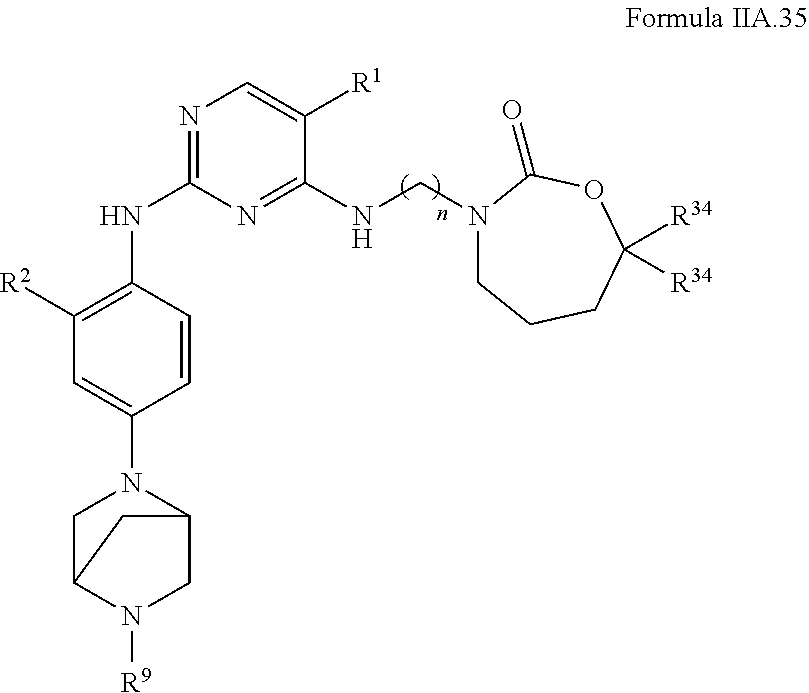



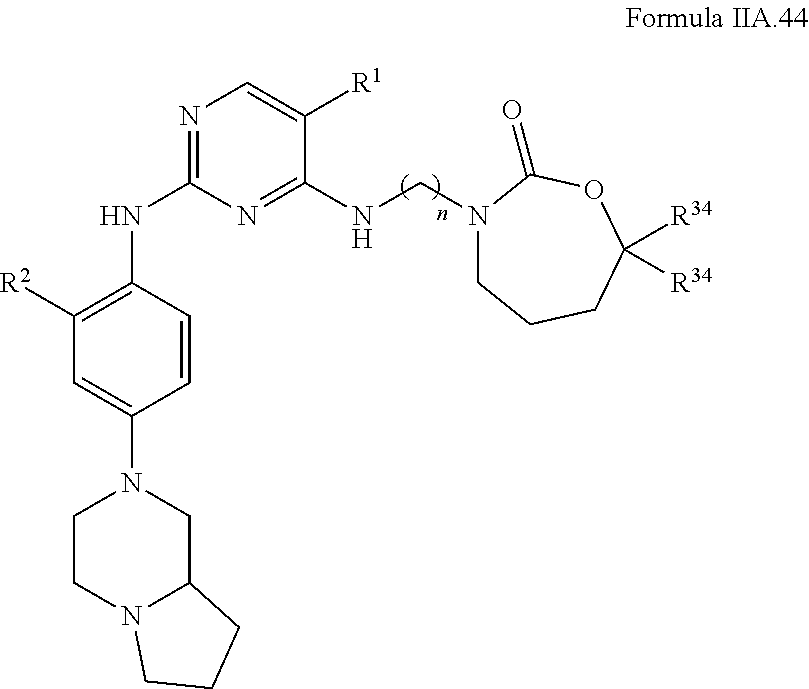









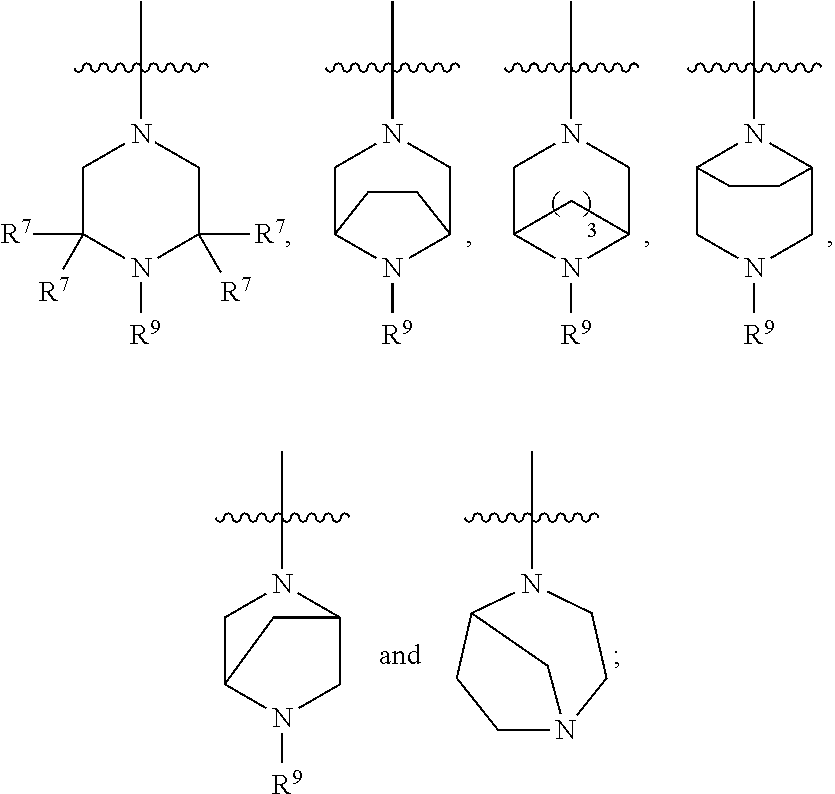










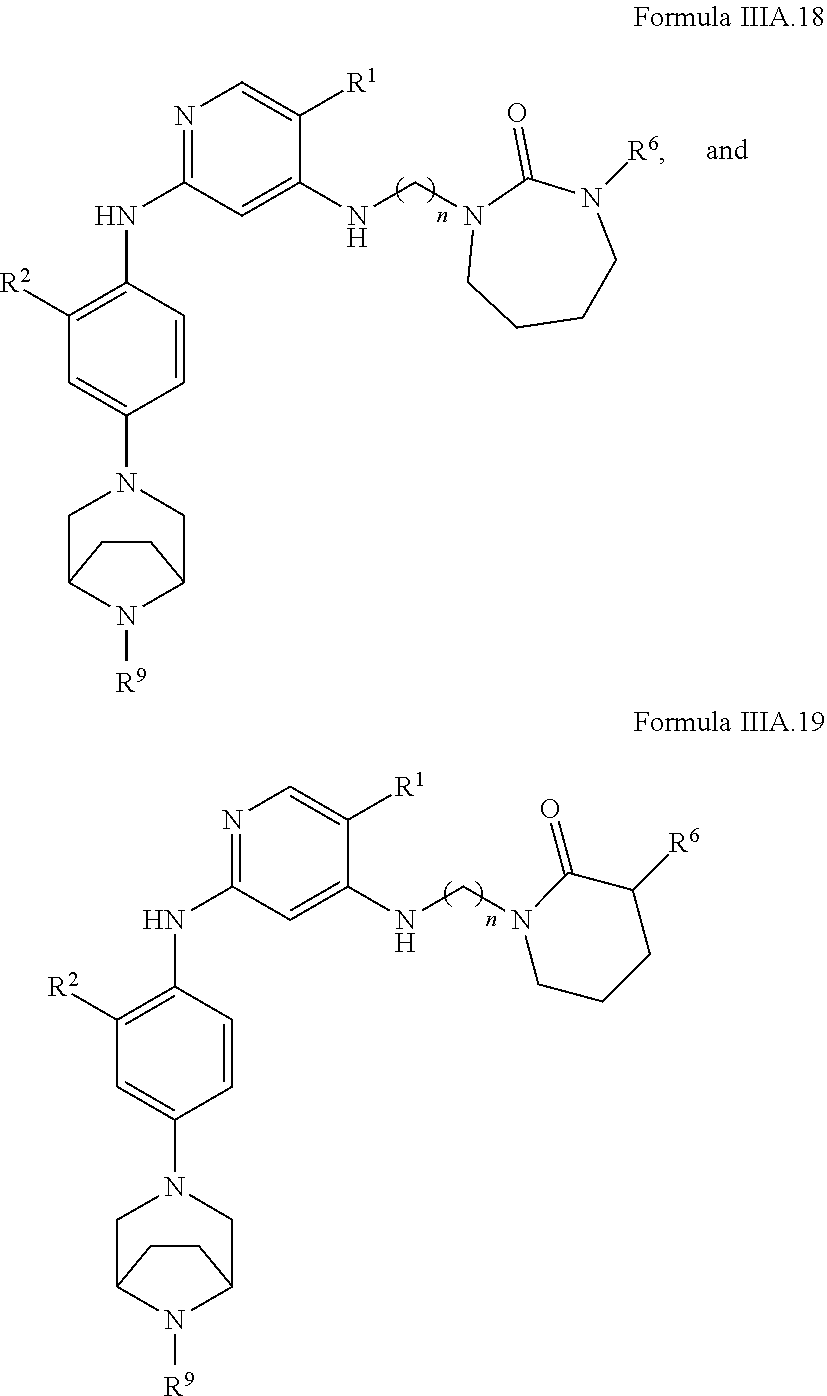








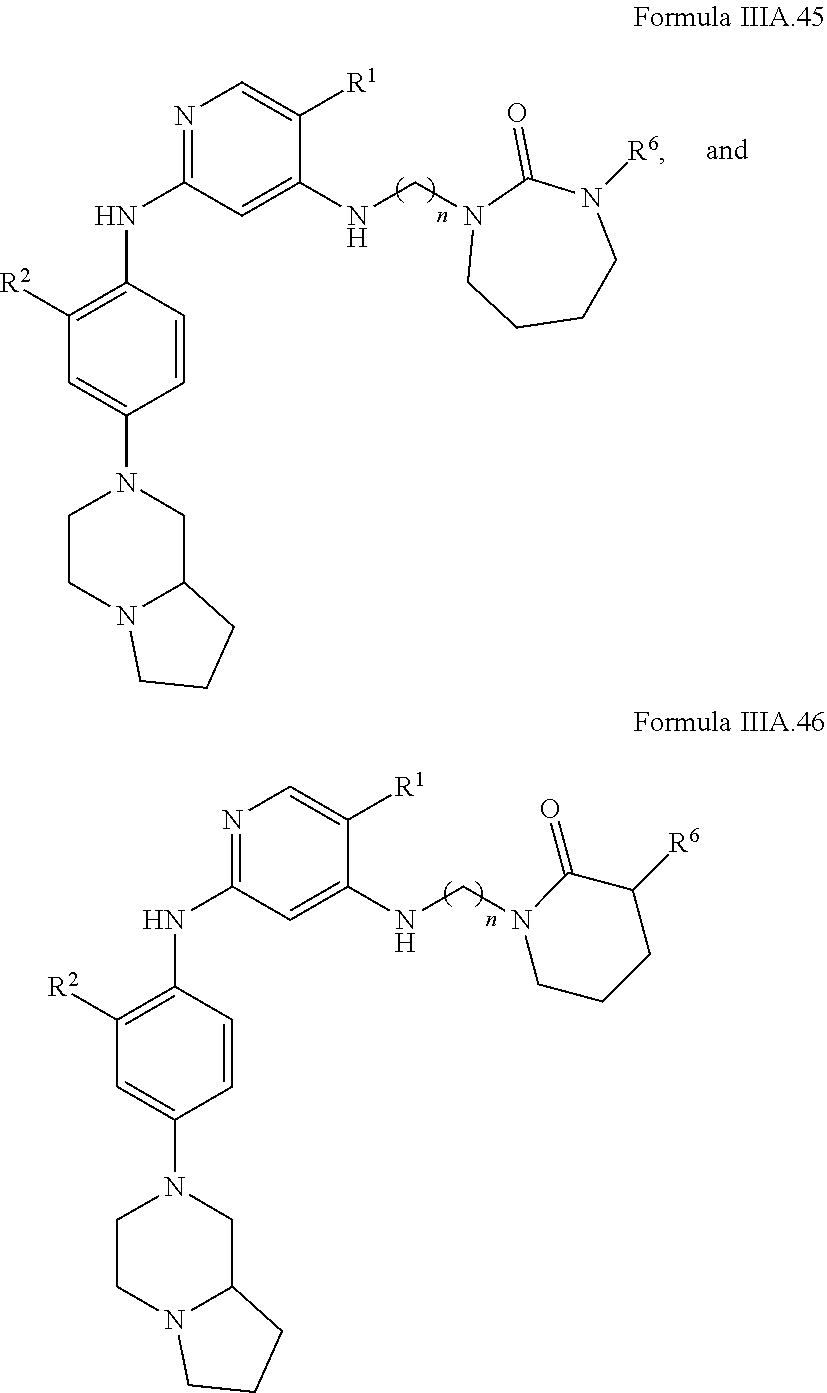


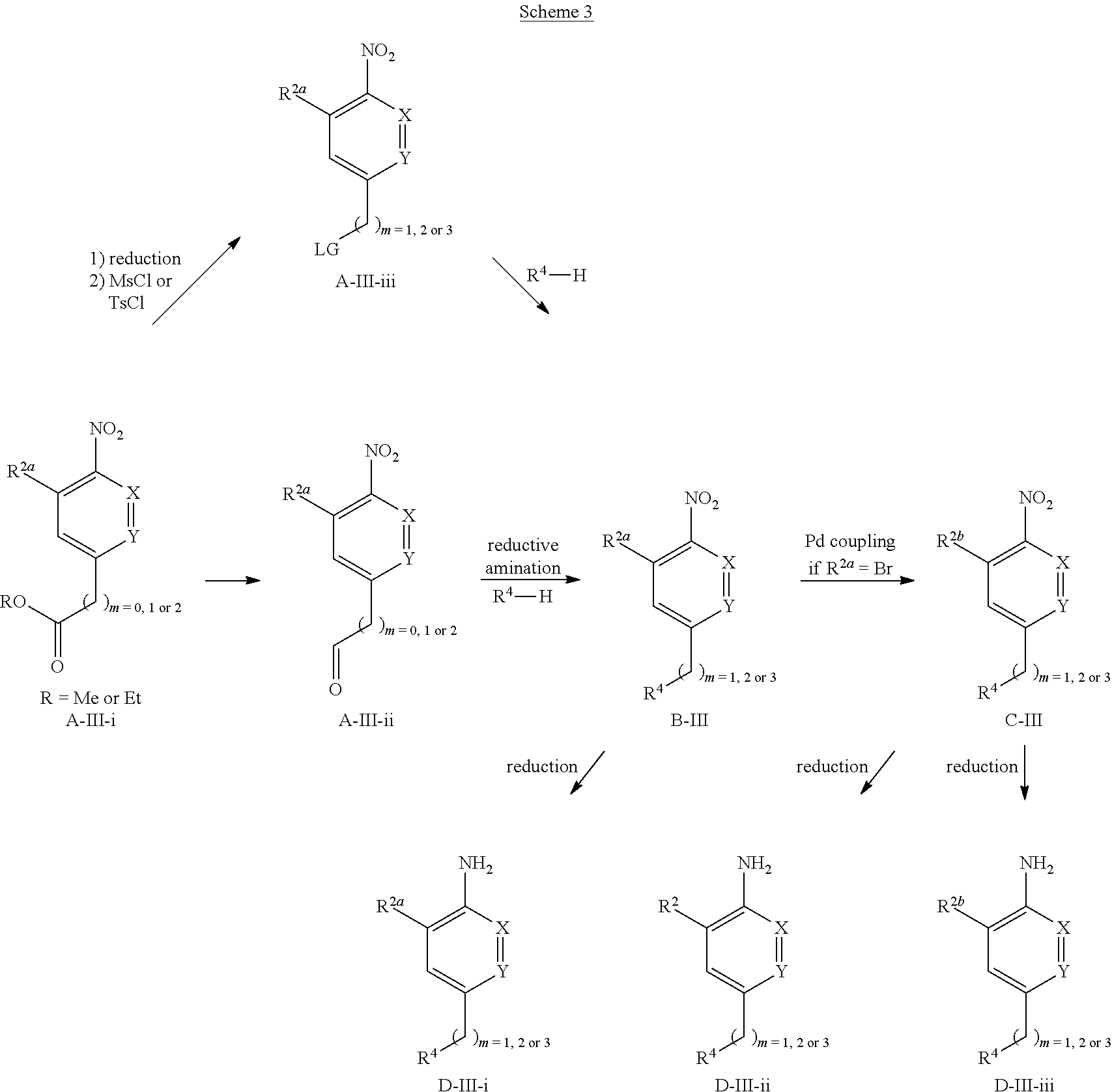




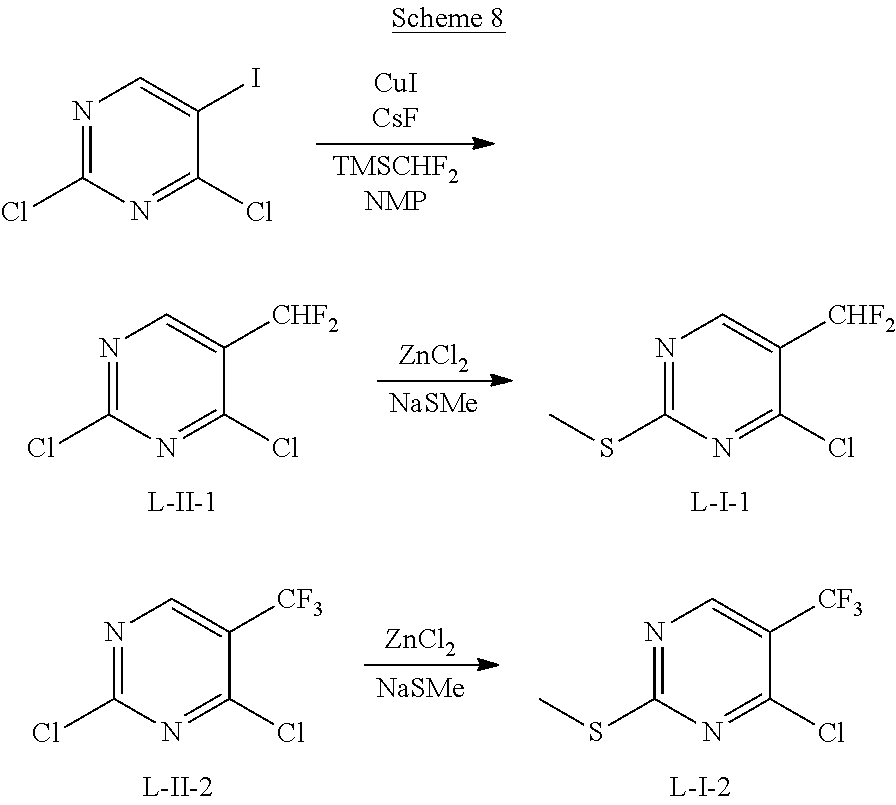
















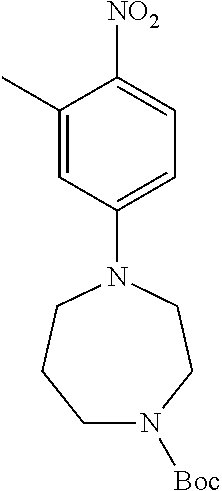







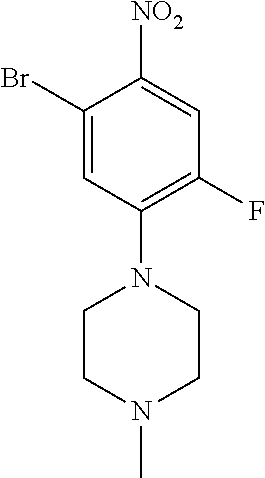

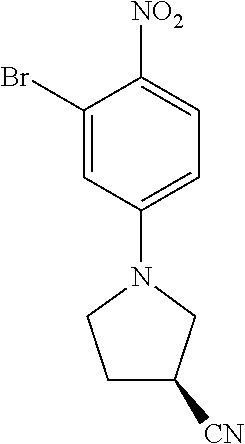
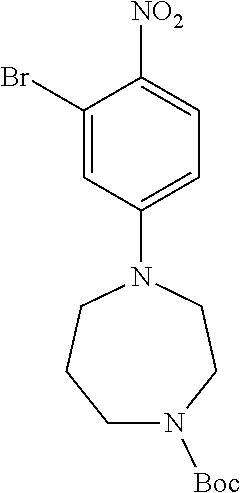






















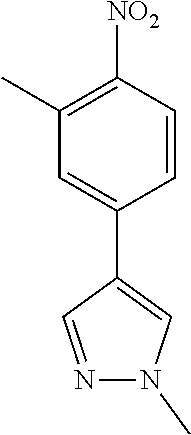





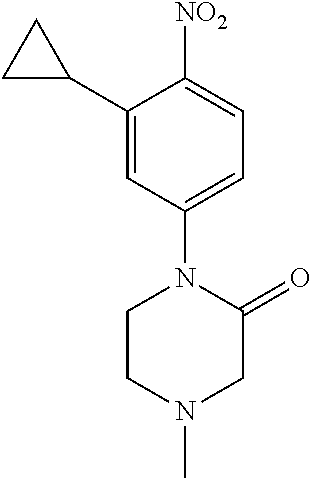

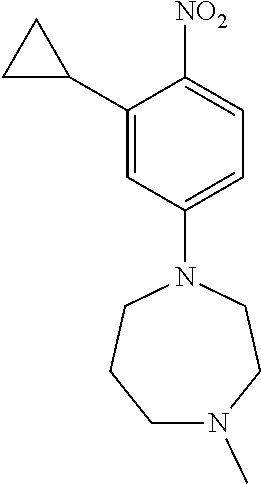
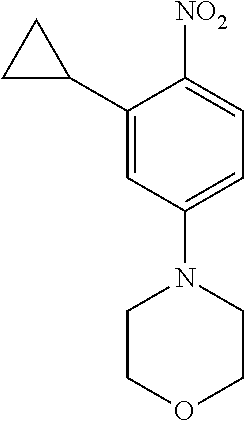
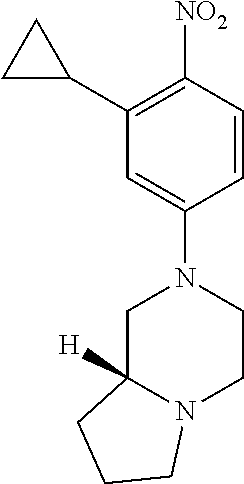


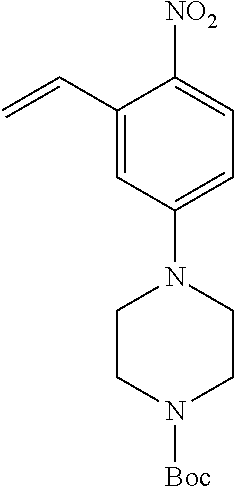

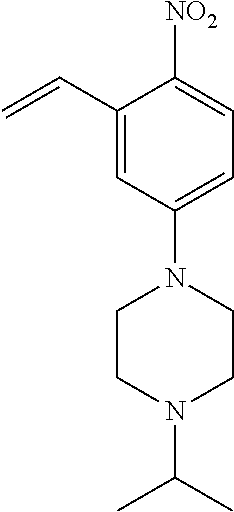









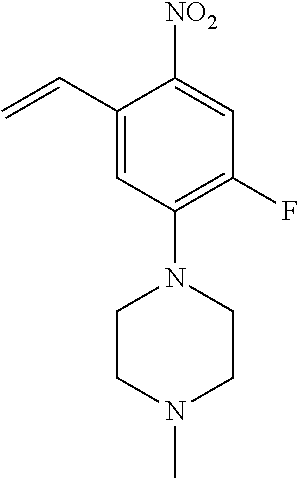



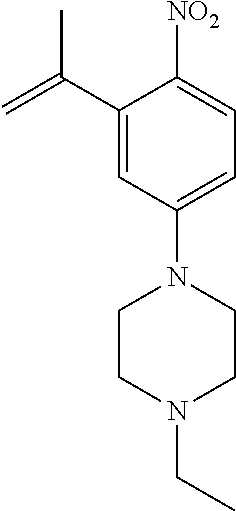



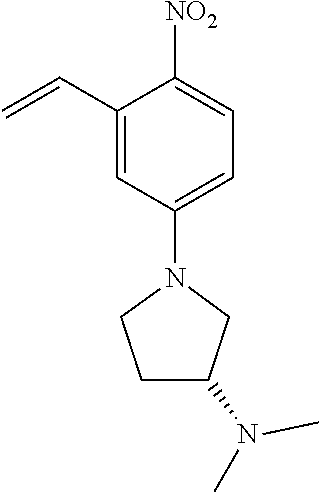

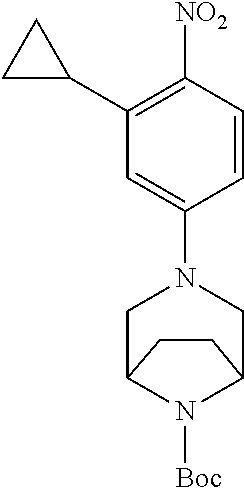
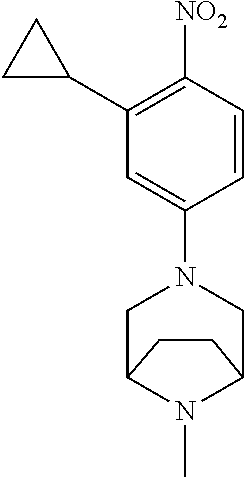

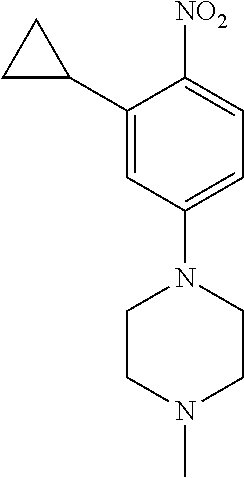

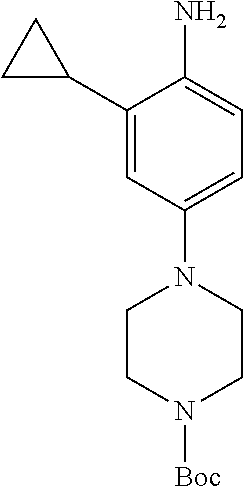


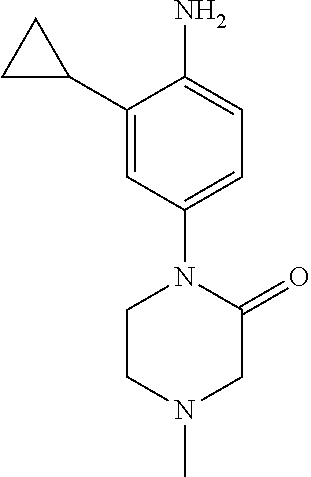

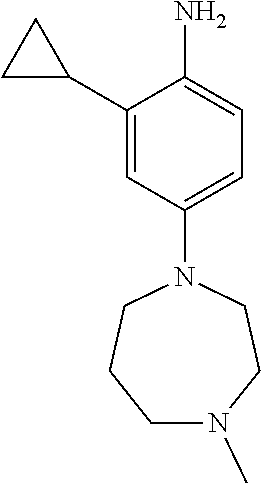
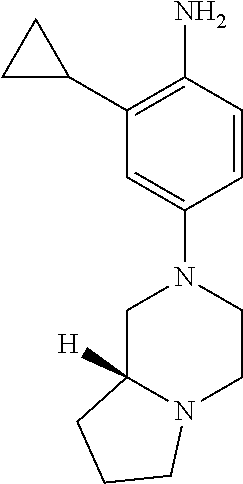




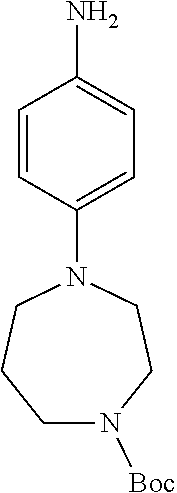


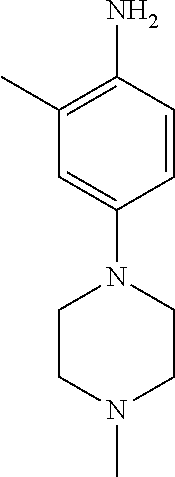



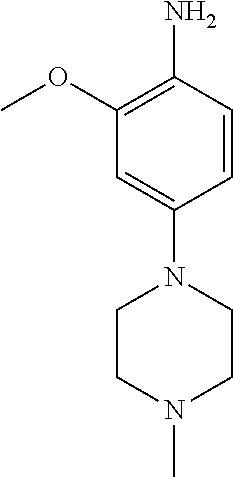
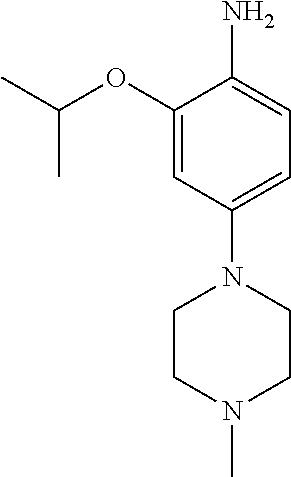





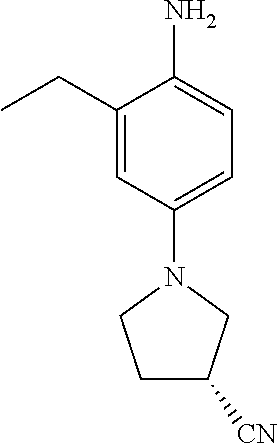






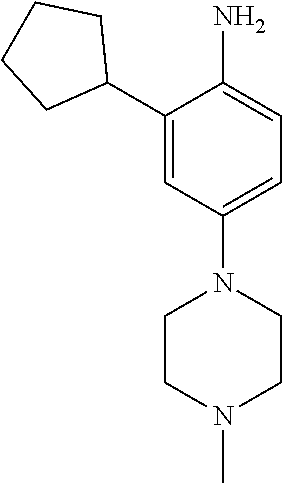












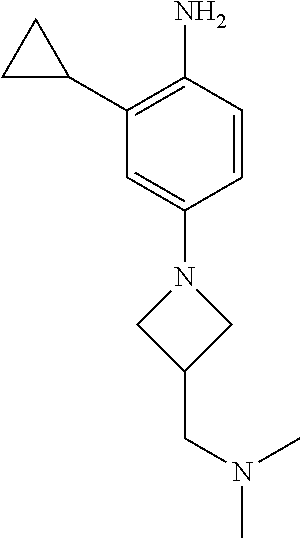


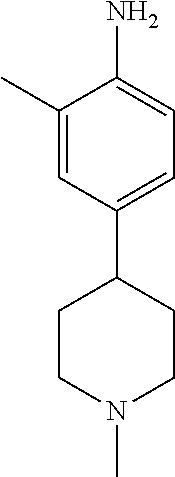







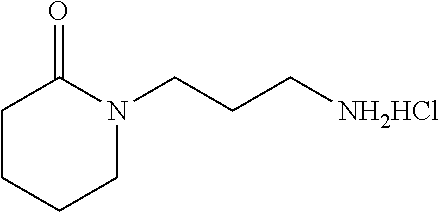









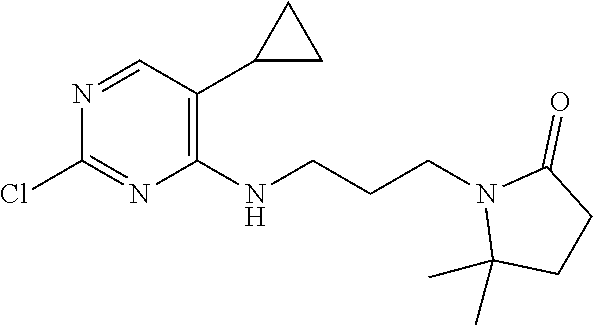
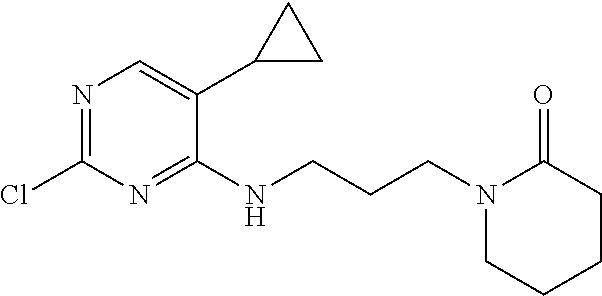




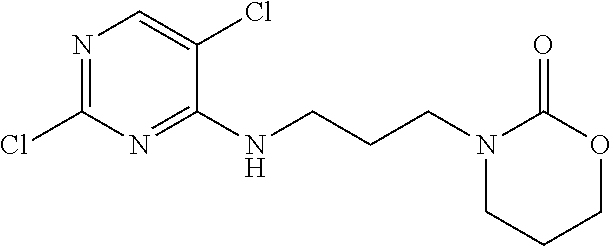

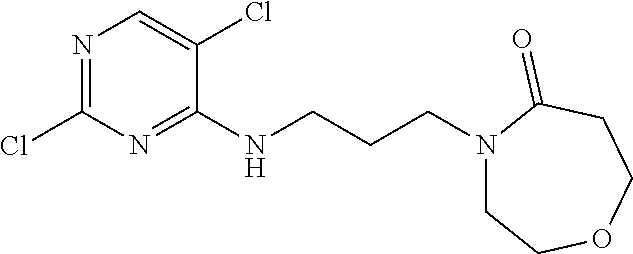



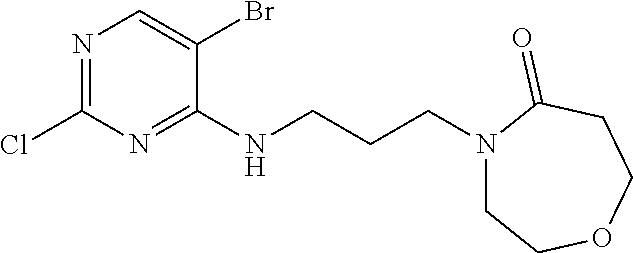

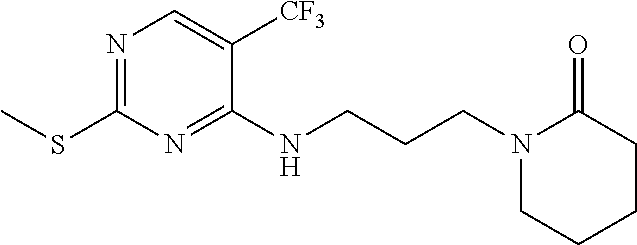
















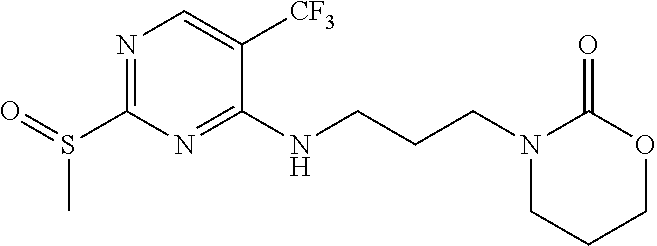



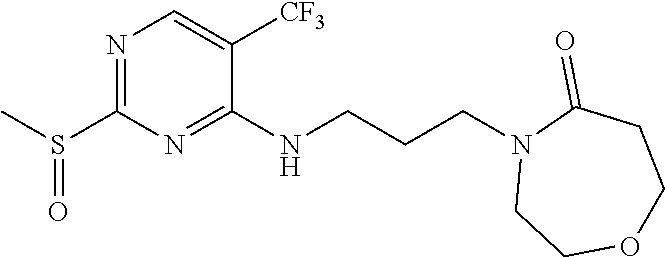


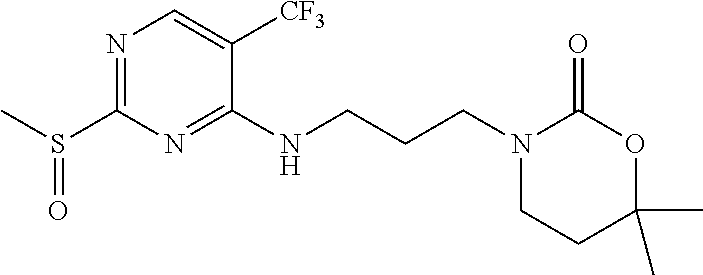
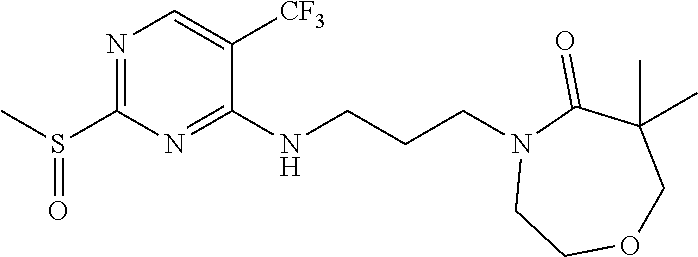






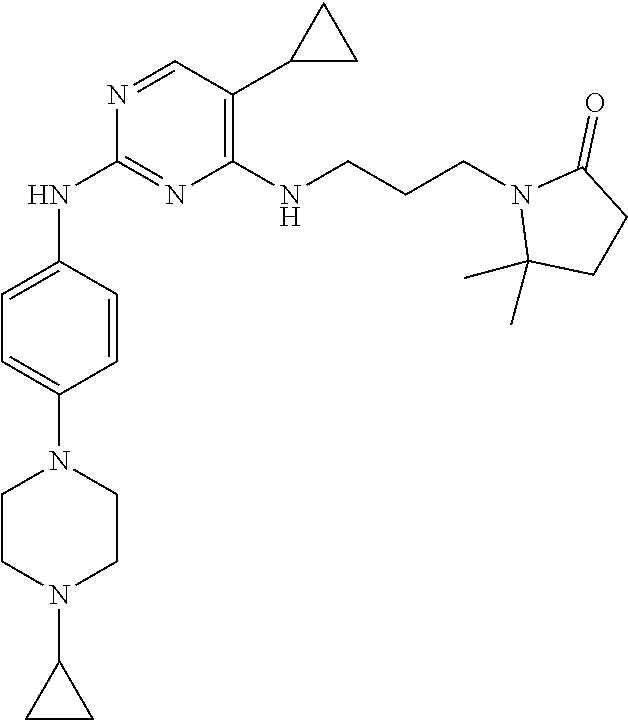














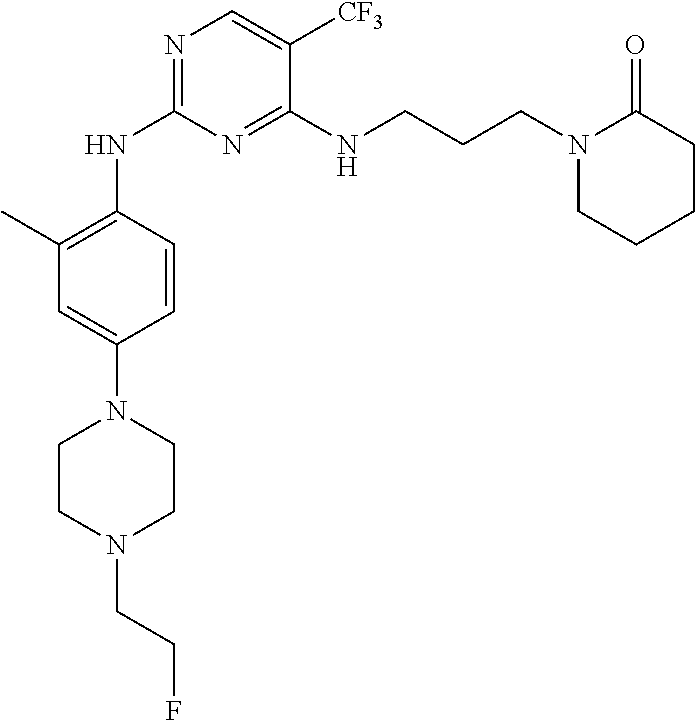

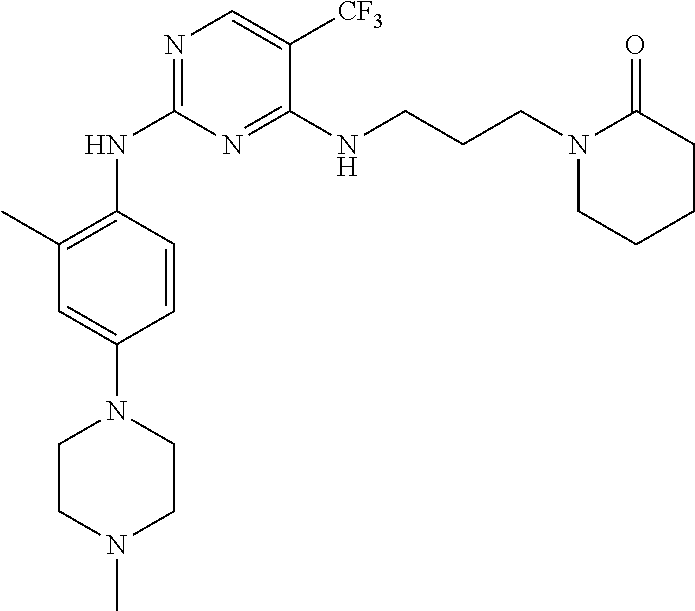


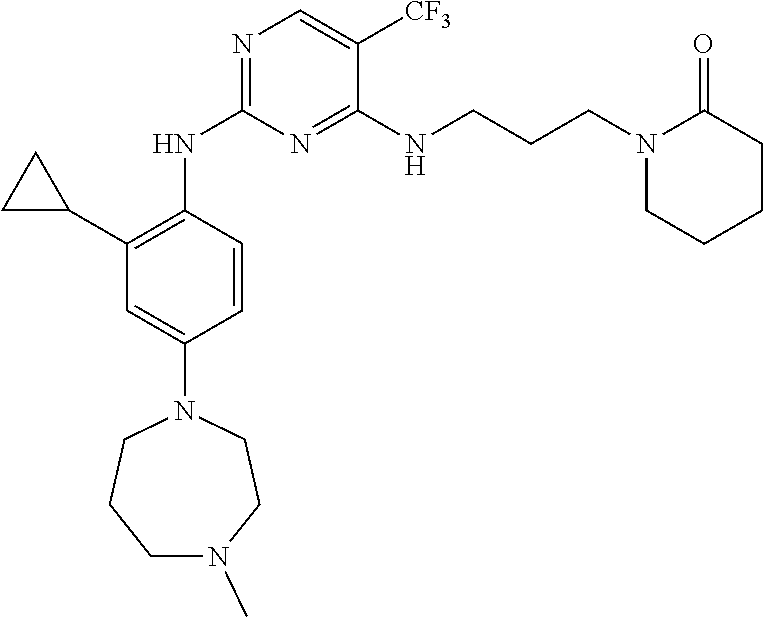














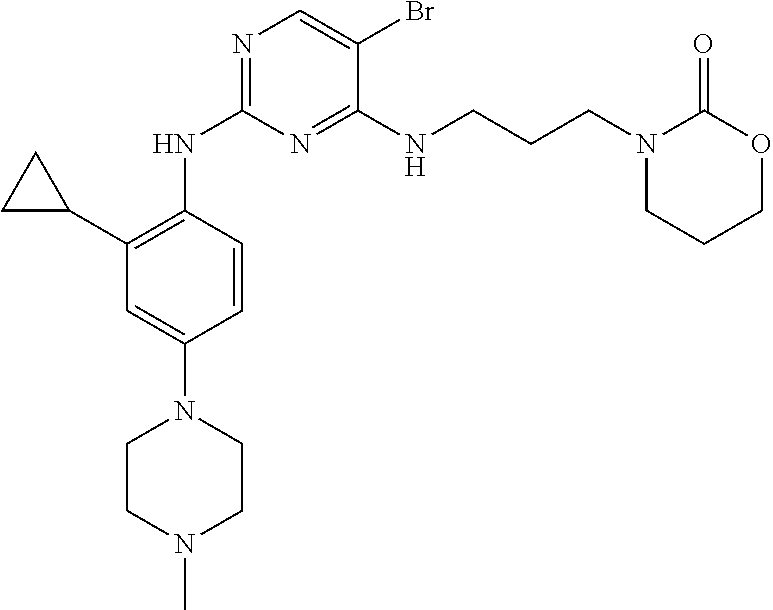




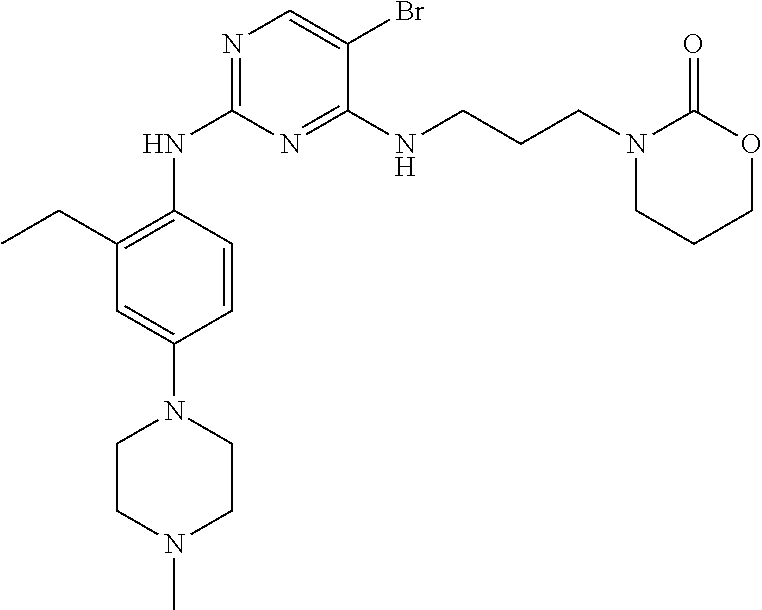






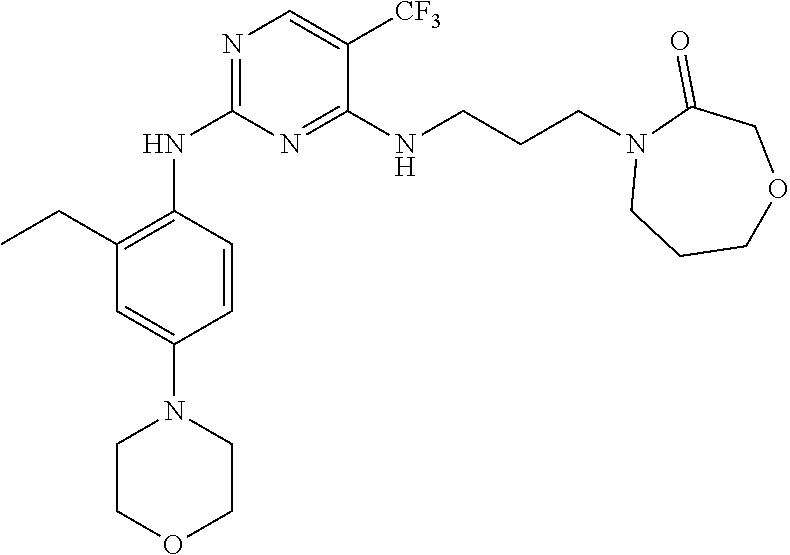






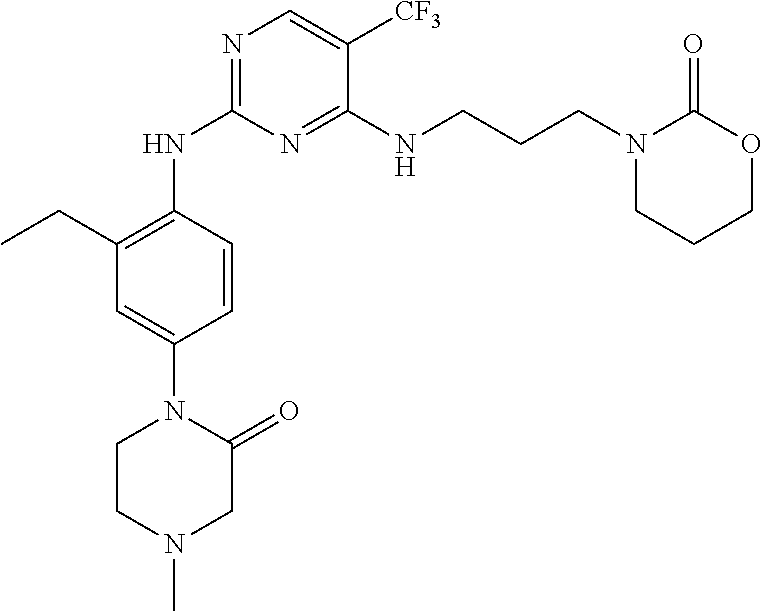



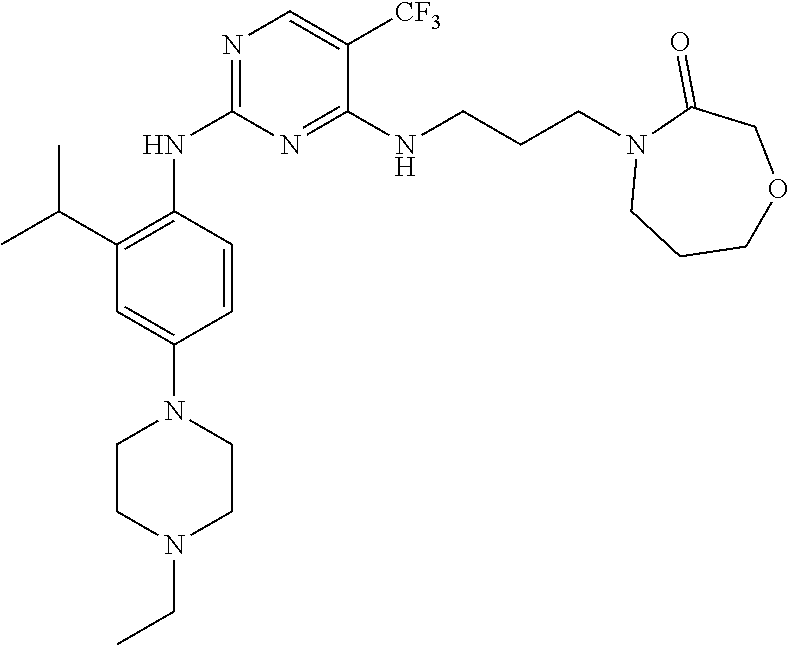
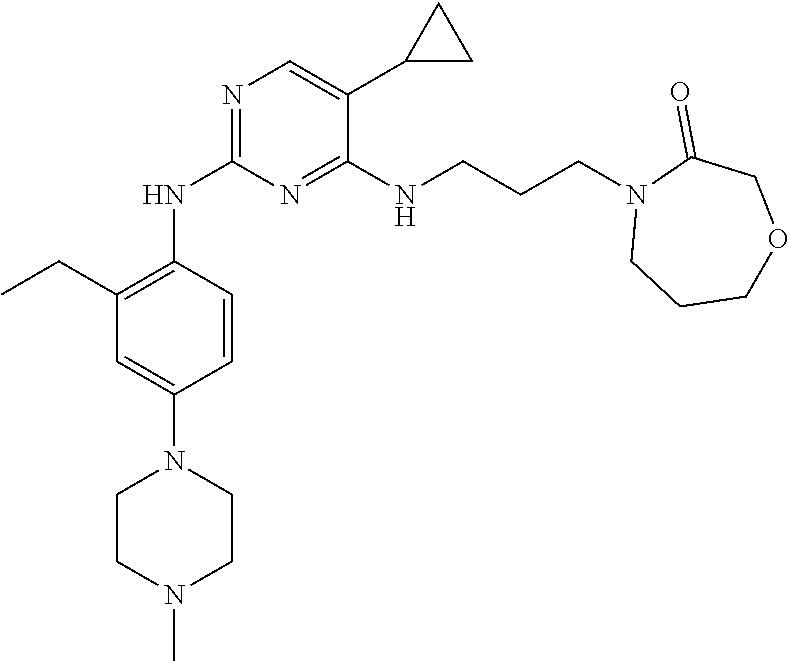







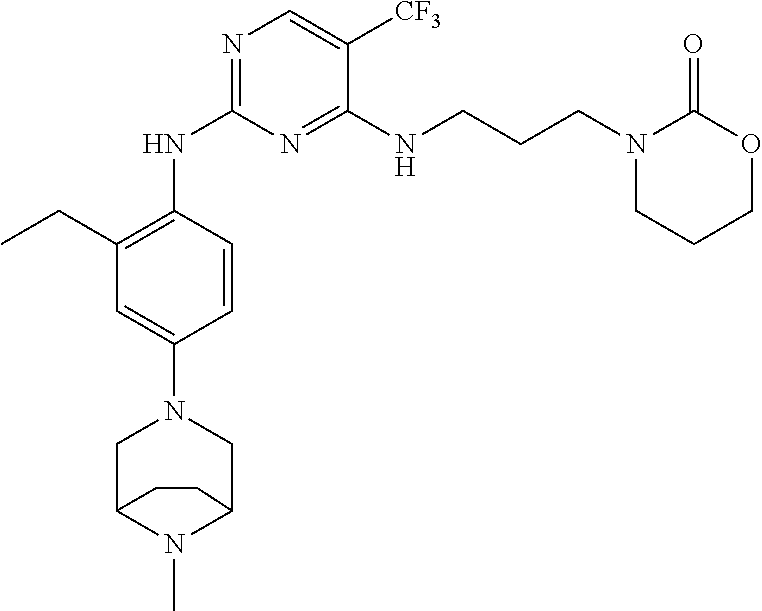

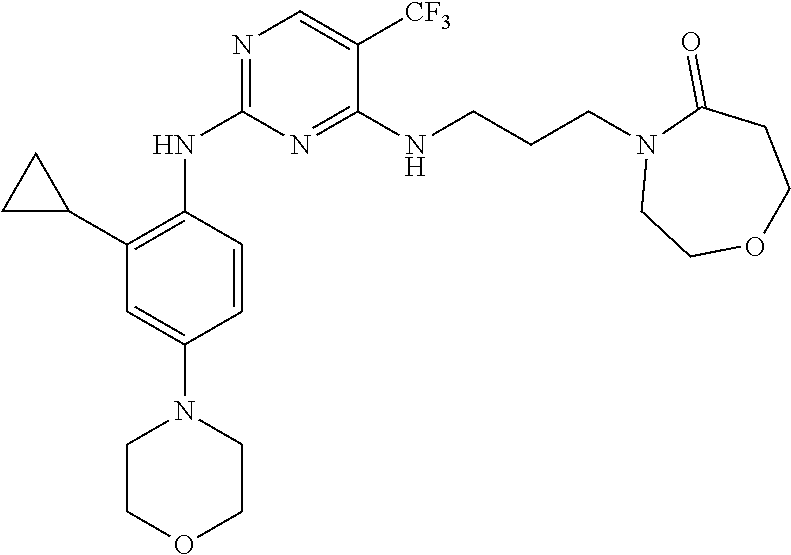














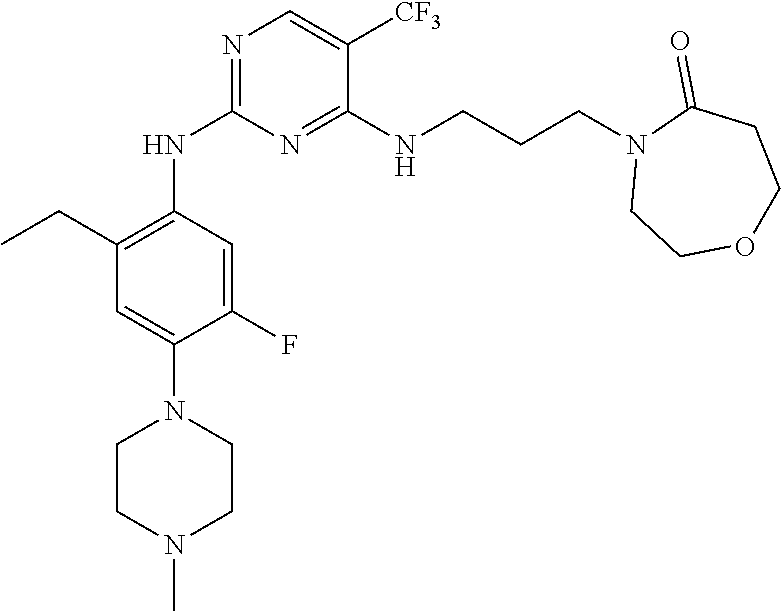


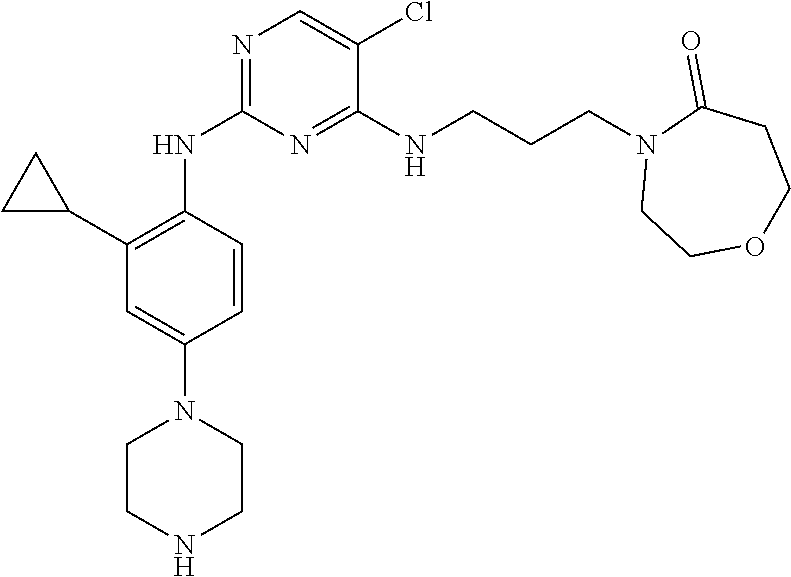

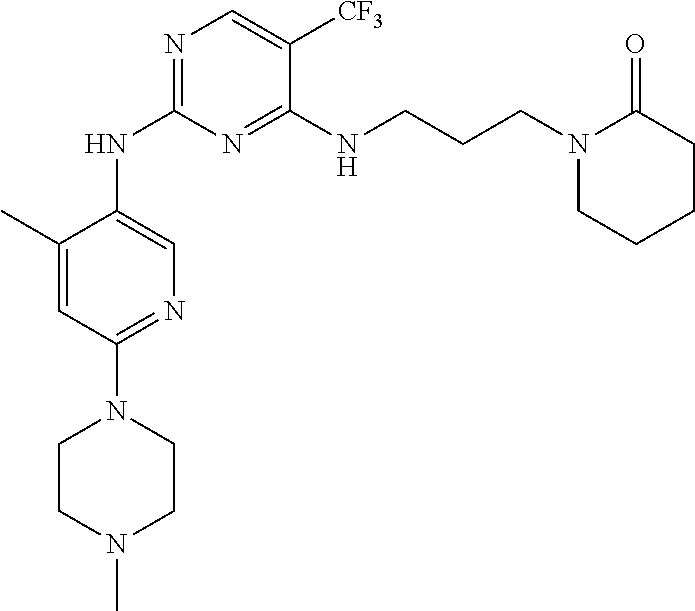



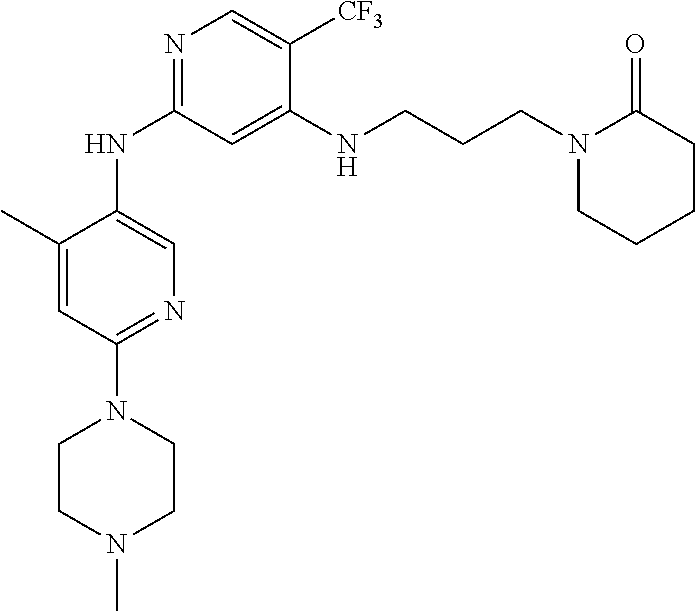



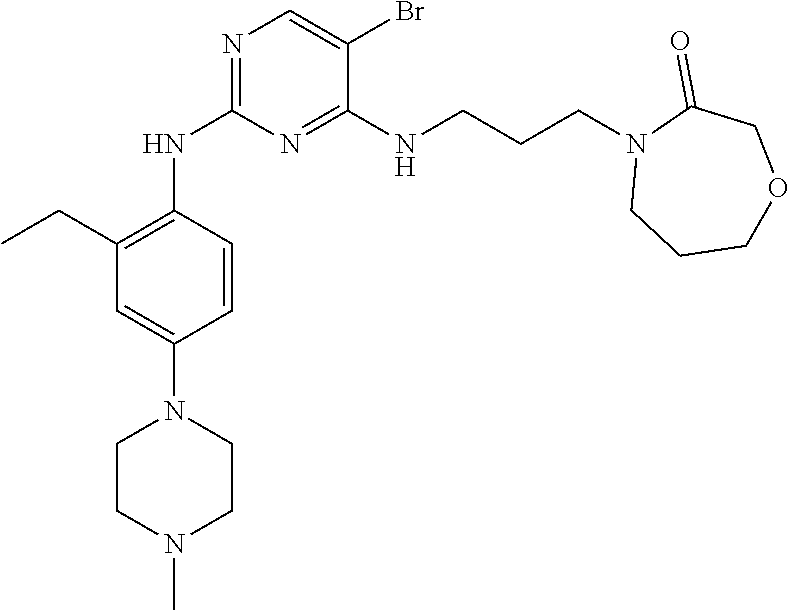
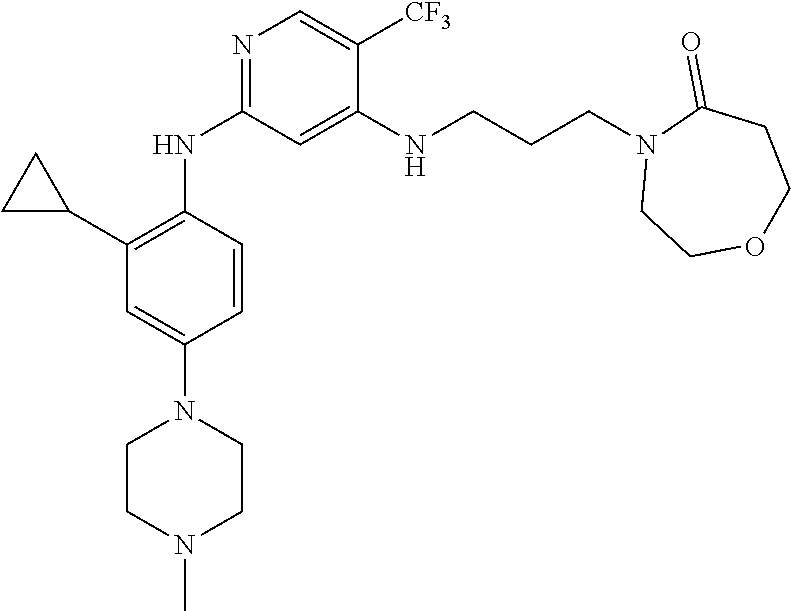
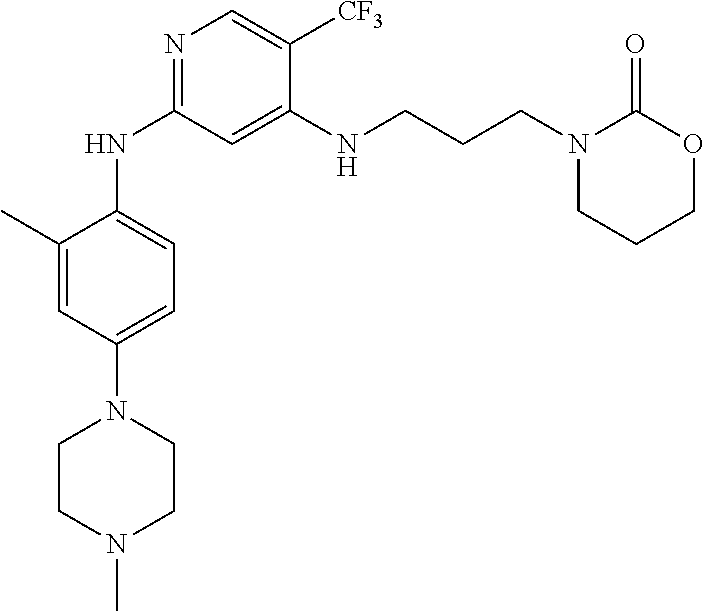


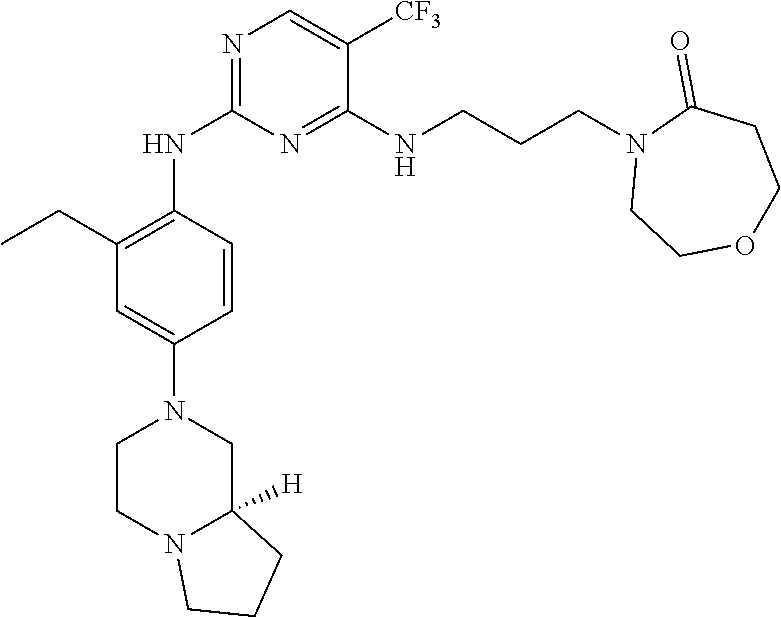


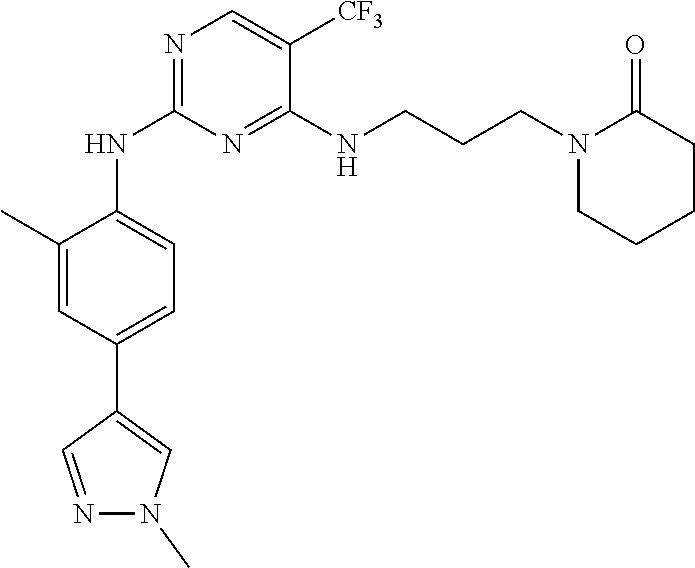










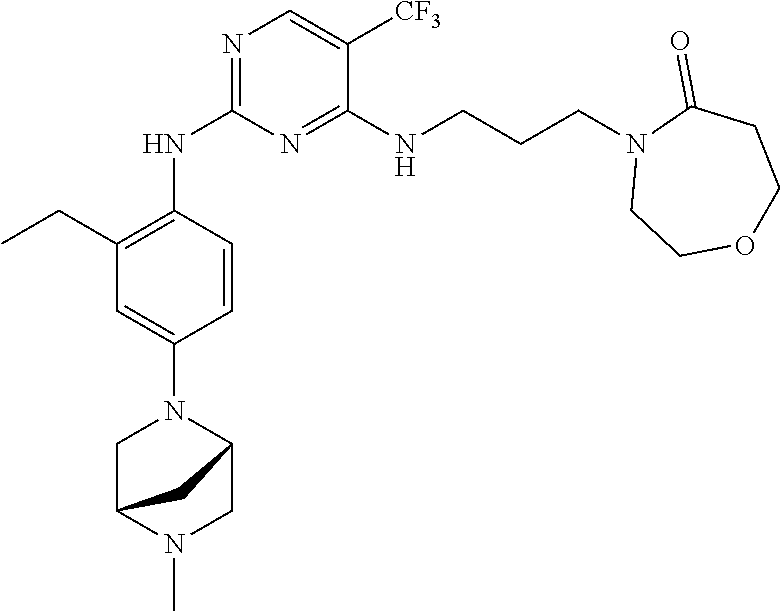







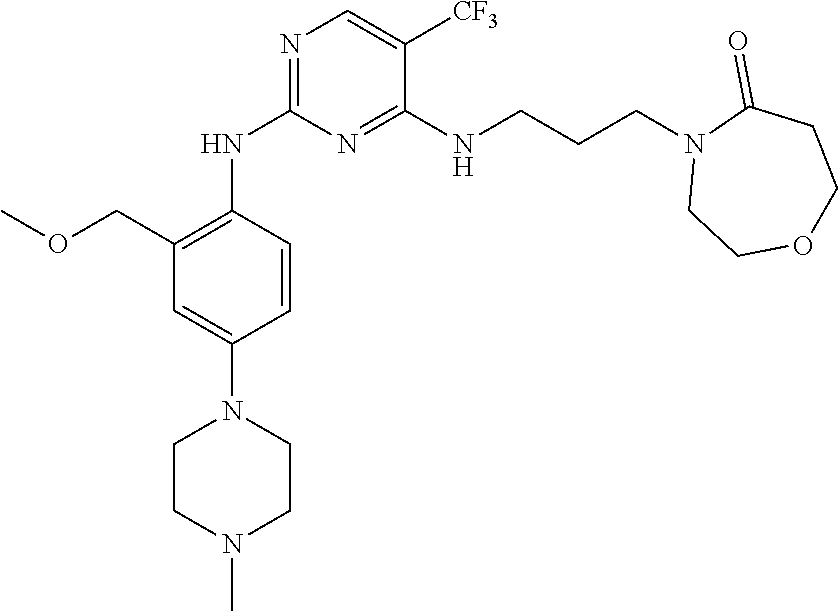
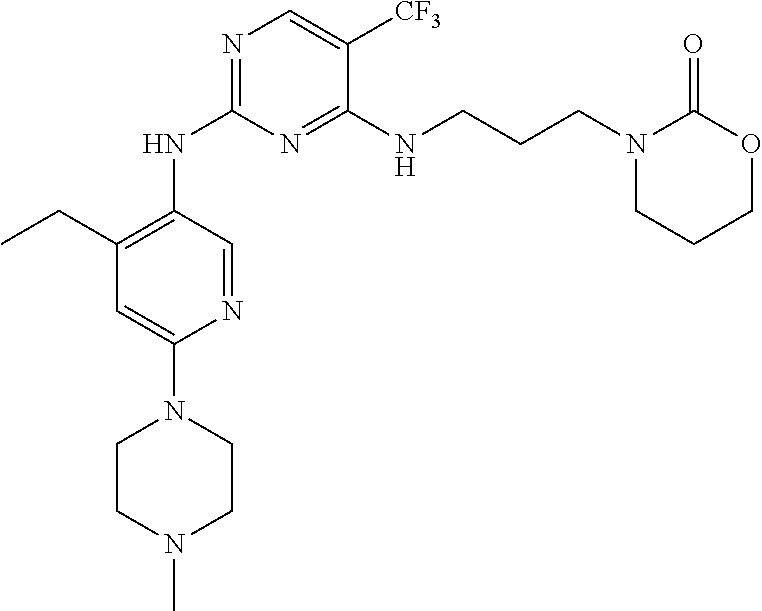
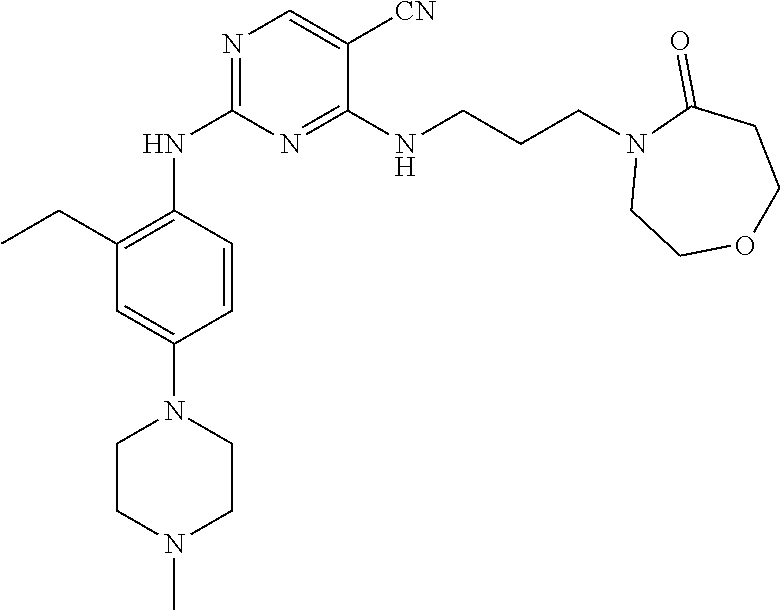






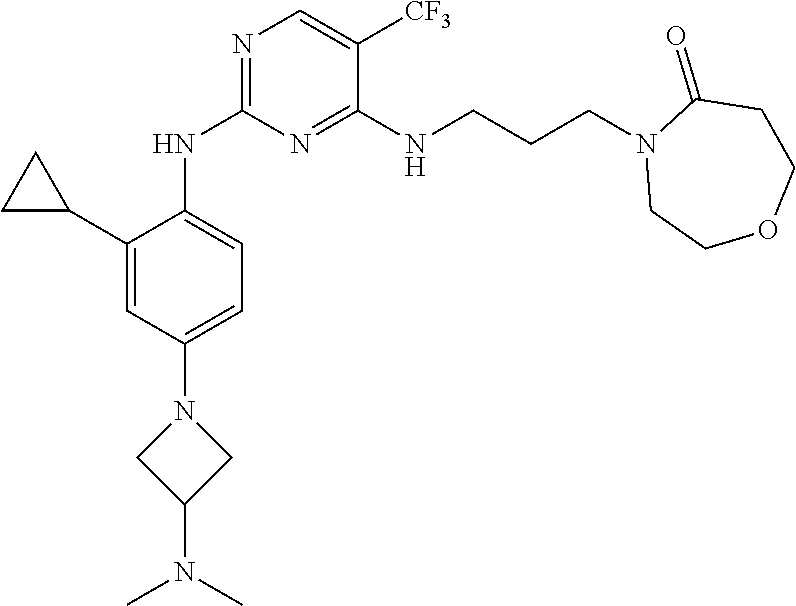













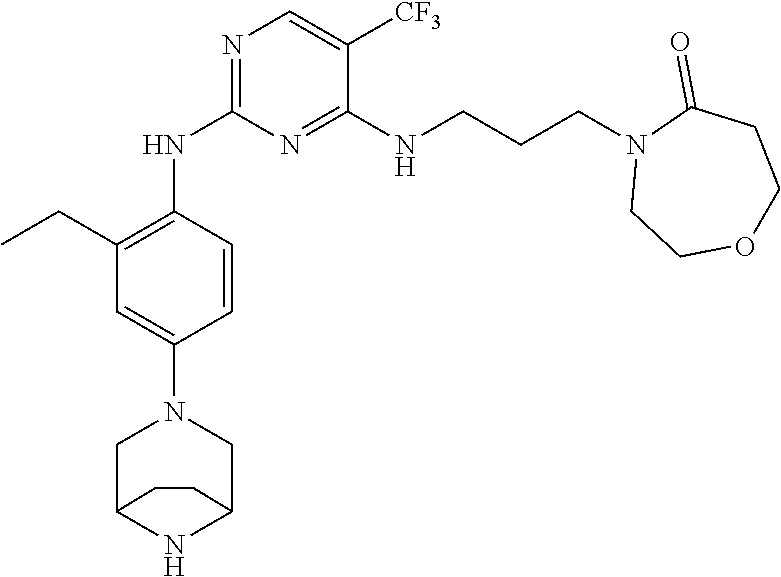






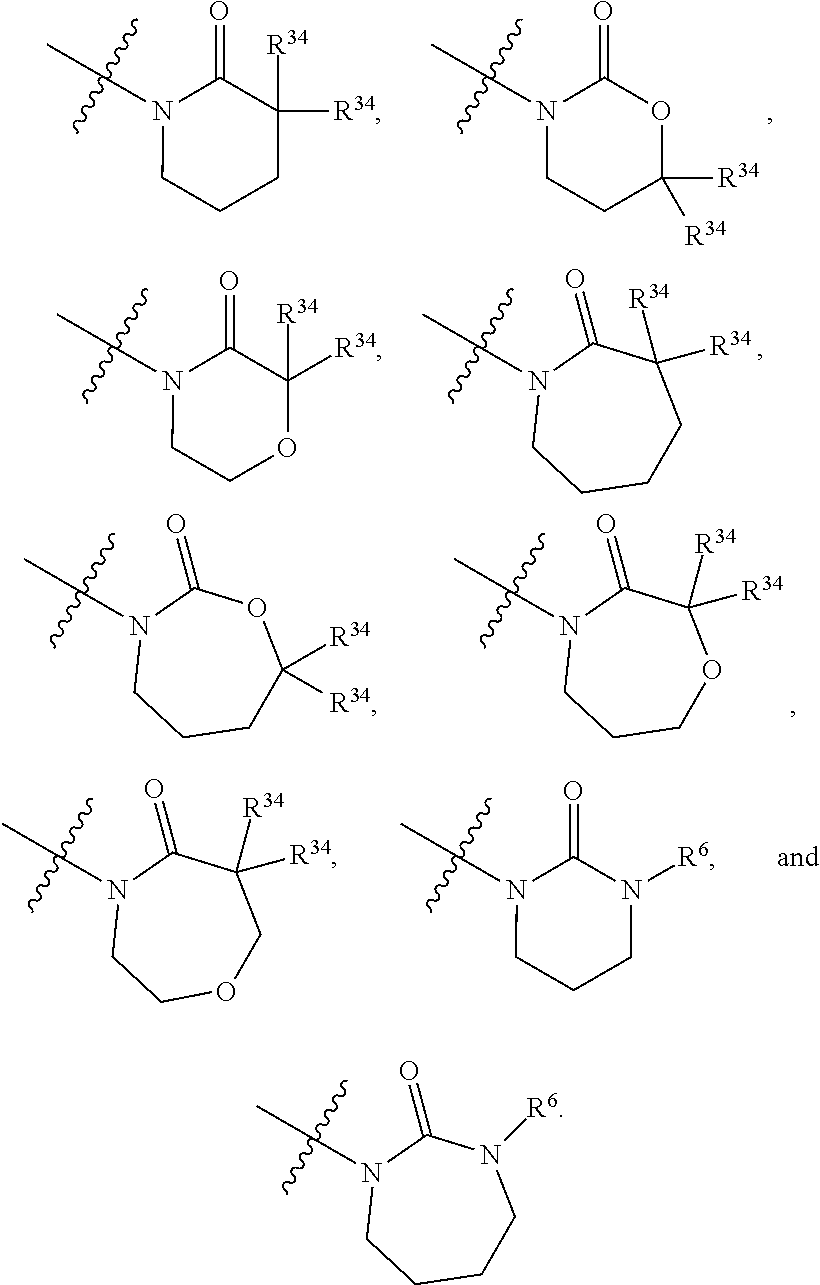











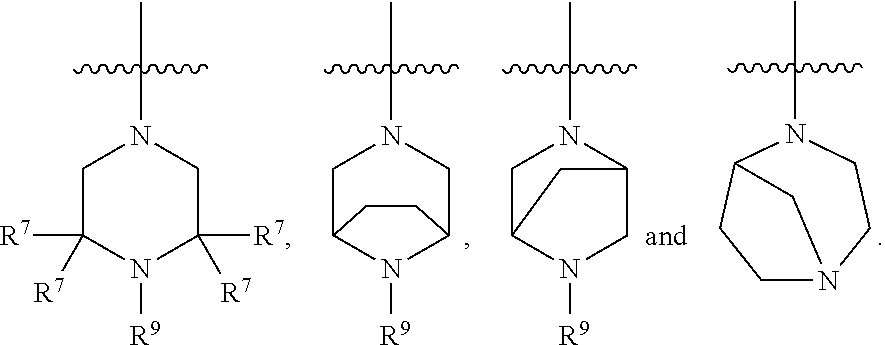









S00001
XML
uspto.report is an independent third-party trademark research tool that is not affiliated, endorsed, or sponsored by the United States Patent and Trademark Office (USPTO) or any other governmental organization. The information provided by uspto.report is based on publicly available data at the time of writing and is intended for informational purposes only.
While we strive to provide accurate and up-to-date information, we do not guarantee the accuracy, completeness, reliability, or suitability of the information displayed on this site. The use of this site is at your own risk. Any reliance you place on such information is therefore strictly at your own risk.
All official trademark data, including owner information, should be verified by visiting the official USPTO website at www.uspto.gov. This site is not intended to replace professional legal advice and should not be used as a substitute for consulting with a legal professional who is knowledgeable about trademark law.